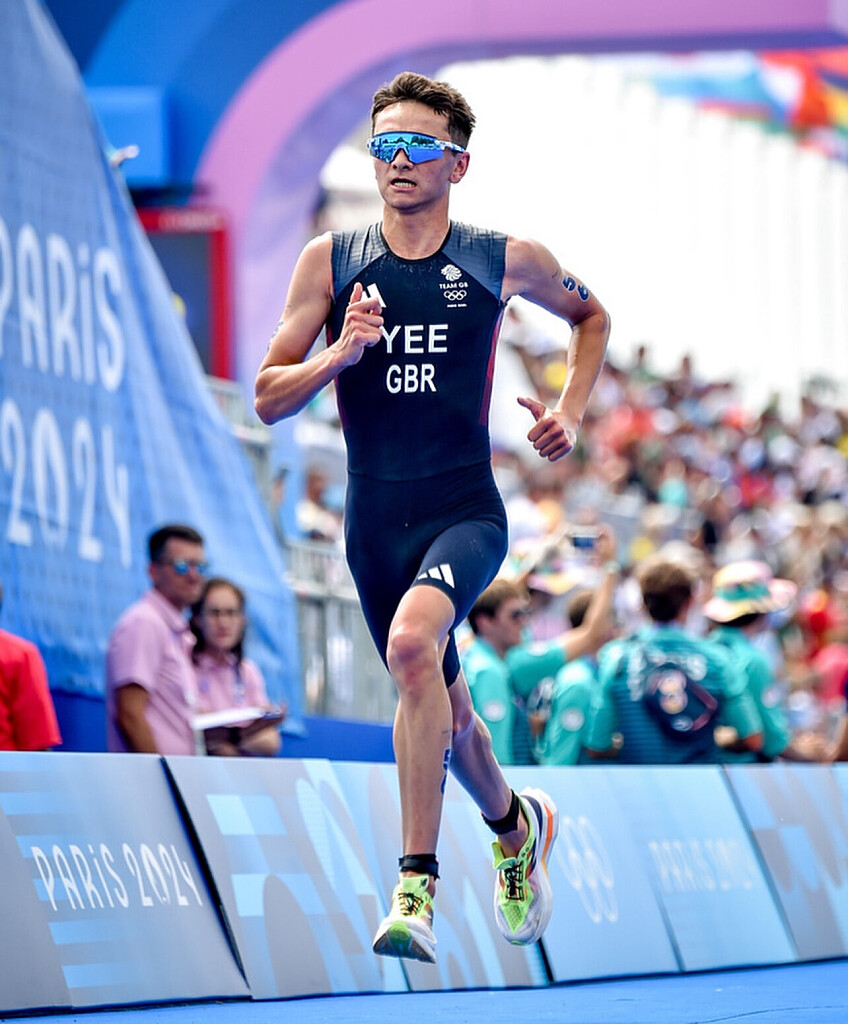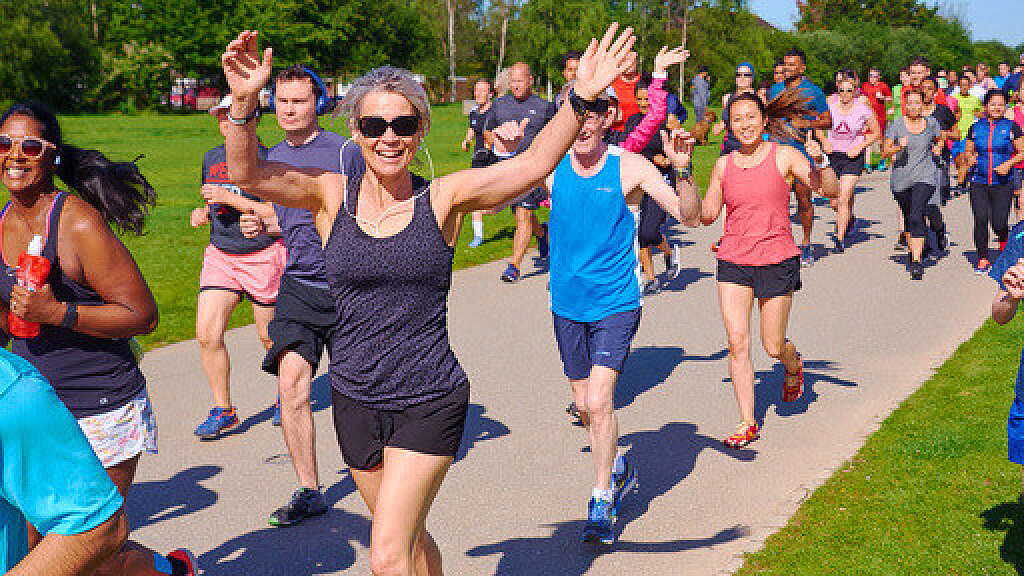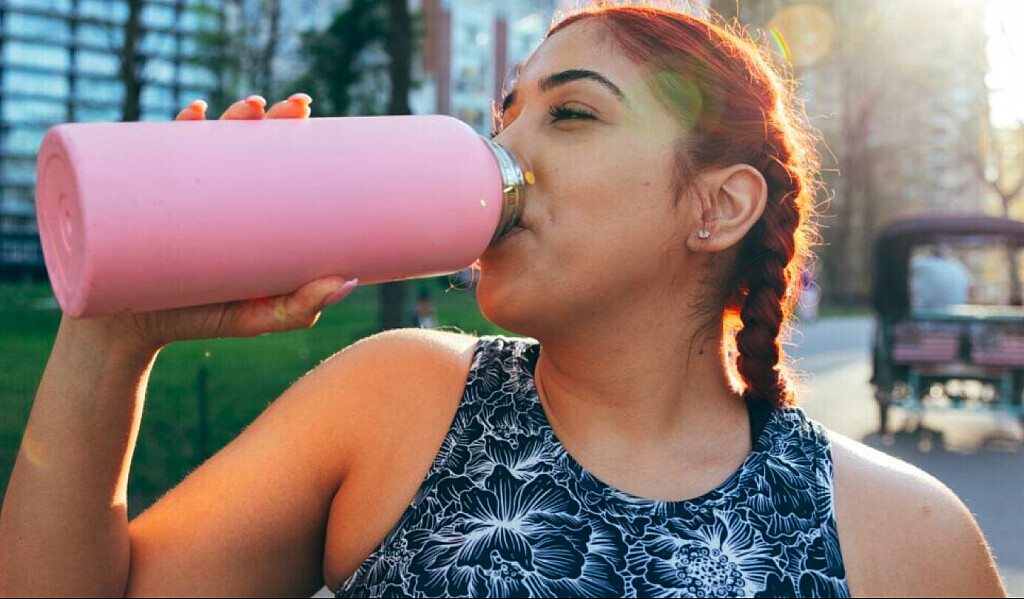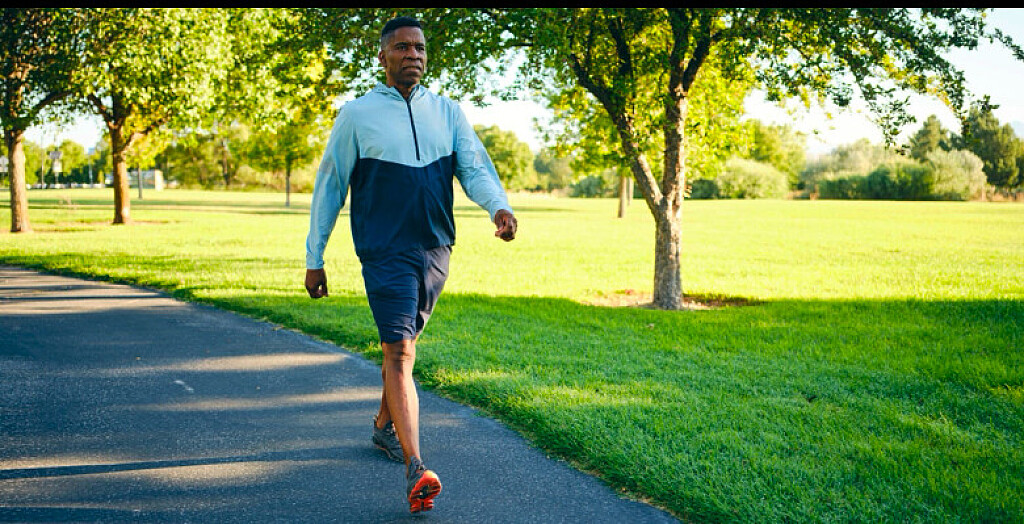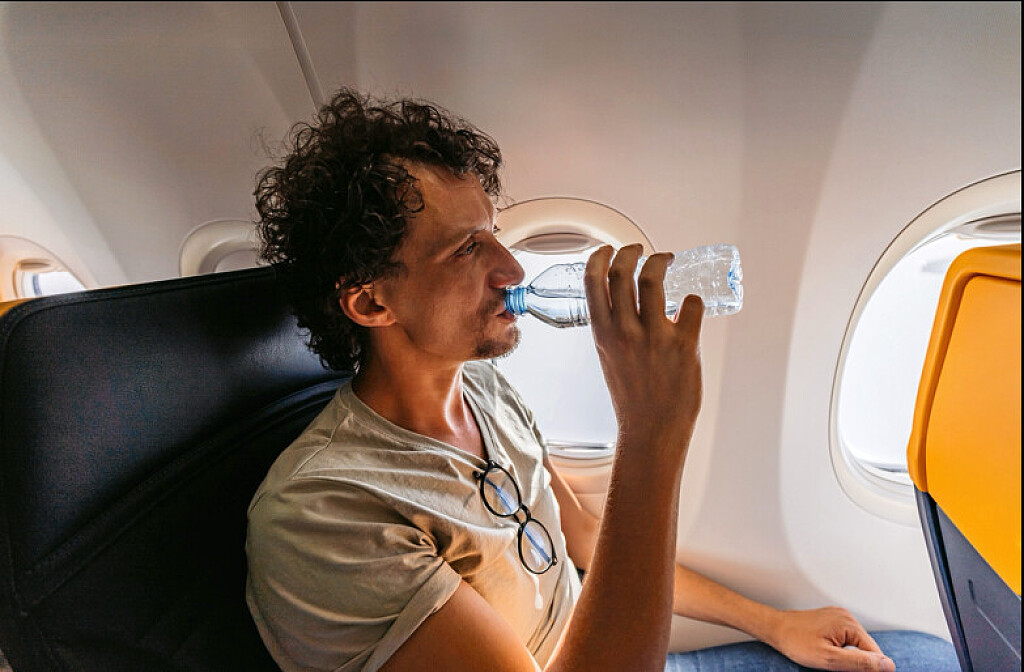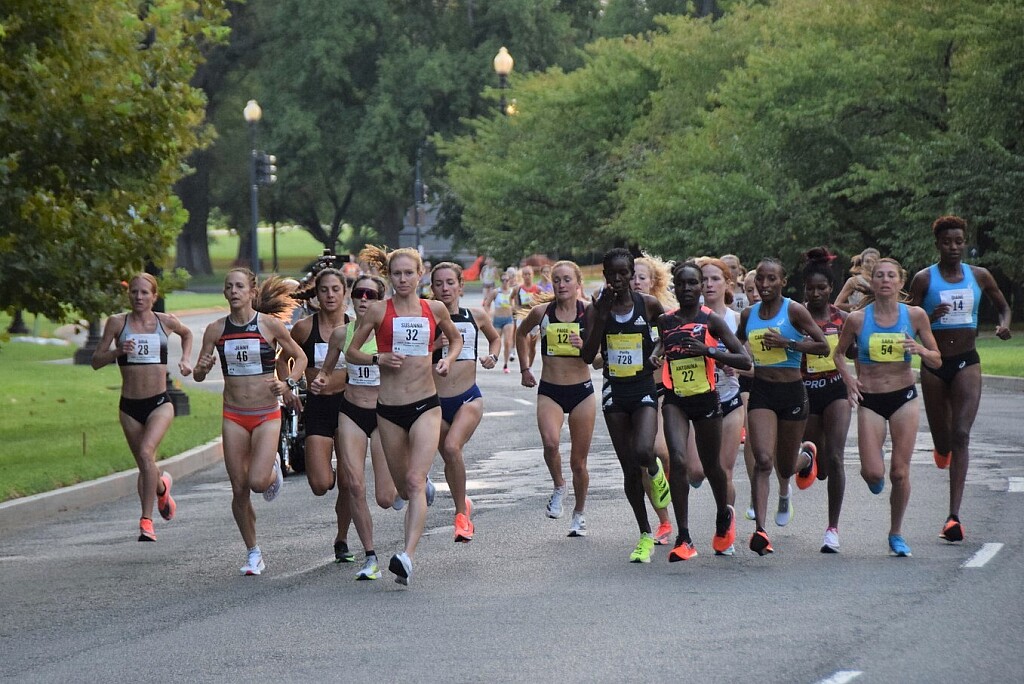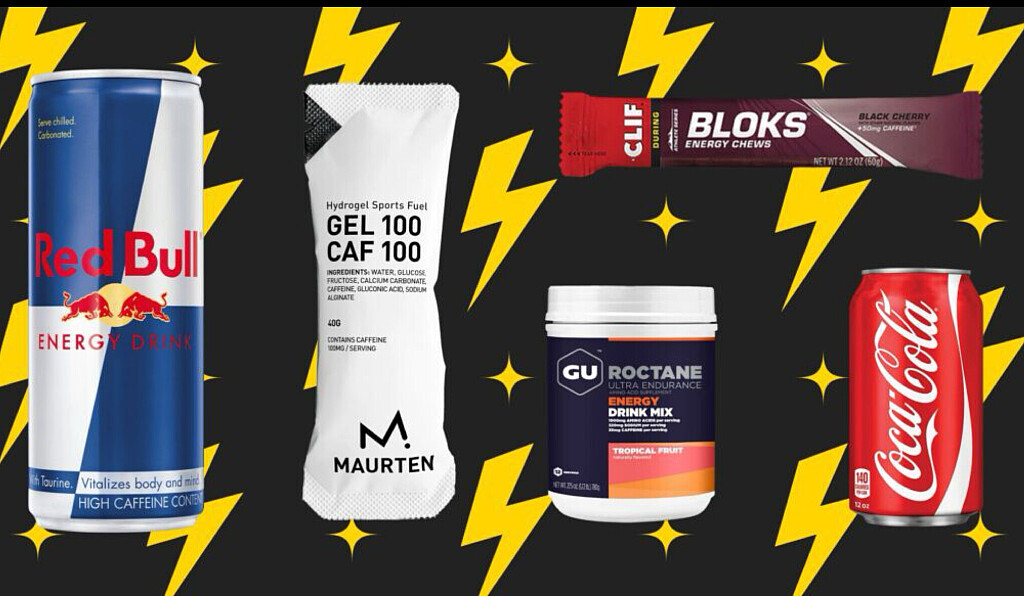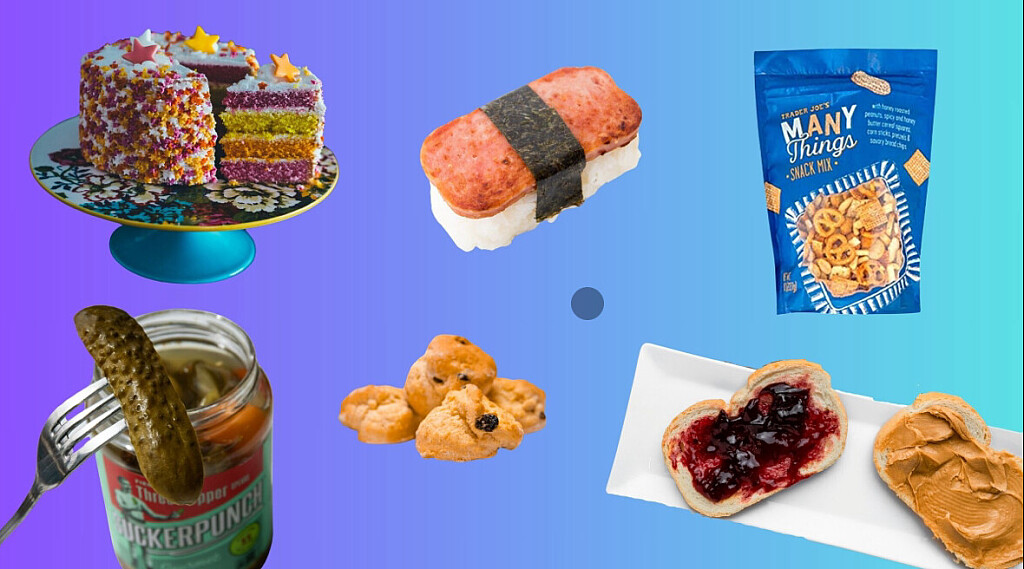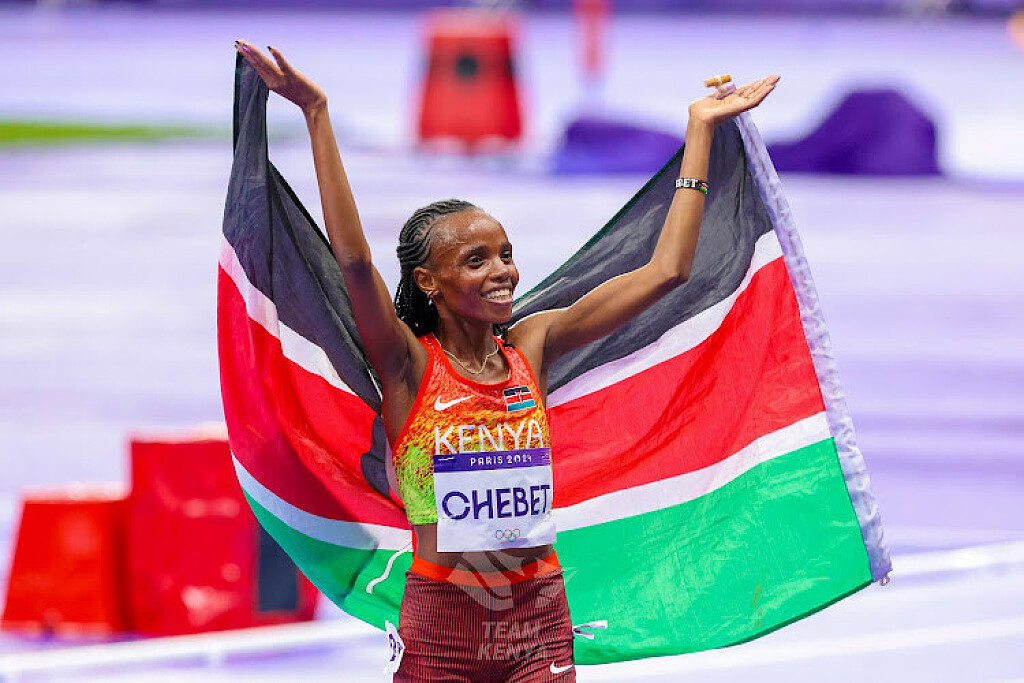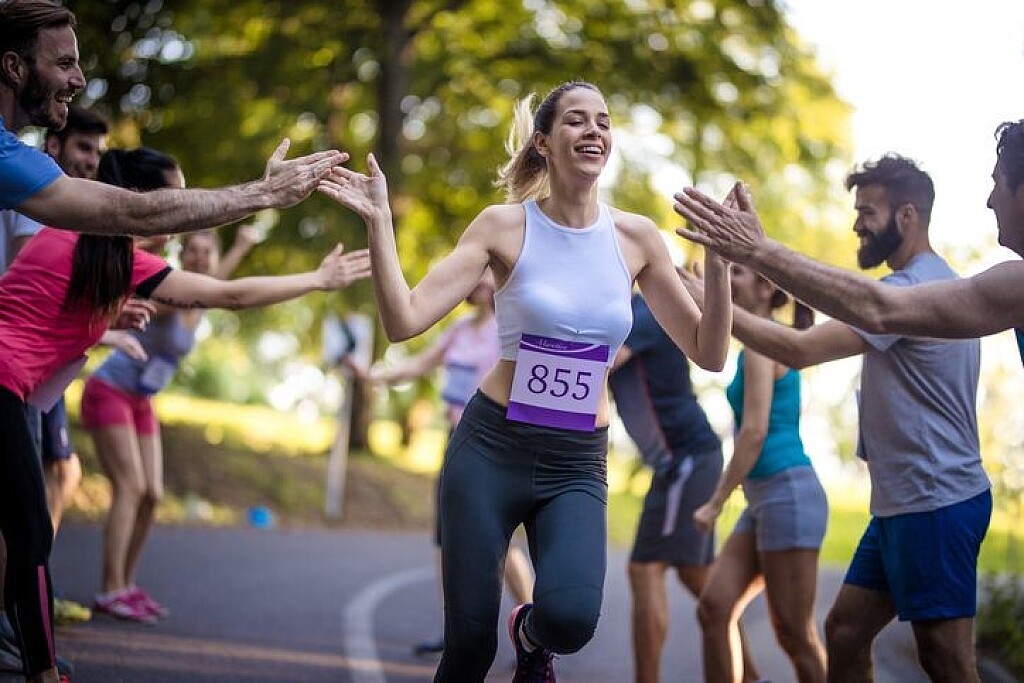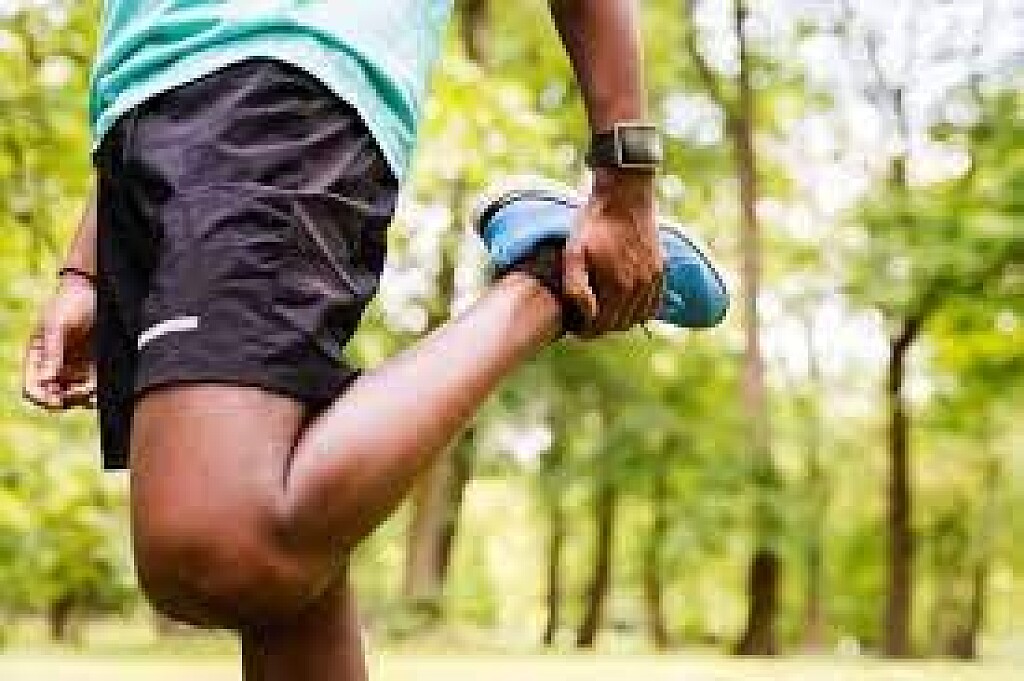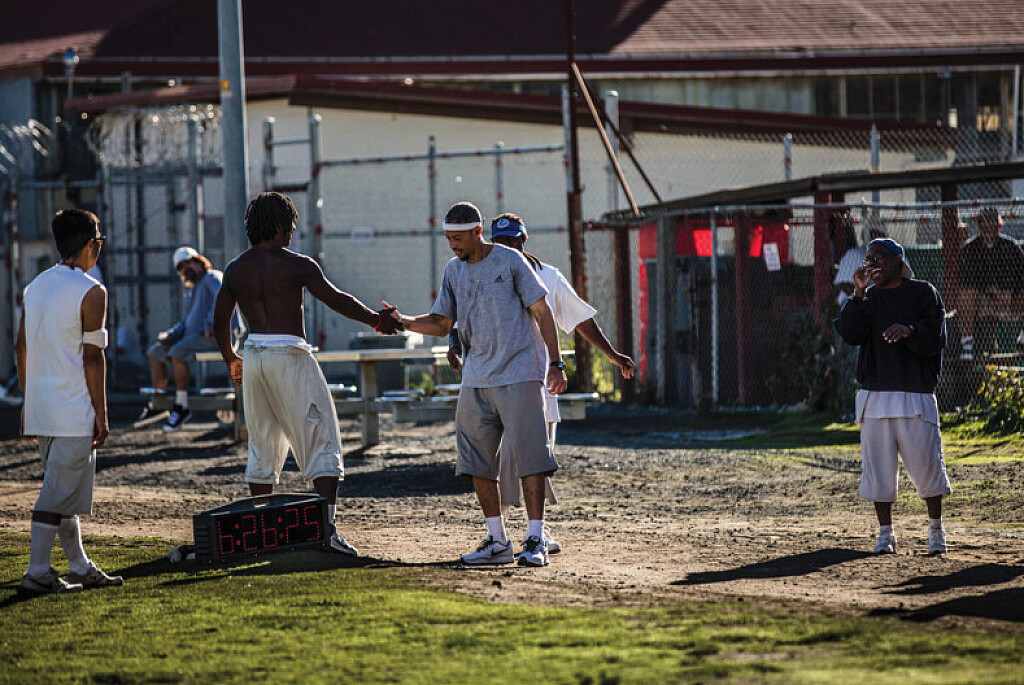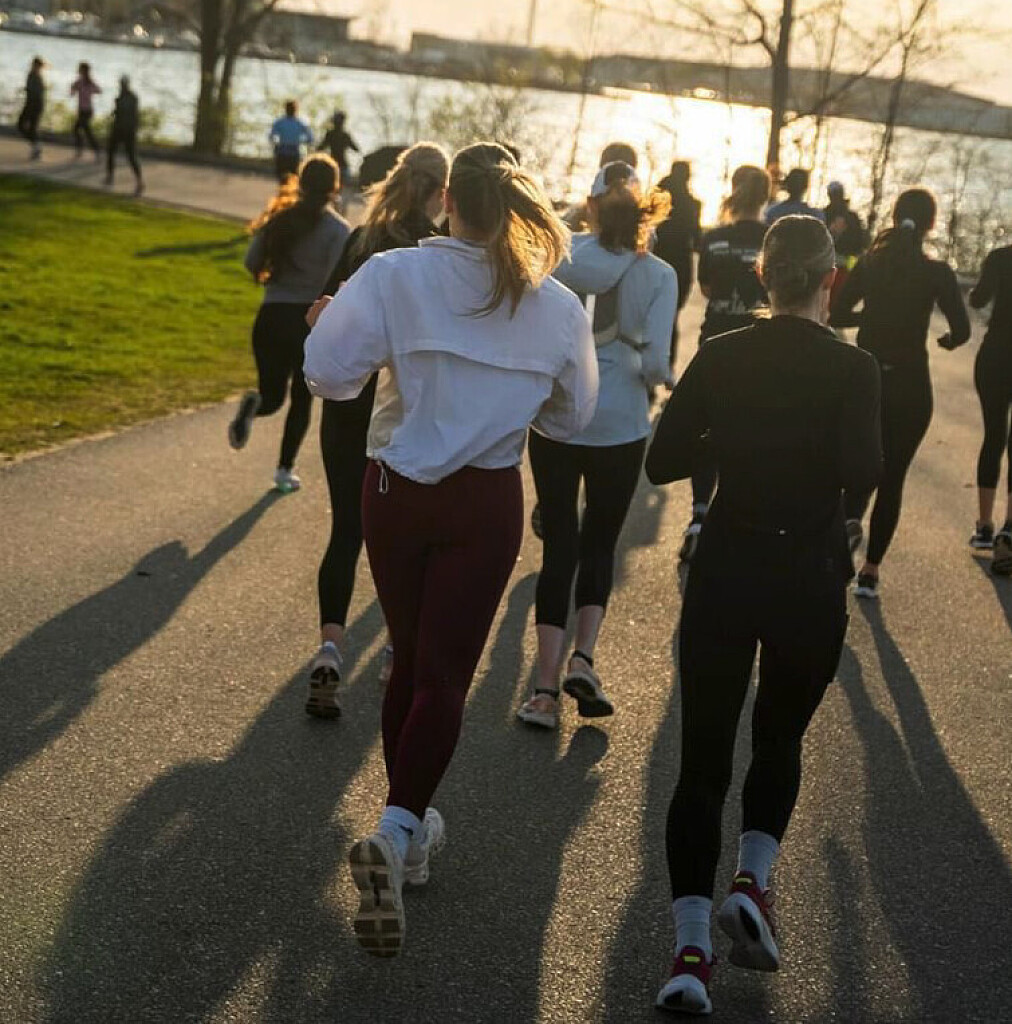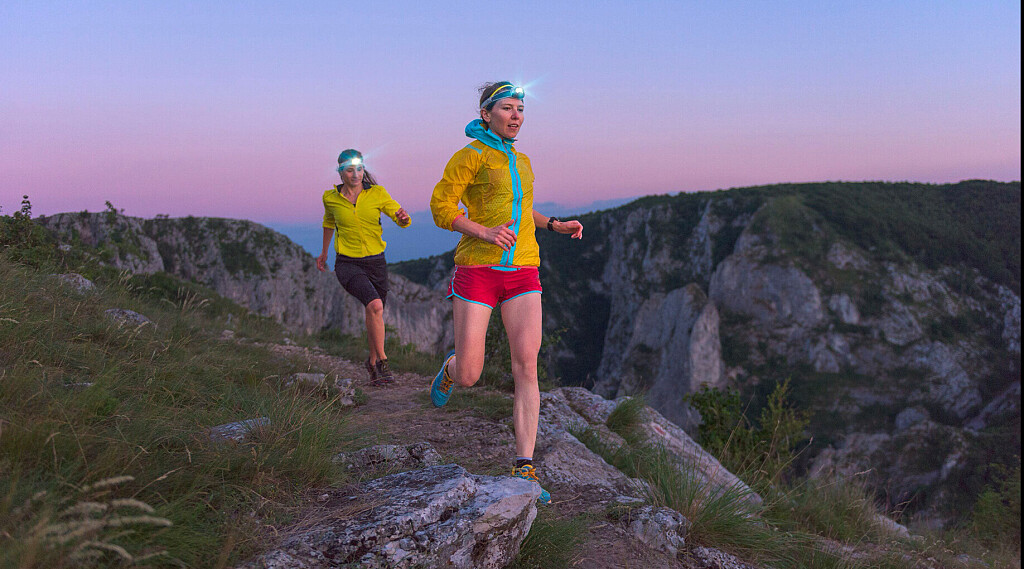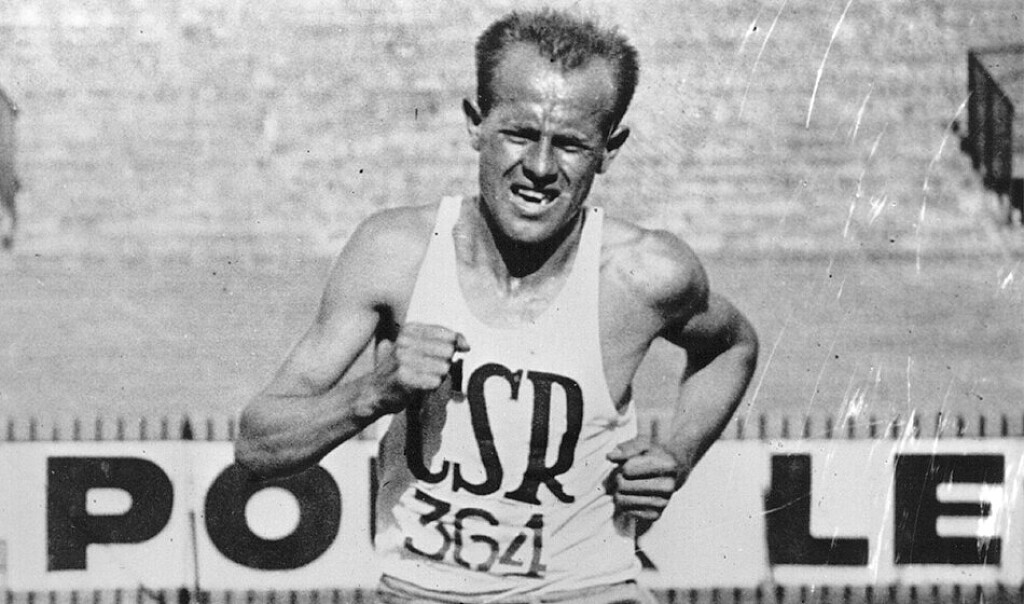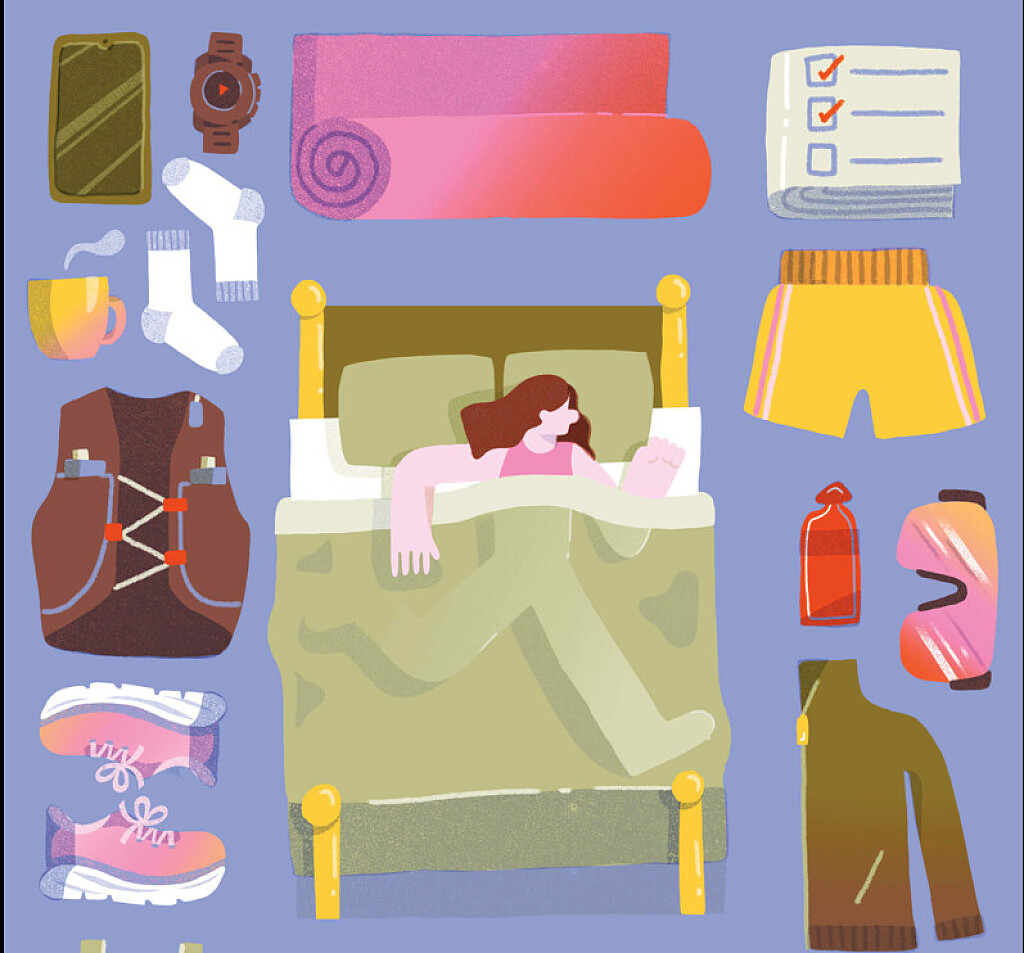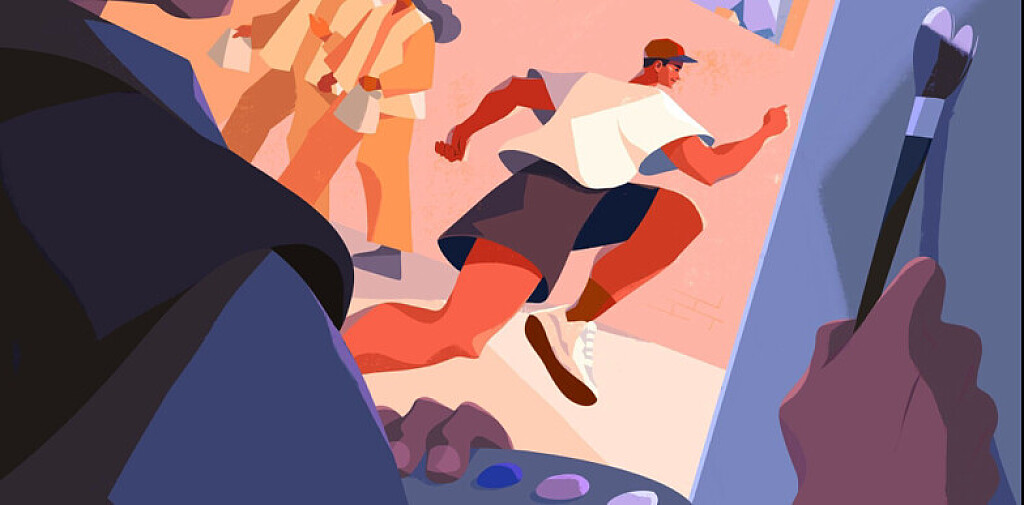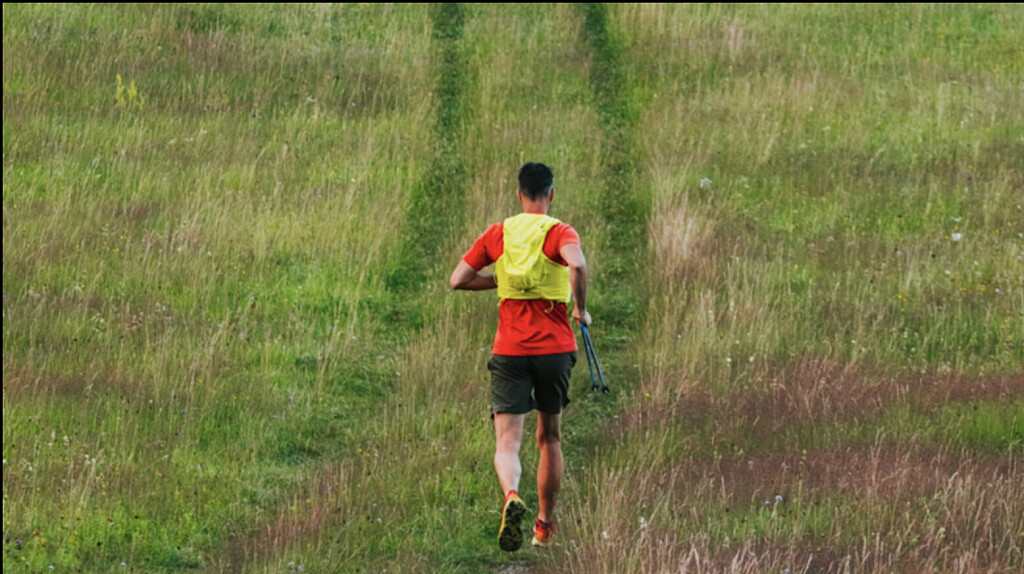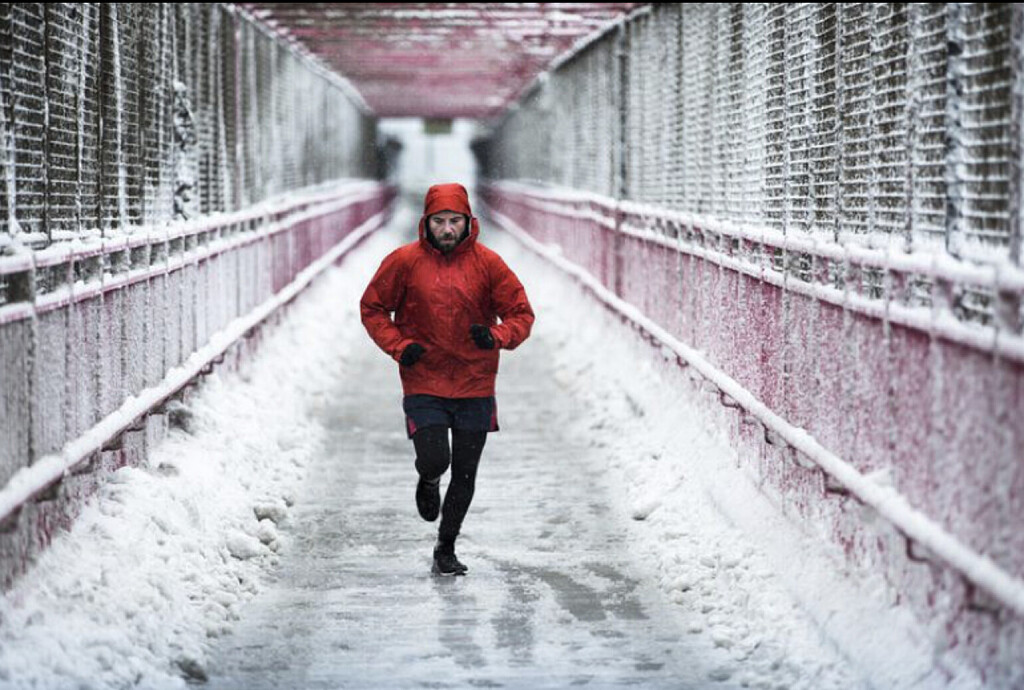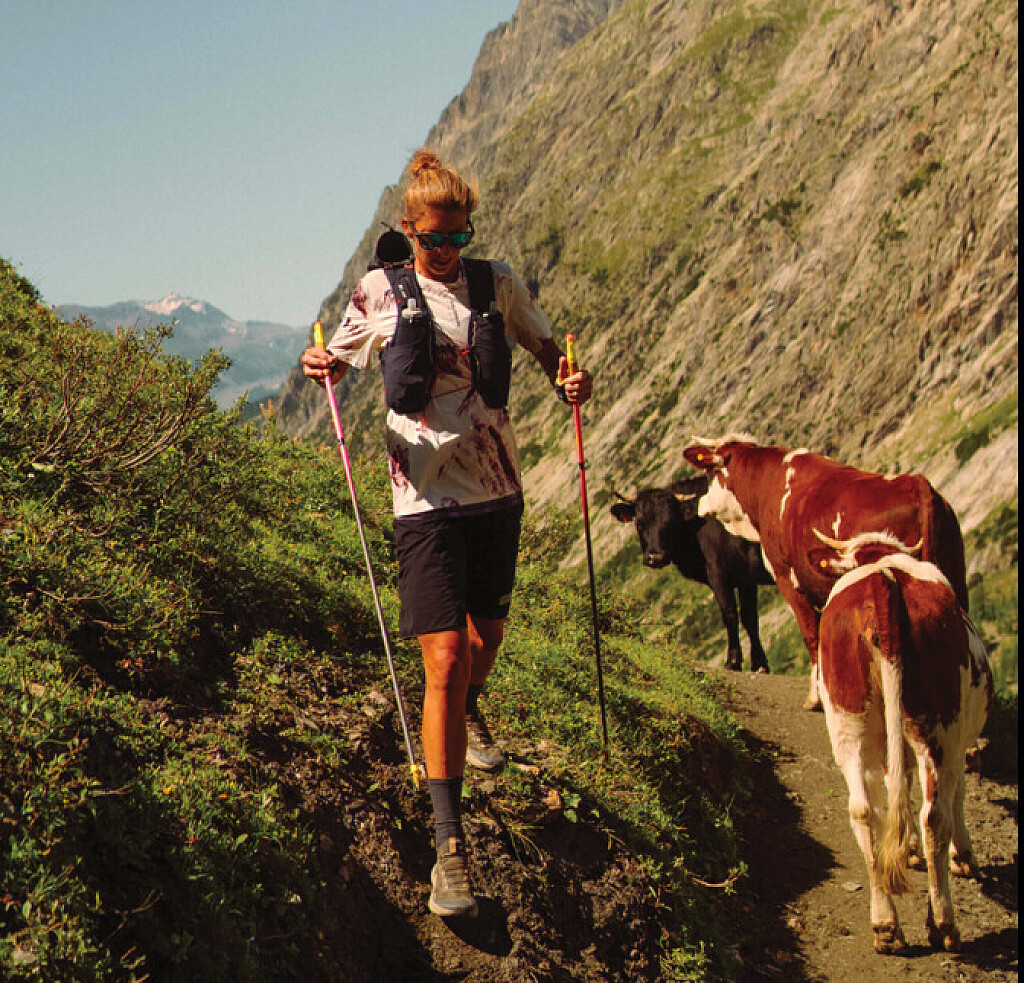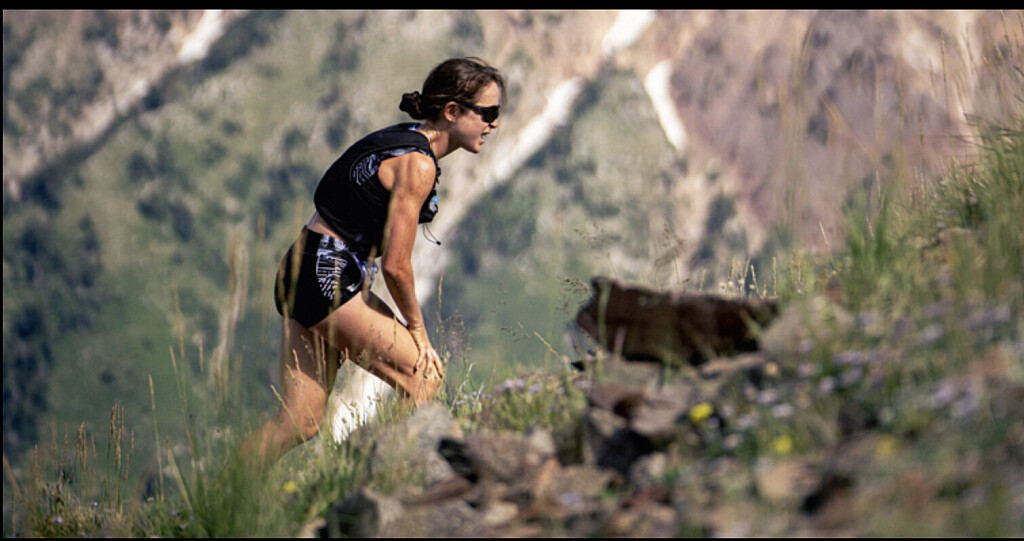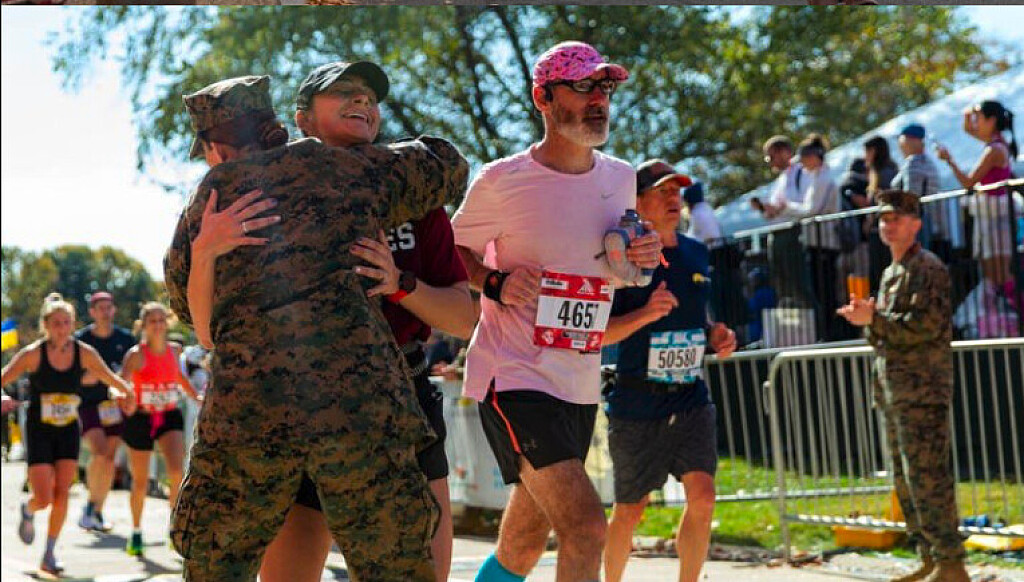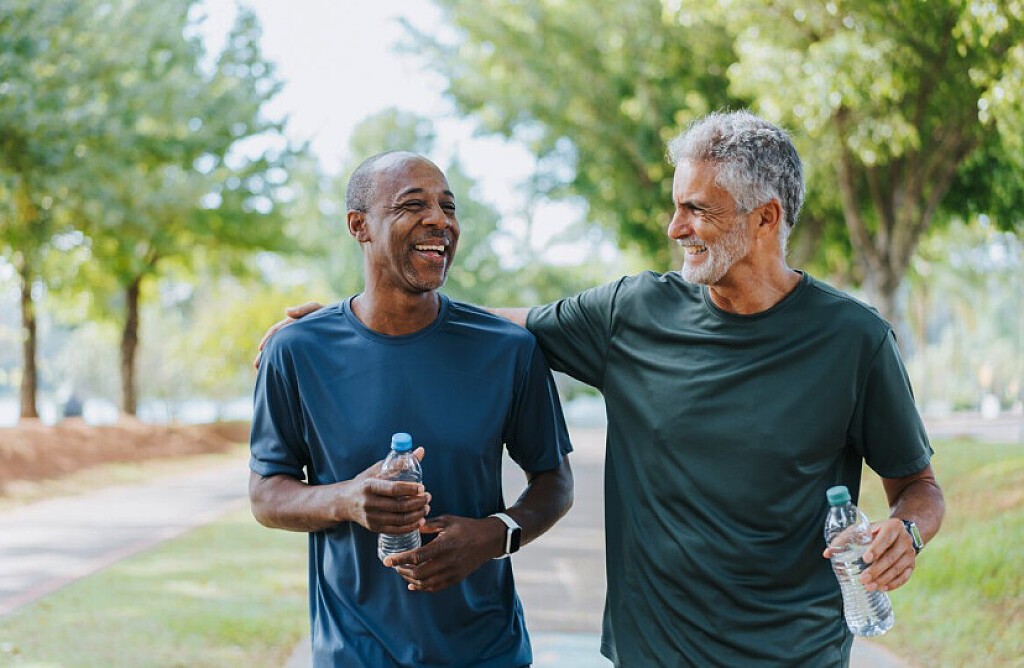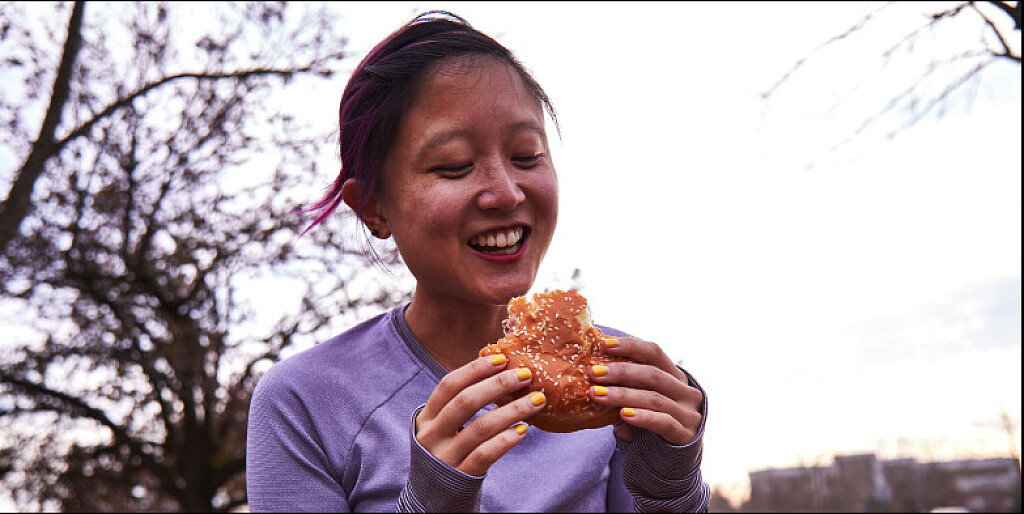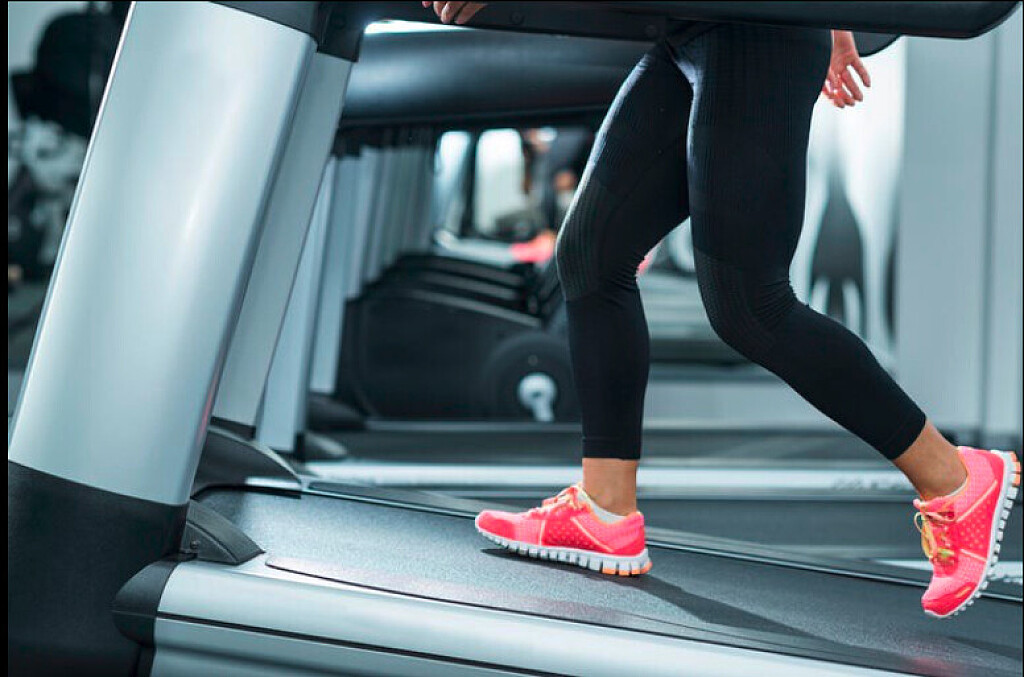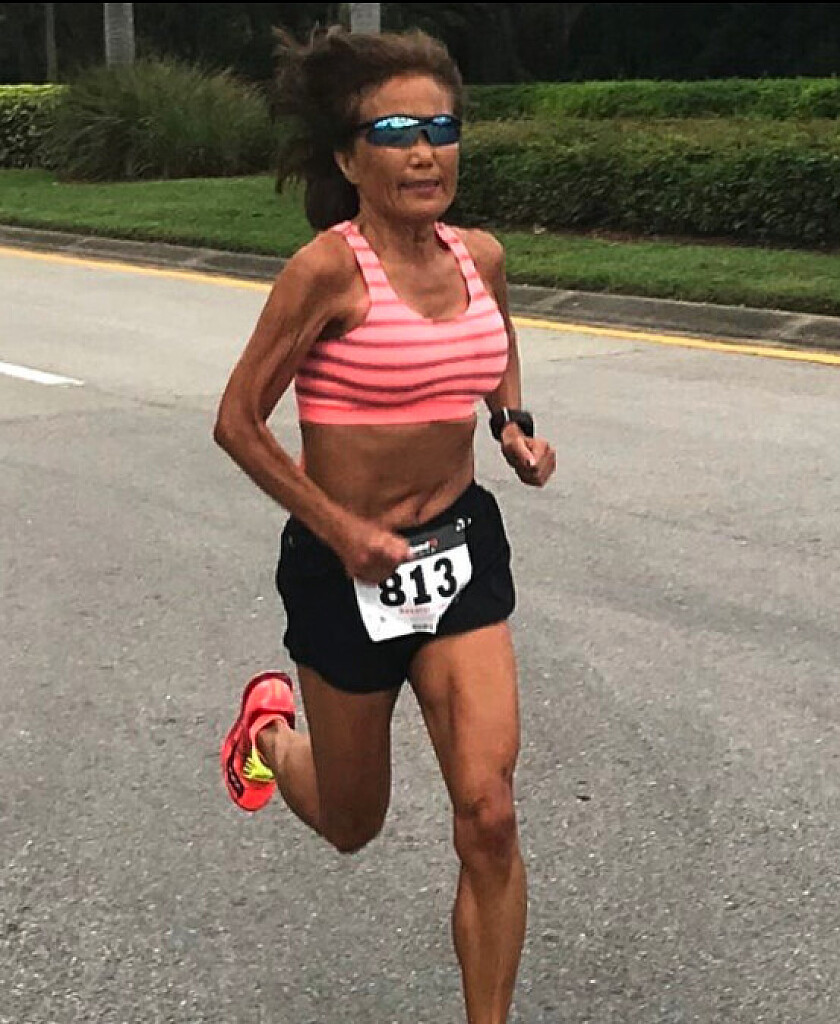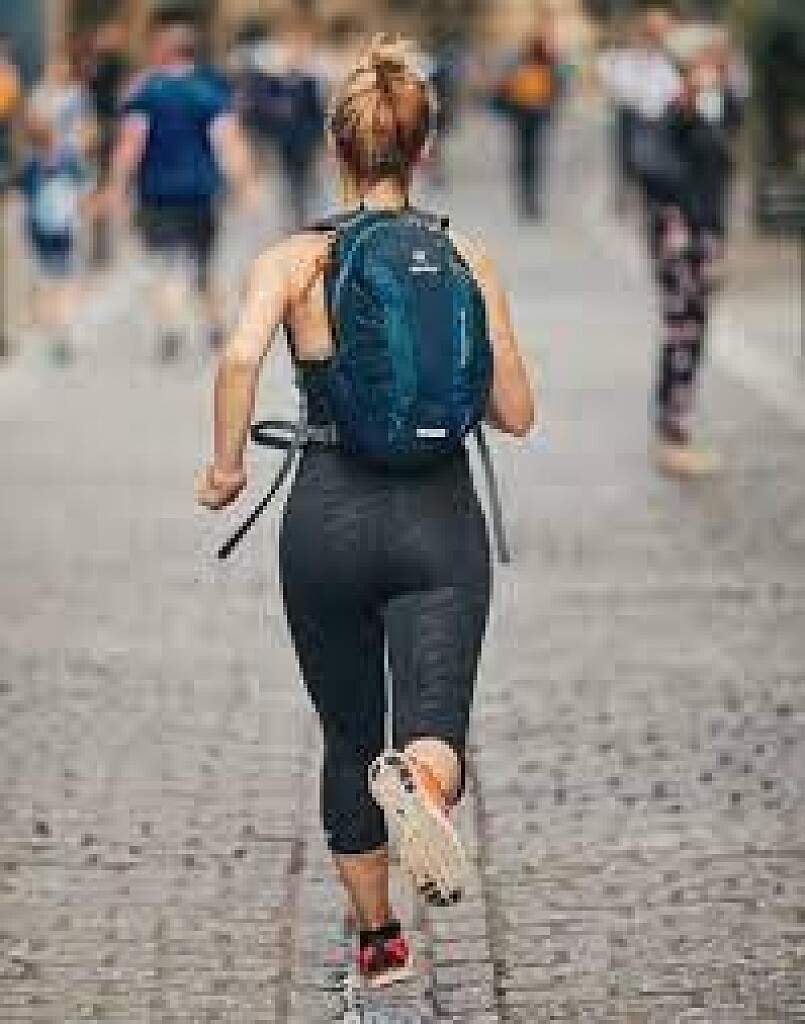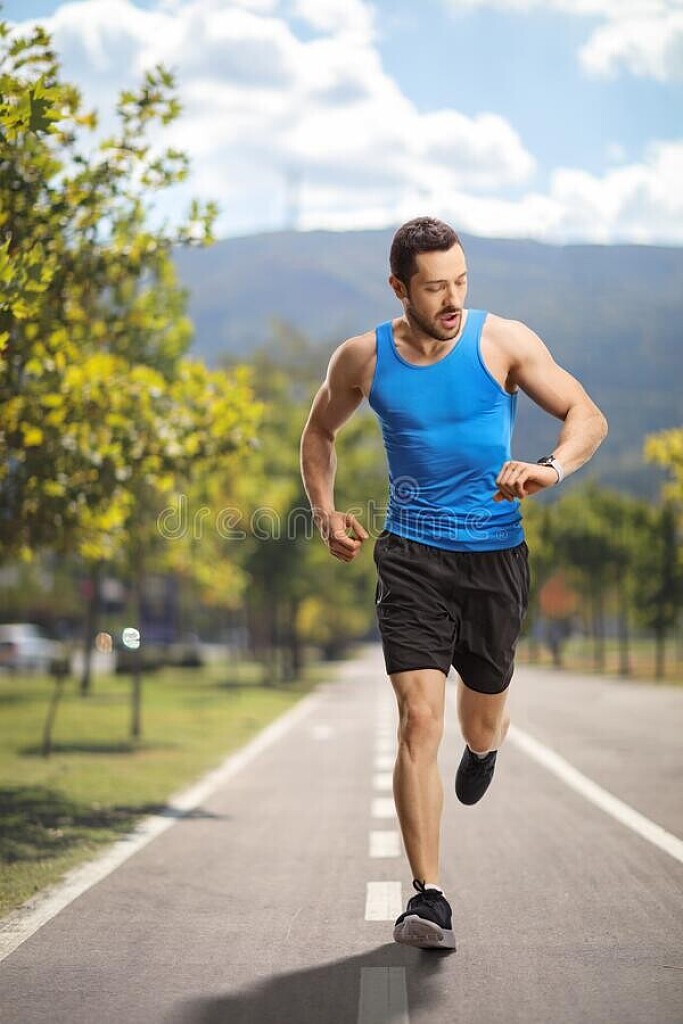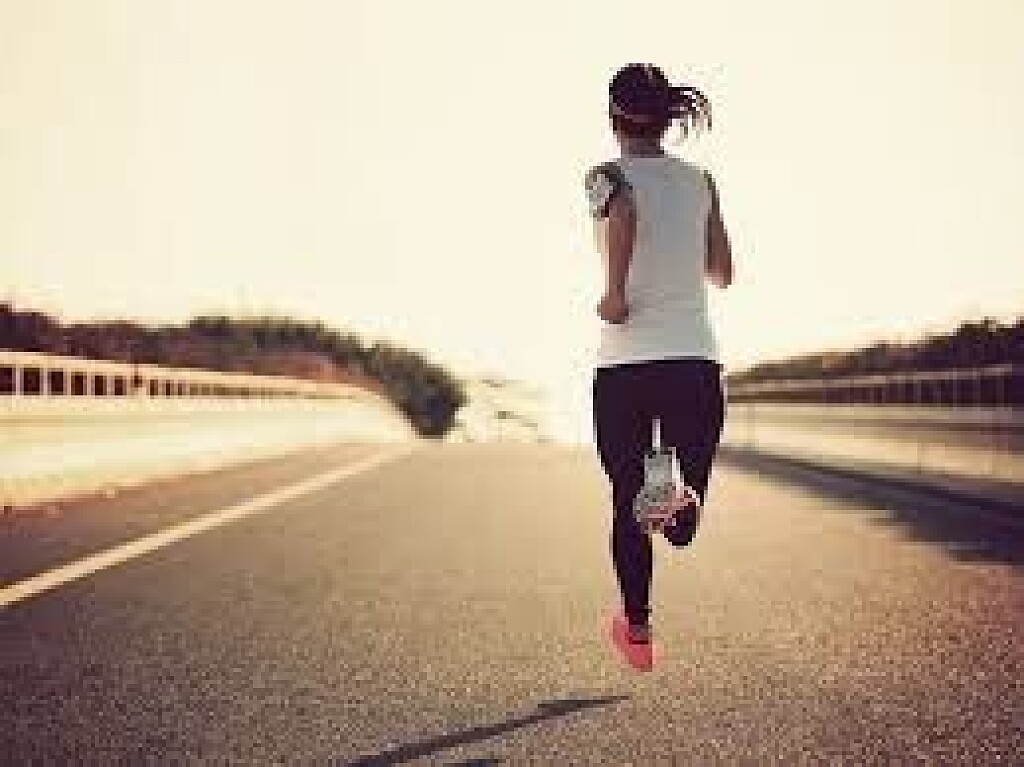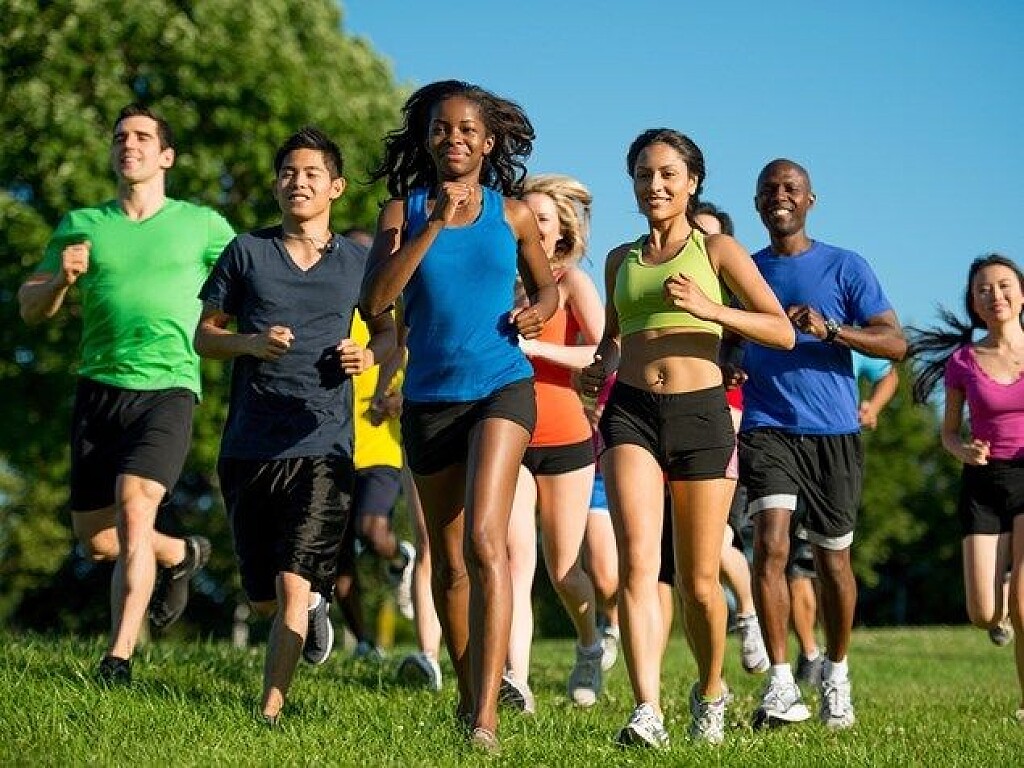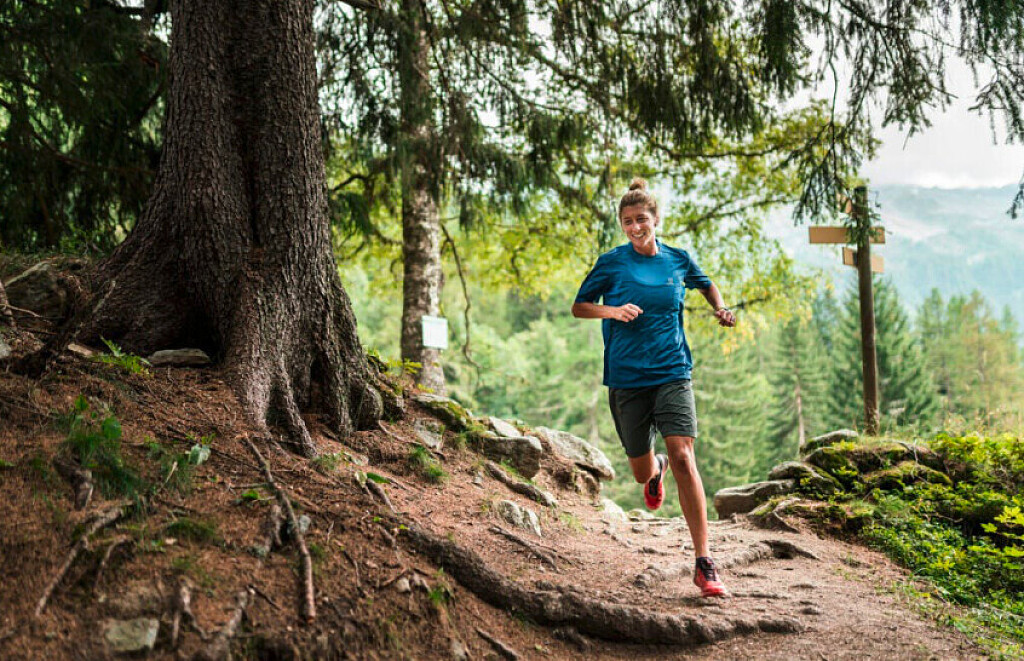Running News Daily
Running News Daily is edited by Bob Anderson. Send your news items to bob@mybestruns.com Advertising opportunities available. Train the Kenyan Way at KATA Kenya and Portugal owned and operated by Bob Anderson. Be sure to catch our movie A Long Run the movie KATA Running Camps and KATA Potato Farms - 31 now open in Kenya! https://kata.ke/
Index to Daily Posts · Sign Up For Updates · Run The World Feed
Articles tagged #Coffee
Today's Running News
Running Along the Seine River in Paris: My Second Favorite Place to Run
Some runs are so memorable that they stay with you long after you’ve finished them. For me, running along the Seine River in Paris is one of those special experiences. It’s my second favorite place to run, just behind Central Park in New York.
Starting at Notre-Dame: A Run Through the Heart of Paris

My favorite way to run along the Seine starts at Notre-Dame Cathedral on Île de la Cité. Being there when they reopened the cathedral after the devastating fire was a moment I’ll never forget. Seeing it restored and standing tall again makes this starting point even more special.
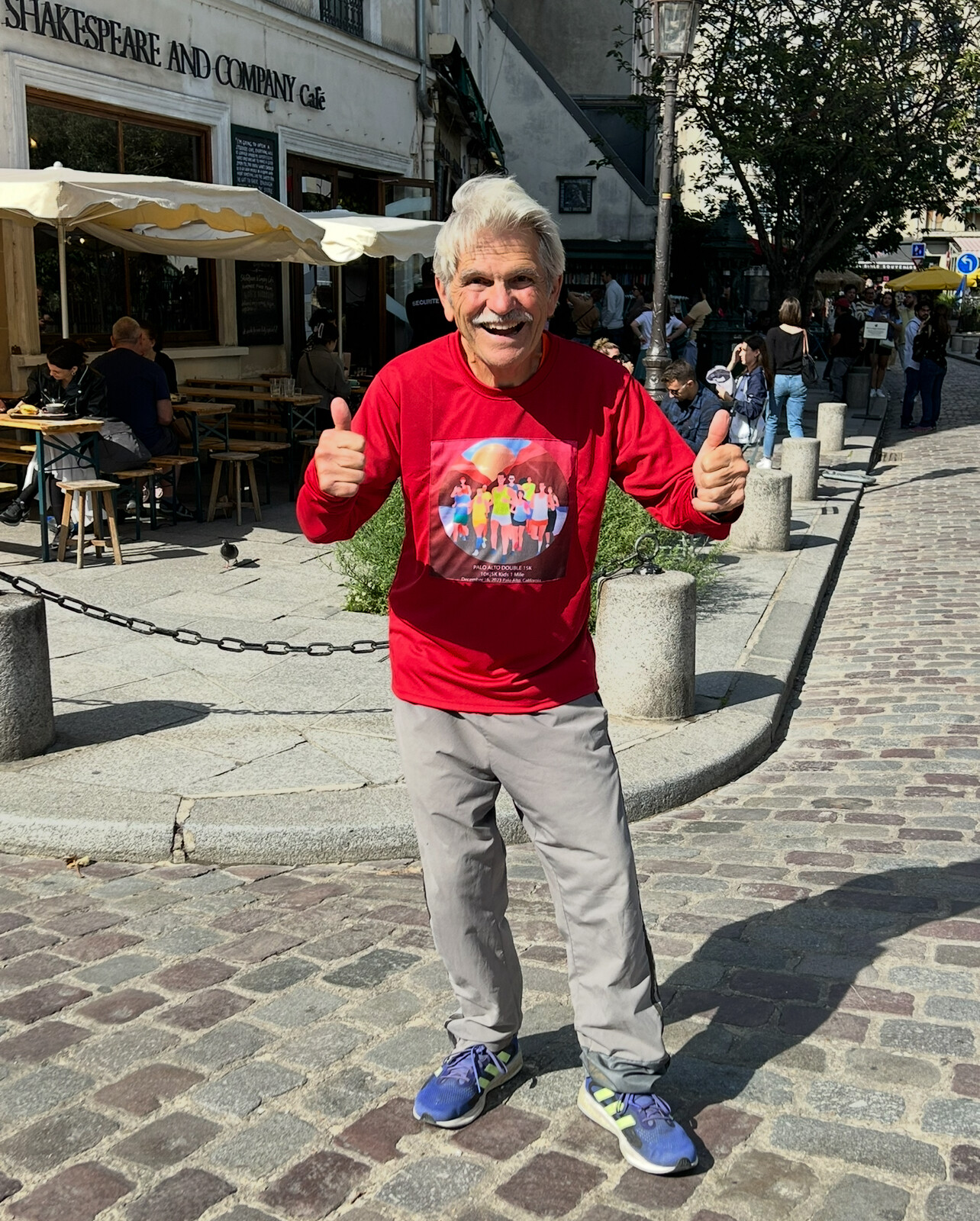
I prefer to run on the right side of the Seine (Rive Droite) first, heading west toward the Eiffel Tower. The early morning is the best time—Paris is still quiet, the air is crisp, and the river reflects the soft glow of the sunrise.
Running West Along the Right Bank (Rive Droite)
Starting at Notre-Dame, I follow the pedestrian paths along the Right Bank. This side of the Seine has a mix of cobblestone walkways and smooth running paths, with plenty of open space.

One of the first landmarks I pass is the Louvre, its grand architecture and glass pyramid still peaceful before the crowds arrive. Continuing west, I run through Port de l’Arsenal and past Pont Neuf, the oldest bridge in Paris, which has stood here since the early 1600s.
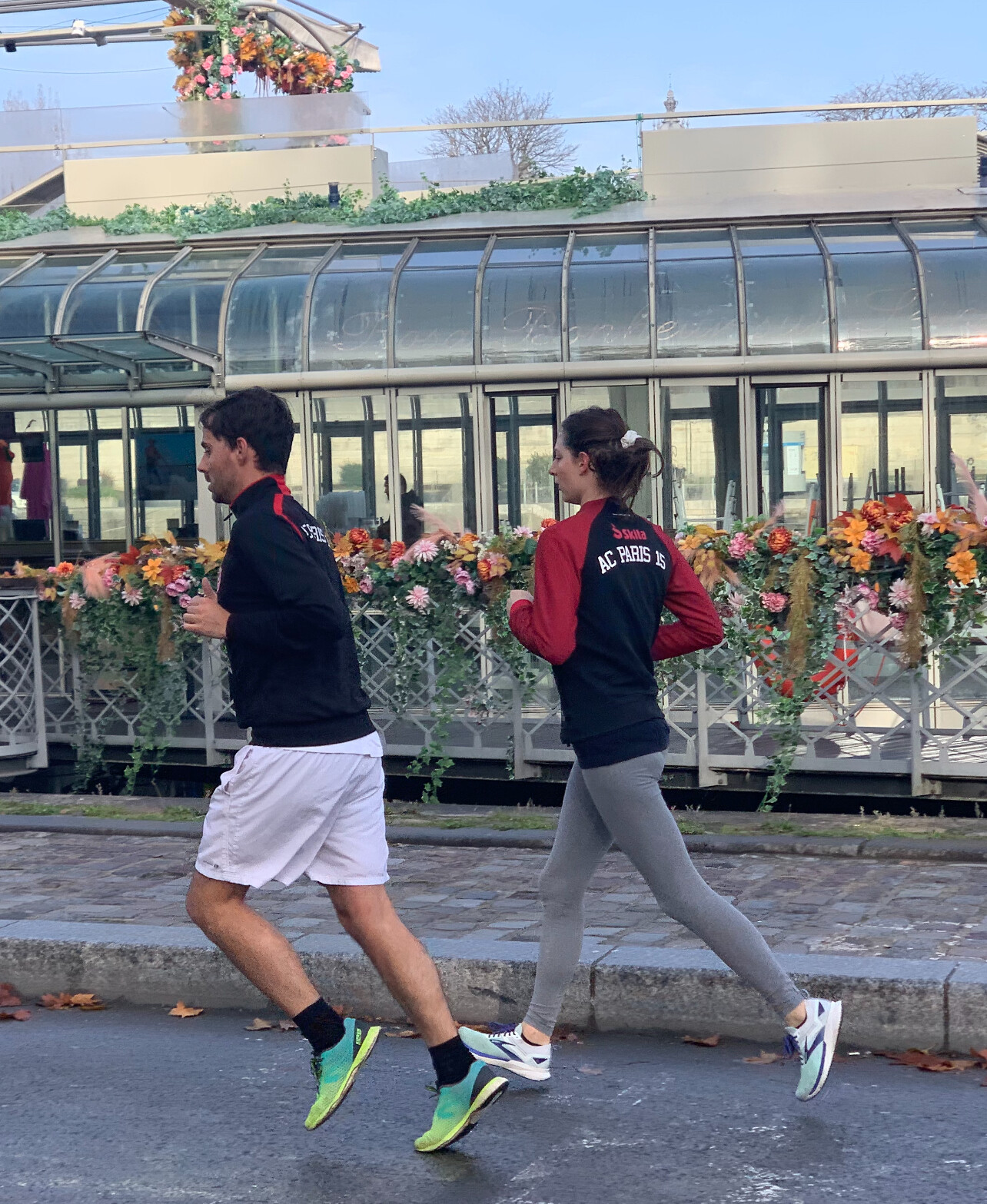
As I approach the Pont Alexandre III, I know I’m getting close to my turnaround point. This is one of the most beautiful bridges in the world, with its golden sculptures and ornate details. Beyond it, the Eiffel Tower rises in the distance, marking the midway point of my run.

Turning Around at the Eiffel Tower
Reaching the Eiffel Tower is always a highlight. No matter how many times I’ve run here, the sight of this iconic landmark never gets old. I take a moment to appreciate the view—sometimes stopping for a quick photo, sometimes just soaking it all in.
This is where I cross over to the Left Bank (Rive Gauche) to begin the second half of the run back toward Notre-Dame.

Returning Along the Left Bank (Rive Gauche)
The Left Bank has a different feel—more relaxed, with wider paths and fewer cobblestones. I pass by the Musée d’Orsay, the beautiful former train station turned art museum, and then continue past Port de Solférino, a scenic section of the river where the city’s energy starts to build.
Running past the Bouquinistes, the historic booksellers who line the riverbanks, is always a treat. Their green wooden stalls, filled with rare books and vintage prints, are a reminder that Paris is a city that treasures history and culture.
As I approach Île de la Cité, the home stretch of the run comes into view. Crossing back over the Seine near Pont Saint-Michel, I finish my run where I started—at Notre-Dame. By now, Paris is fully awake, and the city is alive with movement.
Why This Run is Special
This route is perfect for so many reasons. The mix of smooth paths, breathtaking landmarks, and the feeling of running through history makes every step enjoyable. Splitting the run between the Right Bank on the way out and the Left Bank on the way back also provides a unique perspective of Paris—like seeing the city in two different ways during the same run.
Why It’s My Second Favorite Run
Some runs stand out above all others:
1. Central Park, New York – The perfect balance of nature, varied terrain, and city energy.
2. The Seine River, Paris – A stunning out-and-back run along both banks of the Seine, with world-famous landmarks at every turn.
Final Thoughts

If you’re ever in Paris, I highly recommend running this route. Start at Notre-Dame, head west on the Right Bank, cross at the Eiffel Tower (I had to stop and take a photo of the Tower through the trees) and return along the Left Bank. It’s an unforgettable way to experience the city—and one of the best ways to truly feel the magic of Paris.
And as a special treat, I like to meet my wife Catherine at the little café across (Cafe Paris) from Notre-Dame for a coffee and maybe an avocado toast—and, of course, a nice conversation.
by Bob Anderson
Login to leave a comment
Olympic Triathlon Champion Alex Yee Targets 2:07 Marathon Debut at London Marathon
Alex Yee, Great Britain’s Olympic and World Triathlon Champion, is set to make his marathon debut at the 2025 London Marathon on April 27. The 27-year-old aims for a finishing time between 2:07 and 2:10, a performance that would place him among the top British marathoners historically.
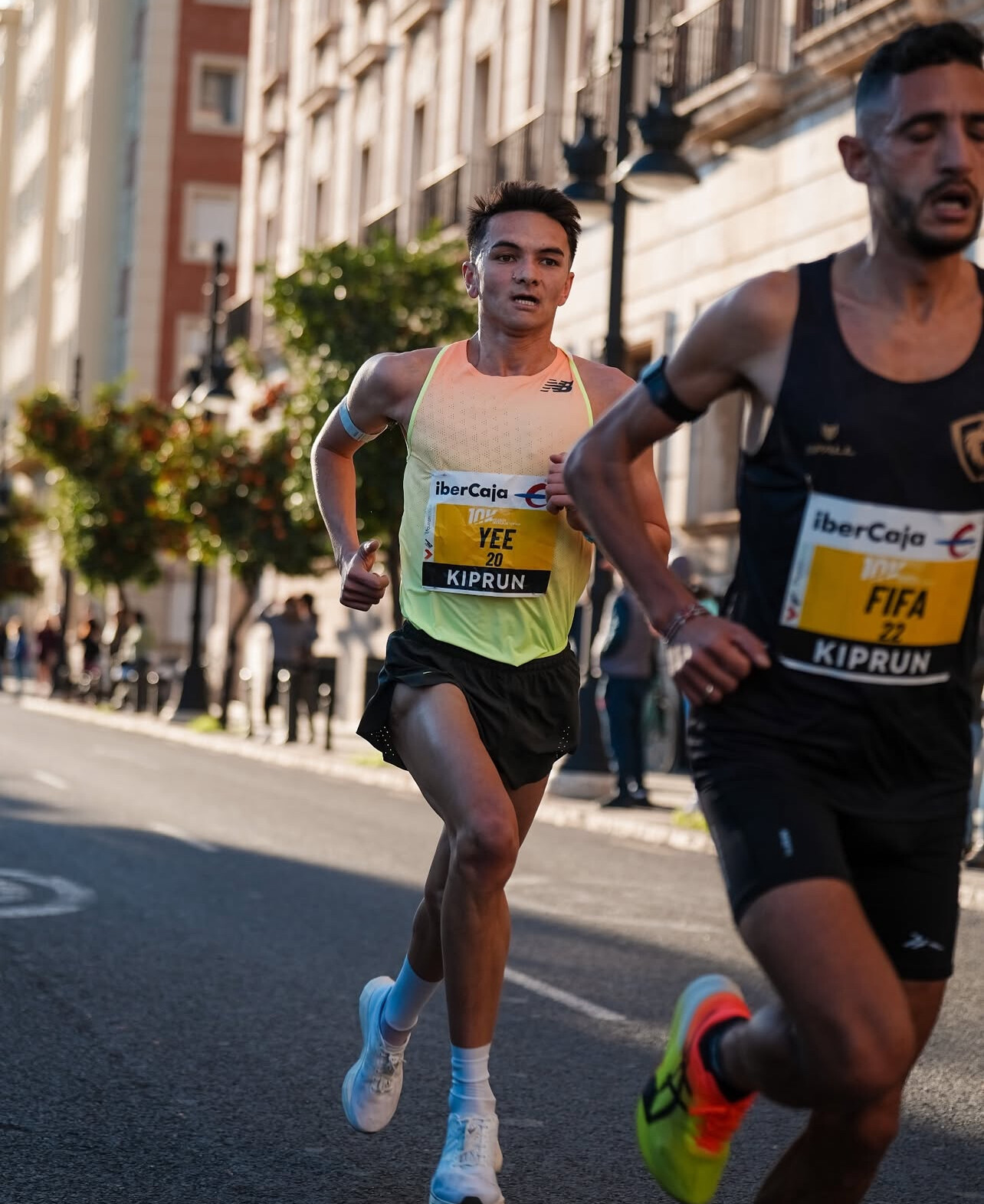
Yee’s decision to tackle the marathon comes after a stellar 2024, during which he secured both Olympic and World Championship titles in triathlon. Reflecting on this new challenge, Yee stated, “The marathon is something I’ve wanted to try for a while… Taking it on now just makes sense—it’s something different to mix things up and keep the motivation high.”
Training under coach Adam Elliott, Yee is adapting his regimen to balance marathon preparation with his triathlon commitments.
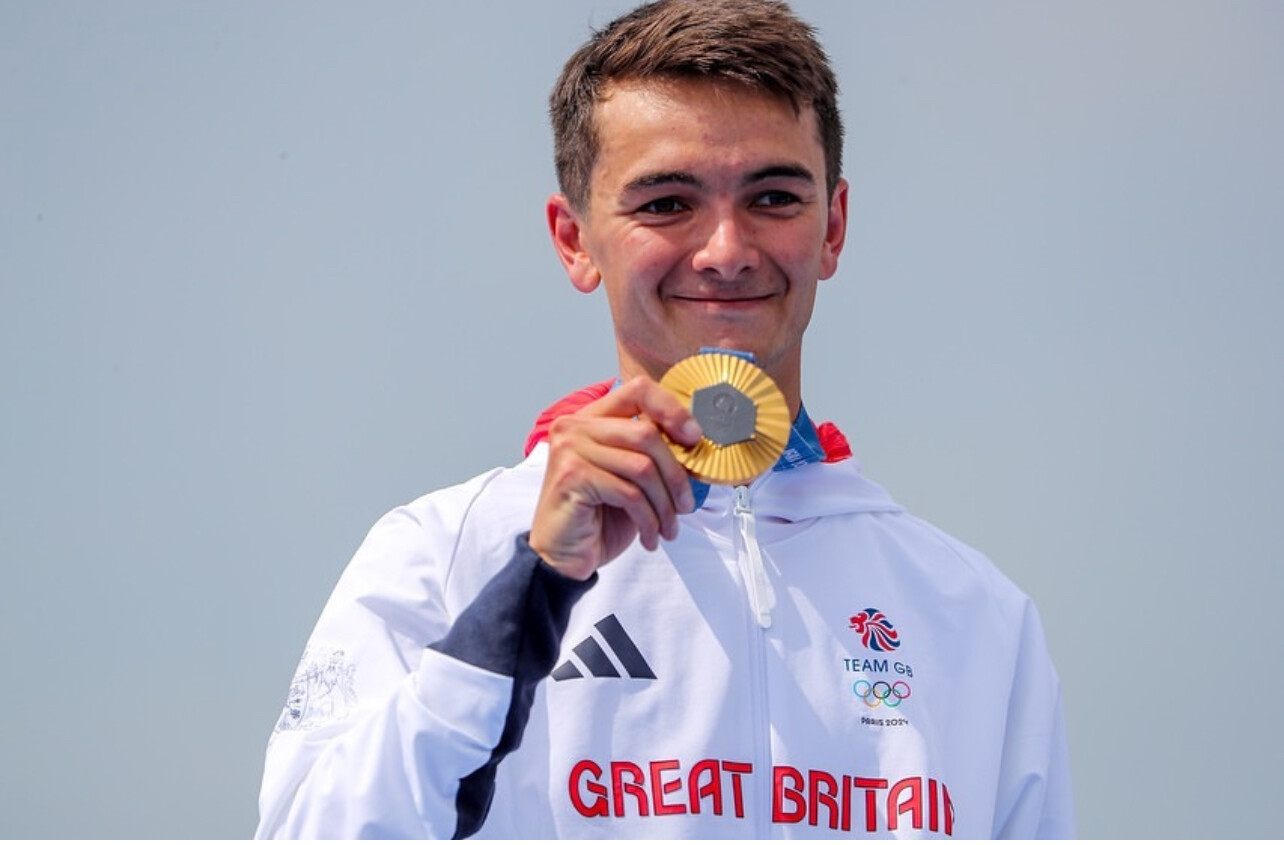
His weekly running mileage is increasing to approximately 80 miles, complemented by swimming and cycling sessions to maintain overall fitness. Elliott emphasizes a cautious approach to avoid injury, noting, “There is a clear risk of lower leg injury so he won’t do it off super high mileage.”

Yee’s running credentials are impressive; he boasts a 10,000m personal best of 27:51 and recently clocked 28:07 in a 10k road race in Valencia. These performances suggest his marathon goal is within reach.

Yee acknowledges the unknowns ahead, remarking, “I think the exciting thing is that I could fail and it might not go to plan. And that’s a good thing… there’ll be a huge amount of learning either way.”
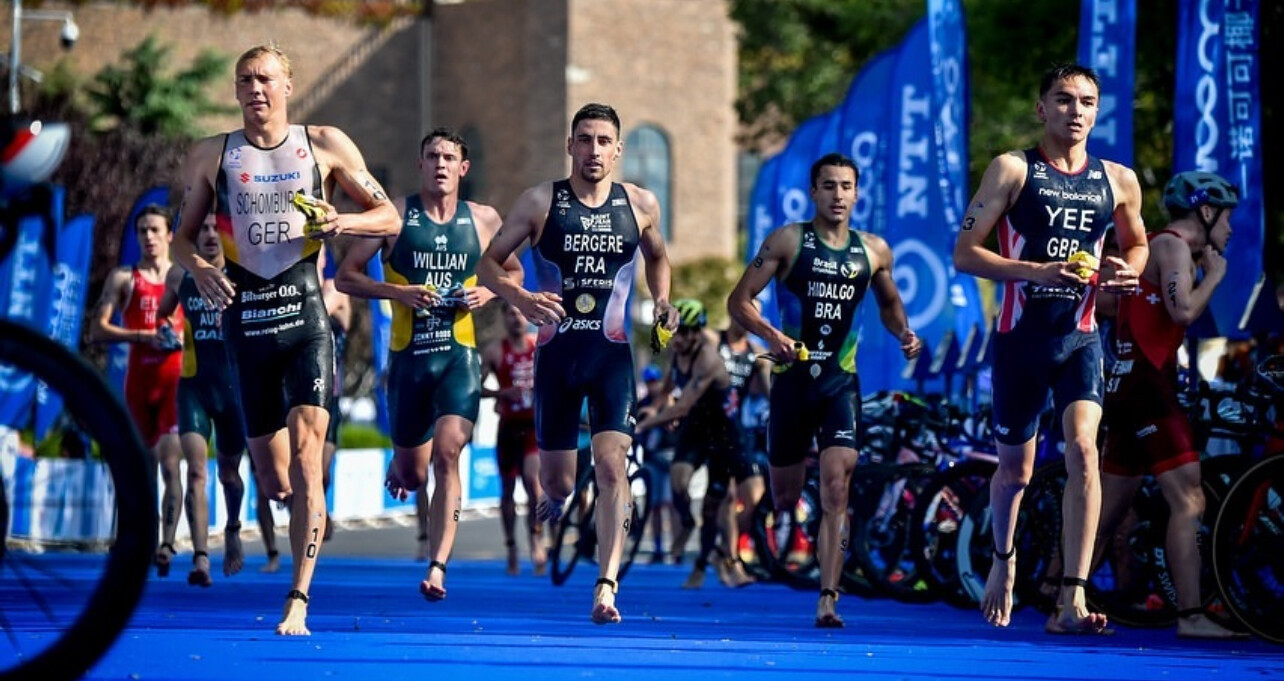
Adding to the anticipation, marathon legend Eliud Kipchoge has offered to mentor Yee ahead of the race. Kipchoge expressed his willingness to share insights, stating, “I’d like to meet him [Yee] before the race and share the lives we live… I’ll give my time when I’m in London to sit with him and share a meal, have a coffee.”

As Yee prepares for this significant milestone, the athletics community eagerly awaits his transition from triathlon to marathon running, anticipating a performance that could redefine expectations for multi-discipline athletes.
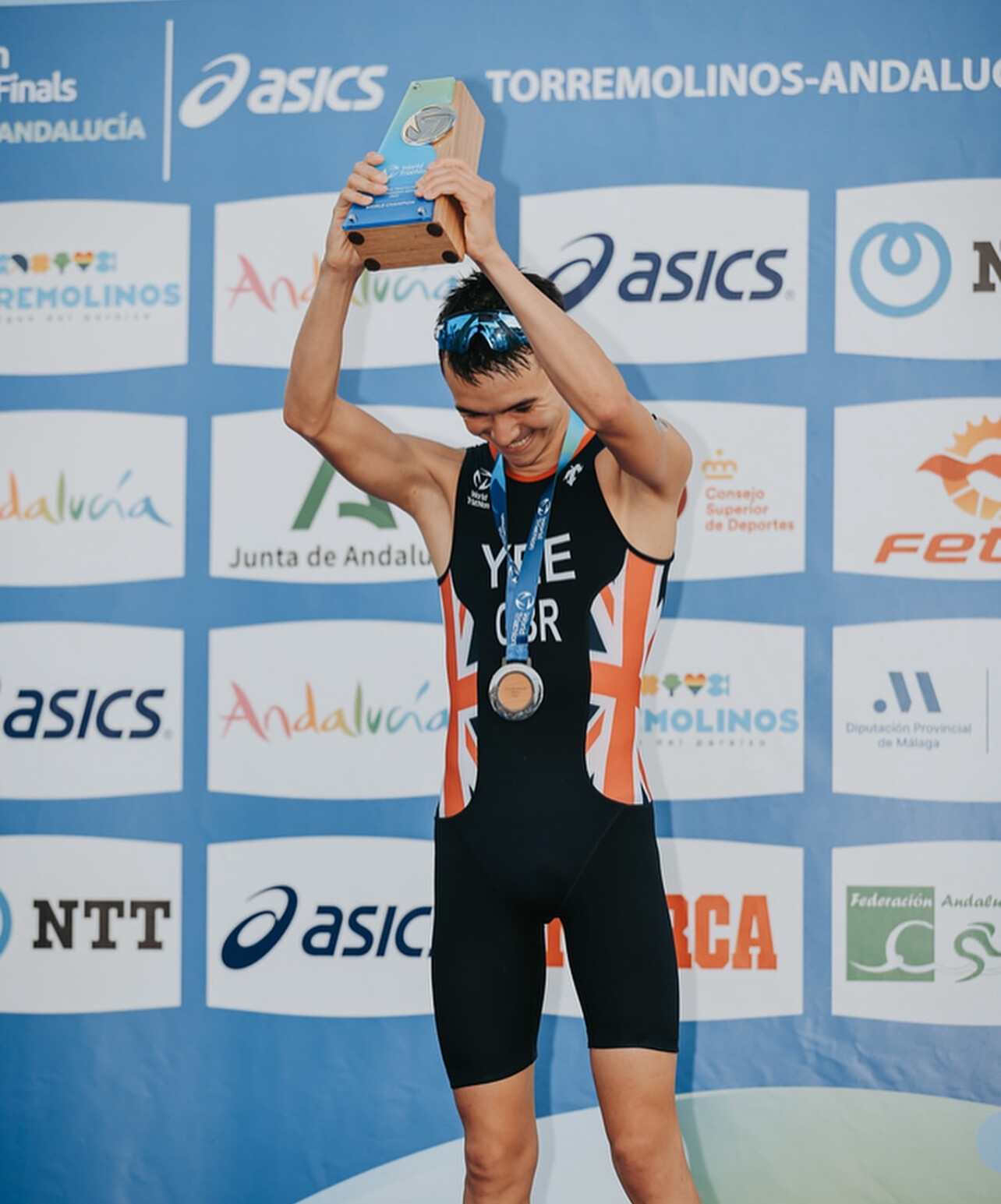
by Boris Baron
Login to leave a comment
Running Through Stanford: Bob Anderson’s Favorite Routes Across One of the Most Scenic Campuses in the World
For over a decade, Bob Anderson — founder of Runner’s World and My Best Runs — has made the beautiful campus of Stanford University part of his regular training routine. Logging more than 40-60 runs per year, Bob doesn’t just show up for a loop or two. His connection to the campus is personal, purposeful, and deeply rooted in over ten years of consistent miles.
The Campus: Where Beauty Meets Variety
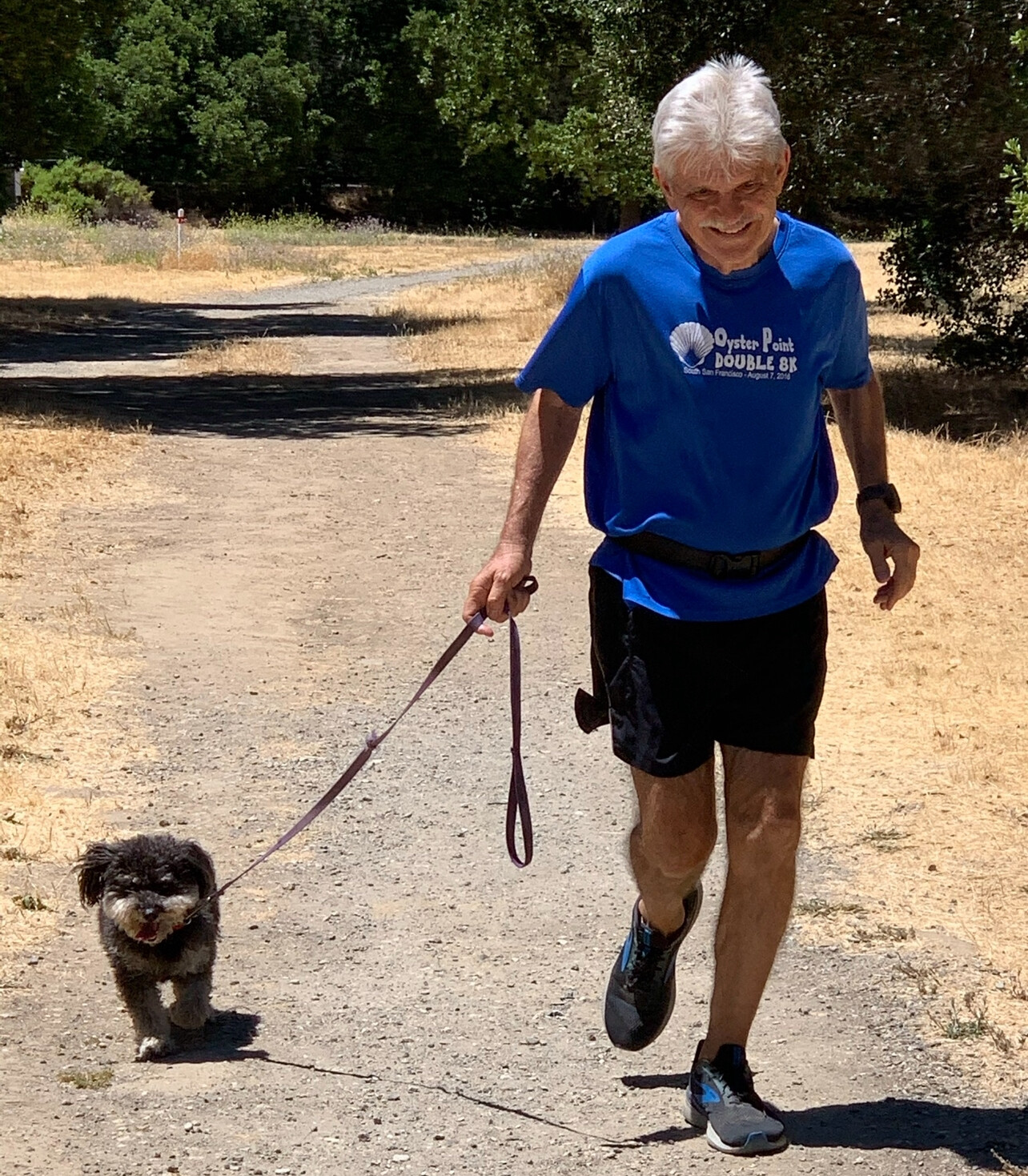
Stanford’s campus is one of the largest in the world, covering more than 8,000 acres in the heart of Silicon Valley. For runners, it’s a dream.

The terrain is varied and forgiving, with a blend of smooth bike paths, tree-lined sidewalks, dirt trails, and open stretches that feel more like parkland than a college campus. Runners pass by iconic sandstone buildings, the Rodin Sculpture Garden, and expansive green spaces that invite both focus and reflection. The Hoover Tower stands tall in the background, offering a visual anchor point during longer runs.

Whether you’re doing intervals on the flats or cruising through rolling paths near the Arboretum, Stanford has the kind of range that keeps every workout interesting.
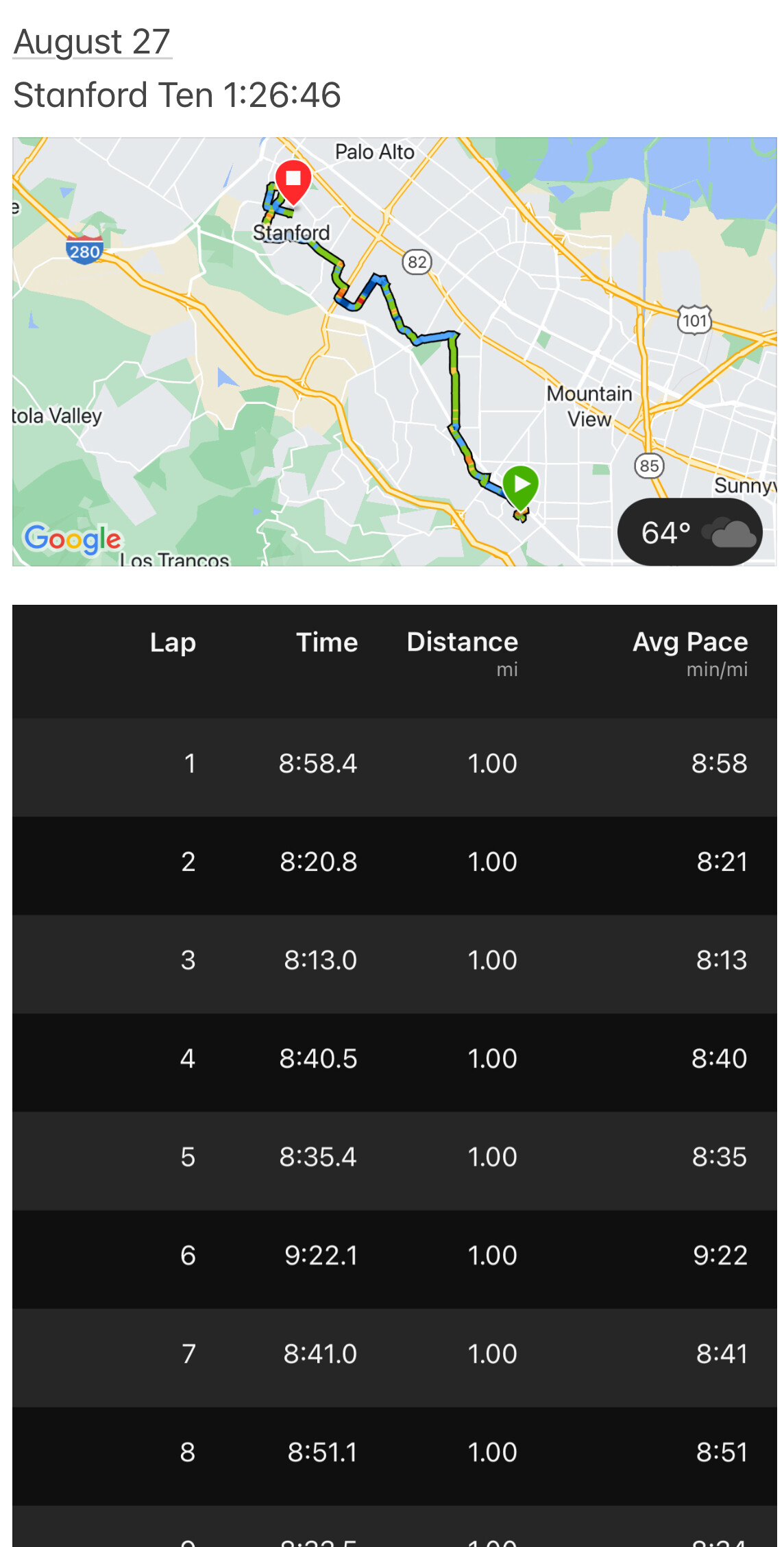
Bob’s Go-To Route: From Los Altos to Coupa Café
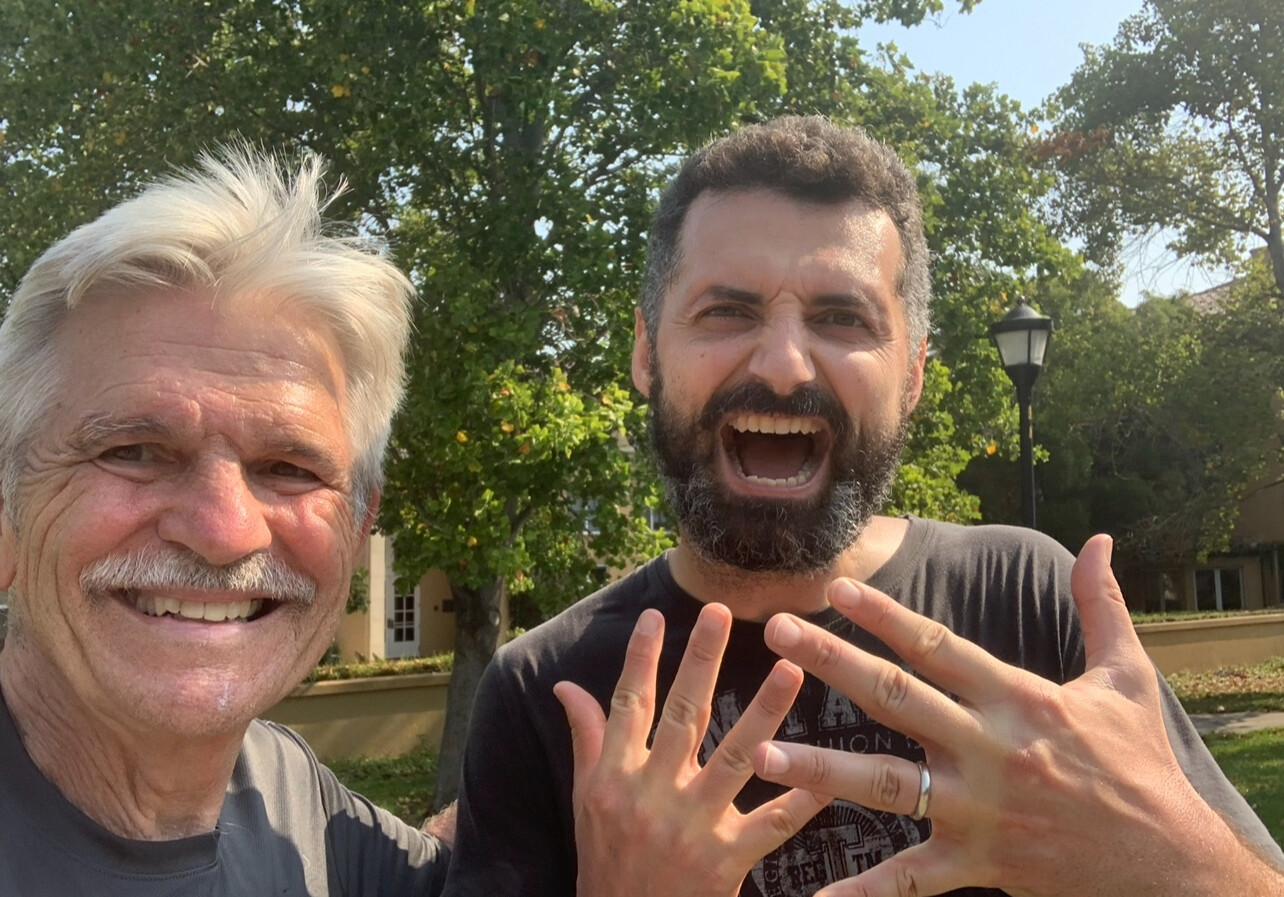
Bob typically begins his run from his home in Los Altos, covering 7.2 miles to Coupa Café on campus. Most days, he runs the first 6.2 miles, then walks the final mile as an active cooldown, enjoying the transition onto Stanford’s peaceful grounds.
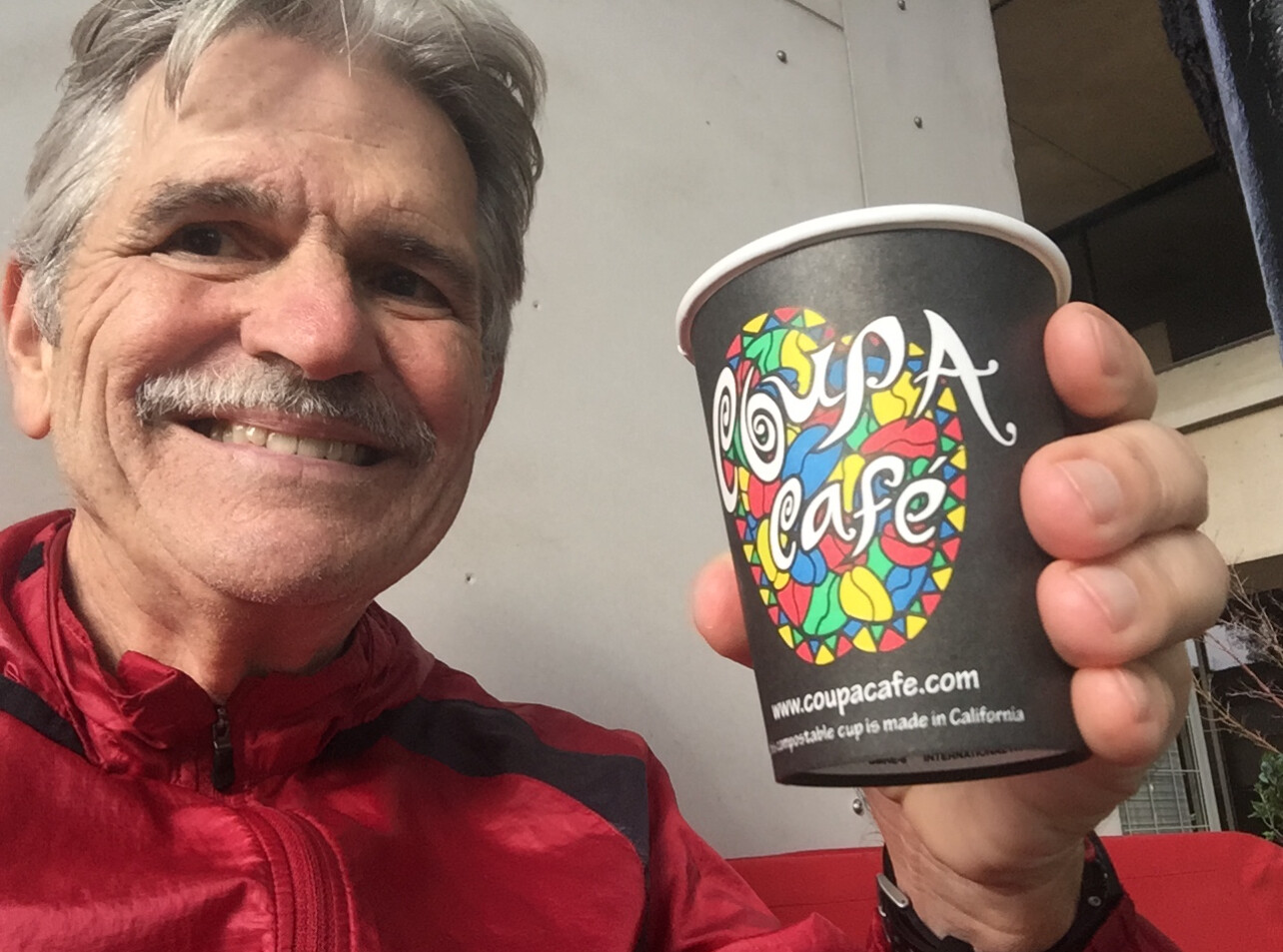
His destination is Coupa Café, a cozy outdoor spot nestled in the heart of Stanford. The stop is part of the ritual: a cup of coffee, a bag of chips, and a bottle of water — simple mid-run fuel that’s become tradition.

He’s often joined by his friend JR, especially on Sundays, turning the outing into a social run and a weekly catch-up. On Saturdays, his small dog Daisy — a fast, energetic runner — tags along. Daisy has even clocked sub-8-minute miles over 10K distance, holding her own on the longer efforts.
The 10-Mile Loop: A Long Run Favorite
Another favorite in Bob’s training rotation is a 10-mile run that also starts in Los Altos. He reaches Stanford around mile 6.5, then finishes the last 3.5 miles weaving through the most scenic parts of campus. (Sixth photo after the 10 with JR)
He wraps up the 10-miler at — where else? — Coupa Café, before taking in a post-run walk of about a mile to his pickup spot, where his wife meets him. It’s a perfectly designed effort that blends physical training with relaxation and reflection.
Why Stanford Works for Runners
• Safe and runner-friendly: Wide bike paths, sidewalks, and pedestrian zones.
• Scenic and ever-changing: Between the architecture, gardens, and trails, there’s always something new to notice.
• Flat and fast: Ideal for tempo runs, recovery jogs, or long efforts.
• Quiet corners: Great for solo runs or mindful movement.
• Accessible: Easily reached from surrounding cities, especially by foot from Palo Alto or Los Altos.
Some Final Thoughts
Stanford University isn’t just a world-class institution — it’s also one of the best places to run in the Bay Area. For Bob Anderson, it has become a cornerstone of his running life.
Whether it’s a seven-mile effort with coffee in the middle or a strong ten-mile long run with a relaxing walk to follow, Stanford delivers miles with meaning — shared with friends, family, and even a four-legged training partner named Daisy.
“There’s something about that campus that keeps calling me back,” Bob says. And after just one run through Stanford, it’s easy to understand why.
Bob has also run many races on the Stanford campus and many people have joined him at Coupa cafe. "If you have not explored the campus you should put it on your to do list," says Bob.
There are many races that run through the Stanford campus as well. The last photo is one Bob ran.
by Boris Baron
Login to leave a comment
Haile Gebrselassie’s Journey from Track Legend to Business Mogul
Haile Gebrselassie, renowned for his extraordinary achievements in long-distance running, has seamlessly transitioned into a successful entrepreneur, establishing a diverse business empire that significantly contributes to Ethiopia’s economy.
Athletic Achievements
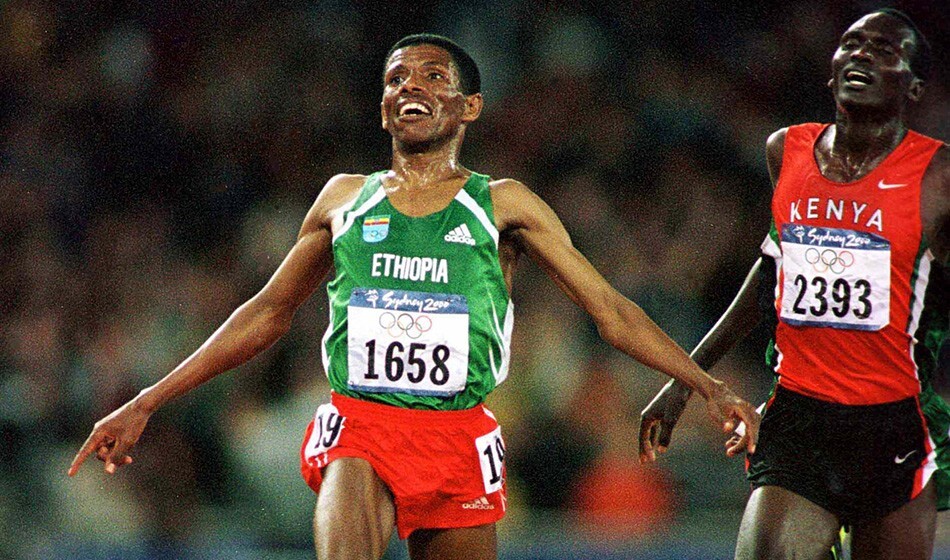
Gebrselassie’s athletic career is adorned with numerous accolades:

• Olympic Gold Medals: He secured gold in the 10,000 meters at both the 1996 Atlanta and 2000 Sydney Olympics.
• World Championships: Gebrselassie clinched four World Championship titles in the 10,000 meters in 1993, 1995, 1997, and 1999.
• World Records: Throughout his career, he set 27 world records across distances ranging from 1,500 meters to the marathon. Notably, he set a marathon world record of 2:03:59 at the 2008 Berlin Marathon.
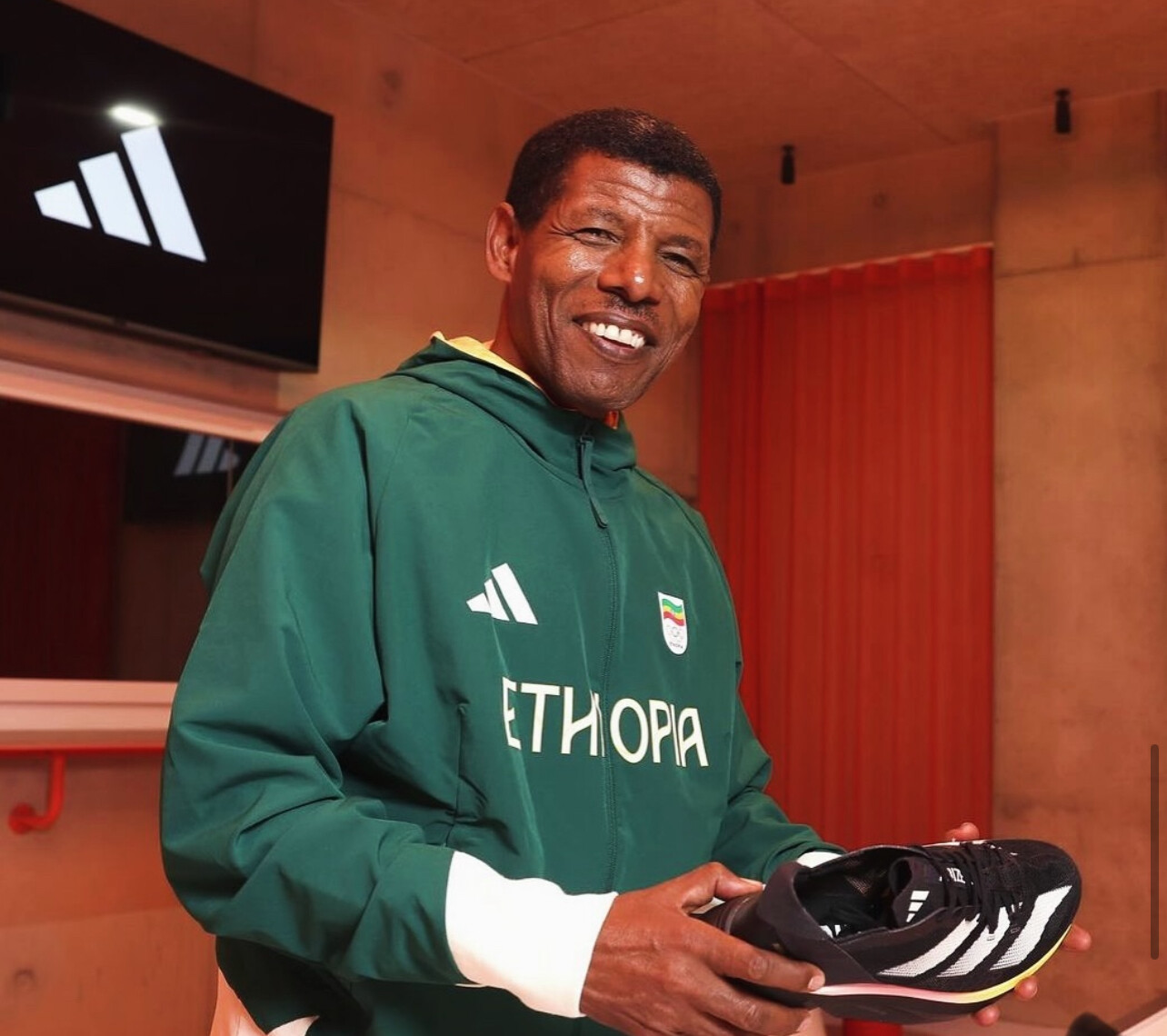
Haile Hotels and Resorts: A Fusion of Hospitality and Athletics

In 2010, Gebrselassie founded Haile Hotels and Resorts, launching the flagship resort in Hawassa. The chain has since expanded to several Ethiopian cities, including Shashemene, Ziway, Arba Minch, Gondar, Adama, and Addis Ababa. These establishments are distinguished by their integration of athletic facilities, reflecting Gebrselassie’s dedication to promoting sports and wellness. Amenities such as state-of-the-art gyms, running tracks, and sports complexes cater to both professional athletes and fitness enthusiasts, embodying a harmonious blend of luxury and athleticism.
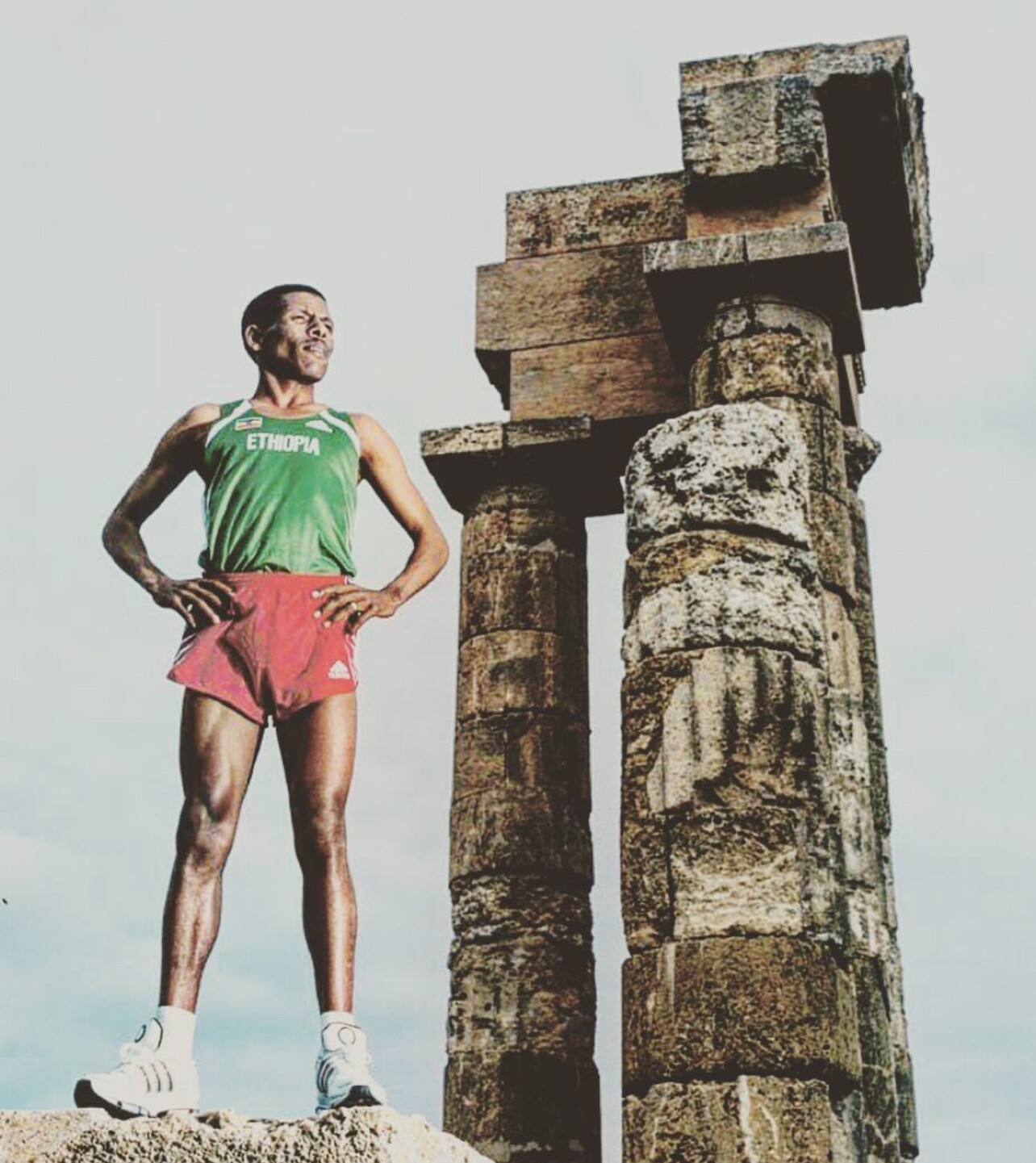
Diverse Business Ventures
Beyond hospitality, Gebrselassie has diversified his investments:
• Automotive Industry: He owns Marathon Motors, the exclusive distributor of Hyundai vehicles in Ethiopia. The company has also ventured into assembling electric cars locally, marking a significant step in the nation’s automotive sector.

• Coffee Farming: Gebrselassie owns a coffee farm in the Masha region of Ethiopia. The 1,500-hectare farm, known as Yeppo Village, includes 200 hectares dedicated to conservation forest land. The farm produces organic and Rainforest Alliance–certified coffee, reflecting Gebrselassie’s commitment to sustainable agriculture.
• Real Estate and Education: His investments include real estate projects and the establishment of educational institutions, such as the Ayelech Degefu Memorial School, named in honor of his late mother.
Leadership and Family Involvement
Gebrselassie serves as the Chief Executive Officer (CEO) of Haile and Alem International PLC, the parent company overseeing his diverse business ventures. His wife, Alem Gebrselassie, plays an active role in their joint business endeavors, contributing to the strategic direction and management of their enterprises. The couple’s collaboration extends beyond business, reflecting a partnership deeply rooted in mutual support and shared vision.

Continued Involvement in Athletics
Although Gebrselassie retired from competitive running in 2015, he remains actively involved in the athletic community. He serves as a mentor to emerging athletes and participates in various initiatives aimed at promoting sports in Ethiopia. His enduring commitment to athletics is evident in his business ventures, particularly his hotels, which serve as hubs for athletic training and events.
Haile Gebrselassie’s journey from an illustrious athletic career to a successful businessman exemplifies the potential of leveraging sports fame into impactful entrepreneurship. His ventures not only contribute to economic growth but also foster a culture of health and fitness, reflecting his enduring legacy both on and off the track.
Login to leave a comment
Exploring Different types of running and what is the best
The route you choose can make or break a run It can turn an ordinary workout into an adventure or leave you counting down the miles wishing it was over Over the years I’ve tackled just about every type of running route imaginable and I’ve realized that the layout of a run matters just as much as your shoes pace or playlist
This list focuses on the structure of the route itself not specific training methods like intervals tempo runs or fartleks It’s also not about surfaces so no debate here between grass sand pavement or trails And I’m not talking about hill work altitude training or anything else that complicates the joy of simply lacing up and heading out This is about the route you choose and how it shapes the overall experience
1 Point to Point The Ultimate Running Adventure (first photo with JR after our Coupa run)
Without a doubt point to point runs are my favorite There’s something satisfying about starting in one place and finishing somewhere completely different It turns a workout into a journey you’re not just running in circles you’re actually getting somewhere
There are really two ways to approach a point to point run Either you start at home and run to a destination or you get dropped off and run back home I enjoy both depending on the day and the logistics
One of my favorite routes back home in California is running from my house in Los Altos to the Coupa Café on the Stanford campus It’s about 7.2 miles but I almost always stop after 10k or sometimes even sooner and walk the last mile to the café. It's a great way to cool down before sitting down for coffee My wife Catherine often picks me up afterward or sometimes I arrange for a Uber to pick us up.
While in Portugal my go to point to point is running from our little village of Monforte da Beira over to the next village It’s a beautiful 12k or 74 miles and I often run it on Saturday and then walk it with some of our team on Sunday We always end up at a small café where we enjoy coffee water and maybe a little Portuguese pastry
Point to point courses also make for great races Take the Boston Marathon for example You take a bus to Hopkinton and run your way back into the heart of Boston Or the Fontana Half Marathon where you catch an early morning bus up the hill and run all the way back down
2 Loop A Run That Comes Full Circle
Loops come in second for me and for good reason You start and finish at the same spot without the boredom of retracing your steps If you pick the right route you get variety different scenery changing terrain and a clear sense of progress A well planned loop gives you the satisfaction of completion without the mental hurdle of knowing you’ll have to turn around and run everything in reverse
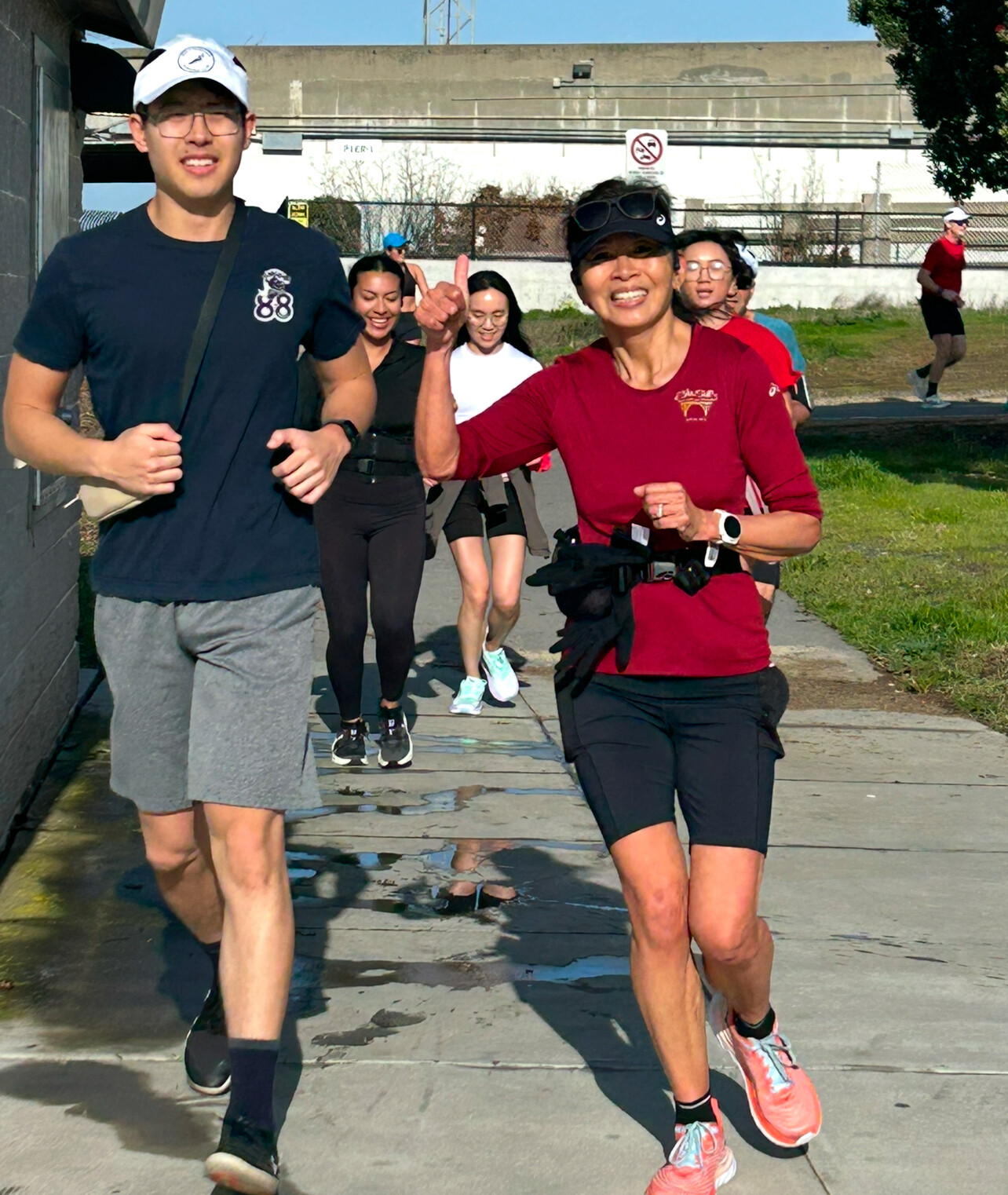
3 Out and Back Reliable and Straightforward (second photo 5.7 mile run with club)
Out and back runs are the workhorses of training I’ve done countless miles this way because they’re easy to plan and execute Pick a spot run halfway turn around and head home There’s a mental boost when you hit the turnaround you’re officially on the way back It might not be as exciting as point to point or a loop but it’s practical and sometimes that’s all you need
4 Laps Consistency with a Side of Speed (third photo doing intervals at Foothill College)
Lap running comes in fourth mostly because it’s more about training than adventure Most of my lap runs happen on a track but I’ve also done them around city blocks or larger circuits Laps are perfect for progressive runs where you pick up the pace with each loop The beauty here is certainty you know exactly how far you’re going even without a GPS watch It’s also great for mental toughness There’s something about pushing through lap after lap that builds resilience
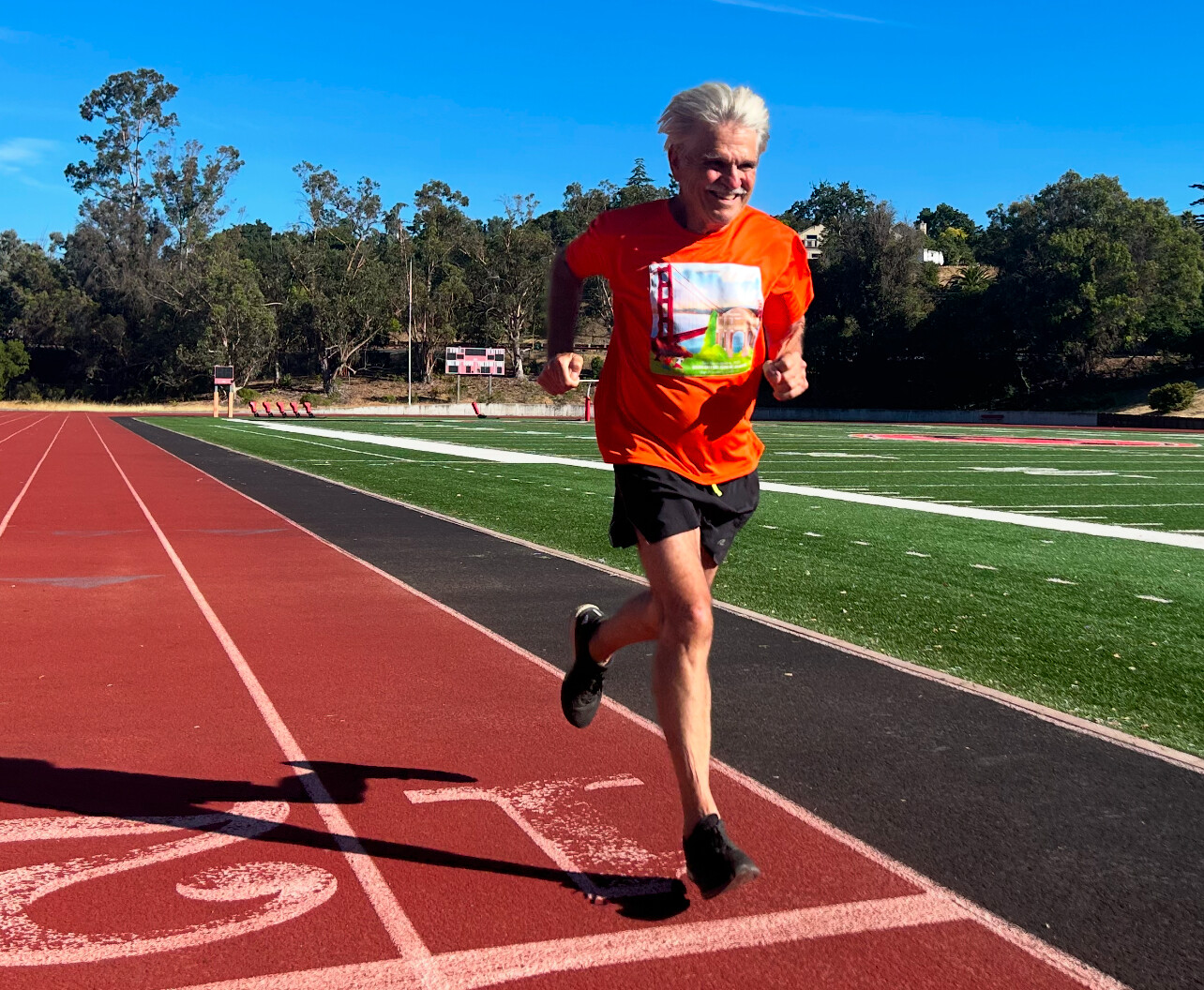
5 Treadmill The Last Resort
Technically treadmill running isn’t a route but it’s a type of running worth mentioning It’s my least favorite but I can’t deny it has its place I’ve probably only logged ten treadmill runs in my life and I’ve never quite mastered the form I always find myself gripping the side rails to keep balance That said I do remember one treadmill session in Quebec City It was freezing outside with four feet of snow so I hit the hotel gym and hammered out ten miles at a 620 per mile pace holding the railing the whole way It was my best treadmill experience but in general I’ll take the open road any day
In the end every type of running has its place Some days you need the adventure of a point to point run Other days a simple out and back gets the job done Whatever the route the key is finding joy in the miles After all the best run isn’t just about pace or distance it’s about how the journey makes you feel And if that journey ends with a good coffee and great conversation even better
by Bob Anderson
Login to leave a comment
Exploring a New City in an Hour: Parkrun’s Global Appeal
What defines the perfect trip to a new city? For some, it’s the thrill of discovering a charming café tucked away from the bustling streets, engaging with locals who share their culture and stories, or enjoying a leisurely activity that lets you experience the city beyond its typical tourist attractions. Imagine if you could achieve all of this—while staying active and seeing a slice of local life—in just about an hour. What’s more, it’s available in over 2,500 locations across more than 20 countries, and it’s completely free.
Enter Parkrun, the global mass-participation 5K running event that has become a staple for both seasoned runners and beginners alike. Founded in London, Parkrun celebrates its 21st anniversary this year, cementing its place as a unique initiative that combines fitness, community, and accessibility. For travelers who are short on time but keen on a meaningful experience, it’s an enticing proposition.
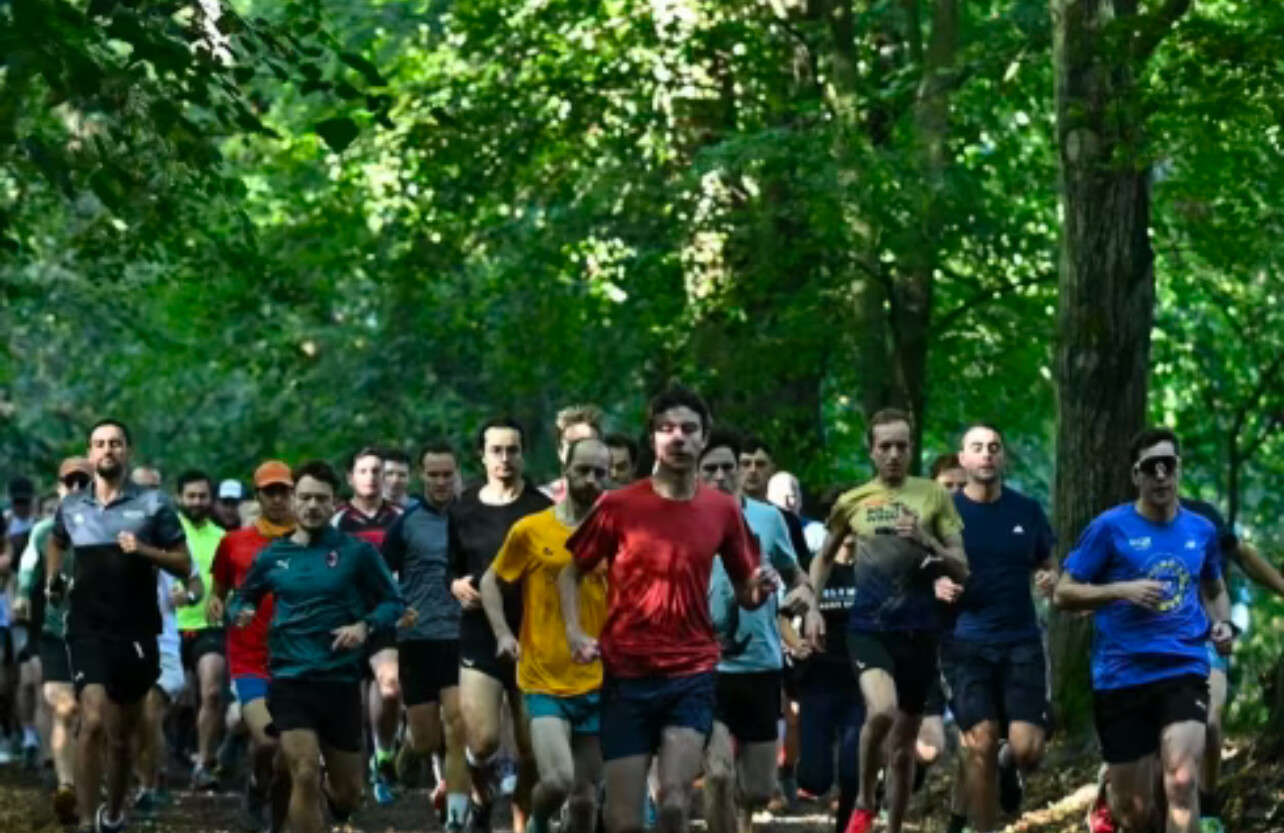
The Parkrun Experience
Participating in Parkrun couldn’t be easier. All it requires is a spare Saturday morning, a comfortable pair of running shoes, and your personalized barcode—a simple phone or watch-based system that tracks your performance across any Parkrun event worldwide. It’s a seamless way to stay active during your travels while engaging with locals and like-minded runners.
Each event follows a similar format: a 5-kilometer route through parks, forests, and scenic trails. Despite its name, Parkrun is inclusive of all abilities—whether you’re running at your fastest pace or enjoying a casual walk. The emphasis is on participation rather than competition. Many runners describe the experience as a celebration of movement and community rather than a typical race.
For travelers, Parkrun offers a chance to explore unique spaces that often lie beyond the standard guidebook recommendations. Whether it's a historic park in London, a scenic trail in Cape Town, or a beachfront route in Sydney, you’ll be immersing yourself in the local landscape.
Building Global Connections
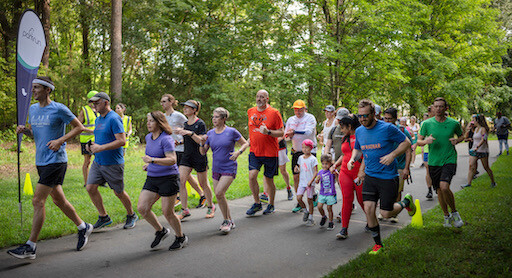
Beyond the physical activity, Parkrun fosters a sense of global connection. Every event is volunteer-led, with locals stepping up to organize, cheer, and support participants. This welcoming atmosphere gives travelers an authentic glimpse into a city’s culture and its people. You may even find yourself sharing post-run conversations over coffee at a nearby café, creating memories and connections that extend far beyond the run.
Regulars often say the most rewarding aspect of Parkrun is its community spirit. While some participants use it to track personal milestones, many simply relish the opportunity to be part of something bigger—a worldwide network of runners, walkers, and volunteers united by a shared goal of inclusivity and health.
Why Parkrun Matters
In a world increasingly focused on well-being, Parkrun has emerged as a pioneering model for combining fitness, mental health, and social inclusion. Studies have shown that running, even at a relaxed pace, can reduce stress, improve mood, and boost overall physical health. The no-cost and no-pressure environment of Parkrun makes it especially appealing to those who might shy away from more competitive or structured events.
For cities, hosting Parkrun events creates an opportunity to bring communities together, revitalize local parks, and promote active lifestyles. It’s no surprise that governments and health organizations often champion Parkrun as a key initiative for public well-being.
A Must-Do for Travel Enthusiasts
For the traveler looking to experience a destination in a unique way, Parkrun is a hidden gem. It’s a blend of fitness, community, and exploration that allows you to see a city from a different perspective. Whether you’re sprinting along a river in Tokyo or jogging through the vibrant greenery of a Dublin park, the experience is both grounding and exhilarating.
So next time you’re planning a trip, consider penciling in a Parkrun on your Saturday morning itinerary. Pack your running shoes, download your barcode, and get ready to explore the world one 5K at a time. Who knows—you might leave with not just a sense of accomplishment but also a story to tell and a friend or two from across the globe.
by Boris Baron
Login to leave a comment
Gift Guide for Runners: What Not to Buy This Holiday Season
Before you head to the running store for your holiday shopping, here’s a friendly reminder: even the most thoughtful gifts can sometimes miss the mark for the Runner in your life.
Don’t get me wrong—I appreciate any gift! After all, it’s the thought that counts. But when it comes to holidays and birthdays, I can’t help but worry that my friends and family might waste money on things I don’t actually need or want as a runner. Sure, there are plenty of runner gift guides (we’ve written many of them), but an equally useful article might be a guide on what not to gift runners. So, at the risk of sounding like a grumpy Grinch, I’ve decided to write one myself. Here are some of the worst gifts for runners, in my humble opinion:

1. Shoes
Just don’t buy me shoes. Unless we’ve had a long conversation about a specific pair I’m craving, or you’re replacing the exact same model that I’ve worn to the bone and I’ve raved about it repeatedly, it’s best to avoid. Runners are particular about their shoes, and everyone’s foot shape and running gait are different. Not all shoes fit the same. Instead, consider a gift card to your local running store, so your runner can pick out exactly what they want—no guesswork involved. Plus, you’ll be supporting a local business!
2. Novelty Running Items
This might just be a “me” thing, but I’ve received my fair share of “Eat, Run, Sleep” T-shirts, and they’re currently gathering dust in the back of my closet. Perhaps I’d have worn an “I Run For Wine” shirt a few years ago, but now, I can’t help but cringe at anything in that category—and I’m not alone. If you’re gifting running apparel, aim for something timeless, like a sleek, functional piece of gear that could be worn on any occasion. And make sure it’s made with running-friendly materials like nylon, polyester, or polypropylene. It’s a much safer bet than a “Running BC Therapy is Expensive” cotton long sleeve.
The same goes for running-themed non-running items. I have a Chicago Marathon mug I adore, but do I need another dozen mugs that say things like “Fueled by Miles and Coffee”? No. The same logic applies to wine glasses, dish towels, posters, etc.
3. (Bad) Socks
One thing many people don’t realize is that there’s a big difference between regular athletic socks and running socks. Sure, you might find tons of ankle-length Nike socks at big box stores, but running in cotton socks is a recipe for blisters, chafing, odor, and discomfort. Some runners are loyal to specific brands and materials, so buying socks can be tricky. If you’re unsure, though, aim for running-specific socks made from moisture-wicking materials like polyester, nylon, spandex, or wool. And if your runner cares about being stylish, make sure they’re crew-length. If you’re playing it safe, opt for fun, everyday socks (you can never go wrong with cat socks).
4. Sports Nutrition
As you browse the aisles of the running store, you might be tempted by the shiny stock of gels, drink mixes, energy cubes, and waffles. But before you buy, remember: if you don’t know exactly what your runner likes, don’t cave to temptation. Everyone’s stomach is different, and finding the right nutrition for long runs can take a lot of trial and error. Instead, consider gifting some high-quality dark chocolate or their favorite candy.
5. Cheap Fitness Watches (Yes, we mean Fitbits)
Many runners love their tech, but you can’t really find “cheap” alternatives to the high-performance fitness watches by brands like Garmin, Coros, and Apple. A Fitbit just isn’t the same as a running watch. It has limited metrics, less accurate GPS, and shorter battery life. If you’re set on buying a fitness watch, make sure your runner doesn’t already have one, and be prepared to invest in a quality model that meets their needs.
Not to Be a Scrooge
I don’t mean to be a Debbie Downer. There are plenty of fantastic, runner-friendly gifts out there, and I’m sure your runner will appreciate whatever you choose—just keep these common pitfalls in mind to make sure your gift hits the mark!
Login to leave a comment
You Have No Idea How Gross Your Water Bottle Is. Here’s How to Clean It.
As an active person, staying hydrated is one of your top priorities. Cleaning your water bottle should be high up on your to-do list, too, but for many of us—let’s be honest—it’s not.
This makes for a humbling (and gross) reality check when you go for a drink, glance down at your mouthpiece, and are forced to reckon with a film of mystery gunk that has collected there since the last time you washed it.
Due to busy schedules, forgetfulness, and a lack of extra tumblers, water bottles get nasty quickly. Although we love the sustainable choice of reusing one, that commitment requires some care-taking to avoid illness and maintain good water-bottle hygiene.

Below, experts dig into the dirty details and share their tips for keeping your water bottle safe and sanitary, no matter how many sweaty hikes or shared sips it endures.
What Types of Bacteria Are Lurking in Your Reusable Water Bottle?
According to the Water Quality Association, a not-for-profit organization in the water treatment industry, all drinking water contains microbes or heterotrophic microorganisms, a catch-all term for types of bacteria, mold, or yeast.
A September 2024 survey that swabbed water bottles found that the most common bacteria in reusable bottles were associated with antibiotic-resistant, hospital-acquired infections like pneumonia and meningitis (which can be fatal), and food poisoning, which comes with symptoms like vomiting and diarrhea.
The survey also concluded that Americans’ reusable water bottles, on average, contain 20.8 million CFUs of bacteria—about 40,000 times more than you’d typically find on a household toilet seat.
Exactly what type of invaders your water bottle collects depends on if it has a screw top with nooks and crannies for germs to stow away in, whether or not you share your bottle with others, or if you use it for anything other than water, like coffee or sports
Sugary beverages, in particular, leave behind nutrients for bacteria to feed on and multiply.
Drinking from a Dirty Bottle Can Make You Sick
If you don’t clean your water bottle properly, all kinds of bacteria can start to grow. Ingesting water from an unclean bottle can result in gastrointestinal or respiratory issues, says Qinchun Rao, a professor of Food and Nutrition at Florida State University.
How to Tell When Your Water Bottle Is Dirty
Acceptable levels of heterotrophic organisms, also known as heterotrophic plate counts (HPC), vary by country. The Environmental Protection Agency’s HPC standard for any given drinking water sample is less than or equal to 500 colony-forming units per milliliter (CFU/mL).
When your water surpasses that threshold, and/or other bacteria strains are introduced to the mix—like when a water bottle goes uncleaned after a workout—water safety is called into question.
You won’t always be able to tell how dirty your water bottle is. That’s a big reason cleaning them falls by the wayside: they “look” clean.
According to the Cleveland Clinic, more noticeable signs of contamination are visible mold spots, an unpleasant smell, cloudy water, or an off-putting taste.
Instead of waiting for it to show signs of grime, just get into the practice of cleaning it daily at a minimum.
However, if you fall behind and skip a few days, remain on the lookout for a tell-tale layer of dark slime known as a biofilm. It’s something that you will likely have to remove your lid and peek inside to notice, especially if it’s only
How to Clean Your Water Bottle
“Treat your water bottle like a utensil,” says Mitzi Baum, the CEO of Stop Foodborne Illness. If it’s dishwasher safe, she strongly recommends running it through a wash cycle.
Below are some more expert tips for water bottle washing.
Clean Your Water Bottle After You Purchase It
When you’ve bought your ideal water bottle, don’t race to use it. Baum says it’s important to clean and sanitize it with hot water before your lips ever touch it—because who knows how dirty its journey to the store was.
Wash Your Water Bottle Daily, and Do a Good Job
Rao recommends washing the bottle with warm, soapy water, especially if you use it frequently or for beverages other than water. (Reader: just rinsing the bottle under some running water doesn’t qualify as cleaning it.)
Clean Your Reusable Straw with a Small, Long Brush
Flushing the narrow spout with water won’t cut it. This is especially the case if your straw is plastic because, as Wu notes about plastic water bottles, they are most easily scratched and, therefore, more likely to harbor bacteria.
Regardless of material, straws are small and compact, making them the perfect hiding
If You Have a Water Bladder, Give It a Similar Treatment
Your hiking water reservoir can be treated like a giant water bottle. Soak it in hot, soapy water or use a cleaning tab, like the Bottle Bright Cleaning Tablets, scrub the inside (including the narrow drinking hose, which will require a slim, straw-cleaning brush), drain it, and rinse it well before refilling for the next adventure. During the soak stage, make sure to also fill the hose with cleaning solution.
Narrow-Neck Bottles Require Attention to Detail
Professor Wu points out that bottles with narrow necks make thorough cleaning difficult. Cleaning one efficiently might take a slender bottle-cleaning brush or, more simply, a soft sponge that’s easy to manipulate around its curves without missing any spots.
Don’t Forget to Wash the Outside
“People often carry their water bottle throughout the day and rest it on various surfaces,” says Dr. Mieses Malchuk, a board-certified family physician in North Carolina, like, for example, in a sweaty duffel or on a musty tree trunk. For that reason, cleaning the outside of your bottle with the same soapy water method matters.
The easiest way to keep your water bottle clean
Login to leave a comment
A morning cup of coffee could improve your running performance by boosting your confidence, study finds
If you don’t drink coffee on race day, it might be time to start. Countless studies have pointed to caffeine as an effective measure for boosting aerobic performance in endurance sports–but a new study shows that even the thought of coffee can improve your race day results. With expectations of enhanced performance, athletes demonstrated increased power output and focus with minimized perceived pain and exertion–even without any caffeine intake.
The caffeine placebo effect

Research has shown that physically, caffeine enhances function of the nervous system, delays fatigue, reduces perceived levels of pain and exertion, and can even offset the impacts of sleep deprivation.
The analysis of the caffeine placebo effect demonstrated that the benefits of your morning cup of java aren’t limited to physiological function, and confirmed that an athlete’s expectation of supplementation improves exercise performance outcomes. The study looked at performance effects, pain perception, belief-behavior relationship and attentional and arousal changes in endurance cyclists, comparing results between cyclists who ingested caffeine and cyclists who were given a placebo.
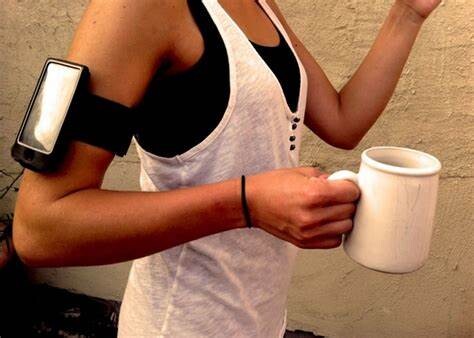
The subjects given a placebo instead of caffeine still experienced improved motor function, reduced pain, improved concentration and enhanced power and endurance. The mirrored caffeine benefits, resulting from only the belief that caffeine had been consumed, demonstrates the psychological value of drinking coffee.
The takeaway? Drinking your daily brew can subconsciously boost your expectations and confidence, which, in turn, can boost your performance.
When should I drink my coffee?
Don’t have a cup of coffee on an empty stomach. Eating food before consuming caffeine can help reduce the digestive issues the stimulant might trigger (such as having to go to the bathroom).
Caffeine is completely absorbed within 60 minutes of consumption, and while it can begin to kick in after five minutes, most individuals experience its peak effects after 45 to 60 minutes. It is recommended to drink your coffee about an hour pre-race so it can deliver its full stimulating effects in time for your event, allowing you to fully take advantage of its benefits.
Studies recommend caffeine intake around 94-150 mg or six mg per kilo of body weight, reaching a maximum of 400 milligrams per day. After peaking, coffee’s effects can take up to six hours to wear off.
Alternatives to coffee
Not a coffee fan? Black tea, green tea, energy drinks and caffeine pills allow you to reap the benefits of coffee without having to drink it. Be aware that tea has less caffeine than coffee, and energy drinks and supplements usually have considerably more.
by Cameron Ormond
Login to leave a comment
How to Make Your Walk a Workout
Trying to get more steps in? Use these strategies to level up your activity.
IF YOU'RE JUST starting your fitness journey or looking for ways to be less sedentary outside of your sessions in the gym or runs on the road, the best move you can make is taking a step. We’re talking about walking, the simplest, lowest-impact, and most underrated activity that can improve your physical and mental health while burning hundreds of additional calories.
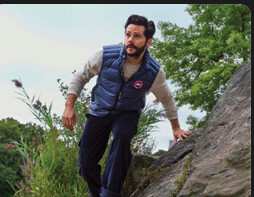
No form of exercise is more intuitive to the masses than walking. Still, it can be challenging to find the time to increase your step count in this desk-bound, couch-loving world. If you walk often without much thought, you might find that going back and forth along the same path at the same pace becomes boring.
To help you up your steps and keep your walks interesting, we consulted Michele Stanten, the former fitness director of Prevention magazine, a walking coach, and the author of three books about walking, including The Walking Solution: Get People Walking for Results.
Why Should You Do Walking Workouts?
Going for walks is an exercise that you can do anywhere with no equipment; all you need is a great pair of walking shoes (and maybe a podcast). Walking is free
Improved Mental Health
If you want to fortify your mental health, a 2020 study found that those who took regular walks reported better emotional health than those who didn’t. Born on TikTok, the silent walking trend, where you walk free of distractions, can be a great way to unplug, experience a sense of calm, and be alone with your thoughts.
Similarly, Stanten has noticed some anecdotal social and mental benefits to walking outside more frequently.
“I think there are benefits to getting out and seeing the world at a different pace. It’s a chance to meet your neighbors; I walk my dog, and I’ll end up meeting people that way,” she says. “Walking is a great way to have tough conversations because you're walking side by side…and doing something that makes your body relax and feel better. So if you're having to have a difficult conversation, you're putting yourself in the best position to do it—whether that's with your kid, a spouse, or a coworker.”
Weight Loss (and Maintenance)
Walking is also a powerful weight loss and maintenance tool. Going for walks increases your NEAT (non-exercise activity thermogenesis), which accounts for the calories you burn throughout the day outside of intentional exercise. Weight loss is a numbers game: You need to burn more calories than you consume. Eating in a caloric deficit is crucial, but increasing your NEAT means you’ll burn more calories throughout the day, so you’ll lose weight more quickly and/or consume more food while still losing weight. A study published in the Journal of Nutrition found that among a group of 82 dieters, those who added two-and-a-half hours of weekly walking to their routine lost significantly more weight than the diet-only group.
Better Health Markers
Weight loss aside, walking can improve your overall health and reduce your all-cause mortality rate. A study published in the British Journal of Sports Medicine 2024 observed data from the UK Biobank on over 70,000 participants. The researchers concluded that any number of steps over 2,200 was associated with lower mortality and cardiovascular disease risk and that a step count between 9,000 and 10,500 daily steps best counteracted high sedentary
COUNT YOUR STEPS
You may assume that walking outside is an automatic de-stressor, but that’s not always the case. “I like to count my steps because it prevents me from thinking about all the stuff I have to do or ruminating over an argument I had.”
Try counting your steps on your route. Start by doing 50 fast steps and 100 slower steps for the duration of your walk.
WALK + STRENGTH
Stanten suggests adding strength exercises into your walking routine.
Try this: Start a timer and begin walking. At the top of every other minute, stop and do a set of an exercise like pushups, squats, lunges, or resistance band presses for five to 10 reps. After your set, begin walking again and then do another exercise at the top of the fourth minute. Be sure to cycle through a handful of different exercises.
BEAT YOUR TIME
Another strategy Stanten suggests, especially if you’re new to walking for exercise, is to pick a set distance or route.
Gamify your outing by challenging yourself to a race. Each time you go, try to cover that distance more quickly than your last time through. You don’t need to push yourself too
Park That Car
Try walking to any location a mile or less away from your home—your local coffee shop, laundromat, or gym. Not every walk needs to be an intentional workout. Your entire day factors into your step count, and errands can add up to thousands of additional steps.
Login to leave a comment
I Forced Myself to Run Early Every Morning, Now I've Learned to Love It
It turns out that getting up early can have some surprising benefits.Though it goes counter to the preferred doctrine, I tend to thrive on less than eight hours of sleep. I’ve been a night owl most of my existence, and usually only get five to six hours of shuteye. There’s always a good documentary to watch, a game late at night, or a comedy to binge before going to bed.
But I’ve never really worried about it, because being productive in the morning has never been an issue, whether I’m doing chores around the home or (before working from home was the norm) getting in to the office early to get ahead.

Several years back, however, there was one thing I’d never been able to master because of this type of schedule: morning runs.Any time I vowed to wake up for a morning run, telling myself I’d feel great the rest of the day, I would either turn off the alarm, or I’d groggily stumble out of bed and run the equivalent of “junk miles” during a crappy outing.But when work and my personal life started conspiring against me, it made my typical routines crumble. At the time I was training for a marathon, and while I would normally schedule several days a week for lunch runs—a perk that comes with the job here at Runner’s World—my afternoons had been tied up with other tasks.
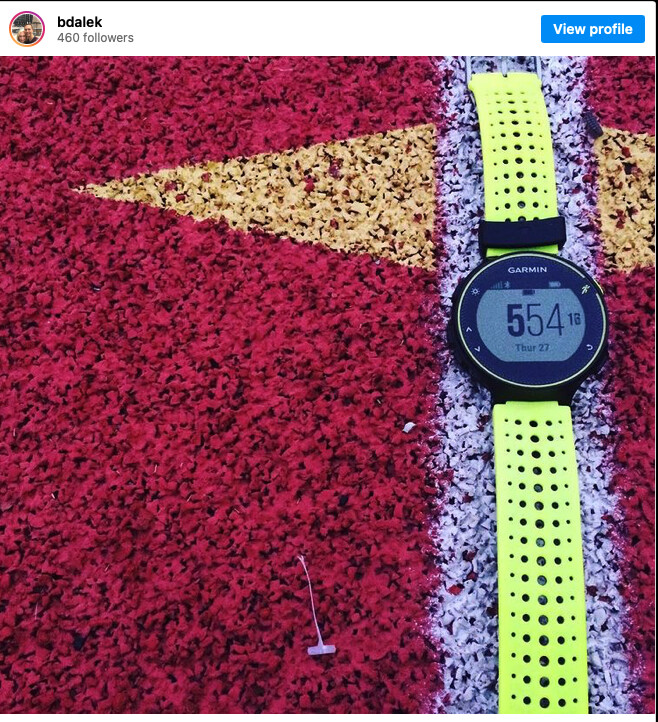
Sure, I could have tried running at night, but that is sacred late-night TV time—a guy needs to relax. No, if I wanted to get in my training, morning workouts were the only real option.
So I tried an experiment and committed to trying to master the morning run for 15 days. The goal was to have all easy-day runs completed well before 8 a.m. (when I start work) and my weekend long runs to start no later than 7 a.m.
I was able to wake up every day from mid April until the end of the month, but the process wasn’t always easy. Along the way I learned what works for me, what doesn’t, and some little tricks that could be helpful for all runners. Here’s how it all played out a few years back.That Little Problem of Waking Up
Unlike the “Upside Down” from Stranger Things, early mornings are not some unknown world that I have never experienced before. I’d always done my weekend long runs early-ish, and during a few marathon training cycles, the only time I could regularly plan my speedwork was on Thursday mornings starting at 6 a.m.
I’d been doing these 6 a.m. workouts on a local college track for most of the year in either blustery, frigid cold, or snowy conditions. It’s the type of weather where it feels difficult to really open up for a true hard workout. Oh, and the field lights were never on. But it was somehow lovely, and gratifying to finish these hard runs in the dark, in absolute solitude, as undergrads in nearby dorms remained asleep.
So “Thursday morning speed workouts” and “Saturday morning long runs?” No problem. But that’s because I spent time developing that habit. I feared that getting up Monday morning to do 4 miles knowing I had to do the same thing every other day that week would be more problematic.
To make this experiment work, I decided to mimic my Thursday morning routine for weekday runsSo the mission became clear: each night before going to bed, I would plan out my run and route, put out workout clothes, and prep my lunch—and the coffeemaker if I wanted some for after the run. That way I wouldn’t need to make any of these decisions from the depths of a morning fog. Oh, and I needed to find a better way to make the alarm actually jolt me awake.
The last part was the trickiest. The only way I could mentally get past hitting the snooze button was by keeping a hand on my phone when I woke up. If I jumped into an app—my email, calendar, bank account, or morning newsletters—the stimulation and blue light was just enough to jumpstart my mind/body connection, and for me to swing my legs out of bed.Off I went.
Figuring Out My Stomach
Being unfamiliar with constant morning runs meant I was also not so familiar with how my gut worked that early. This was especially true in the first few days of my morning-run venture. On each of those initial runs (besides the very first, where my body was familiar with doing speedRest Days Should Feel Easy
One big stumbling block for the morning run in the first week of this experiment was simply adjusting to how I felt trying to shake off the rust and head out the door immediately. The five minutes it took me to brush my teeth, put in my contacts, and get dressed for a run wasn’t enough to fully adjust to being up. Maybe my brain was starting to fire on all four cylinders, but my body wasn’t.My knees and quads often felt stiff as I went out on what should have been an easy three to five mile jaunt, and my legs felt like rusty pogo sticks jerking up and down over the road. I typically hit a 7:30 mile pace when I do my easy day lunch runs, but getting past the 8:00 minute mark became a real struggle.
After a few days, I came to the realization that this might not be the worst thing. One article spelled out the training qualities that often lead to Boston Marathon qualifying times for runners. One of my biggest takeaways? People who spend too much of their time training near that BQ-pace standard end up NOT qualifying in the end. However, when male runners saved their hard workouts (speed sessions or long tempo runs) at their goal pace or faster—about 15 percent of their total training—they had far more success.
So backing off my speedy pace actually wouldn’t be the worst thing in the world. With the ability to ignore the beeps of my Garmin, I noticed that I could take in my surroundings much better. There were breathtaking skies as theThe Lightbulb Moment
I had forgotten that when I do my Thursday speed workouts on the track, I am awake for at least 30 minutes driving to the stadium. Plus, I had learned to force myself to warmup for at least two miles before trying to hit my intended paces.
As I got through that first week waking up each morning, I settled into a 5 a.m. wake up schedule, getting out of bed by 5:15 and out the door after at least 30 minutes. Nothing was changing when it came to running near my normal training pace for anything but a speed effort.
For the biggest long run of my training cycle, I needed a new plan of action.
After reading about one bizarre way to train for the morning of a race—wake up, give yourself some time to sit around, grab a bite to eat, and get that final bathroom stop in—I decided to plan out one weekend long run just as I would for my race nearly a month out. For my scheduled 7 a.m. race, that meant rousing myself out of bed around 5 a.m., taking a quick shower, and getting a smallAnd I nailed this long outing. Having the extra time to wake up and prep was a hidden X factor that I never thought would be so beneficial, and I kept to the same script two weeks later on another long run.
But there’s also the fact that my body—now more adapted to the routine—was starting to actually like these morning runs. If I wanted to run again at lunch or in the evening, I knew that I could. (And because most days were easy, it was never taxing on my legs.) This made my days less stressful overall, because if something came up that would normally keep me from a workout, I knew that I had already logged my miles.
I’m surprised to write this, but when the two weeks were over and the spring mornings brought a little more light each day, I still wanted to do most of my runs before 7 a.m.
What had I become?
I can proudly say that since 2017, this test turned me into a pretty dedicated morning runner. Whenever I can now, I get up and out the door when the traffic is light around my home and the
by Runner’s World
Login to leave a comment
How to Plan for an International Marathon
AS RUNNING BOOMS and participation rates rise at races everywhere, people are looking to expand beyond their local fun runs for next-level experiences. International marathons in major cities—especially the six “World Majors” of Boston, Tokyo, London, Berlin, Chicago, and New York—have attained bucket list status on par with the most exotic vacation destinations, and more competitors are trying to join in than ever. More than 840,000 people submitted entries to the 2025 London race (for only about 50,0000 bibs), and the recent 2024 Berlin Marathon broke the record for the largest field ever with 54,280 finishers. I was lucky enough to be one of them, thanks to a comped bib from event sponsor Adidas. The atmosphere on the course was electric, and as I legged my way through the streets of the German capital, I couldn’t help thinking that it might be the best way to experience a foreign city.
But gaining entry into one of these races is just the start of a complicated process—and I’m not only talking about the months-long training program (most start at about 16 weeks out) athletes need to prepare for a marathon. The average holiday trip doesn’t involveWhen I set out to run Berlin I had finished three other marathons, but had never raced outside the US. I knew I’d have to take some extra effort, since factors like the time change, language barriers, and even the lack of familiar foods in local stores could throw off my routine right before the big day. But I wasn’t exactly sure about the best way to go about building an itinerary, so I turned to some experts so that my bucket-list race wouldn’t end in disaster. How to Plan for an International Marathon

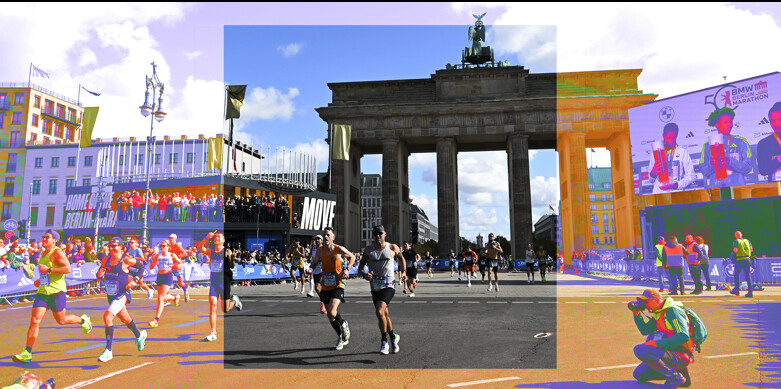
NO MATTER HOW well-prepared you think you are to run a marathon fitness-wise, traveling to another country to compete will be a challenge, says Jessie Zapotechne a NYC-based performance coach and US community leader of Adidas Runners. She has run the Berlin Half and Marathon multiple times since 2012, and says she uses her experience from all those races to counsel runners for their own jetset trips. “To be quite honest, I think about these tips because of all the mistakes I've made over the years,” Zapotechne says. “That helps me to be a better coach from learning the hard way.”
Tommie Runz is a content creator and runner from Detroit. While there are events in his local area, almost all of his races have required travel. “I've done 14 marathons, and only one of them was in my state,” he says. Since we spoke, he added another to that list (Chicago), and he’ll finish out the season with New York City, hitting all six Majors in 2024. He’s also vegan—so he understands the challenges that come while traveling for anyone who has dietary restrictions.
These experts have consideredHaving those extra days will be important to allow you to recover from the flight, adjust to time and climate differences, and set yourself up for a good night’s sleep ahead of the big day. Less practically, an earlier arrival will give you a chance to take part in as much of the marathon experience as you can.Zapotechne also advises that you make one other early booking to avoid last-minute scrambling and high costs: dinner the night before the race. Aim for carb-heavy meals that won't upset your stomach, so resist the urge to try a new type of cuisine, even though you're in a foreign city. “Find a place that's nearby or accessible [to your hotel] so that you're going to have an early dinner and get back to your hotel, get off your feet, and have all your stuff ready,” she says. Aim for a sit-down meal two or three hours before you plan to go to sleep. "You don't want to have a late night dinner before your race," Zapotechne cautions. "You [might still be] digesting it in the morning, or [maybe] you can't go to the bathroom in the morning because you ate too late. And that's never fun."
Race Gear Gets Packing Priority
One of the most common marathon truisms is “nothing new on race day.” You’ll put that to the test if you show up to your destination and your checked bags containing your race day kit don’t. Limit the chances of gear emergencies by making sure yourOnce you’re on the ground at your destination, don’t ditch your bottle so quickly, either. “Definitely carry your water bottle around with you when you are out and about in that city—not every country drinks a lot of water,” Zapotechne notes.
In Berlin, for instance, I was surprised to find that normal still water isn't always easy to find. I constantly found myself making extra requests in restaurants or sorting through bottles of sparkling water to stay hydrated. International races often offer fewer aid stations on the course than American events—every three miles, rather than every mile, according to Zapotechne—so if you’re the type of runner who needs a drink before the three-mile marker, she advises starting the race carrying a bottle, too. Sleep Smart—and Be Ready for the Time Change
Sleep might not be your main concern when you’re trying to enjoy every bit of your time in another country, but you’ll need plenty of it for the long run. Similar to hydration, you should aim to start off your trip on the right foot even before you’ve left. “If you know you're not a great sleeper during travel, try to sleep a lot the week before, so that you're already getting your body ready for wonky travel sleep,” Zapotechne advises. There's no magic number for everyone, but try getting two or three extra hours in the days leading up to the flight if you can.
Along these lines, you’ll have to adjust to a different time zone, which can be jarring especially if you don’t travel often. “You have to almost start being aware of the time change before you even leave,” Runz says. Try going to bed and waking up to match that time zone for a day or two before the trip to acclimate. Then if your flight lines up with night time at your destination, he recommends you use the trip to get extra rest. “Take advantageThe actual number will depend on the person, but she says that range will still allow you to take plenty of time on your feet for stuff you need to do, like visiting the expo to pick up your bib and even for a short shakeout run, since you will need to loosen up after the flight and get acclimated ahead of the race. Just don’t go overboard, and avoid extraneous steps by taking a cab instead of legging it or standing in long lines at tourist traps. “Danger Zone for sure is when you're getting close to 20,000. That's too many steps,” she says.
I was able to go to a Saturday shakeout run within this structure, but skipped out on walking to the Brandenburg Gate before the race when my steps creeped up near the 10K mark. When I wanted to meet a friend for coffee, I rode a bike the mile to the café instead of hoofing it on foot.
If you’re at an impasse and struggling to fit everything you want to do before your race, that might be a sign to plan time for sightseeing after you run. “If you are going to plug inAlongside real-time translation, some apps like Google Translate have features that can use the camera to translate text, so you’ll be able to decipher what exactly is on a nutrition label. You’ll have an easier time getting last-minute fuel without something you can’t eat if you’ve taken the step to download the app (and download your destination’s label for offline use, too) ahead of time. Read the Forecast, But Plan for Anything
Weather can be a challenge anywhere, but you’ll especially need to be mindful of the conditions ahead of your race. “Make sure to check the weather in the city you are traveling to a few days in advance—and prepare that weather can change when you arrive, so pack clothing for all types of weather,” she says. You can get a decent idea what the conditions will be at three or four days out, but even a rough 10-day forecast will be useful if your itinerary is on the longer side. “Also make sure to put a warm or comfortable change of clothes and slides in your checked back for after the race, as you'll want something comfortable to change into after running 26.2,” Zapotechne advises.
Don’t get too distracted by high temps, either. You’ll need to also keep an eye on what the lows are slated to be, especially considering that you’ll probably need to leave for the corral early in the morning when the full heat of the day will still be hours in the future. You’ll likely spend more time outside when it’s colder—while trying to conserve yourThis was especially important in Berlin, and I almost missed my wave because I didn't heed this advice. The race organizers had worked to make it the biggest marathon of all time—and in doing so, the staging area was a madhouse. People were packed in small areas, and signage wasn’t always clear. I arrived at the crush of people 15 minutes ahead of the gun, and found myself pushing through the crowd and climbing over barriers to get to my proper pace group. That took up a lot more energy and effort than I wanted before I was slated to run for three-plus hours.
Ultimately, it’s up to you to get to the starting line. Runz knows there are no hacks once you near zero hour and everyone is raring to go, especially as running has grown so much over the last few years. “Every race is going to be like this—until the streets get bigger,” he says.
by Men’s Health
Login to leave a comment
What the elites eat: Marathon Edition
Curious about what elite marathoners eat to fuel their peak performance? From carb-loaded pre-race meals to post-race burger feasts, here’s an inside look at what the elites eat before, during, and after a marathon.
As runners and human beings, we’re naturally curious, slightly nosy people. With information instantly available with the twitch of a finger across our iPhone screens, this curiosity has never been easier to satisfy. Plus, many of our favorite runners are more transparent than ever about their training blocks, pulling back the blinds through social media to show what it takes to be the best. Which is why we’re ever-fascinated by the race-related nutrition strategy of elite runners, who often perform at superhero-like levels.
We asked a few elite marathoners what they eat surrounding race day—pre-race dinner, pre-race breakfast, and post-race celebration—so you don’t have to.
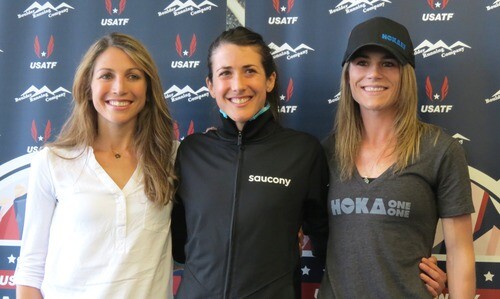
Note: One sentiment echoed among all of the athletes interviewed was that their diets are personal and have gone through lots of trial-and-error to be finessed to their specifications. No lifestyle should be replicated exactly.
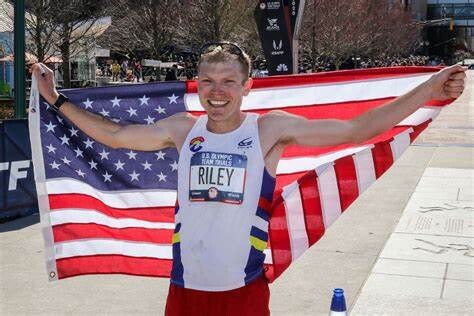
35, Boulder, Colorado
About him: First American and ninth overall finisher in the 2019 Chicago Marathon (2:10:36). Placed second at the 2020 U.S. Olympic Trials Marathon (2:10:02); Finished 28th in Tokyo Olympics marathon (2:16:26). After a second round of double Haglund’s surgery in 2022, he’s back in top form and running the 2024 New York City Marathon on November 3.
The night(s) before a race:
“I start thinking about meals two nights out, and I go carb-heavy on both. For the first night, I like to have Thai food, usually a noodle dish, and a side of rice. The only thing I’ll really avoid is spice since I’ve had issues from it a couple times. The night before, I do pasta, usually a marinara (that’s what a lot of races provide for the elite athletes), but a good pesto sauce works well, too. I mostly stay away from the creamy sauces. I don’t like to get too much more specific—you never know exactly what’s going to be available, so I try not to make particular foods part of my routine.”
Race morning:
“Race mornings I’ll get up at least three hours before (I prefer four, but with 7 to 8 A.M. starts, that becomes a little counter-productive), I’ll go for a short walk with some skipping or something, just to get the body moving. My first choice for breakfast is oatmeal with peanut butter, honey, and a little fruit mixed in. And at least one, usually two cups of coffee. It’s not something to avoid, but I recommend making sure that you have more than just simple carbs (cereal, muffin, etc), I find that if there isn’t at least some protein, I start getting that ‘empty’ feeling during my warmup, and if that mixes with the adrenaline, I feel real queasy. If I’m taking gels, I take one on the start line, maybe five minutes before. I also like Generation UCAN, which I’ll sip as I’m going through my drills, maybe half an hour out.”
During the race:
“I like to get my calories from gels and have just electrolytes in my bottles. Most major marathons provide drink stations every 5K, and I’ll drink about 8-10 oz of SOS per bottle (there can be splashing, and you never get it all out). I’ll take Roctane gels before every other drink station (every 30 minutes or so).”
Post-race meal:
“Most races I want a hash—lots of potatoes with some eggs, bacon, cheese, and veggies all mixed up, but after marathons my stomach takes a while to settle down, so I’m more in a lunch mood. So my go-to post-race meal is a big bistro bacon cheeseburger, ideally with an onion ring and barbecue sauce, side of fries, and a beer. I mostly stay away from fried foods during a build up, but I always take at least a week off after a marathon and at this point, that beer and burger is almost a Pavlovian ‘vacation time’ signal for my whole body.”
41, Flagstaff, Arizona
About her: She’s the fourth-fastest American woman in history based on her personal best (2:20:2) at the 2020 Marathon Project; Second-fastest American female half-marathon runner and former American record-holder (1:07:15). Most recently, she was 18th overall and the women’s master champion in the 2024 Chicago Marathon (2:30:12).
The night(s) before a race:
“Rice with chicken. I skip the veggies to not risk having to make a bathroom stop in the race.”
Pre-race breakfast:
“Two scoops of UCAN energy powder with whey protein, and a little bit of almond butter.” Bonus, Hall credits her husband, Ryan Hall, as being the best coffee maker, brewing pour-over, medium roast coffee blended with butter.
During the race:
Ketone-IQ—peach flavored.
Post-race meal:
“My favorite post-meal race is Thai food. I’m usually eating a lot of boring food before the race, so I want something spicy and more flavorful after.”
Bonus—Lunch during training blocks:
“Two scoops of UCAN powder, two pieces of gluten-free bread with Kerrygold Butter.”
36, Boulder, Colorado
About her: Won the 2019 Grandma’s Marathon and finished ninth in the 2020 U.S. Women’s Olympic Trials Marathon in 2:30:39. She was the top American finisher in the Boston Marathon in 2021 (fifth, 2:27:12, ) and 2022 (10th, 2:25:57). In January, she placed ninth in the Houston Half Marathon in a new personal best of 1:08:52.
The night(s) before a race:
“I always have the same thing. Basically, a couple cups of white rice and a chicken breast is where I tend to fall. White rice is going to fuel the most carbs per serving. I used to mix up potatoes and white rice, but for me, I digest white rice well, I feel better, it’s easy to find, simple, and works well.
I don’t care about spices—and I’m usually not making it myself if I’m not at home. Typically, before races, there’s a pre-race dinner, and chicken is an option. I wouldn’t do any cream-based sauces. If it tastes good, great. If it doesn’t, great. I don’t care.”
Pre-race breakfast:
“Typically it’s oatmeal with a tablespoon of peanut butter, a banana, and maybe honey. I’m not 100 percent satisfied with my pre-race meal, because sometimes it can feel a bit heavy in my stomach, because oatmeal does have some fiber. So I try to play around with things. Sometimes I’ll do a couple pieces of toast with a banana and peanut butter. I can switch between those two. Try to get 500-600 calories in, mostly from carbs, two-three hours before the race. Plus, I drink coffee with half-and-half.
Post-race meal:
“Immediately after the race, I honestly will grab whatever is available. Typically, after a race, we’ll be shuttled to a post-race holding area where you’re waiting, so there are usually refreshments there. I’ll slam Gatorade—anything with sugar and electrolytes. Maybe there’s my own bottle with Skratch in it. Banana, a protein shake. I’m pretty open, as long as it’s immediate.
And as far as later, it completely depends. I’m trying to do a better job at this—especially after a major marathon—but it kind of takes a while. You might get drug-tested, then shuttled back to your hotel, shower, then six hours later you’re like, ‘I need to eat.’ If it’s a marathon, I love a big burger with fries—the classic stuff, lettuce, tomato, onion, and tons of ketchup and mayo. That’s something my body would crave. Fries are my favorite food ever that I don’t typically eat during a marathon cycle.”
35, Louisville, Colorado
About her: Finished sixth in the 2017 London Marathon (2:25:38), seventh in the 2019 New York City Marathon (2:28:23), eighth in the 2019 Chicago Marathon (2:29:06), eighth in the 2021 New York City Marathon (2:27:00). Most recently, an Achilles injury forced her to pull out of the 2024 Chicago Marathon days before the race.
The night(s) before a race:
“I do 72-hours of carb-loading. So, obviously, in the build to that, carbs are key. Three days out from the race is when I start it. It is always the same. The night before, I have pasta with marinara sauce, and I don’t do a lot of protein with that. I do love angel hair, that’s my go-to. I also like rigatoni. Plus, I’ll have some type of bread and salad.”
Pre-race breakfast:
“The morning of, I always do a plain bagel and peanut butter with a banana. I’ve done that since high school. And I do an Americano with two shots. I eat that threeish hours out from the race.
During the race:
“I’ll take my first gel 15 minutes before the start of the race. I’ve been all over the place with what I take, but right now, Neversecond. Big fan of their Cola C30 gels. They worked wonders for me during this build. I had some stomach issues earlier in the build with long runs and couldn’t quite figure out what was going on, so I switched up my nutrition during, so never second has been a godsend.”
Post-race meal:
“After the race, it’s hard because usually my stomach is a mess. Not only did you just run really hard for two and a half hours, but you’re taking all this fuel during, so I have a really hard time eating solids immediately after the race. My choice if I can get it is soda. I’m not a big soda drinker, but after a marathon, all I want is a Coke, Sprite, or Ginger Ale. I’m always really thirsty when I finish.
Then later when I feel like eating, I always do a burger (stacked with all the fixings—sometimes adding bacon) and sweet potato fries with ranch. I never opt out of Ranch. Anything I can dip ranch in is a plus for me. And I order a Blue Moon. I’m not a beer drinker, but that’s what I want after a marathon.”
by Mallory Arnold
Login to leave a comment
How Much Caffeine is Too Much Caffeine? Here's What a Sports Nutrition Expert Says.
There's no denying caffeine can take the edge off when things get dicey in a race. Many endurance athletes turn to the world's most popular drug for a performance boost, and with a long list of caffeinated gels, beverages, and chews to choose from, a turbocharged buzz is only a swallow away. But is it possible to take in too much caffeine during a workout or a race?
Well, yes-as with anything, too much can be harmful, and not everyone responds to caffeine the same way. But to get more specific, let's dive into what science says about how much caffeine to an athlete actually needs, the point of diminishing returns, and how to use it wisely in training and racing.
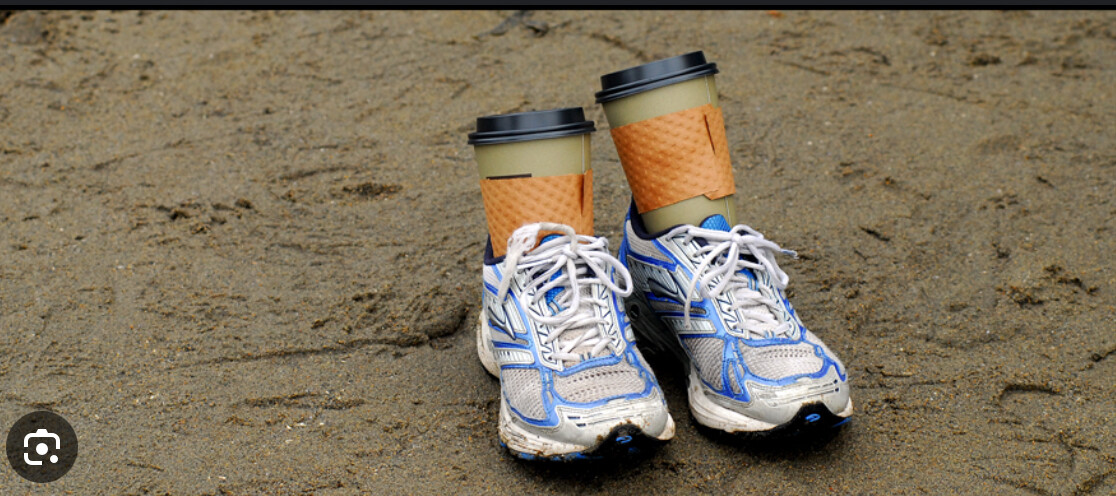
What is caffeine, and how does it help your workout or race?
Caffeine naturally occurs in coffee beans, tea leaves, cocoa beans, and cola nuts. It is also synthetically produced and added to sports gels, chews, energy drinks, sports drinks, chewing gum, and dietary supplements.
Caffeine stimulates the central nervous system (CNS) by blocking adenosine receptors in the brain, reducing perceived effort, delaying fatigue, reducing pain, and improving mental focus, attention, and motivation. These benefits apply broadly across sports, from sprints and endurance events to team sports and strength training. It's no wonder many athletes feel skipping their pre-exercise coffee puts them at a performance disadvantage.
However, the physiological response to caffeine is highly individual. While most athletes experience a performance boost to varying degrees, some are caffeine-sensitive due to genetic variations that affect the breakdown rate. These variations explain why some people experience adverse side effects at very low doses and cannot tolerate caffeine, while others can drink coffee late in the day and still sleep well.
Caffeine dosing, delivery, and side effects for endurance athletes
Caffeine peaks in the bloodstream 60 minutes after consumption and has a half-life of approximately five hours (the time it takes the body to break down 50% of it).
Interestingly, synthetic caffeine is absorbed faster by the body and thus takes effect faster than its natural counterpart. Most caffeinated sources, such as coffee, sports nutrition products, and tablets, are absorbed through the gut, pass by the liver, and enter circulation before affecting the CNS. However, caffeine from chewing gum is absorbed directly through the lining of the cheeks inside the mouth, bypasses the liver, enters the bloodstream within 5-15 minutes, and peaks by 25 minutes.
The recommended dose for a performance boost while minimizing side effects is a moderate 2-3 mg/kg of body weight. Higher doses of 5-6 mg/kg of body weight do not further enhance performance, but increase the risk of side effects. Those side effects include headaches, increased anxiety, irritability, rapid heart rate, dizziness, nausea, tremors, elevated blood pressure, insomnia, and gastrointestinal distress. Overconsumption or improper use can lead to severe consequences, including arrhythmias and potentially death.
Login to leave a comment
The Incredibly Specific, Occasionally Gross Food We Eat to Fuel Our Ultras
The strangest and most distinct snacks we can’t live without when we’re on the trail all day The Ultra-Trail du Mont-Blanc (UTMB) World Series Finals kick off on August 26 and run through September 1. The annual finale is made up of three races: the Ultra Trail du Mont Blanc Orsières-Champex-Chamonix (50K), the Ultra Trail du Mont Blanc Courmayeur-Champex-Chamonix (100K), and the classic UTMB (100M), across France, Italy, and Switzerland.
Sure, crowds come for the world-class athletes and spectacular views of the Alps, but, some might argue, another big draw is the food—and even the race participants get a taste on the course. Much of the fuel at aid stations are sourced from nearby communities, who bring their best. Think: locally made croissants, bread, cheese, and prosciutto.
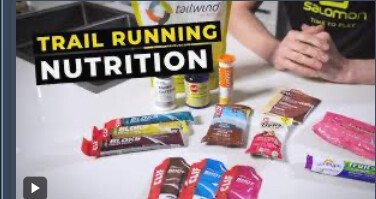
But for those of us who haven’t had the pleasure of running by tents filled with freshly baked French baguettes on our long runs, here’s the weird, the specific, and the sometimes gross on how we fuel our adventures.
On a 13-hour, nearly 10,000-vertical foot ridge scramble/romp through the high peaks in New Mexico a few years ago, I fueled with the food of the gods: birthday cake in a bag. I had somehow scammed my way into having three cakes at my birthday dinner a few nights prior and figured the calorie-to-weight ratio of buttercream frosting couldn’t be far off from Gu. So I cut a generous piece of birthday cake, put it in a Ziploc, and stashed it in my pack. By the time I went to eat it, it had lost all structure and I could easily squeeze it directly into my mouth from a hole —Abigail Barronian, senior editor, Outside
The last time I ran 100 miles, it was a self-supported multi-day journey through the English countryside. The bad news: no aid stations. The good news: pubs and cafes at far greater frequency. I was able to refill my vest with raisin scones and coffee every ten miles. By itself, a scone is pretty dry. But combined with a mouthful of coffee (or even water), it becomes an easy-to-digest, carby snack that’s just the right amount of sweet. Plus, it’s perfectly sized to fit in a chest pocket.
—Corey Buhay, interim managing editor, Backpacker
I have been blessed with a rock-solid stomach and have never had gastrointestinal issues during any run or race. That gives me the freedom to consume just about anything, but I notably veer away from energy gels and opt for real food—either the breakfast burritos or ramen noodles available at aid stations or peanut butter tortilla wraps (sometimes with Nutella) and Pay Day candy bars (because they don’t melt and have a good blend of calories, carbs, fat and protein). I have also been known to drink pickle juice straight from the jar for the sodium content. I love the taste!
—Brian Metzler, editor-in-chief, RUN
I’m all about having a variety of guilty pleasure snacks on hand during an ultra! My favorite is a specific mix from Trader Joe’s called Many Things Snack Mix, with honey-roasted peanuts, sweet and spicy Chex-like cereal squares, pretzel sticks, and bread chips. It’s basically Chex mix. I put it in a Ziploc bag and relish being able to eat it without guilt during my run (because when I eat it at home, it’s never really fulfilling any kind of nutritional need and I always eat too much of it!).
I’ll also pack a Ziploc bag with gummy bears, and then another one with half of a peanut butter and jelly sandwich. Peanuts and peanut butter go down easy for me while also providing a bit of a “stick to your ribs” satiety, while the gummy bears have a fun texture and come with a sugar rush. A PB&J sandwich kind of combines both sides of that, and then the Chex mix—as long as it has some spicy pieces—wakes up my taste buds.
Login to leave a comment
What next for Kenya after Paris 2024 Olympic Games
The curtains for the 2024 Paris Olympics fell on Sunday night with Kenya ranking 17th in the world after winning 11 medals.
Despite Kenya topping the African continent with 4 gold, 2 silver and 5 bronze medals, the results left a lot to be desired.
From 83 athletes competing in seven disciplines, a significant impact was expected from the Kenyan athletes and the world.
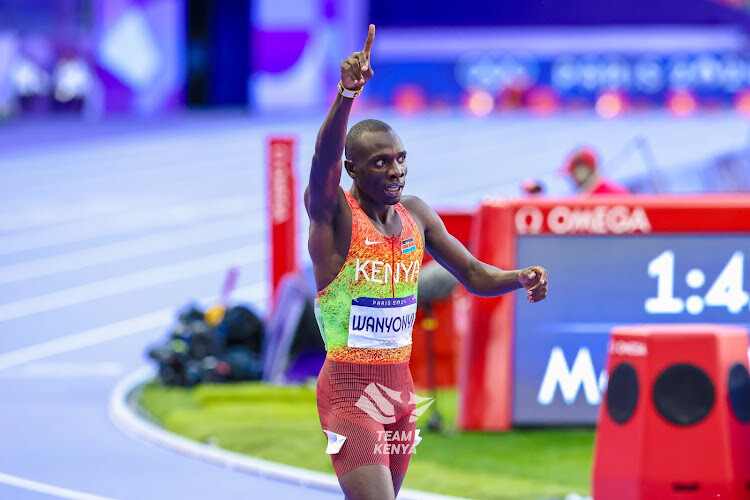
The show started with Judoka Zeddy Cherop falling 10-0 to Portugal’s Patricia Sampao in a record 22 seconds while Fencing African champion Alexandra Ndolo crushed out 13-12 to Ukranian Olena Kryvytska in her debut.
Maria Brunlehner and Ridhwan Mohamed finished 3rd and 4th in the women’s 50m freestyle and Men’s 400m freestyle heats respectively to crush out of contention for a swimming medal.
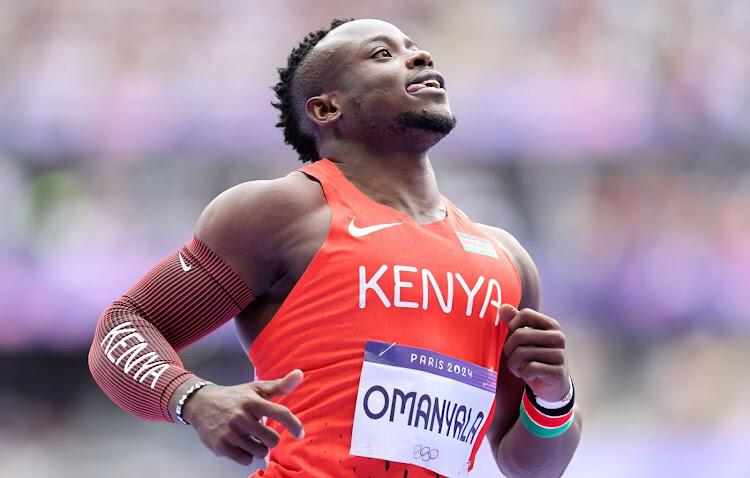
The sevens rugby team also crushed out in the group stage, after going down to Australia, Argentina and Samoa.
The women’s volleyball team booked their next flight after failing to win a single set following three identical 3-0 losses in a tough group B pool comprising Brazil, Poland and Japan.
Paris, the City of Love, had very little affection for Kenya as former world champion Julius Yego, finished a distant 5th in the javelin final with a 87.72m throw, to also bite the dust.
Africa's fastest man, Ferdinand Omanyala's 100m Olympic medal dream was shattered in the semi-finals after clocking 10.08 seconds to finish 8th.
However, Kenya redeemed herself with debutant Beatrice Chebet grabbing double gold in the 5000m and 10000m women’s races.
The best performer was followed closely by Faith Kipyegon who defended her 1500m gold and added the 5000m women’s silver.
Another debutant, Emmanuel Wanyonyi, grabbed the 800m gold, while Ronald Kwemoi struck the men’s 5000m silver.
Mary Moraa, the dancing queen, grabbed the 800m bronze, same as Faith Cherotich (3000m steeplechase) and Abraham Kibiwot (3000m steeplechase).
Hellen Obiri and Benson Kipruto rounded up the bronze tally in the men's and women's marathons.
Obiri failed in her quest for an Olympic medal having won silver in the women's 5000m in Tokyo, 2020 and Rio 2016 games.
History Making
Kenya will however keep pride in making history after Faith Kipyegon became the first woman to complete an Olympic hat trick after breaking her 1500m record in 3:51.29, before a fully packed iconic Stade de France.
Debutant Beatrice Chebet was the best performer entering the history books by winning a double gold in the women's 5000m and 10000m.
The feat makes Chebet the first Kenyan woman to win Olympic 10000m gold for Kenya since the race was introduced in the 1988 Olympics.
She is the third woman after Tirunesh Dibaba and Sifan Hassan to win the 5000m and 10000m double at the Olympic Games.
"I'm dedicating this medal to all Kenyans. I just want to hear my country is proud. This was for you, you were in my mind and heart in every lap; I might have made history but I will sleep better knowing Wananchi wataenjoy the weekend," she said.
Kenya’s legend Eliud Kipchoge failed to complete an Olympic marathon treble after dropping out of the race at the 20km mark.
Kipchoge later confirmed he won’t be running in the Los Angeles 2028 summer games.
“I felt a sharp pain in the stomach and I couldn’t continue. I'm disappointed that for the first time in my career, I failed to finish a race .” Kipchoge said.
Lady luck also smiled on Kenya after Kipyegon's 5000m silver medal was reinstated following an appeal, after a push and shove with Ethiopian nemesis, Gudaf Tsegay, had her initially disqualified.
In the 800m final, Canada appealed against Kenyan winner Emmanuel Wanyonyi's personal best of 1:41.91 in the 800m, claiming he obstructed silver medallist Marco Arop. Kenya won the appeal.
Tokyo 2020
Despite the dismal show in Paris, Kenya had bettered the 2020 Tokyo tally of 10 medals and a 19th spot finish.
The post-Covid games had challenges but Kenya grabbed four gold, four silvers and two bronze medals.
Emmanuel Korir (800m), Faith Kipyegon (1500m), Peres Jepchirhir (marathon), and Eliud Kipchoge (marathon) were the gold medalists while Hellen Obiri (5000m), Fergussin Rotich (800m), Brigid Kosgei (marathon) and Timothy Cheruiyot (1500m) won silver.
Benjamin Kigen and Hyvin Kiyeng won the men's and women's 3000m steeplechase races respectively.
Rio 2016
In the 2016 Rio De Janeiro games, Kenya managed six gold, six silver and one bronze medal for a tally of 13 medals.
Rio 2016 Olympics gold medalists were Jemima Sumgong in women's marathon, David Rudisha in 800m, Faith Kipyegon in 1500m, Conseslus Kipruto in 3000m steeplechase, Vivian Ceruiyot in 5000m and Eliud Kipchoge marathon.
Meanwhile, Vivian Cheruiyot (10000m); Paul Tanui (10000m); Hyvin Kiyeng (3000m steeplechase); Boniface Mucheru (400m hurdles); and Hellen Obiri (5000m) all grabbed silver, while Julius Yego managed a rare javelin silver. Margaret Wambui won bronze in women's 800m.
London 2012
The London 2012 Summer Games saw Kenya manage 2 gold, 4 silver and 7 bronze for a total of 13 medals.
Despite a cold and warm performance in the Queens land, Kenya won two gold medals to finish a distant 29th in the world rankings.
Legendary track masters Ezekiel Kemboi and David Rudisha grabbed gold in the men's 3000m and 800m races respectively.
Sally Kipyegon brought home the women's 10000m silver, while Priscah Jeptoo won the women's marathon silver medal as Vivian Cheruiyot grabbed the women's 5000m race.
Abel Kirui rounded up the silver medals haul after clinching the men’s marathon race.
Vivian Cheruiyot won bronze in the 10000m women's race, while Asbel Kiprop and Milcah Chemos clinched bronze in the men's and women’s 3000m steeplechase.
Timothy Kiptum and Pamela Jelimo clinched the men's and women's 800m race respectively while Thomas Longosiwa and Wilson Kipsang rounded off Kenya's bronze medals haul, winning the 5000m men's and women's marathon races.
What next?
As the nation awaits the Paris 2024 Games report on what worked and what didn't work, a lot will be looked into including preparations, sports science, lack of stadia and lack of funds among others.
However, one constant reminder is that Kenya must smell the coffee, lest our legacy is discarded by the improving rival nations every day.
The next Omanyala, Yego, Obiri and Kipchoge should be nurtured immediately if we are to remain world beaters in the summer games.
Beating the 2008 Beijing Summer Games remains the target, where Kenya sent a total of 46 athletes: 28 men and 18 women who brought home the best tally of six gold, four silver and six bronze medals.
The journey to the Los Angeles 2028 games starts with a new sheriff in town, CS Kipchumba Murkomen, at the helm of the Sports ministry.
by Eric Munene
Login to leave a comment
Paris 2024 Olympic Games
For this historic event, the City of Light is thinking big! Visitors will be able to watch events at top sporting venues in Paris and the Paris region, as well as at emblematic monuments in the capital visited by several millions of tourists each year. The promise of exceptional moments to experience in an exceptional setting! A great way to...
more...Race day for newbies
A beginner's guide to feeling like a pro at your first race.
For experienced runners, “race day” is a familiar term consisting of a particular routine, diet and lots of emotions. For beginners, race day can be overwhelming and may make you feel stressed or even helpless. Every runner has a different routine developed over numerous races, experimenting with what works and doesn’t work for them. But beginners have to start from scratch to get their first race day under their belt. Here are a few tips to keep in mind heading into the competition.
Prepare beforehand
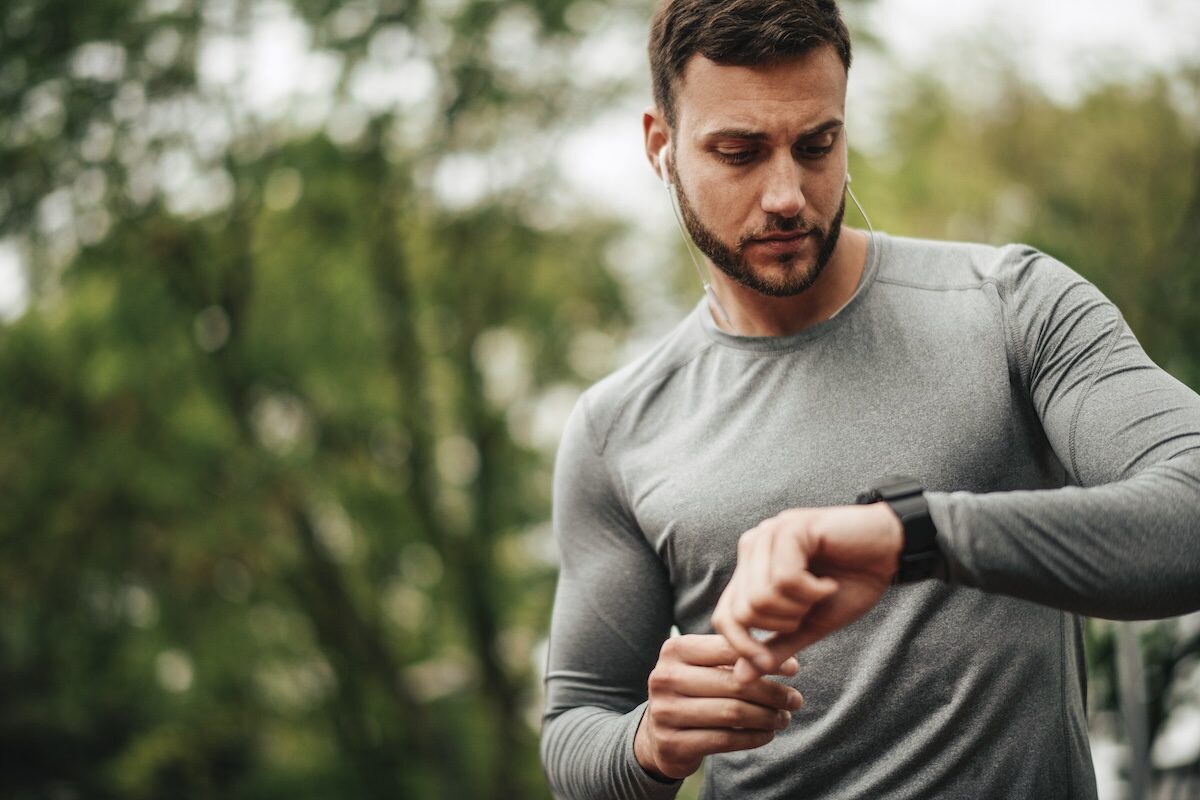
Road races typically take place in the morning, calling for an early wake-up. Being nervous or excited can make getting to sleep the night before pretty difficult, so remember that banking sleep throughout the week prior is the most important for getting you rested and recovered.
Check the weather and choose what to wear the night before; it’s better to be over-prepared, with extra layers and a change of clothes for after the race. You can’t outrun the sun: don’t forget your sunscreen, hat and sunglasses, even on a cooler day. Longer layers or gloves that you don’t mind tossing away mid-run will allow you to be more comfortable on a brisk morning, especially while standing around waiting for the starting gun to go off. Most races provide food post-race, but it doesn’t hurt to pack a snack just in case!

Pick up your race kit
With registration, you’ll receive a race kit, a package that includes your bib number and a timing chip that you safety-pin to your shirt. Your bib number is an important piece of identification for time tracking and emergencies. Some events offer race kit pickup the day before or a few days before the competition, allowing you to worry about one less thing when race day comes around.
Arrive early
If you plan to pick up your kit on the morning of your race, give yourself a bit of extra time. Stressing about parking and rushing to use the washroom before getting on the start line are the last things you want to be doing. Aiming to arrive 60 minutes prior to your race should give you plenty of time to get settled in while still leaving room for a good warmup.
For big-city marathon events, you may want to give yourself up to an hour and a half to accommodate for slow-moving crowds and long lines for the porta potty.
Warmup
More often than not, beginners focus on building distance and consistency in preparation for their first race. At these lower intensities, warm-up isn’t usually a major part of their routine. On race days, however, warmup becomes especially important because the intensity of the race will be much greater than your daily runs. Additionally, commuting to the race venue the morning of, or even the day before if it’s particularly far, can cause your legs to feel heavier or stiffer than usual.
A warmup as simple as a light five-minute run and a few dynamic stretches, such as leg swings, hamstring scoops and skipping with arm circles can make all the difference in activating your muscles pre-race.
Fueling
Figuring out what meal to eat and how close to the race you can stomach it is a continuous learning curve for runners. Try to adjust your body in the weeks leading up to the race to handle food within two hours of your run so that you can avoid racing on an empty stomach. Plan for a carbohydrate-focused meal such as oatmeal, yogurt or toast about three to four hours before your race, and add a light snack, such as a granola bar or banana, about two hours out.
Don’t forget to keep sipping water throughout the morning prior to the race to stay hydrated. Experimenting with coffee on race day is probably not the best idea; only drink it if you know your stomach can handle it!
Personalizing your race
Listening to music, wearing a watch or carrying a water bottle are all completely up to you; whatever will make you run faster or more comfortably. Most events have water stations scattered along the course to keep you hydrated throughout. Having an energy gel or two on hand may also give you the boost you need by replenishing your carbohydrate stores, especially for distances over 10 kilometers.
by Cameron Ormond
Login to leave a comment
Why Ultrarunning GOAT Courtney Dauwalter Says Loops—Not Out-and-Backs—Are the Superior Route
We polled Dauwalter on some of running’s most polarizing questions. Take the quiz to see how you stack up.
In 2023, Courtney Dauwalter had one of the most legendary years in trail-running history, becoming the first person to win the Triple Crown of the 100-mile races—Western States, Hardrock, and UTMB—in a single season. This year, she’s showed no signs of slowing down, repeating as Hardrock champion and improving on her course record by over two minutes.

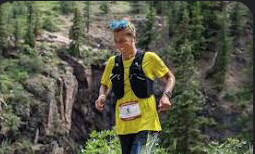
Courtney has a lot to say: “Comfort is key! I prefer [shorts with] long inseams because I am most comfortable in them. We should all wear the clothes that make us feel our best when we're out trying hard things.”
On the type of course: "I love any type of route, really, but loops definitely feel like big adventures. Not knowing what’s around each corner or what view you might be rewarded with is exciting.”
Race plan; “Early mornings feel so simple and peaceful. I love to drink my coffee and watch the sun rise while I plan out my day.
Courtney Explains: “Staying in the moment, focusing on taking the next step, and repeating a positive mantra are things I try to do during the toughest moments of any run.”
by Runner’World
Login to leave a comment
Runners: ditch your superstitions
As a runner, you know that race day can be incredibly nerve-wracking. Some days, you spend your time wracking your brain to make sure you follow the exact same steps you took last time you had a good race –right down to wearing the same (unwashed) “lucky” socks. If something doesn’t go to plan, or your luggage goes missing, this superstition now becomes a major obstacle, rather than a good luck charm. If superstitions aren’t helping you, why let them control you?
Having a routine that makes you feel good is important. But with traveling, eating at restaurants, sleeping in hotels, unpredictable race weather or items forgotten from the packing list, being adaptable can be beneficial and help set you up for success, no matter what.

These are some of the most common superstitions that I’ve seen.
Wearing the same race socks, despite massive holes

Needing very specific pre-race food, just because you once ate it before a good race.
Always sticking to the same hairstyle–dutch braids into a ponytail with a bow to match your race top.
Needing a specific brand of (takeout) coffee. Hotel coffee, McDonald’s coffee, home-brewed coffee–they just won’t do.
Completing a very specific warmup: fixed order of stretches, five reps of each drill and the same hype-up song.
News flash: wearing clean socks, skipping the braids, or eating a bagel with cream cheese instead of a PB&J is not going to deter you from having a good race.
My tip: have confidence that you have the fitness and the mental resilience to race your hardest. Don’t give the credit for an amazing race to a pair of socks! That is your hard work that got you there. If you feel yourself developing a superstition, why not fight it?Purposely try to lean away from relying on those very particular routines. If you are unafraid to switch things up, you will ingrain in your mind that you have the ability to race your hardest on race day. Good fortune has nothing to do with it!
With everything that could potentially go wrong, recondition your mind to interpret things as just going differently. If you avoid developing rigid superstitions and instead set goals to be flexible, positive and self-assured, “different” will have no effect on your long-awaited race.
by Cameron Ormond
Login to leave a comment
Father’s Day gift ideas for your favorite running dad
Looking for the perfect gift for your run-loving Dad or partner this Father's Day? If the men in your life are notoriously tricky to buy for and you need some gift inspiration for the big day, you've come to the right place!
From the coolest running socks for speedy dads, to heartfelt race day mementoes for your formerly formidable marathoner old man, keep scrolling for the best Father's Day gift ideas for the runner in your life.
Gift ideas for running dads
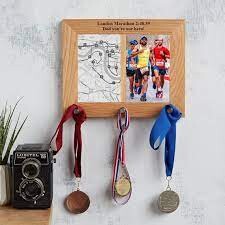
In a hurry? Here are the top picks. Keep scrolling for the full list.
When is Father's Day in 2024?

This year Father's Day is on Sunday 16th June 2024. But why wait for an excuse to treat the runners in your life? We've rounded up the best gift ideas for any and every type of runner. Keep scrolling for more tips and inspiration for him though.
The best Father's Day gifts for dads who run
From the best running shoes and socks, to keepsakes to make your run-loving dad smile all day long, we've rounded up the best gift ideas who dads who run. Nothing here for you? Check out our runner’s gift guide for more inspiration.
Personalised Metal Shoe Tag
Super proud of the running dad in your life but rarely have time to make the finish line/cheer squad? Now he can keep a little reminder with him during all of his runs, with this heartfelt personalised shoe tag. It can be moved from shoe to shoe, and will keep his spirits up and let him know you're thinking of him during every race and training run.
Danish Endurance Quarter-Length Running Socks - 3 Pack
Irrespective of your Dad/partner's running prowess, nothing says 'Happy Father's Day' like a new pair of box fresh socks! This set of three, quarter-length socks from Danish Endurance have arch compression and cushioning for comfortable, soft, blister-free runs. And if you can prevent his feet from stinking up the house, then it's win-win all round.
Whoop Whoop Strap 4.0
For dads who love to hone in on their health and fitness metrics, you can't really do better than buying them a Whoop Strap 4.0. This wearable sensors tracks everything from your sleep to your heart rate variability, recovery and daily effort to provide a holistic overview of your current health status, and the accompanying app provides insights and advice on how ready you are to train. Sound like something Dad would love? Buy him an annual Whoop membership for £229 and the band is included as part of the membership. Plus, from 10th to 24th June, that also gets you £45 off any Whoop accessory.
Brewgooder Mixed Pack (4 x 330ml)
A great tasting beer (especially post-run) with some eco-credentials (it's brewed using fonio, a grain that can grow anywhere without fertilizer), this session IPA from Brooklyn Brewery and Brewgooder is worth considering if the dad you're buying for likes beer (and some beer is proven to aid recovery).
Personalised 'Running Star' Mug
You can never have too many mugs! But this one is extra special, because it can be personalised with the heartfelt message of your choice. Use up to 20 characters on the front and 40 on the back to let your Dad/partner know he's a running superstar, record his best running times so he can bask in the glory of his marathon PB every morning, or better yet, remind him to wash his stinky socks!
Exhale Organic Ground Coffee
Old man partial to a morning brew? Exhale dubs itself ‘the ridiculously healthy organic coffee that’s backed by serious science’. While poor processing and over roasting can often knock out coffee's natural, fruity goodness, Exhale’s unique process locks in more of its healthiest compounds while keeping out the bad stuff. Don’t believe us? The product goes through nine different independent lab tests to confirm the beans are free from nasties, and as high in antioxidants and vitamins as possible (read more here). Everything is ethically sourced, too, down to the compostable packaging. We’d recommend the Dark(ish) blend — it’s rich, deliciously smooth and there’s absolutely no bitterness.
Running Events Entry
If your Dad/partner is an avid runner and you've already bought him enough socks to clothe an army, now is the time to give him the ultimate gift: race entry to the event of his dreams! Has he been babbling on about finally entering his first ultra, or that local 10K that clashes with lunch at the in-laws? Guarantee smiles all-round this Father's Day with a day pass to run his heart out.
'Runners Kit' Letterbox Gift
If you've exhausted all of the obvious gifting ideas and you just want to let your running Dad know you're thinking of him, this cute and heartfelt runner's kit will be just the ticket, and you can send it direct to his house. The pack includes stretching ideas, peanut butter and snacks, and epsom bath salts for a relaxing soak post run. Happy days!
On Performance Tank
In our opinion, you can never have enough running vests, and this one from On is a solid option. It’s noticeably light (On says it weighs 63.5g) and made from very fine, almost silk-like fabric. It’s very comfortable, featuring completely flat, taped seams, rather than stitched. The scoop of the neck is fairly wide and the upper back is covered rather than racer cut. If you know someone with plenty of races on the horizon, this would make a good race day option for them.
Inov-8 Train Lite 9" Short
Whether he's an avid trail runner or a weekend rambler, your dad will be grateful for a pair of these versatile trail shorts from off-road specialists Inov-8. They are lightweight and moisture-wicking and feature a handy stabiliser smartphone pocket – ideal for summer adventures.
Personalised Oak Photo Frame And Medal Hanger
Another super-cool race day memento idea, this one can be personalised with your dad/partner's details on the frame alongside his race day pics and map route, plus it comes with hooks to hang his medals!
by Rhalou Allerhand and Jenny Bozon
Login to leave a comment
TWENTY-ONE YEARS AGO, HE WAS INCARCERATED FOR LIFE. LAST YEAR, HE RAN THE NYC MARATHON A RADICALLY CHANGED MAN.
RAHSAAN ROUNDED THOMAS A CORNER. Gravel underfoot gave way to pavement, then dirt. Another left turn, and then another. In the distance, beyond the 30-foot wall and barbed wire separating him from the world outside, he could see the 2,500-foot peak of Mount Tamalpais. He completed the 400-meter loop another 11 times for an easy three miles.
Rahsaan wasn’t the only runner circling the Yard that evening in the fall of 2017. Some 30 people had joined San Quentin State Prison’s 1,000 Mile Club by the time Rahsaan arrived at the prison four years prior, and the group had only grown since. Starting in January each year, the club held weekly workouts and monthly races in the Yard, culminating with the San Quentin Marathon—105 laps—in November. The 2017 running would be Rahsaan’s first go at the 26.2 distance.
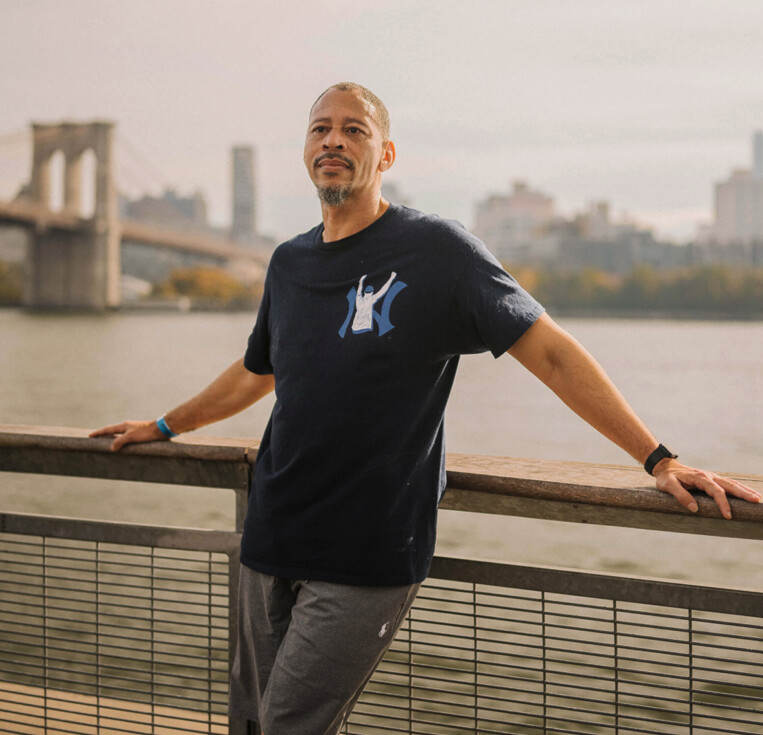
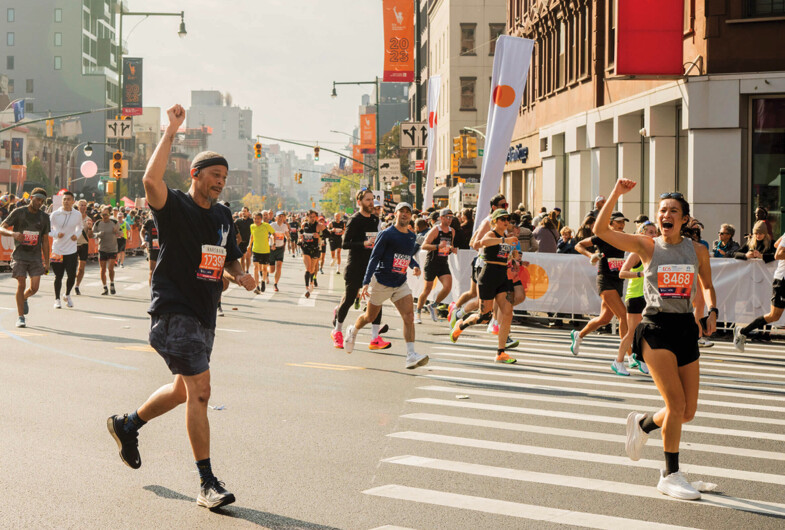
For Rahsaan and the other San Quentin runners, Mount Tam, as it’s known, had become a beacon of hope. It’s the site of the legendary Dipsea, a 7.4-mile technical trail from Mill Valley to Stinson Beach. After the 1,000 Mile Club was founded in 2005, it became tradition for club members who got released to run that trail; their stories soon became lore among the runners still inside. “I’ve been hearing about the Dipsea for the longest,” Rahsaan says.
Given his sentence, he never expected to run it. Rahsaan was serving 55 years to life for second-degree murder. Life outside, let alone running over Mount Tam all the way to the Pacific, felt like a million miles away. But Rahsaan loved to run—it gave him a sense of freedom within the prison walls, and more than that, it connected him to the community of the 1,000 Mile Club. So if the volunteer coaches and other runners wanted to talk about the Dipsea, he was happy to listen.
We’ll get to the details of Rahsaan’s crime later, but it’s useful to lead with some enduring truths: People can grow in even the harshest environments, and running, whether around a lake or a prison yard, has the power to change lives. In fact, Rahsaan made a lot of changes after he went to prison: He became a mentor to at-risk youth, began facing the reality of his violence, and discovered the power of education and his own pen. Along the way, Rahsaan also prayed for clemency. The odds were never in his favor.
To be clear, this is not a story about a wrongful conviction. Rahsaan took the life of another human being, and he’s spent more than two decades reckoning with that fact. He doesn’t expect forgiveness. Rather, it’s a story about a man who you could argue was set up to fail, and for more than 30 years that’s exactly what he did. But it’s also a story of navigating the delta between memory and fact and finding peace in the idea that sometimes the most formative things in our lives may not be exactly as they seem. And mostly, it’s a story of transformation—of learning to do good in a world that too often encourages the opposite.
RAHSAAN “NEW YORK” THOMAS GREW UP IN BROWNSVILLE, A ONE-SQUARE-MILE SECTION OF EASTERN Brooklyn wedged between Crown Heights and East New York. As a kid he’d spend hours on his Commodore 64 computer trying to code his own games. He loved riding his skateboard down the slope of his building’s courtyard. On weekends, he and his friends liked to play roller hockey there, using tree branches for sticks and a crushed soda can for a puck.
Once a working-class Jewish enclave, Brownsville started to change in the 1960s, when many white families relocated to the suburbs, Black families moved in, and city agencies began denying residents basic services like trash pickup and streetlight repairs. John Lindsay, New York’s mayor at the time, once referred to the area as “Bombsville” on account of all the burned-out buildings and rubble-filled empty lots. By 1971, the year after Rahsaan was born, four out of five families in Brownsville were on government assistance. More than 50 years later, Brownsville still has a poverty rate close to 30 percent. The neighborhood’s credo, “Never ran, never will,” is typically interpreted as a vow of resilience in the face of adversity. For some, like Rahsaan, it has always meant something else: Don’t back down.
The first time Rahsaan didn’t run, he was 5 or 6 years old. He had just moved into Atlantic Towers, a pair of 24-story buildings beset with rotting walls and exposed sewer pipes that housed more than 700 families. Three older kids welcomed him with their fists. Even if Rahsaan had tried to run, he wouldn’t have gotten far. At that age, Rahsaan was skinny, slow, and uncoordinated. He got picked on a lot. Worse, he was light-skinned and frequently taunted as “white boy.” The insult didn’t even make sense to Rahsaan, whose mother is Black and whose father was Puerto Rican. “I feel Black,” he says. “I don’t feel [like] anything else. I feel like myself.”
Rahsaan hated being called white. It was the mid-1970s; Roots had just aired on ABC, and Rahsaan associated being white with putting people in chains. Five-Percent Nation, a Black nationalist movement founded in Harlem, had risen to prominence and ascribed godlike status to Black men. Plus, all the best athletes were Black: Muhammad Ali. Reggie Jackson. Kareem Abdul-Jabbar. In Rahsaan’s world, somebody white was considered physically inferior.
Raised by his mother, Jacqueline, Rahsaan never really knew his father, Carlos, who spent much of Rahsaan’s childhood in prison. In 1974, Jacqueline had another son, Aikeem, with a different man, and raised her two boys as a single mom. Carlos also had another son, Carl, whom Rahsaan met only once, when Carl was a baby. Still, Rahsaan believed “the myth,” as he puts it now, that one day Carlos would return and relieve him, his mom, and Aikeem of the life they were living. Jacqueline had a bachelor’s degree in sociology and worked three jobs to keep her sons clothed and fed. She nurtured Rahsaan’s interest in computers and sent him to a parochial school that had a gifted program. Rahsaan describes his family as “upper-class poor.” They had more than a lot of families, but never enough to get out of Brownsville, away from the drugs and the violence.
Some traumas are small but are compounded by frequency and volume; others are isolated occurrences but so significant that they define a person for a lifetime. Rahsaan remembers his grandmother telling him that his father had been found dead in an alley, throat slashed, wallet missing. Rahsaan was 12 at the time, and he understood it to mean his father had been murdered for whatever cash he had on him—maybe $200, not even. Now he would never come home.
Rahsaan felt like something he didn’t even have had been taken from him. “It just made me different, like, angry,” he says. By the time he got to high school, Rahsaan resolved to never let anyone take anything from him or his family again. “I started feeling like, next time somebody tryin’ to rob me, I’m gonna stab him,” he says. He started carrying a knife, a razor, rug cutters—“all kinds of sharp stuff.” Rahsaan never instigated a fight, but he refused to back down when threatened or attacked. It was a matter of survival.
The first time Rahsaan picked up a gun, it was to avenge his brother. Aikeem, who was 14 at the time, had been shot in the leg by a guy in the neighborhood who was trying to rob him and Rahsaan. A few months later, Rahsaan saw the shooter on the street, ran to the apartment of a drug dealer he knew, and demanded a gun. Rahsaan, then 18, went back outside and fired three shots at the guy. Rahsaan was arrested and sent to Rikers Island, then released after three days: The guy he’d shot was wanted for several crimes and refused to testify against Rahsaan.
By day, Rahsaan tried to lead a straight life. He graduated from high school in 1988 and got a job taking reservations for Pan Am Airways. He lost the job after Flight 103 exploded in a terrorist bombing over Scotland that December, and the company downsized. Rahsaan got a new job in the mailroom at Debevoise & Plimpton, a white-shoe law firm in midtown Manhattan. He could type 70 words a minute and hoped to become a paralegal one day.
Rahsaan carried a gun to work because he’d been conditioned to expect the worst when he returned to Brownsville at night. “If you constantly being traumatized, you constantly feeling unsafe, it’s really hard to be in a good mind space and be a good person,” he says. “I mean, you have to be extraordinary.”
After high school, some of Rahsaan’s friends went to Old Westbury, a state university on Long Island with a rolling green campus. He would sometimes visit them, and at a Halloween party one night, he got into a scrape with some other guys and fired his gun. Rahsaan spent the next year awaiting trial in county jail, the following year at Cayuga State Prison in upstate New York, and another 22 months after that on work release, living in a halfway house in Queens. He got a job working the merch table for the Blue Man Group at Astor Place Theater, but the pay wasn’t enough to support the two kids he’d had not long after getting out of Cayuga.
He started selling a little crack around 1994, when he was 24. By 27 he was dealing full-time. He didn’t want to be a drug dealer, though. “I just felt desperate,” he says. Rahsaan had learned to cut hair in Cayuga, and he hoped to save enough money to open a barbershop.
He never got that opportunity. By the summer of 1999, things in New York had gotten too hot for Rahsaan and he fled to California. For the first time in his 28 years, Rahsaan Thomas was on the run.
EVERY RUNNER HAS AN ORIGIN STORY. SOME START IN SCHOOL, OTHERS TAKE UP RUNNING TO IMPROVE their health or beat addiction. Many stories share common themes, if not exact details. And some, like Rahsaan’s, are absolutely singular.
Rahsaan drove west with ambitions to break into the music business. He wanted to be a manager, maybe start his own label. His new girlfriend would join him a week later in La Jolla, where they’d found an apartment, so Rahsaan went first to Big Bear, a small town deep in the San Bernardino Mountains 100 miles east of Los Angeles. It’s where Ryan Hall grew up, and where he discovered running at age 13 by circling Big Bear Lake—15 miles—one afternoon on a whim. Hall has recounted that story so many times that it’s likely even better known than the American records he would go on to set in the half and full marathons.
Rahsaan didn’t know anything about Ryan Hall, who at the time was just about to start his junior year at Big Bear High School and begin a two-year reign as the California state cross-country champion. He didn’t even know there was a lake in Big Bear. Rahsaan went to Big Bear to box with a friend, Shannon Briggs, a two-time World Boxing Organization heavyweight champion.
Briggs and Rahsaan had grown up together in Atlantic Towers. As kids they liked to ride bikes in the courtyard, and later they went to the same high school in Fort Greene. But Briggs’s mom had become addicted to drugs by his sophomore year, and they were evicted from the Towers. Briggs and Rahsaan lost touch. Briggs began spending time at a boxing gym in East New York; often he’d sleep there. He had talent in the ring. People thought he might even be the next Mike Tyson, another native of Brownsville who was himself a world heavyweight champ from 1986 to 1989.
Briggs went pro in 1991, and by the end of that decade he was earning seven figures fighting guys like George Foreman and Lennox Lewis. Rahsaan was at those fights. The two had reconnected in 1996, when Rahsaan was trying to rebuild his life after prison and Briggs’s boxing career was on the rise. In August 1999, Briggs was gearing up to fight Francois Botha, a South African known as the White Buffalo, and had decamped to Big Bear to train. “He was like, ‘Yo, come live with me, bro,’” Rahsaan recalls.
Briggs was running three miles a day to increase his stamina. His route was a simple out-and-back on a wooded trail, and on one of Rahsaan’s first days there, he decided to join him. Rahsaan hadn’t done so much as a push-up since getting out of prison, but he wanted to hang with his friend. Briggs and his training partners set off at their usual clip; within a few minutes they’d disappeared from Rahsaan’s view. By the time they were doubling back, he’d barely made it a half mile.
Rahsaan never liked feeling physically inferior. So back in La Jolla, he started running a few times a week, going to the gym, whatever it took. Before long he was up to five miles. And the next time he ran with Briggs, he could keep up. After that, he says, “Running just became my thing.”
FOR YEARS, RAHSAAN HAD BUCKED AT TAKING RESPONSIBILITY for the murder that sent him to prison. The other guys had guns, too, he insisted. If he hadn’t shot them, they’d have shot him. It was self-defense.
In the moment, he had no reason to think otherwise. It was April 2000. A friend had arranged to sell $50,000 worth of weed, and Rahsaan went along to help. They met in the parking lot of a strip mall in L.A., broad daylight. The buyers brought guns instead of cash, things went sideways, and, in a flash of adrenaline, Rahsaan used the 9mm he’d packed for protection, killing one man and putting the other in critical condition. He was 29 and had been in California eight months.
After awaiting trial for three years in the L.A. County jails, Rahsaan was sentenced to 55 years to life. But for the crushing finality of it, the grim interminability, the prospect of never seeing the outside world again, he was on familiar ground. Even Brownsville had been a kind of prison—one defined, as Rahsaan puts it now, by division and neglect, a world unto itself that societal forces made nearly impossible to escape. He was used to life inside.
Rahsaan spent the next 10 years shuttling between maximum security facilities, the bulk of those years at Calipatria State Prison, 30 miles from the Mexican border. By the time he got to San Quentin, he was 42.
As part of the prison’s restorative justice program, Rahsaan met a mother of two young men who’d been shot, one killed and the other critically injured. Her pain, her dignity, her ability to forgive her sons’ shooters prompted Rahsann to reflect on his own crime. “It made me feel like, damn, I did this to his mother,” he says. “I did this to my mother. You don’t do that to Black mothers. They go through so much.”
ABOUT 2 MILLION PEOPLE ARE INCARCERATED IN THE UNITED States today, roughly eight times as many as in the early 1970s. Nearly half of them are Black, despite Black Americans representing only 13 percent of the U.S. population.
This disparity reflects what the legal scholar and author Michelle Alexander calls “the new Jim Crow,” an invisible system of oppression that has impeded Black men in particular since the days of slavery. In her book of the same title, Alexander unpacks 400 years of policies and social attitudes that have created a society in which one in three Black males will be incarcerated at some point in their lives, and where even those who have been paroled often face a lifetime of discrimination and disenfranchisement, like losing the right to vote. If you hit a wall every time you try to do something, are you really free? More than half of the people released from U.S. jails and prisons return within three years.
After Rahsaan got out of Cayuga back in 1992, with a felony on his permanent record, he’d had trouble doing just about anything legit: renting an apartment, finding a decent job, securing a loan. Though he’d paid for the Mercedes SUV he drove to California, the lease was in his girlfriend’s name. Selling crack had provided financial solvency, and his success in New York made him feel invincible. One weed deal in California seemed easy enough. But he wasn’t naive. Rahsaan packed a gun, and if he felt he had to use it, he would.
Today Rahsaan feels deep remorse for what transpired from there. But back then he saw no other way. “When we have a grievance, we hold court in the street,” he says of growing up in the Brownsville projects. “There’s no court of law, there’s no lawsuits.” Even while incarcerated, Rahsaan continued to meet threats with violence. But he also found that in prison, as in Brownsville, respect was temporary. “If you stab somebody, people leave you alone,” he says. “But you gotta keep doing it.”
Not long after Rahsaan got to Calipatria, around 2003 or 2004, an older man named Samir pulled him aside. “Youngster, there’s nobody that you can beat up that’s gonna get you out of prison,” Rahsaan remembers Samir saying. “In fact, that’s gonna make it worse.” Rahsaan thought about Muhammad Ali, how he would get his opponents angry on purpose so they’d swing until they wore themselves out. He realized that when you’re angry, you’re not thinking clearly or moving effectively. You’re not responding; you’re reacting.
The next time Rahsaan saw Samir was in the yard at Calipatria. They were both doing laps, and the two men started to run together. Rahsaan told Samir about the impact his words had on him, how they helped him see he’d always let “somebody else’s hangup become my hangup, somebody else’s trauma become my trauma.” Each time that happened, he realized, he slid backward.
Rahsaan began exploring various religions. He liked how the men in the Muslim prayer group at Calipatria encouraged him to think about his past, and the way they talked about God’s plan. He thought back to that day in April 2000 and came to believe that God would have gotten him out of that situation without a gun. “If I was meant to die, I was meant to die,” he says. “If I’m not, I’m not.” He started to see confrontations as tests. “I stopped feeding into the negativity and started passing the test, and I’ve been passing it consistently since,” he says.
CLAIRE GELBART PLACED HER BELONGINGS IN A PLASTIC TRAY AND WALKED THROUGH THE METAL detectors at the visitors’ entrance at San Quentin. She crossed the Yard to the prison’s newsroom. It was late fall of 2017, and Gelbart had started volunteering with the San Quentin Journalism Guild, an initiative to teach incarcerated people the fundamentals of newswriting and interviewing techniques.
Historically infamous for housing people like Charles Manson and Sirhan Sirhan, the man convicted of killing Robert Kennedy, and for having the only death row for men in California, San Quentin has in recent years instituted reforms. By the time Rahsaan arrived, the facility was offering dozens of programs, had an onsite college, and granted some of the individuals housed there considerable freedom of movement. Hundreds of volunteers pass through its gates every year.
Rahsaan was in the newsroom working on a story for the San Quentin News, where he was a staff writer. Gelbart and Rahsaan started to chat, and within minutes they were bonding over running. They talked about the San Quentin Marathon—in which Rahsaan was proud to have placed 13th out of 13 finishers in 6 hours, 12 minutes, and 23 seconds—and Gelbart’s plans to run her first half marathon that spring. “It was like I lost all sense of place and time,” Gelbart says, “like I could have been in a coffee shop in San Francisco talking to someone.”
In weekly visits over the next year, Gelbart and Rahsaan talked about their families, their hopes for the future. Gelbart had just graduated from Tufts University with dreams of being a writer. Rahsaan was working toward a college degree, writing for numerous outlets like the Marshall Project and Vice, and learning about podcasting and documentary filmmaking. In 2019, when Gelbart was offered a job in New York, she told Rahsaan she felt torn about leaving—they’d become close friends. They made a pact that if Rahsaan ever got out of prison, they would run the New York City Marathon together. “We couldn’t think of a better thing to celebrate him coming home,” Gelbart says.
When Rahsaan was sentenced, he still had hope for a successful appeal. But when his appeal was denied in 2011, he realized he was never going home. His parole date was set for 2085.
At the time, though, the political appetite for mass incarceration was starting to shift. Gray Davis, who was governor of California from 1999 to 2003, had never granted a single pardon; and his successor, Arnold Schwarzenegger, granted only 15. Then, between 2011 and 2019, Governor Jerry Brown pardoned or commuted the sentences of more than 1,300 people. Studies show that the recidivism rate among those who had been serving life sentences is less than 5 percent in a number of states, including California. And according to the U.S. Bureau of Justice, 98 percent of people convicted of homicide who are released from prison do not commit another murder.
In the fall of 2018, Governor Brown approved Rahsaan for commutation, but it was now up to his successor, Gavin Newsom, to follow through. And until a release date was set, there were no guarantees.
Back at San Quentin, Rahsaan was busier than ever. He was working on his fourth film, Friendly Signs, a documentary funded by the Marshall Project and the Sundance Institute; it was about fellow 1,000 Mile Club member Tommy Lee Wickerd’s efforts to start an ASL program to aid a group of deaf and hard-of-hearing newcomers to the prison. He had recently been named chair of the San Quentin satellite chapter of the Society of Professional Journalists and became a cohost and coproducer of Ear Hustle, a popular podcast about life in San Quentin that in 2020 was a finalist for a Pulitzer Prize. He was also sketching out plans for a nonprofit, Empowerment Ave, to build connections to the outside world for other incarcerated writers and artists and to advocate for fair compensation. And after five years, he was just one history class away from getting his associate’s degree from Mount Tamalpais College.
In January 2020, Rahsaan began his final semester, eager to don his cap and gown that June. MTC always organized a festive graduation ceremony in the prison’s visiting room, inviting families, friends, students, and staff. Then COVID-19 hit. Lockdown. All classes canceled until further notice. The 1,000 Mile Club suspended workouts and races as well, its 70-plus members scattering throughout the prison, not sure when or if they’d ever get together again. Covid would officially kill 28 people at San Quentin and make many more very ill. College graduation, let alone races in the Yard and parole hearings, would have to wait.
For the first time since arriving at San Quentin, Rahsaan felt claustrophobic in his 4-by-10-foot cell. He couldn’t work on his films or go to the newsroom. All he could do was read and write, alone. After George Floyd was murdered that May, Rahsaan fell into a depression. He remembered something Chadwick Boseman had said in a 2018 commencement speech at Howard University: “Remember, the struggles along the way shape you for your purpose.”
Rahsaan decided his purpose was to write. Outside journalists couldn’t enter the prison during the pandemic, but their publications were thirsty for prison Covid stories. Rahsaan saw an opportunity. Between June 2020 and February 2023, he published 42 articles, and thanks to Empowerment Ave, he knew what those articles were worth. As a writer for the San Quentin News, Rahsaan earned $36 a month; those 42 articles for external publications netted him $30,000.
DOZENS OF PEOPLE GATHERED OUTSIDE SAN QUENTIN’S GATES. IT WAS A FRIGID MORNING IN EARLY February 2023; the sun hadn’t yet risen. Among those assembled were two cofounders of Ear Hustle, Earlonne Woods and Nigel Poor, along with executive producer Bruce Wallace, recording equipment in hand. A procession of white vans, each carrying one or two men, arrived one by one. After three or four hours, the air had warmed to a balmy 60 degrees. Another van pulled up, Rahsaan got out, and the crowd erupted. Nearly 23 years after he’d been sentenced to 55 years to life, Rahsaan Thomas had been released.
Rahsaan got into a Hyundai sedan and was soon headed away from San Quentin. Wallace sat in the back, recording Rahsaan seeing water, mountains, and a highway from the front seat of a car for the first time in decades. “I feel like I’m escaping,” he joked. “Is anybody chasing us? This is amazing. This is crazy.”
Rahsaan called his mom, who wasn’t able to make it to California for his release.
“Hey, Ma, it’s really real,” he said, breathless with joy. “I’m free. No more handcuffs.”
Jacqueline’s exuberance can be heard in her laughter, her curiosity about what his first meal would be (steak and French toast), and her motherly rebuke of his plan to buy a Tesla.
“You ain’t been drivin’ in a while and I know you ain’t the best driver in the world,” she teased.
Rahsaan moved into a transitional house in Oakland and wasted no time adjusting to life in the 21st century. He got an iPhone, and a friend gave him a crash course in protecting himself from cyberattacks. He’s almost fallen for a few. “There’s some rough hoods on the internet,” he jokes. Earlonne Woods, who was paroled in 2018, and others taught Rahsaan how to use social media. He opened Instagram and Facebook accounts and worked on his own website, rahsaannewyorkthomas.com, which a friend had built for him while he was in San Quentin to promote his creative projects, Empowerment Ave, and even a line of merch.
Despite all the excitement and chaos, Rahsaan never forgot about the pact he’d made with Claire Gelbart. He found her on Facebook and sent a simple, two-line message: “Start training. We have a marathon to run.”
IN LATE MARCH, SIX WEEKS AFTER HIS RELEASE, RAHSAAN FLEW TO NEW YORK CITY. IT WAS THE FIRST time he’d been home in nearly a quarter century, and he hadn’t flown since before 9/11. The security protocols at SFO reminded him more of prison than of the last time he’d been in an airport. Actually, “it was worse than prison,” he jokes. They confiscated his jar of honey.
The changes to his home borough were no less surprising. He’d come to New York to take work meetings, see family, and catch a Nets game at Barclays Center in downtown Brooklyn. Rahsaan barely recognized Barclays; it had been a U-Haul lot the last time he was there, and skyscrapers now towered over Fulton Mall, where he used to buy Starter jackets at Dr. Jay’s and Big Daddy Kane tapes at the Wiz.
He met up with Gelbart on Flatbush Avenue, where come November they’d be just hitting mile 8 of the New York City Marathon. They hadn’t been allowed to touch at San Quentin and weren’t sure how to greet each other on the outside. “It was weird at first, because I was like, do we hug?” Gelbart recalls. But the awkwardness faded fast, and as they walked, Gelbart saw a different side of Rahsaan. “He seemed so much more relaxed,” she says. “Much happier, much lighter.”
Back in 1985, just a few blocks from where Rahsaan and Gelbart walked now, Rahsaan, his brother Aikeem, and his friend Troy had been on their way home from the Fulton Mall when out of nowhere, about a dozen guys rolled up on them. They started beating on Troy and, for a minute, left Rahsaan and Aikeem alone. Images of his father, throat slashed, flashed through Rahsaan’s mind. He pulled a rug cutter out of his pocket, ran to the smallest guy in the group, and jabbed it into the back of his head. “They looked at me like they were gonna kill me,” Rahsaan says. He threw the blade to the ground, slid his hand inside his coat, and held it there. “Y’all wanna play? We gonna play,” he said. The bluff worked; the guys ran. It was the first time Rahsaan had ever stabbed someone.
Change sometimes occurs gradually, and then all at once. That was a different Brooklyn, a different Rahsaan. He began to confront his own violence when he had met Samir some 20 years before, and continued to do so through his studies, his faith, his work in restorative justice, and his own writing. But the origin of his tendency toward violence, the death of his father, remained firmly rooted in his psyche. Then, in 2017, Rahsaan spoke for the first time with his estranged half-brother, Carl.
Carl had read Rahsaan’s work, and asked why he always said their father had been murdered.
“That’s what grandma told me,” Rahsaan said.
“But he wasn’t murdered,” Carl told him. “He killed himself.”
And it wasn’t in 1982, as Rahsaan remembered, but in 1985—the same year Rahsaan started carrying blades.
Rahsaan didn’t believe it until Carl sent him a copy of the suicide note. Even then he remained in shock. “To think I justified violence, treating robbery like a life-or-death situation, over a lie,” he says. Jacqueline was as surprised as Rahsaan to learn the truth of Carlos’s death. He never seemed troubled or depressed to her when they were together, but, “You can’t really read people,” she says. “You don’t know.”
Rahsaan still can’t account for why his grandmother told him what she did, nor for the discrepancy between his memory and the facts. Regardless, after more than 30 years, Rahsaan was finally able to let go of the one trauma that had calcified into an instinct to kill or be killed. And he has no intention of dredging it back up.
THE FASTEST RUNNER IN THE 1,000 MILE CLUB’S HISTORY IS MARKELLE “THE GAZELLE” TAYLOR, WHO was paroled in 2019 and went on to run 2:52 in the 2022 Boston Marathon. Rahsaan is the slowest. At San Quentin, he was often the last one to finish a race, but that wasn’t the point—he liked being out in the Yard with the guys. It gave him a sense of belonging, and not just to the 1,000 Mile Club, but to the running community beyond.
Like every other 1,000 Miler who gets released from San Quentin, Rahsaan had a rite of passage to conquer. On Sunday morning, May 7, 2023, he met a handful of other runners from the club and a few volunteer coaches in Mill Valley. After a decade of gazing up at Mount Tam from the Yard as he completed one 400-meter loop after another, Rahsaan was finally about to run over the mountain all the way to the Pacific.
The runners did a few final stretches, wished one another luck, and started to run. Almost immediately they had to climb some 700 stairs, many made of stone, and the course only got more treacherous from there. Uneven footing, singletrack paths, and 2,000-plus feet of elevation all conspire to make the Dipsea notoriously difficult. The giant redwoods and Douglas firs along the course were lost on Rahsaan; he never took his eyes off the ground.
One of the coaches, Jim Maloney, stayed with Rahsaan as his guide, and to help him if he slipped or fell. Markelle Taylor came too, but said he’d meet them in Stinson Beach. He knew how dangerous the trail was, Rahsaan says, and had vowed to never run it again. After his own initiation, Rahsaan decided that he, too, would never do it again. “I’ve been shot at,” he says. “I’ve been in physical danger. I don’t want to revisit danger.”
Rahsaan now logs most of his miles on a treadmill because of knee issues, but on occasion he ventures out to do the 3.4-mile loop around Lake Merritt, a lagoon in the heart of Oakland. He decided to use the New York City Marathon to raise money for Empowerment Ave, and to accept donations until he crossed the finish line in Central Park. Gelbart wrote a training plan for him and got him a new pair of shoes. In prison, Rahsaan had run in the same pair of Adidas for three years, and he was excited to learn about the maximalist shoe movement. Gelbart tried to interest him in Hokas, but Rahsaan thought they were ugly. He wanted Nikes.
In June, Gelbart went to the Bay Area to visit family and met Rahsaan for a six-mile run around Lake Merritt. As they looped the lake at a conversational 11:30 pace, they talked about work, relationships, and, of course, the New York City Marathon. Rahsaan was disappointed to learn that he would probably not be the last person to finish. (He still holds the record for the slowest San Quentin Marathon in its 15-year history, and he hopes no one ever beats it.) Besides, the more time he spent on the course in New York, he figured, the longer people would have to donate to Empowerment Ave.
On Sunday, November 5, Gelbart and Rahsaan made their way to Staten Island. Waiting at the base of the Verrazzano Bridge, Gelbart recorded Rahsaan singing along to Frank Sinatra’s “New York, New York” for Instagram, and captioned the video “back where he belongs.” They documented much of their race as they floated through Brooklyn, Queens, Manhattan, and the Bronx: greeting friends along the course, enjoying a lollipop on the Queensboro Bridge, beaming even as their pace slowed from 11:45 per mile for the first 5K to 16:30 for the last. Rahsaan finished in six hours, 26 minutes, and 21 seconds, placing 48,221 out of 51,290 runners. The next day, he sent me a text: “The marathon was pure love.” What’s more, he received more than $15,000 in donations for Empowerment Ave, enough to start a writing program at a women’s prison in Texas.
Every runner has an origin story. Every runner finds a reason to keep going. At Calipatria, Rahsaan liked to joke that he ran because if an earthquake ever came along and brought down the prison’s walls, he needed to be in shape so he could escape and run to Mexico. In San Quentin, he ran for the community. Today he has a new reason. “I heard that running extends your life by 10 years,” he says, “and I gave away 22.” Now that he’s out, his motivation has never been higher. He has so much to do.
Login to leave a comment
Why women-only run clubs are dominating the scene
Amid 2024’s run-mania, with races frequently selling out across Canada, female-exclusive run clubs are gaining momentum. In honour of Sexual Assault Awareness Month, we’re discussing how the sport has evolved, with women’s run clubs paving the way for female runners to feel seen, safe and empowered.
Run clubs are in
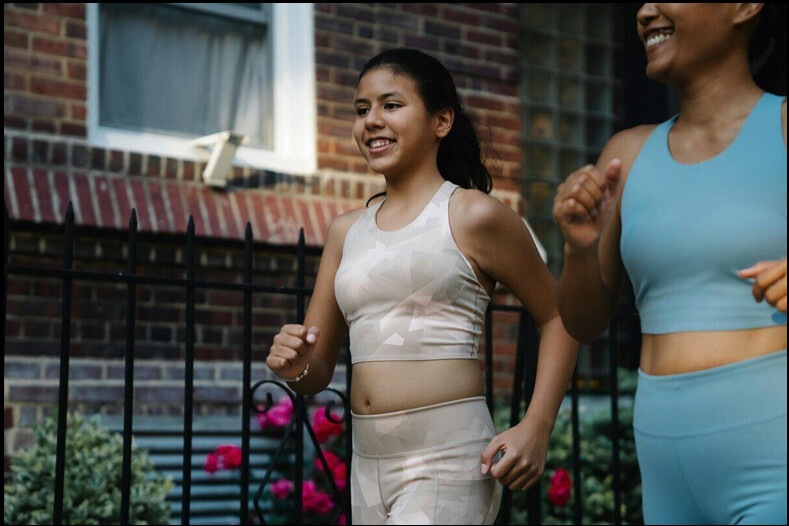
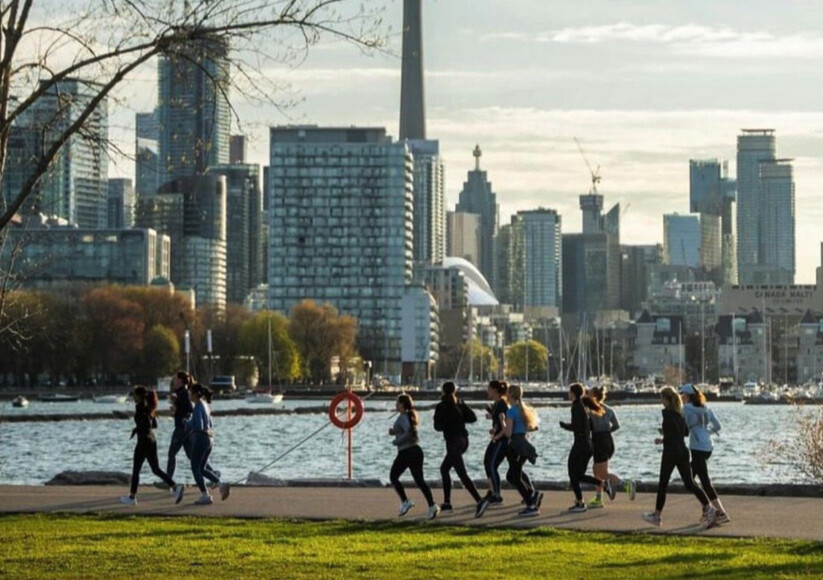
Women’s running has been on the rise since the ’70s, when recreational jogging first became popular. However, the recent surge in gender-exclusive running clubs is a significant development. According to Reddit, this is not just a passing trend. Women’s run clubs have become especially attractive to women who’ve experienced gender-based discrimination or sexual harassment in mixed-gender clubs.“As a woman that has participated in many mixed-company athletic pursuits, [I feel that] men often react poorly to women being skilled or successful in a sport, in addition to the usual perils of being harassed or bothered,” said one Reddit user. Another pointed out that “this obnoxious masculinity is woven into the history of run clubs.”
Confronting patriarchy
Running, like many other sports, was designed by men for men. Women in France began challenging this norm in 1903 with a race in Paris known as “The Race of the Midinettes” (a 12-km walking race for seamstresses or assistants in the Paris fashion industry). While the French press called these midinettes derogatory names like “streetwalkers” (sex workers), feminist scholars such as Florys Castan-Vicenet (in her 2023 report in Front Sports Act Living) strongly argue otherwise, considering them pioneers. Amsterdam’s 1928 Olympic Games marked a revolutionary moment in women’s running. For the first time, female runners were invited to participate in the 800m. This feat was short-lived however, as the event was immediately banned, and would remain so until 1960. In 1967, Kathrine Switzer became the first woman to run the Boston Marathon with an official bib (though she was physically assaulted by the race manager for doing so).
“Female runners were spearheading a revolution, changing common beliefs about the limits of women’s physical endurance,” shared Louise Wood in her story “Into the Boys’ Club”. By the turn of the 21st century, feminist movements were changing the landscape of women’s running.
Women supporting women
During this time, feminist thinkers like Sara Ahmed confronted topics like gender inequity and female objectification that commonly deterred women from joining the sport. “What I hate is, for example when someone comments on your run,” wrote Ahmed in her 2000 novel Strange Encounters. “They mean it as a compliment, but for me, it just emphasizes, ‘I don’t expect this from someone who looks like you.'” As female runners and feminists continued to reshape the narrative, gender-exclusive run clubs emerged, reflecting a significant rise in women’s participation in running. A report by International Journal of Environmental Research and Public Health says between 1953 and 2017, sex differences decreased dramatically in 100-mile ultras worldwide. By 2020, according to RunRpeat, 57 per cent of Canadian runners and 23 per cent of ultramarathon participants identified as female, marking a significant increase.
Strength in numbers
Today, women are choosing to forgo late nights on the town for a good night’s sleep and morning run club with the girls. These clubs are not just about running; they are about women sprinting together through life’s challenges, forming strong bonds and a sense of community that extends beyond the club. Women-only run clubs across Canada, such as Switzer’s 261 Fearless (which has chapters in 14 countries; the Canadian chapter is in Toronto), and runs celebrating women, like Lululemon’s Further 6-day ultra (based in Vancouver), are surging in popularity. Still, in a 2023 study by Adidas, it was reported that 38 per cent of women have experienced physical or verbal harassment while running, with more than half receiving unwanted attention (56 per cent), sexist comments or unwanted sexual attention (55 per cent). According to a 2024 study by Asics, a startling number of Canadian women have cited “lack of safe spaces” as a barrier to running.
Chix Run (located in Toronto and Calgary) has been dedicated to offering women this safe space. Since founding the club four years ago, Amanda Richardson, 42, has observed a significant improvement in the sport’s female representation. “Toronto run clubs used to be focused just on performance, but now it’s all about community, where women are out there connecting on topics like motherhood, marriage or their love of coffee—a post-run highlight.”
The club strives to take the emphasis off competing and winning to make running more about having fun, being active with other women and creating friendships. “Many people have noticed running is advertised as a place to date,” Richardson laughs. “Turning up to a running club where you know it’s all women there, free to say what you want to say, be who you want to be, they don’t have to worry about how they look; there is no hidden agenda.”
Girlhood and good vibes
According to Strava, women under 25 are the fastest-growing community using the app today, promising a more balanced and inclusive future for running. The Girls run the 6ix run club has quickly become a regular hotspot for young female runners in Toronto. The club was founded in December by Jill Amirault, 26, and Claire Milburn, 23, and already has 5,000 Instagram followers.“I think for someone new to running, it can be really intimidating to go to a gender-diverse run club, because men are typically competitive,” says Amirault. “Some women need that safe space, similar to a gym with a ‘women only’ section.” The club embarks once a week on a 6-km route through the city, in which its members can be found swapping stories about dating misadventures and connecting about girlhood. For a long time, there was a lack of female-exclusive run clubs in Toronto, says Amirault.
“Now, with more female run clubs and influencers, people are certainly beginning to notice that this is an environment where women can succeed,” says Amirault. “Pace doesn’t matter; what’s important is that we motivate, connect and celebrate our womanhood.”
by Running Magazine
Login to leave a comment
Not an Early Riser? Try Dusk Patrol
Making time for adventure at sunset is just as effective and admirable as waking up for an alpine start
Whether you’re a seasoned backcountry skier or a new trail runner, chances are you’ve heard a pack of your fellow outdoorspeople gloating about their latest sunrise summit attempt, patting each other on the backs and guffawing because they had so much fun waking up at 4 A.M. for dawn patrol. Yuck.

Dawn patrol refers to the act of waking up before the sun and heading out on an early morning adventure, then speeding back to town to clock in to your desk job. There’s nothing inherently fun about rising early to ski or run or paddle, but when you call it “dawn patrol,” it becomes something else. As long as I’ve been in the outdoor world, dawn patrol has felt like the proverbial cool kids table that, in theory, anybody can sit at, so long as they like to rise in the dark and get their sweat on before their brains are fully awake. Unfortunately, that’s not me.
As a certified non-morning person who needs several cups of coffee to get going each day, it’s darn near impossible to convince me to wake up any earlier than I have to before reporting to work at my computer. Because I value my sleep and often have morning job commitments, I carve my adventure time out later in the day. I know I’m not alone in this. Those of us who still want to get after it on a random weekday from time to time deserve our own glorified phrase: dusk patrol.
I spent 19 years living in Los Angeles with a full-time day job. For me, dusk patrol often meant zooming out of my office’s parking structure at 5 P.M. on the dot to lace up my trail runners, don a headlamp, and jog up the side of Mount Hollywood, just as the city’s infamous smog would turn an otherworldly tangerine with the sunset. It was hard but rewarding to make these sunset jaunts happen. On one such occasion, I even stopped on the hike down for an impromptu planetarium show at the historic Griffith Observatory.
On another one of my post-work whims, I checked the moon phases app on my phone and reached out to a few friends to join me for a nighttime trek up the coastal Los Liones Trail. A full moon meant that we didn’t need to use our headlamps, and our late start time meant that we had the trail entirely to ourselves. The smell of SoCal chaparral and the moonlit ocean views from the gravel path made for an utterly magical evening as we twirled around and made hand puppets with our prominent moon shadows.
Once I had really gotten into the spirit of these sojourns, friends started divulging their own favorite nighttime microadventures with me, like well-guarded family secrets that needed to be whispered and held tightly. A guy I was dating once left work early and drove out to Joshua Tree with me to scramble up one of his favorite unnamed peaks at sunset, cans of beer conveniently stashed in our packs. My buddy Brandon introduced me to a weekly cycling meet up in Los Angeles called The Passage of a Few People Through a Rather Brief Moment in Time, which took riders to the farthest-flung corners of the city. It was a group for athletic lovers of the odd and the urban, meeting at 24-hour strip mall donut shop and taking its participants through secret tunnels, down pitch black dirt trails, to industrial mining quarries, and along abandoned piers overlooking the ragged Pacific.
I live in Boulder, Colorado now, and though the after-work traffic is nowhere near as soul-crushing as in the City of Angels, I’ve tried to keep the spirit of dusk patrol alive, which is much easier these days with a chunk of the Rocky Mountains at my doorstep. But of course, better outdoor access also gives me more room to get creative with my outings.
Last October, my partner Oliver and I drove my minivan across a series of winding roads to witness the autumn elk rut in Rocky Mountain National Park as the sun set over the soaring Continental Divide. As we hiked around a rocky bend, our terror and delight, we witnessed an enormous bull screeching his bugle call just off trail as he gathered his harem. I’ve knocked out countless sunset summits with my mutt, Marla, on Mount Sanitas and multiple Flatiron trails near town, and this year, I aim to step it up a notch and take advantage of the nearby Indian Peaks Wilderness to get out for some weeknight backpacking trips, planning to be back at my desk at 10 A.M. to check my email.
If you can’t tell by now, I’m a huge fan of having your cake and eating it too. In other words, even if you’re not a morning person, you can still get after it on a random weekday evening. Here are some of my tried-and-true tips for making dusk patrol a smooth experience.
No one wants to rush to the trailhead after work, only to realize that they forgot their precious hydration bladder. Pack the night or the morning before your nighttime rendezvous, when you’re not in a tizzy, then toss your fully-loaded pack and trail shoes (or inflatable kayak/SUP if you’re more or a river rat) into your car, so you can leave straight from work.
In Alastair Humphreys’ appropriately-named new book, Local, he sets out to complete one adventure per week for an entire year. The catch? They all have to be within his neighborhood. He’s proof that you don’t have to live at the foot of a 14er or on a piece of waterfront property to have a weekday adventure–climb a tree and watch the sunset, take a five mile jog around a part of town you’ve never been to, or try out mudlarking (scouring a shoreline at low tide to try to unearth ocean treasures). Fellow adventurer and Outside contributor Brendan Leonard told me that once, in lieu of heading into the Rocky Mountain foothills, he and some friends biked the entire 53 mile length of Colfax Ave in Denver (the longest commercial byway in the U.S.) and experienced the thrilling immersion of passing through multiple radically different neighborhoods as they bisected the city on two wheels.
It goes without saying that most dusk patrol missions will not involve time-consuming, home-cooked meals with a knife and fork. Either pack a no-cook, soak-in-the-bag meal to eat at the trailhead or summit (Pact-It Gourmet makes a bevy of awesome treats that can dehydrate in lukewarm water while you trek), or splurge on your favorite take out, then chow down during the drive to your starting point.
As someone who didn’t start rock climbing until age 29, it was news to me that you can easily purchase a veritable floodlight to place atop your head that’ll cast a blinding glow, suitable for the most intense evening excursions. Just be sure to pack an extra set of batteries or double-check your light’s charge level (if it’s a plug-in model) the night before your dusk patrol plan. The Petzl Actik Core and Black Diamond Spot 400 have both served me well on night hikes and low-light rock scrambling missions.
Not only is it safer to have a friend in tow on after-dark excursions, should things go sideways, it’ll also help hold you accountable, so that you don’t bail on your mountain goals after an annoying phone call or conference room fiasco at the office. Plus, aren’t sunsets just a smidge more spellbinding when you experience them in good company? Pick a specific time and place to meet each other after work, and don’t forget to tell someone not on the adventure what time you both plan to return home.
Login to leave a comment
How Emil Zátopek helped create the Prague International Marathon
Founder of Prague International Marathon Carlo Capalbo opens up about meeting in 1995 that changed everything
This weekend’s Prague International Marathon will be the 29th edition of the event and, courtesy of organizers RunCzech, has become one of Europe’s fastest-growing road races.
It was founded back in 1995 by Carlo Capalbo, alongside 1988 Olympic men’s marathon champion Gelindo Bordin and quadruple Olympic gold medalist Emil Zátopek.
Zátopek, nicknamed the “Czech Locomotive”, is one of the country’s greatest ever athletes. He is best known for being the only person in history to claim three Olympic gold medals over the 5000m, 10,000m and the marathon in the same Games, at Helsinki 1952.
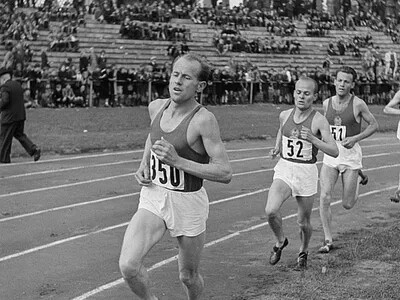
Incredibly, Zátopek’s gold in the marathon came in his first ever race over 26.2 miles.
The Czech athlete was also the first runner in history to go sub-29 minutes in the 10,000m and went undefeated in his first 38 races over the distance from 1948 through to 1954.
Zátopek’s legacy isn’t just defined by his athletics achievements though. The 8000-plus runners that will take to the streets on Sunday (May 5) for the Prague International Marathon – starting and ending around the Old Town Square – can thank Zátopek, Capalbo and Bordin for their vision back in 1995.
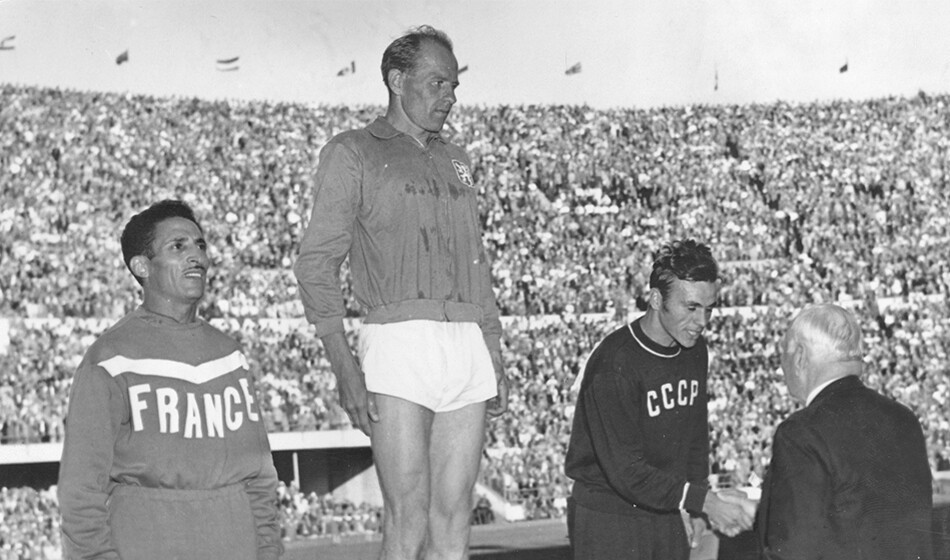
“You know, nearly 30 years ago I had this simple and beautiful dream,” Capalbo tells AW. “A friend of mine [Bordin] said to me that we should organize a marathon. So we went to see Mr Zátopek. That was the start of everything.
“When we went and met Mr Zátopek, we started off with a coffee and bábovka. At the end we tasted some lovely brandy that Mr Zátopek had. After that, we’d devised the marathon but we needed to work out where the people would run.
“So Mr Zátopek decided to draw the course for the Prague International Marathon on a napkin. The rest is history.”
The elite winners in the inaugural year of the event were Ethiopian Turbo Tummo (2:12:44) and Ukrainian Svetlana Tkach (2:38:33).
Since then, the course records have plummeted and are currently held by Alexander Mutiso (2:05:09 – 2023) and Lonah Salpeter (2:19:46 – 2019), although sadly Zátopek did not live to see the recent races as he died in 2000 aged 78.
Prague is a historically quick meet and the fact that the IOC have extended the qualification period for the Olympic marathon past the April 30 date, to include the Prague International Marathon, says a lot.
It means runners from a multitude of continents have flocked to the Czech Republic to meet the standard.
“The Prague International Marathon is a very prestigious event for both the IOC and World Athletics,” Capalbo says.
“There are so many people running to get the standard. The Olympics is the pinnacle of sport and it’s a celebration.”
Capalbo is also keen to stress of the importance of the masses. He states that running is much more than just one individual and his mission is to create sports events to make “people happy and healthy”, plus making the sport “more watchable for the general public”.
“This is not a normal job and running is not a normal sport,” he adds. “It’s a little bit specific. We wanted to give the perception that the winners of running are those who finish the race, not just those first across the line. The marathon is a fantastic advertisement for the city and it’s great for people’s mental health.
“We are a small country in the Czech Republic and many people come from abroad to the marathon. It’s a great income for Prague. This generates happiness and love for an event which is a tradition for us.”
There will also be the added element of “Battle of the Teams”. Successfully introduced last year, the idea is that both masses and elites are split into teams. It means that the placing of every runner matters.
This year, there will be four teams: Team Mattoni, Team Prague Airport, Team Turkish Airlines and Team Volkswagen.
“There is still the elephant in the room,” Capalbo says. “The masses don’t know the name of the winners. It’s why we’ve done Battle of the Teams so the people taking part in the marathon can look at the names of the elite athletes.
“We want to get the people close to the elite athletes. They also need European legends like Paula Radcliffe, Sebastian Coe and Rosa Mota to look up to. When you go to watch a football match you go crazy for your team and that’s what I need to see in running.”
by Tim Adams
Login to leave a comment
Prague Marathon
The Volkswagen Prague Marathon, established in 1995, has evolved into a premier event on the international running calendar, renowned for its scenic course through one of Europe's most picturesque cities. The marathon's route meanders through Prague's historic streets, offering runners views of iconic landmarks such as the Charles Bridge and Old Town Square. The predominantly flat terrain provides an excellent...
more...This Teen Ultrarunner Wants to Take on the World's Most Prestigious Races
Last November, 17-year-old Sebastian Salsbury received an email reminder. He had 13 days to decide about entering the race lottery for the 2024 Western States 100 Mile Endurance Run, regarded as one of the most prestigious trail events in the world.
Rules stipulate that each lottery applicant must be at least 18 years old on race day. On January 20, Salsbury will finally meet the age requirement, five years after he technically ran a qualifying time to enter the lottery for the first time.
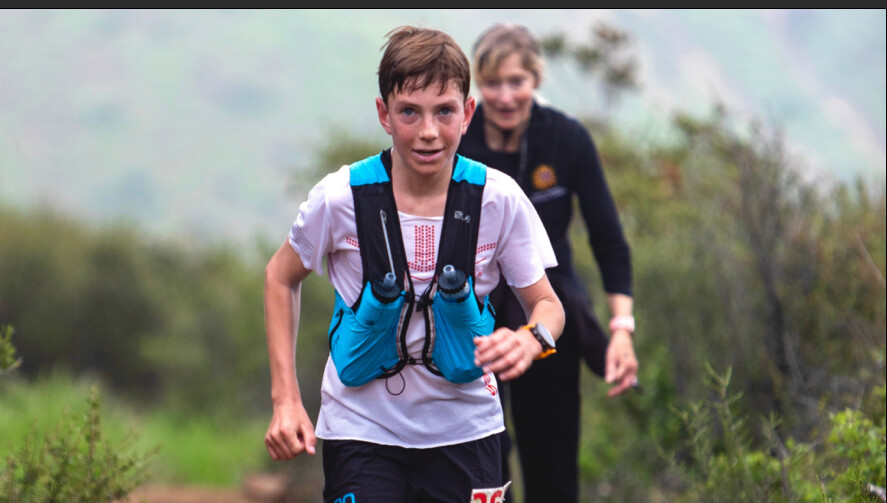
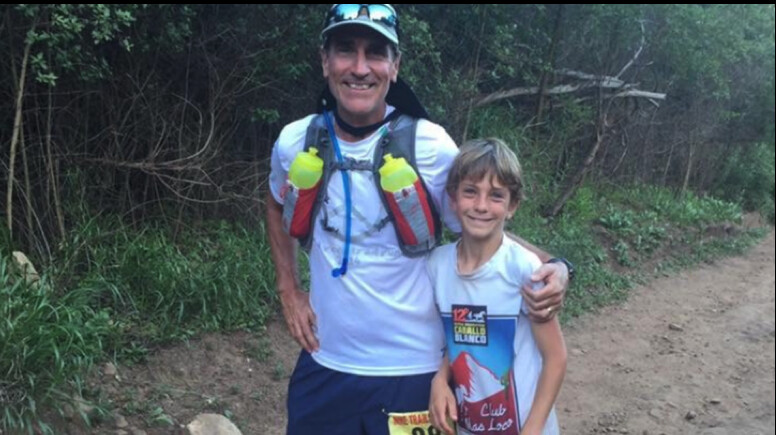
It's been a goal he's been progressing toward for years. In 2020, when Salsbury was 13, he completed the Black Canyon 100K in Arizona in 15 hours 49 minutes and 32 seconds, well within the 17-hour time limit necessary to qualify for the Western States lottery.
"It's hard to put that experience into words," Salsbury says. "It was one of the most beautiful courses I've ever been on. That race made me feel like I was doing the right thing in my life."
Starting Young
Salsbury, who grew up in Santa Barbara, California, was attracted to the trails at a young age. Throughout his childhood, his parents often brought him to nearby trails to hike. The hikes gradually transitioned into jogs, and Salsbury's relationship with the outdoors continued to grow. The mountains, he says, were a playground.
Though Salsbury played basketball, football, and soccer growing up, his love for running took over. He quit the other sports after junior high school to minimize risk for injury, he says, and to dedicate more time to running.
A few years after Salsbury's entry into racing-his first was a local 5K on the road when he was four-he ran the Santa Barbara Red Rock Trail Run. Despite being just nine, he kept up with his father for all 28 miles. The following year, for the Santa Barbara Nine Trails, Salsbury traversed 35 miles with nearly 12,000 feet of vertical gain from the Jesusita trailhead to Romero Canyon trailhead and back, again alongside his father, a road marathoner.
Next, Salsbury entered the Black Canyon 100K in Arizona. He recalled the point-to-point race as one of his most difficult running experiences to date.
"I was basically crying," Salsbury remembers, adding that his hydration vest kept digging into his ribs. "I loved the feeling of working hard and going through really low moments and overcoming them. I crave it."
Supported for the last 20 miles by his coach at the time, Tyler Hansen, Salsbury crossed the finish feeling both defeated and uplifted. The Black Canyon race gave him the confidence to continue challenging himself in ultrarunning.
"My best friends don't understand," Salsbury says about the pursuit of ultras, which he envisions including some of the most technically demanding and prestigious races in the world: the Western States 100 in California, Ultra-Trail du Mont-Blanc through the French Alps, as well as the Hardrock Hundred Mile Endurance Run in Colorado. Salsbury admits that running disrupts his social life, and also that he doesn't mind the solitude the sport necessitates. In fact, he welcomes it.
"I like the feeling of being alone in the mountains," Salsbury says. "It's a great way to free your mind."
Given that he is still a teen-the average age of trail runners is in the mid-30s-Salsbury has not been immune to negative comments over the years. "It's not cool at all to hate, but I can still see where someone would be coming from, seeing a kid doing all that stuff," Salsbury says. "There are going to be people that troll and hate for no reason. That's just life."
A Purposeful Progression
The training required to undertake ultras is out of this world for a typical high school runner. To ensure he's programming himself with sufficient miles without overloading his still-developing body, Salsbury sought the guidance of his longtime role model, pro trail runner Hayden Hawks. The two met when Salsbury was 14, and their camaraderie clicked naturally.
"I had lots of mentors help me at a young age in my running journey, and I felt the responsibility to do the same with Sebastian," says Hawks, 32. "We have taken a patient and gradual approach, developing strength, speed, and a foundation that will help him build into the longer distance races at an older age."
Hawks has coached Salsbury for the past two years, carefully mapping out a plan that tallies 50 miles weekly spread across six days. Salisbury complements the mileage with a combination of hiking, mountain biking, and intervals on an indoor bike as part of his cross training. Three days a week, he does strength exercises at Varient Training Lab in Santa Barbara. To fit it all in so he could have ample opportunity to train and compete, prior to the Covid-19 pandemic, Salsbury enrolled in West River Academy, an online private school program.
"I have zero regrets," Salsbury says. "The opportunity that it's given me to travel with my family and run and be able to guide my days how I want and learn at my own pace, I'm grateful for that."
The online program lasts up to three hours a day, which is "a lot less than standard high school," Salsbury chuckles. In 2022, he researched computer engineering and built a computer from scratch. This year, as part of the online curriculum, he's learning to speak German in addition to researching for a project about coffee and sustainability, which he is especially interested in as a part-time certified barista. Salisbury works at a local coffee shop twice a week.
So far, he's enjoying the unique balance of online learning and ultrarunning. "I like to keep myself busy," he says. "I've always had this next-level energy. Obviously it goes into running, but it's who I am as a person."
His days are hardly routine compared to the average high schooler. On a recent Thursday, Salsbury started the day with a three-minute cold plunge before he spent the remainder of the morning packing running shoes, thermal layers, his COROS watch, and a heart rate monitor ahead of a four-day trip to Boulder, Colorado, to train with a friend at altitude.
Living at sea level in Santa Barbara, Salsbury doesn't often have the opportunity to run at altitude beyond twice a year, mostly "just a vacation with my family where I get to do some running," he says.
As much as he has run over the years, Salsbury says he's been fortunate to never have had any serious injuries. This year, a growth spurt of eight inches led to severe shin splints, and Salsbury, who is now 6-foot-4 and 162 pounds, took four months off from running.
Now, life is back to business as usual. Salsbury is planning ahead. His next race is the La Cuesta Ranch 25K in San Luis Obispo, California, in late January. After he graduates from high school in June 2024, he wants to pursue a running career ideally full-time, though he hasn't stated when he aims to turn professional.
"I've always had the intention to be one of the greatest ultrarunners in the world one day. That will continue to be my goal," Salsbury says. "I want to leave a positive impact on the sport and be an inspiration to other athletes of any age, but obviously the youth because that's how I grew up. People can judge and say whatever they want, but I do want to be the best of all time."
by Trail Runner Magazine
Login to leave a comment
HOW TO START A RUN WHEN YOU DON’T FEEL LIKE IT
I’VE ALWAYS FELT validation when reading a story about writers and their love of procrastination. I thought it was just me who gets more work done around the house with a deadline looming and who finds every excuse not to write until the time feels exactly right—or the time has run out.
Well, a while ago I realized how I do this with running, too, especially long runs on the weekends. I stare at my closet trying to determine the perfect outfit for the weather. I go back and forth on what to eat and how much coffee to drink. Should I have half a cup? Down a full one (or two) then wait until after I go to the bathroom to head out? I stop for a quick foam-rolling session or grab my massage gun for a bit, then do some dynamic stretches. Before I know it, I’m starting my run an hour later than planned.
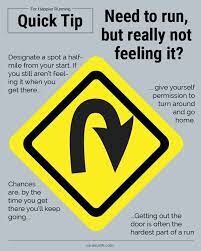
Some prerun rituals are necessary, of course. A warmup helps me feel ready for those initial steps. If I have double-digit miles on deck, I definitely need to eat and drink before I start my stride. But really, I’m just putting off those initial few miles—those steps where the legs feel tight and the upper body cranky, the mind remains in bed, and instead of finding a rhythm, the steps feel like short, broken verses waiting for me to string them together in better harmony. I tend to overthink my runs, especially the start, rather than focusing on how the sport makes me feel powerful and strong, and like I’m gliding over the trail rather than clomping with every footfall. That rumination makes getting out the door super difficult sometimes.
I know I’m not the only one who has trouble simply getting started. Ahead of the Chicago Marathon this fall, Emily Sisson, pro runner and U.S. women’s marathon record holder, said one of her favorite mantras is “motivation follows action.” She’s not always inspired to go run 20 miles or clock a tempo run at a 5-minute pace. But once she starts moving—after a few warmup exercises with her mini band or a light and breezy running warmup—the drive to put in the work picks up.
Similarly, Tristen Rodriguez, a RW+ member who trained with Runner’s World for the 2023 NYC Marathon, mentioned how he is only motivated to run about 20 to 30 percent of the time during a training cycle. It’s the discipline that gets him out there. Checking off training runs and workouts on a plan can give you a shove to get out the door instead of relying on the sheer desire to do so.
Like Rodriguez, I’ve found that setting goals, following a schedule, and tackling workouts on a plan helps remove the need to rely on willpower alone, and adds in the determination to succeed. That’s one reason I sign up for races on a consistent basis throughout the year. And like Sisson, I know once I start moving, I’ll want to pick it up and conquer the run ahead because the resolve to perform well settles into my stride.
Focusing on how good it feels to finish a run—no matter the pace or distance—also gets me out the door. So does removing any barriers to said door. That’s why, despite being more of a night owl, I’ve come to love early morning easy runs: I can basically roll out of bed, slip into the outfit I laid out the night before, and hit the road. No fretting about prerun activities. I just go, without thinking about it.
Even with all my love and deep appreciation for running, I still have to tell myself a little story about the run ahead, about how wonderful it will feel just to get myself moving (even if that’s not entirely the truth, at least not all the time). These helpful mind games give me a little kick in the glutes to start running. And sometimes, when I find I’m still procrastinating, I just thank my deadline-driven mindset, which turns on when time is running out and I need to stop thinking and just start stepping.
Login to leave a comment
This Truck Driver Started Running the Length of One Song—Now He’s Finished 3 Marathons
“My life is totally different today because I have purpose. I also feel 100 times better health-wise.”
I was an amateur boxer as a teenager. I stopped boxing after age 17, and never took care of myself until I was 36 years old. For 19 years, I ate badly and did not exercise, and started to gain weight rapidly after the age of 30 when I became a truck driver.
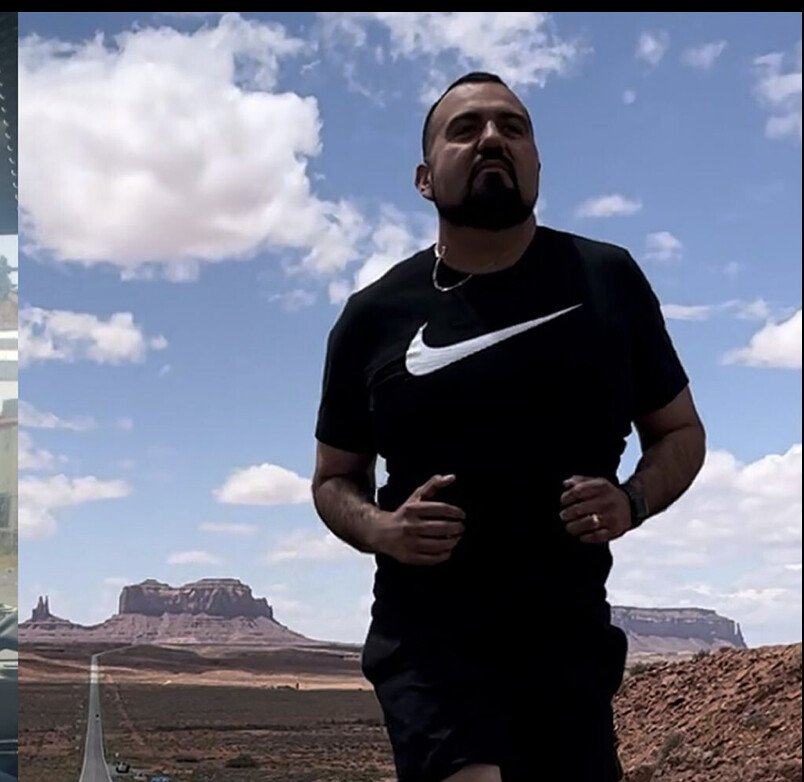
Being a trucker, I ate a lot of truck stop food and fast food and didn’t move much. My life was simple: work, eat, come home to my family, and do it all over again. My struggle was always my diet. I had a food addiction.
I didn’t have any major health problems other than high blood pressure, but I knew I had to make a change as it was only a matter of time before I’d be on medications, and other health issues would catch up to me because of my unhealthy lifestyle.
It started as a New Year’s resolution on January 1, 2022. I was 36 years old and my clothes no longer fit me. I also realized that I couldn’t keep up with my 8-year-old daughter or do anything outside with the family because I was out of shape and tired all the time.
I thought to myself, ‘What kind of example am I showing my daughter?’ So I made a promise to myself and family that in 2022, I was going to take care of myself and set goals. I set a very challenging goal to lose 50 pounds in three months.
I started out by walking in January 2022, and lost 25 pounds in that month alone. In February, I started to implement running with my walks at the local parks in San Antonio, Texas. By March, I joined a gym.
I began walking and running on the treadmill—it was so hard for me to run at first because my legs and calves cramped up often. I couldn’t even run for 30 seconds in January, so in March, my challenge was to try to run the length of the song the gym had playing on the intercom. In April, I completed my first nonstop mile of running—I was so excited to achieve that.
After April, I ran about two miles a day on the treadmill after lifting weights, and met my goal of losing 50 pounds in three months.
My main focus during this time was weight lifting, but one day in late August, I challenged myself after my workout to see if I could run three miles nonstop on the treadmill. To my surprise, I did it. After that, I started to go back to the parks and run.
A buddy at the gym told me about a local 5K in San Antonio. I ran it and fell in love with the race environment. It was there I heard runners talking about the San Antonio Rock ‘n’ Roll Marathon.
It was 11 weeks away, and I told them I would love to run the full marathon. They all chuckled a bit and looked at me like I was crazy. How would a person like me who barely started running have time to prepare for a full marathon in just 11 weeks? Well, I started training for it by following runners on TikTok and finding out what training schedule they followed.
One month later in October, I was running 15 miles nonstop. In December, I completed the San Antonio Rock ‘n’ Roll Marathon in a time of 5 hours and 9 minutes. The feeling of accomplishment was beyond amazing.
After the marathon, I made up my mind: Running was something I would continue. Six months later, in May 2023, I ran the Shiprock Marathon in New Mexico in 4 hours 57 minutes. It was quite an honor to run with the Navajo people at the Navajo reservation. I then ran the San Antonio Rock ‘n’ Roll Marathon again this past December 2023, and my time was 40 minutes faster than the year prior. The next marathon on my list is the Utah Valley Marathon in June 2024.
Today, I run four to five times a week with Saturdays being my long run. My goal is to keep running marathons and to get faster. My ultimate goal is to qualify for Boston. It sounds far-fetched because I’m currently running 4:30 marathon times, but running this distance seemed impossible two years ago.
I work 50 hours a week for a local construction company. While I have the luxury of coming home every night, the days are long. To maintain my healthy lifestyle I pack a lunch everyday—I’m fortunate that my wife prepares these lunches for me. If I didn’t pack my lunch, I’d be eating truck stop food. After work, I go to the gym for strength training, and or run around the local parks. I usually don’t get home until 8:30 at night.
My life is totally different today because I have purpose. I also feel 100 times better health-wise.
These three tips have made my running journey a success:
1. Stay consistent
Stay consistent with running, your workout routine, and diet. Consistency is key. Just start and never give up. It’s going to be difficult, but stick with it and results and progress will come. It’s you versus you. Don’t compare your journey to anyone else’s. It’s your battle.
2. Eat healthy
Diet plays a huge factor on how you fuel for your runs and the right nutrition helps you perform better. I’ve noticed on days I eat bad it really affects my runs. Before this journey, my diet was horrible. All I drank was soda and ate fast food. I’m Hispanic and I love Mexican food, but it isn’t the healthiest. Now I only drink water and black coffee. I stay away from fried food, processed foods, sugar, and flour. I love pasta and chicken Alfredo the day before my long runs. I eat lean meat, chicken breast, lean ground turkey, salmon, and sweet potatoes, along with a lot of fruit and vegetables.
3. Stay confident
You have to believe in yourself. You have to have faith in yourself and the process. Faith over fear. I learned you can do more than you can imagine. The mentality I have now compared to two years ago is night and day.
Adam’s Must-Have Gear
→ Nike Vaporfly Shoes: Of all the shoes I’ve tried, Nike Vaporfly are my go-to race-day shoes. They feel the best and I’ve had my PR with these shoes.
→ GU Running Gels: These work the best for me for fueling on long runs and don’t upset my stomach and give me a great boost.
→ Night Buddy Headlamp: For my early morning or night runs, this headlamp keeps me safe and well lit. It’s a super light headlamp and very bright.
Login to leave a comment
The Pill That Over Half the Distance Medallists Used at the 2023 Worlds
What's the deal with sodium bicarbonate?What if there was a pill, new to the market this year, that was used by more than half of the distance medalists at the 2023 World Athletics Championships? A supplement so in-demand that there was a reported black market for it in Budapest, runners buying from other runners who did not advance past the preliminary round — even though the main ingredient can be found in any kitchen?
How did this pill become so popular? Well, there are rumors that Jakob Ingebrigtsen has been taking it for years — rumors that Ingebrigtsen’s camp and the manufacturers of the pill will neither confirm nor deny.
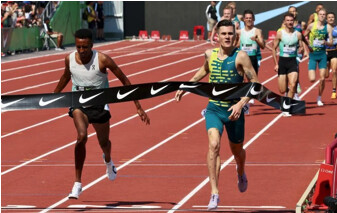
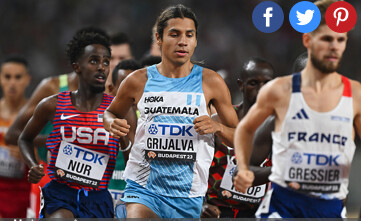
So about this pill…does it work? Does it actually boost athletic performance? Ask a sports scientist, someone who’s studied it for more than a decade, and they’ll tell you yes.
“There’s probably four or five legal, natural supplements, if you will, that seem to have withstood the test of time in terms of the research literature and [this pill] is one of those,” says Jason Siegler, Director of Human Performance in the College of Health Solutions at Arizona State University.
But there’s a drawback to this pill. It could…well, let’s allow Luis Grijalva, who used it before finishing 4th in the World Championship 5,000m final in Budapest, to explain.
“I heard stories if you do it wrong, you chew it, you kind of shit your brains out,” Grijalva says. “And I was a little bit scared.”
The research supports that, too.
“[Gastrointestinal distress] has by far and away been the biggest hurdle for this supplement,” Siegler says.Okay, enough with the faux intrigue. If you’ve read the subtitle of this article, you know the pill we are talking about is sodium bicarbonate. Specifically, the Maurten Bicarb System, which has been available to the public since February and which has been used by some of the top teams in endurance sports: cycling juggernaut Team Jumbo-Visma and, in running, the On Athletics Club and NN Running Team. (Maurten has sponsorship or partnership agreements with all three).Some of the planet’s fastest runners have used the Maurten Bicarb System in 2023, including 10,000m world champion Joshua Cheptegei, 800m silver medalist Keely Hodgkinson, and 800m silver medalist Emmanuel Wanyonyi. Faith Kipyegon used it before winning the gold medal in the 1500m final in Budapest — but did not use it before her win in the 5,000m final or before any of her world records in the 1500m, mile, and 5,000m.
Herman Reuterswärd, Maurten’s head of communications, declined to share a full client list with LetsRun but claims two-thirds of all medalists from the 800 through 10,000 meters (excluding the steeplechase) used the product at the 2023 Worlds.
After years of trial and error, Maurten believes it has solved the GI issue, but those who have used their product have reported other side effects. Neil Gourley used sodium bicarbonate before almost every race in 2023, and while he had a great season — British champion, personal bests in the 1500 and mile — his head ached after races in a way it never had before. When Joe Klecker tried it at The TEN in March, he felt nauseous and light-headed — but still ran a personal best of 27:07.57. In an episode of the Coffee Club podcast, Klecker’s OAC teammate George Beamish, who finished 5th at Worlds in the steeplechase and used the product in a few races this year, said he felt delusional, dehydrated, and spent after using it before a workout this summer.
“It was the worst I’d felt in a workout [all] year, easily,” Beamish said.
Not every athlete who has used the Maurten Bicarb System has felt side effects. But the sport as a whole is still figuring out what to do about sodium bicarbonate.
Many athletes — even those who don’t have sponsorship arrangements with Maurten — have added it to their routines. But Jumbo-Visma’s top cyclist, Jonas Vingegaard — winner of the last two Tours de France — does not use it. Neither does OAC’s top runner, Yared Nuguse, who tried it a few times in practice but did not use it before any of his four American record races in 2023.“I’m very low-maintenance and I think my body’s the same,” Nuguse says. “So when I tried to do that, it was kind of like, Whoa, what is this? My whole body felt weird and I was just like, I either did this wrong or this is not for me.”
How sodium bicarbonate works
The idea that sodium bicarbonate — aka baking soda, the same stuff that goes in muffins and keeps your refrigerator fresh — can boost athletic performance has been around for decades.
“When you’re exercising, when you’re contracting muscle at a really high intensity or a high rate, you end up using your anaerobic energy sources and those non-oxygen pathways,” says Siegler, who has been part of more than 15 studies on sodium bicarbonate use in sport. “And those pathways, some of the byproducts that they produce, one of them is a proton – a little hydrogen ion. And that proton can cause all sorts of problems in the muscle. You can equate that to that sort of burn that you feel going at high rates. That burn, most of that — not directly, but indirectly — is coming from the accumulation of these little hydrogen ions.”
As this is happening, the kidneys produce bicarbonate as a defense mechanism. For a while, bicarbonate acts as a buffer, countering the negative effects of the hydrogen ions. But eventually, the hydrogen ions win.The typical concentration of bicarbonate in most people hovers around 25 millimoles per liter. By taking sodium bicarbonate in the proper dosage before exercise, Siegler says, you can raise that level to around 30-32 millimoles per liter.
“You basically have a more solid first line of defense,” Siegler says. “The theory is you can go a little bit longer and tolerate the hydrogen ions coming out of the cell a little bit longer before they cause any sort of disruption.”
Like creatine and caffeine, Siegler says the scientific literature is clear when it comes to sodium bicarbonate: it boosts performance, specifically during events that involve short bursts of anaerobic activity. But there’s a catch.
***
Bicarb without the cramping
Sodium bicarbonate has never been hard to find. Anyone can swallow a spoonful or two of baking soda with some water, though it’s not the most appetizing pre-workout snack. The problem comes when the stomach tries to absorb a large amount of sodium bicarbonate at once.
“You have a huge charged load in your stomach that the acidity in your stomach has to deal with and you have a big shift in the partial pressure of carbon dioxide across the gut,” Siegler says. “And that’s what gives you the cramping.”
A few years ago, Maurten was trying to solve a similar problem for marathoners trying to ingest large amounts of carbohydrates during races. The result was their carbohydrate drink, which relies on something called a hydrogel to form in the stomach. The hydrogel resists the acidity of the stomach and allows the carbohydrates to be absorbed in the intestine instead, where there is less cramping.
“We thought, okay, we are able to solve that one,” Reuterswärd says. “Could we apply the hydrogel technology to something else that is really risky to consume that could be beneficial?”
For almost four years, Maurten researched the effects of encapsulating sodium bicarbonate in hydrogels in its Swedish lab, conducting tests on middle-distance runners in Gothenburg. Hydrogels seemed to minimize the risk, but the best results came when hydrogels were paired with microtablets of sodium bicarbonate.
The result was the Maurten Bicarb System — “system,” because the process for ingesting it involves a few steps. Each box contains three components: a packet of hydrogel powder, a packet of tiny sodium bicarbonate tablets, and a mixing bowl. Mix the powder with water, let it stand for a few minutes, and sprinkle in the bicarb.The resulting mixture is a bit odd. It’s gooey. It’s gray. It doesn’t really taste like anything. It’s not quite liquid, not quite solid — a yogurt-like substance flooded with tiny tablets that you eat with a spoon but swallow like a drink.
The “swallow” part is important. Chew the tablets and the sodium bicarbonate will be absorbed before the hydrogels can do their job. Which means a trip to the toilet may not be far behind.
When Maurten launched its Bicarb System to the public in February 2023, it did not have high expectations for sales in year one.
“It’s a niche product,” Reuterswärd says. “From what we know right now, it maybe doesn’t make too much sense if you’re an amateur, if you’re just doing 5k parkruns.”
But in March, Maurten’s product began making headlines in cycling when it emerged that it was being used by Team Jumbo-Visma, including by stars Wout van Aert and Primož Roglič. Sales exploded. Because bicarb dosage varies with bodyweight, Maurten’s system come in four “sizes.” And one size was selling particularly well.
“If you’re an endurance athlete, you’re around 60-70 kg (132-154 lbs),” Reuterswärd says. “We had a shortage with the size that corresponded with that weight…The first couple weeks, it was basically only professional cyclists buying all the time, massive amounts. And now we’re seeing a similar development in track & field.”
If there was a “Jumbo-Visma” effect in cycling, then this summer there was a “Jakob Ingebrigtsen” effect in running.To be clear: there is no official confirmation that Ingebrigtsen uses sodium bicarbonate. His agent, Daniel Wessfeldt, did not respond to multiple emails for this story. When I ask Reuterswärd if Ingebrigtsen has used Maurten’s product, he grows uncomfortable.
“I would love to be very clear here but I will have to get back to you,” Reuterswärd says (ultimately, he was not able to provide further clarification).
But when Maurten pitches coaches and athletes on its product, they have used data from the past two years on a “really good” 1500 guy to tout its effectiveness, displaying the lactate levels the athlete was able to achieve in practice with and without the use of the Maurten Bicarb System. That athlete is widely believed to be Ingebrigtsen. Just as Ingebrigtsen’s success with double threshold has spawned imitators across the globe, so too has his rumored use of sodium bicarbonate.
Grijalva says he started experimenting with sodium bicarbonate “because everybody’s doing it.” And everybody’s doing it because of Ingebrigtsen.
“[Ingebrigtsen] was probably ahead of everybody at the time,” Grijalva said. “Same with his training and same with the bicarb.”
OAC coach Dathan Ritzenhein took sodium bicarbonate once before a workout early in his own professional career, and still has bad memories of swallowing enormous capsules that made him feel sick. Still, he was willing to give it a try with his athletes this year after Maurten explained the steps they had taken to reduce GI distress.
“Certainly listening to the potential for less side effects was the reason we considered trying it,” says Ritzenhein. “I don’t know who is a diehard user and thinks that it’s really helpful, but around the circuit I know a lot of people that have said they’ve [tried] it.”
Coach/agent Stephen Haas says a number of his athletes, including Gourley, 3:56 1500 woman Katie Snowden, and Worlds steeple qualifier Isaac Updike, tried bicarb this year. In the men’s 1500, Haas adds, “most of the top guys are already using it.”
Yet 1500-meter world champion Josh Kerr was not among them. Kerr’s nutritionist mentioned the idea of sodium bicarbonate to him this summer but Kerr chose to table any discussions until after the season. He says he did not like the idea of trying it as a “quick fix” in the middle of the year.
“I review everything at the end of the season and see where I could get better,” Kerr writes in a text to LetsRun. “As long as the supplement is above board, got all the stamps of approvals needed from WADA and the research is there, I have nothing against it but I don’t like changing things midseason.”
***
So does it actually work?
Siegler is convinced sodium bicarbonate can benefit athletic performance if the GI issues can be solved. Originally, those benefits seemed confined to shorter events in the 2-to 5-minute range where an athlete is pushing anaerobic capacity. Buffering protons does no good to short sprinters, who use a different energy system during races.
“A 100-meter runner is going to use a system that’s referred to the phosphagen or creatine phosphate system, this immediate energy source,” Siegler says. “…It’s not the same sort of biochemical reaction that eventuates into this big proton or big acidic load. It’s too quick.”
But, Siegler says, sodium bicarbonate could potentially help athletes in longer events — perhaps a hilly marathon.
“When there’s short bursts of high-intensity activity, like a breakaway or a hill climb, what we do know now is when you take sodium bicarbonate…it will sit in your system for a number of hours,” Siegler says. “So it’s there [if] you need it, that’s kind of the premise behind it basically. If you don’t use it, it’s fine, it’s not detrimental. Eventually your kidneys clear it out.”Even Reuterswärd admits that it’s still unclear how much sodium bicarbonate helps in a marathon — “honestly, no one knows” — but it is starting to be used there as well. Kenya’s Kelvin Kiptum used it when he set the world record of 2:00:35at last month’s Chicago Marathon; American Molly Seidel also used it in Chicago, where she ran a personal best of 2:23:07.
Siegler says it is encouraging that Maurten has tried to solve the GI problem and that any success they experience could spur other companies to research an even more effective delivery system (currently the main alternative is Amp Human’s PR Lotion, a sodium bicarbonate cream that is rubbed into the skin). But he is waiting for more data before rendering a final verdict on the Maurten Bicarb System.
“I haven’t seen any peer-reviewed papers yet come out so a bit I’m hesitant to be definitive about it,” Siegler said.
Trent Stellingwerff, an exercise physiologist and running coach at the Canadian Sport Institute – Pacific, worked with Siegler on a 2020 paper studying the effect of sodium bicarbonate on elite rowers. A number of athletes have asked him about the the Maurten Bicarb System, and some of his marathoners have used the product. Like Siegler, he wants to see more data before reaching a conclusion.
“I always follow the evidence and science, and to my knowledge, as of yet, I’m unaware of any publications using the Maurten bicarb in a double-blind, placebo-controlled clinical trial,” Stellingwerff writes in a text to LetsRun. “So without any published data on the bicarb version, I can’t really say it does much.”
The closest thing out there right now is a British study conducted by Lewis Goughof Birmingham City University and Andy Sparks of Edge Hill University. In a test of 10 well-trained cyclists, Gough and Sparks found the Maurten Bicarb System limited GI distress and had the potential to improve exercise performance. Reuterswärd says the study, which was funded by Maurten, is currently in the review process while Gough and Sparks suggested further research to investigate their findings.
What about the runners who used sodium bicarbonate in 2023?
Klecker decided to give bicarb a shot after Maurten made a presentation to the OAC team in Boulder earlier this year. He has run well using bicarb (his 10,000 pb at The TEN) and without it (his 5,000 pb in January) and as Klecker heads into an Olympic year, he is still deciding whether the supposed benefits are worth the drawbacks, which for him include nausea and thirst. He also says that when he has taken the bicarb, his muscles feel a bit more numb than usual, which has made it more challenging for him to gauge his effort in races.
“There’s been no, Oh man I felt just so amazing today because of this bicarb,” Klecker says. “If anything, it’s been like, Oh I didn’t take it and I felt a bit more like myself.”
Klecker also notes that his wife and OAC teammate, Sage Hurta-Klecker, ran her 800m season’s best of 1:58.09 at the Silesia Diamond League on July 16 — the first race of the season in which she did not use bicarb beforehand.
A number of athletes in Mike Smith‘s Flagstaff-based training group also used bicarb this year, including Grijalva and US 5,000 champion Abdihamid Nur. Grijalva did not use bicarb in his outdoor season opener in Florence on June 2, when he ran his personal best of 12:52.97 to finish 3rd. He did use it before the Zurich Diamond League on August 31, when he ran 12:55.88 to finish 4th.“I want to say it helps, but at the same time, I don’t want to rely on it,” Grijalva says.
Almost every OAC athlete tried sodium bicarbonate at some point in 2023. Ritzenhein says the results were mixed. Some of his runners have run well while using it, but the team’s top performer, Nuguse, never used it in a race. Ritzenhein wants to continue testing sodium bicarbonate with his athletes to determine how each of them responds individually and whether it’s worth using moving forward.
That group includes Alicia Monson, who experimented with bicarb in 2023 but did not use it before her American records at 5,000 and 10,000 meters or her 5th-place finish in the 10,000 at Worlds.
“It’s not the thing that’s going to make or break an athlete,” Ritzenhein says. “…It’s a legal supplement that has the potential, at least, to help but it doesn’t seem to be universal. So I think there’s a lot more research that needs to be done into it and who benefits from it.”
The kind of research scientists like Stellingwerff want to see — double-blind, controlled clinical trials — could take a while to trickle in. But now that anyone can order Maurten’s product (it’s not cheap — $65 for four servings), athletes will get to decide for themselves whether sodium bicarbonate is worth pursuing.
“The athlete community, obviously if they feel there’s any sort of risk, they’re weighing up the risk-to-benefit ratio,” Siegler said. “The return has got to be good.”
Grijalva expects sodium bicarbonate will become part of his pre-race routine next year, along with a shower and a cup of coffee. Coffee, and the caffeine contained wherein, may offer a glimpse at the future of bicarb. Caffeine has been widely used by athletes for longer than sodium bicarbonate, and the verdict is in on that one: it works. Yet plenty of the greats choose not to use it.
Nuguse is among them. He does not drink coffee — a fact he is constantly reminded of by Ritzenhein.
“I make jokes almost every day about it,” Ritzenhein says. “His family is Ethiopian – coffee tradition and ceremony is really important to them.”
Ritzenhein says he would love it if Nuguse drank a cup of coffee sometime, but he’s not going to force it on him. Some athletes, Ritzenhein says, have a tendency to become neurotic about these sorts of things. That’s how Ritzenhein was as an athlete. It’s certainly how Ritzenhein’s former coach at the Nike Oregon Project, Alberto Salazar, was — an approach that ultimately earned Salazar a four-year ban from USADA.
Ritzenhein says he has no worries when it comes to any of his athletes using sodium bicarbonate — Maurten’s product is batch-tested and unlike L-carnitine, there is no specific protocol that must be adhered to in order for athletes to use it legally under the WADA Code. Still, there is something to be said for keeping things simple.
“Yared knows how his body feels,” Ritzenhein says. “…He literally rolls out of practice and comes to practice like a high schooler with a Eggo waffle in hand. Probably more athletes could use that kind of [approach].”
Talk about this article on our world-famous fan forum / messageboard.
by Let’s Run
Login to leave a comment
Running Strides Makes Me Look Ridiculous, But They Also Make Me Faster
Yeah, doing strides in public can make you look funny. They’re also crucial to improving form and speed.
When I first moved to my small Pennsylvania city two years ago, I naturally scoped out the training basics: a greenway for long runs and tempos, dirt trails for easy days, a track, and—to be used most frequently—a flat patch of grass or road at least 100 meters long within a block or two of my house. That last one might sound unnecessarily specific.
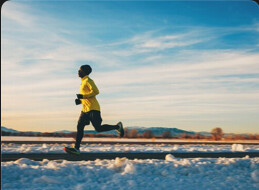
I was looking for a spot where I could run “strides.” Strides (never “striders”) are an imperative part of my year-round training, no matter what distance I’m targeting. After easy runs, I do four to eight strides, somewhere around 5K pace, taking enough time between each one to get my heart rate back down. They’re faster than my normal running pace, but not fast enough to make my legs sore. The purpose isn’t to make me tired, but to keep me in touch with some speed and reinforce proper biomechanics at the late stages of a run. While most coaches recommend doing strides for 100 meters, I typically eyeball it. A city block, a football field, or even just 10 to 15 seconds is close enough.
Before I start strides, I do a series of drills to prime my legs for faster running and to establish good form, like making powerful contact with the ground and landing my feet underneath my hips. I do ankle dribbles, calf dribbles, knee dribbles, straight-leg bounds, fast leg (right leg), and fast leg (left leg). All with a slow walk back to the start before beginning the next percussive drill. Then I start my strides.
The dream spot for strides is an artificial-turf soccer field where I can take off my shoes when I feel like it, but in my town, I have to settle for a fairly busy back alley. The street attracts construction workers getting McDonald’s coffee before work, mothers pushing strollers, daily dog walkers, my neighbor who sometimes smokes weed on her porch. So during the four times a week I “stride out,” I can’t help but feel a little self-conscious. I assume the people walking near me think I’m strange for barreling down the street at race pace. Sometimes I’m worried that people will think I’m chasing them. There’s always a part of me that wants to explain to bystanders what I’m doing: I promise I’m not trying to steal your purse, I just want to PR in the half marathon!
One morning, I noticed a man at the end of the alley. He was sitting behind an easel, facing down the road toward me. It reminded me of an exercise I did in high school: Our art class was told to find a place in the city to set up and paint whatever we saw. Most things—buildings, signs, trees—remain consistently still, so you’re able to fill in details with appropriate hues and shadows. But some things move quickly. You might not have time to paint the skateboarder that flies across the street. I like to imagine I made it into the man’s painting. I was doing strides in the alley for about 10 minutes, enough time for him to get a good look. Even though I always wonder if people are watching me when I do strides, he’s the only person I’m certain was.
Since beginning to run as a high school junior nine years ago, I’ve learned that training is always a little bit embarrassing. To truly maximize my potential, I have to be comfortable with being uncomfortable. Not just in races or hard workouts, where physical discomfort is inevitable, but I’ve accepted that being vulnerable is how I grow stronger and more confident.
I’ve got to be okay with doing things a little differently. Sometimes I’m embarrassed when I come up with a lame excuse to get out of happy hour because I have a workout the next day. Or I feel self-conscious lifting small weights at the gym, because I’m focused on injury prevention, not bulking up. But nothing humbles me more than doing strides down a public alley at 7 in the morning.
by Runner’s World
Login to leave a comment
What Will Health and Fitness Look Like in 2024? We Asked Some Experts.
Adults will take recreational cues from their children, “unprocessed” will become a marketing asset, and rodents will show us the way to eternal life.
It’s almost a wrap for 2023, which means it’s time for our annual list of fitness predictions for the coming year. As in the past, we reached out to several experts to ask what we should expect for 2024. Beyond forecasting a specific food fad or workout craze, these predictions are often about identifying a subtle shift in the zeitgeist when it comes to how we think about what it means to live well.
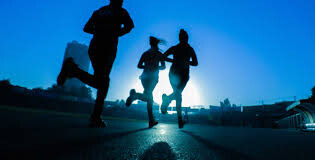
Over the years, a consistent theme has emerged: How do we embrace advances in science and technology without losing sight of the tried-and-true, or letting them corrupt an essential humanist element? This question has probably never been more urgent than in our era of accelerated machine learning. When I recently spoke to my friend Scott Lachut, a longtime veteran of the trend forecasting industry, he told me that he’d come across a few examples of gyms that offer AI-based trainers with different “personalities.” Depending on whether you wanted to be coddled or subjected to dominatrix-style abasement, your virtual coach would be able to accommodate your needs.
“I personally think that generative AI being able to offer personalization at scale is going to be pretty interesting, if a bit Big Brother-y,” Scott told me. This reminded me of that frequently cited proverb of uncertain origin, “May you live in interesting times.” Depending on your source, the line is either meant as a blessing, or a curse.
My guess is that “ultra-processed” will be the food term of the year as everyone who cares about what they eat realizes that they need to cut down on foods that are industrially produced, use industrially extracted ingredients, and are designed to replace real foods and be “addictive.”
Much evidence associates these foods with overweight and obesity-related chronic diseases (heart disease, type 2 diabetes, etc), and overall mortality. One clinical trial supports the addiction hypothesis; it demonstrates that people who eat ultra-processed diets as opposed to matched diets based on minimally processed foods take in many more calories. I would not be surprised to see non-ultra-processed products starting to be advertised as such.
—Marion Nestle, professor emerita at New York University and author of the Food Politics blog
Sometime in 2024, we will learn of an epochal breakthrough in the quest for longevity. There will be a molecule that, when given in sufficient quantities to certain transgenic rodents, extends life by an amount that, when extrapolated from rodent-years to human-years, is statistically significant. Human trials will be planned; venture capital will flow like red wine; extremely long podcasts will be recorded. Obscure herbs that contain molecules distantly related to the breakthrough will flood the Internet. The global wellness market will reach a projected size of $6.6 trillion. Life expectancy in the United States will continue its decade-long decline.
–Alex Hutchinson, Outside Sweat Science columnist and author of Endure: Mind, Body, and the Curiously Elastic Limits of Human Performance
For too long, runners at the back of the pack have felt left behind by the larger running community. Few running clubs provided support for the 12-minute (or more) mile crowd, and many race organizers packed up water stations or ran out of medals before the slowest runners crossed the finish line. Thankfully, this is beginning to change, largely due to the work of slow-running activists like Martinus Evans, founder of the Slow AF Run Club, who published a book by the same name last summer. As Evans’s star has risen, so has support for his cause: The virtual club is now more than 18,000 members strong, and runners around the world have been inspired by his calls for greater inclusivity in fitness. The past few years have also seen the launch of several in-person pace-inclusive running groups.
As more slow runners feel welcome at running events, the average course time for many major races, including the New York City Marathon, is slowing down. “The stigma of being a back-of-the-pack runner is slowly going away,” the marathon’s race director, Ted Metellus, recently told The Washington Post. Most of us face plenty of barriers to simply lacing up sneakers and finding the time to move. I’m hopeful that, for growing numbers, speed will no longer be one of them.
—Danielle Friedman, journalist and author of Let’s Get Physical: How Women Discovered Exercise and Reshaped the World
Amidst the increasing chaos and tumult of everyday life, people will crave stability and simplicity from their health and fitness routines. There will never be a shortage of those who are into the latest fad or bro-science gimmick, but it seems more and more people are becoming tired of this. There is already so much noise in the world, and one’s health and fitness approach need not contribute to it.
I suspect it’ll increasingly be back to basics—because not only do basics work, but they aren’t so exhausting. Out with the social media hype speeches from $8,000 cold plunges at five in the morning, in with a morning pot of coffee or tea, reading a book, and 30 to 60 minutes of movement that you can do consistently. The former sounds cool. The latter is the path to actual health and well-being.
—Brad Stulberg, executive coach and author of Master of Change: How to Excel When Everything is Changing, Including You
Social media can have an unfortunate flattening effect—it can feel like every person on your feed wants the exact same thing. Angels Landing is the only hike worth doing, Yosemite the only public land worth visiting, and the six big-city marathon “majors”—New York, Boston, Chicago, London, Berlin, and Tokyo—are the only footraces worth contending. Interest in these races has boomed (Boston qualification keeps getting harder, lottery applications to Chicago have more than doubled over the last decade) even as smaller marathons stagnate or even decline. Something has to give, just as a matter of pure arithmetic, so perhaps this will be the year of flexing on your followers with a PR in your local grassroots 10K.
–Chris Cohen, deputy site editor and wellness editor at GQ.com
Everyone is lonely. We are starved for human connection and contact. We are starved for reasons to go outside. We are all withering and calcifying, physically. The natural answer is, of course, stay with me, PvP zones. What is a PvP zone, you ask? PvP zones, in open-world video games, are designated areas where players are able to directly interface with—OK, attack—one another. I do not mean for there to be actual violence, obviously. But a place for adults to engage in relatively unstructured play? We need it, now more than ever.
I see you shaking your head, but that only proves how badly you need to engage with your fellow humans in a PvP zone. You may think I’m joking, but I am entirely serious. I take my dog to the dog park, and then I sit there roiling with jealousy for 45 minutes. How is it that we have a place for her, a dog, to get up to shenanigans with her fellows, while the only acceptable thing for me to do outside is sit on a bench? It’s preposterous.
I, we, have basically all the same needs as a dog for play and exercise and, most importantly, fun with others. We are grown adults. We should, theoretically, be allowed to do whatever we want. Why is “goofing around in parks” the provenance of only dogs and children? Why are we not allowed to do some good old-fashioned light roughhousing, to chase one another in and out of trees, just because it’s fun and funny only if you, very crucially, don’t think about why or what for at all? If you are thinking “You’re just describing jiu jitsu class, or recreational softball”: sort of. But the most crucial aspect of the PvP zone is that it’s structureless, a place where no one loses and skill doesn’t matter.
I don’t think anyone would argue that many of us think entirely too much now. Perhaps the solution to all of our ills is to just designate an area of our parks where it is acceptable to go up to another person you don’t know and say “tag, you are it” and then run away. PvP zones. It could, and should, and by my estimation will, happen.
—Casey Johnston, creator of the She’s a Beast newsletter
A combination of sustainable lifestyle changes and personalized solutions will reimagine sick care. I think health spending will shift from reactive to proactive care in the coming decades. More movement and healthy food should be the first line of defense. Building on that foundation, health trackers, preventative diagnostics, and coaching/care platforms will help save the U.S. healthcare system trillions of dollars in the long run.
—Anthony Vennare, co-founder of the Fitt Insider newsletter
People have come around to the fact that shorter workouts still have benefits (see exercise snacks!) and that high intensity workouts do not have to be long. What we are going to see next is the swell of lower intensity workouts having a lap in the spotlight. More men taking Pilates, people walking, lower intensity steady state exercise (Zone 2 and otherwise), and wanting to feel better instead of just being fitter.
As millennials’ life responsibilities start to pile-up as this cohort of individuals who were born into the wellness boom continue to age, the wear and tear that intense workouts have on the body will rear its head. Additionally, people are starting to understand more of the science behind benefits of lower intensity steady state work, especially for the heart. The “soft life” mindset will show up in the gym.
—Joe Holder, founder of The Ocho System and GQ wellness columnist
We’re at a point where I think we’re going to have to redefine how we see health and wellness in a number of ways. On the one hand, we’re going to have to reckon with the environment we’ve created. There’s an increasing acknowledgement that having phones everywhere, at all times, is causing some disastrous mental health in teens and young adults. And for the rest of us, the impact of neglecting green space, parks, walkable areas, and so much more in our day-to-day living is setting us up to fail.
On the other hand, the promise of medical discoveries like GLP-1 drugs bring much needed avenues for meaningful change. The first legitimate drug for obesity will force us to wrestle with how we see health, from both a personal and medicalized approach. My hope is that we find ourselves wrestling with the nuance in the middle, finding ways to utilize medical breakthroughs, while creating an avenue for long-term sustainability by making our environment invite healthier actions.
—Steve Magness, track and field coach at the University of Houston, coauthor of The Passion Paradox and Peak Performance, and cofounder of The Growth Equation
Growing up in an Asian-American family, the greatest compliment anyone in my family could give about a dessert was, “it’s not too sweet.” This aversion to cloying sweetness, which was hard coded into my palate from a young age, has caught on with the mainstream. Starting with long overdue realignment of the soda industry toward sparkling water as the hero, to the continued rise in popularity of Asian food with its greater emphasis on savory over sweet, to the all-too-common experience of asking your server for a wine recommendation that’s “on the drier side,” sweetness continues to be marginalized.
But while sugar has been demonized for decades from a nutritional standpoint, eaters are now reducing sugar intake for purely taste reasons, not just health ones. Even people who aren’t militant about avoiding sugar are moderating it because they want to actually taste their food, not have their taste buds smothered in a wave of sweetness. And with rising negative sentiment around the healthfulness of artificial sweeteners and the general affinity for more unadulterated foods, diets in 2024 and beyond might not only continue to reduce sugar levels, but whatever small amounts of sugar they do eat will come from natural sources, not synthetic ones.
—Mike Lee, Founder of The Future Market, a trend forecasting company for the food industry
You used to have to go to a sterile clinic to get a longevity boost with Vitamin IV drips and stem cell therapy but resorts are now partnering with longevity centers to offer onsite treatments. Guests at Four Seasons Resort Maui at Wailea can get a poolside NAD+ IV drip. Katikies Kirini in Santorini now has an outpost of a ZOE Bio Regenerative Wellness Clinic where guests can get live blood analysis. And Six Senses Ibiza has partnered with biotech company RoseBar to offer guests full diagnostic testing that can inform biohack treatments like localized cryotherapy.
—Jen Murphy, Outside contributor and longtime fitness columnist for the Wall Street Journal
I think in 2024 sotol will take over from mezcal as the “it” cocktail. Cheers!
by Outside Online
Login to leave a comment
3 holiday running traditions we love/hate
The holiday season is upon us, and along with the festivities and merriment comes the fun and occasionally troublesome world of holiday running traditions. Despite many of us having a love/hate relationship with these common Christmas running conventions, we find ourselves engaging in them year after year. Here at Canadian Running we’ve compiled a short list of holiday running traditions that some of us enjoy–and some of us wish would fade into the memories of Christmas past.
The Christmas Day family run


Ah, the Christmas family run—an occasion that can either foster delightful memories or strain relationships. Some family members are eager to participate, sprinting through the streets like reindeer in training, while others find it as appealing as an ill-fitting holiday sweater.
If you have family members who’d rather spend Christmas Day untangling last year’s Christmas lights than start their day with a chilly 5K, consider letting them off the hook. Or put them on breakfast duty–that way you’ll have a hot cup of coffee and a warm meal waiting for you when you get back.
The running friends’ gift exchange
The running friends’ gift exchange is a delightful tradition for those lucky enough to have a run crew that feels like a second family. A tight-knit running group can effortlessly navigate this festive ritual, exchanging presents that reflect their love for the sport and each other. Finding the perfect gift becomes a mission fuelled by friendship and inside jokes.
Of course, not all running groups share the same bond, and the gift exchange can devolve into an uninspired parade of running socks. But fear not, for even in socks, there can be warmth and comfort.
The hot chocolate run (and other liquid adventures)
Picture a merry group decked out in winter gear, trotting through the streets, stopping at various coffee or chocolate shops along the route to indulge in steaming cups of velvety cocoa. On the surface, it seems like a delightful tradition… at least for the first one or two stops.
As the run progresses and the cocoa consumption continues, bloated bellies and a sluggish stride can turn a fun run into a desperate search for a bathroom. And let’s not forget the other liquid adventures that runners engage in, like eggnog runs and beer runs, where consuming copious amounts of anything other than water can lead to regrettable side effects. If you’re considering participating in one of these traditions, proceed with caution.
Bonus tradition: the New Year’s Day hangover run
New Year’s Day—a time for reflection, resolutions… and for some, a hangover. Every year on January 1, runners drag themselves out of bed, swearing that this is the last time they agree to a run on New Year’s Day. But after struggling through five painful kilometres, the fog of a hangover lifts and they know, deep down, they’ll be back again next year.
by Running Magazine
Login to leave a comment
The Queen of Pain Dauwalter Shares Her Secrets for Going Long
WITH COURTNEY DAUWALTER, WHO HAD ONE OF THE MOST LEGENDARY YEARS IN TRAIL-RUNNING HISTORY IN 2023, BECOMING THE FIRST PERSON TO WIN THE TRIPLE CROWN OF 100-MILE RACES IN A SINGLE SEASON.
LET ME EXPLAIN (1) Comfort is key! I prefer [shorts with] long inseams because I am most comfortable in them. We should all wear the clothes that make us feel our best when we’re out trying hard things. (2) I love any type of route, really, but loops definitely feel like big adventures. Not knowing what’s around each corner or what view you might be rewarded with is exciting. (3) Early mornings feel so simple and peaceful. I love to drink my coffee and watch the sun rise while I plan out my day. (4) Smiling always helps! (5) Staying in the moment, focusing on taking the next step, and repeating a positive mantra are things I try to do during the toughest moments of any run.
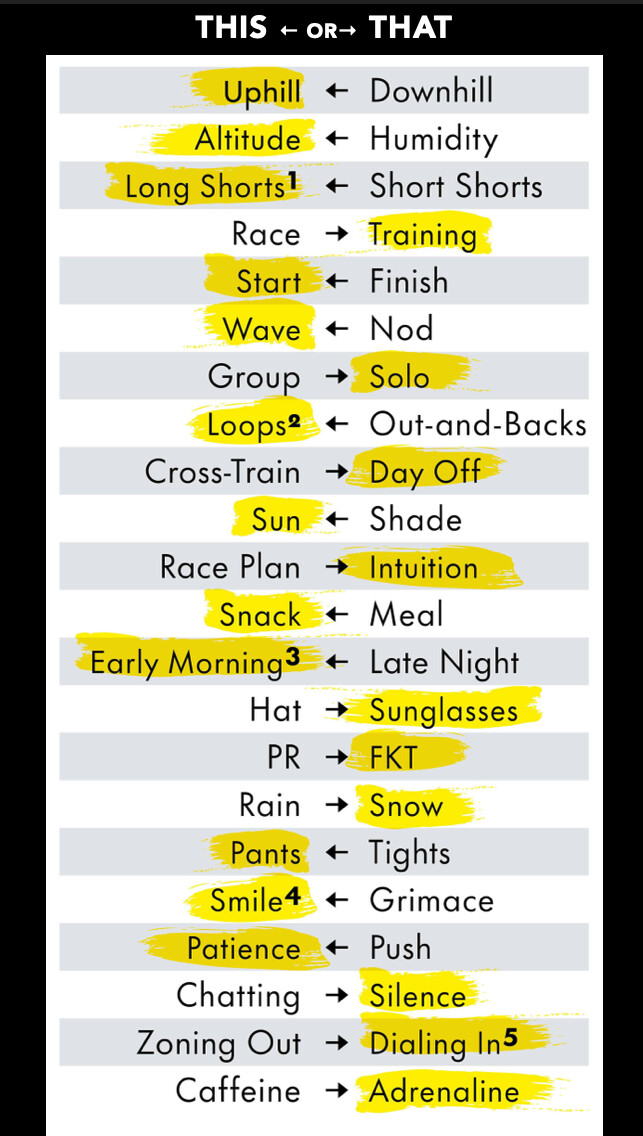
Login to leave a comment
Molly Seidel Stunned the World (and Herself) with Olympic Bronze in Tokyo. Then Life Went Sideways.
She stunned the world (and herself) with Olympic bronze in Tokyo. Then life went sideways. How America’s unexpected marathon phenom is getting her body—and brain—back on track.
On a clear December night in 2019, Molly Seidel was at a rooftop holiday party in Boston, wearing a black velvet dress, doing what a lot of 25-year-olds do: passing a joint between friends, wondering what she was doing with her life.
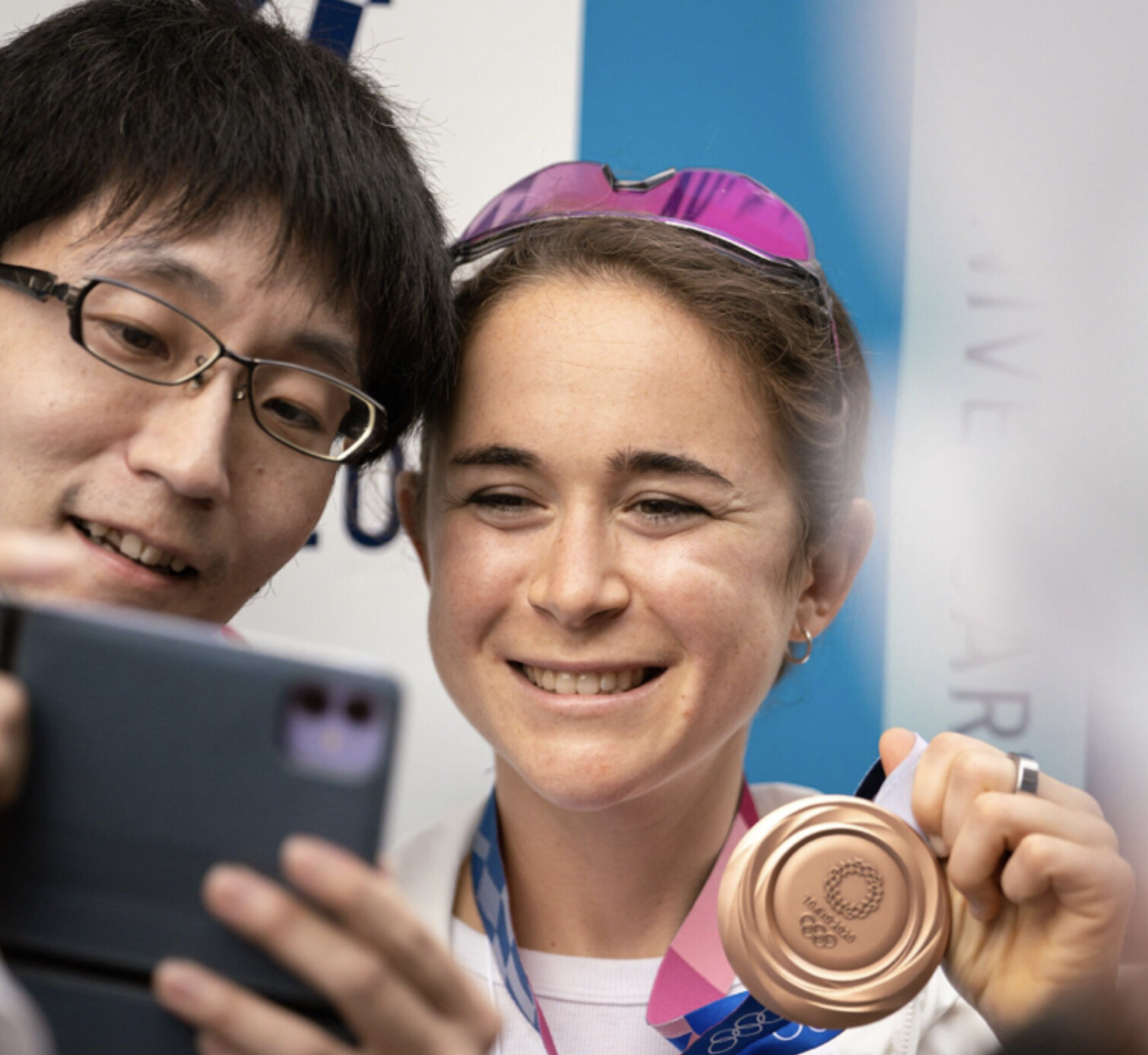
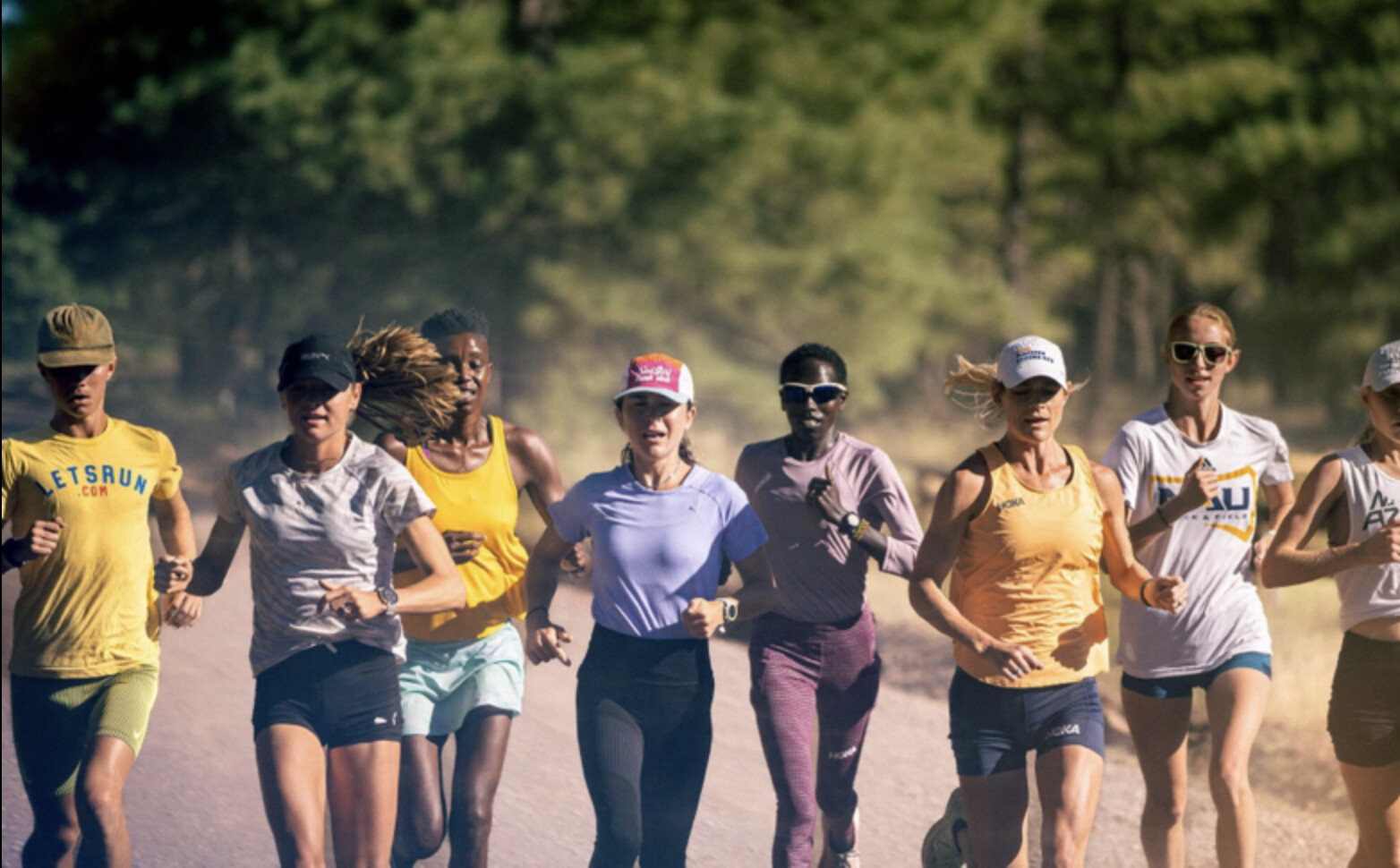
“You should run the Olympic Trials,” her sister, Izzy, said, as smoke swirled in the chilly air atop The Trackhouse, a retail shop and community hub on Newbury Street operated by the running brand Tracksmith. “That would be hilarious if you did that as your first marathon.”
Molly, an elite 10K racer who’d spent much of 2019 injured, looked out at the city lights, and laughed. Why the hell not? She’d just qualified for the trials, winning the San Antonio Half with a time of 1:10:27. (“The shock of the century,” as she’d put it.) True, 13.1 miles wasn’t 26.2—but running a marathon was something to do. If only because she never had before.
A four-time NCAA track and cross-country champion at The University of Notre Dame in Indiana, Molly had moved to Boston in 2017, where she’d worked three jobs to supplement her fourth: running for Saucony’s Freedom Track Club. The $34,000 a year that Saucony paid her (pre-tax, sans medical) didn’t go far in one of America’s most expensive cities. Chasing kids around as a babysitter, driving around as an Instacart shopper, and standing around eight hours a day as a barista—when you’re running 20 miles a day—wasn’t ideal. But whatever, she had compression socks. And she was downing free coffee and paying rent, flying to Flagstaff, Arizona, every so often for altitude camps, and having a good time. Doing what she loved. The only thing she’s ever wanted to do since she was a freckly fifth-grader in small-town Wisconsin clocking a six-minute mile in gym class.
“I was hustling, and I loved it. It was such a fun, cool time of my life,” she says, summarizing her 20s. Staring into Molly’s steely brown eyes, listening to her speak with such clarity and conviction about her struggles since, it’s easy to forget: She is still only 29.
After Molly had hip surgery on her birthday in July 2018, her doctors gave her a 50/50 chance of running professionally again. By summer 2019, she’d parted ways with FTC, which left her sobbing on the banks of the Charles River, getting eaten alive by mosquitoes and uncertainty. Her biggest achievement lately had been being named #2 Top Instacart Shopper (in Flagstaff; Boston was big-time).
The day after that rooftop party, Molly asked her friend and former FTC teammate Jon Green, who she’d newly anointed as her coach: “Think I should run the marathon trials?” Sure, he shrugged. Nothing to lose. Maybe it’d help her train for the 10K, her best shot—they both thought—at making a U.S. Olympic team.
“I’m going to get my ass kicked six ways to Sunday!” she told the host of the podcast Running On Om six weeks before the trials in Atlanta.
Instead, on February 29, 2020, she kicked some herself. Pushing past 448 of the fastest, most-experienced women marathoners in the country, coming in second with a 2:27:31, earning more in prize money ($60,000) than she had in two years of racing—and a spot on the U.S. trio for the 2020 Tokyo Olympics, along with Kenyan-born superstars Aliphine Tuliamuk and Sally Kipyego. “I don’t know what’s happening right now!” Molly kept saying into TV cameras, wrapped in an American flag, as stunned as a lottery winner.
Saucony who? Puma came calling. Along with something Molly hadn’t anticipated: the spotlight. An onslaught of social media followers. And two weeks later, a global pandemic and lockdown—and all the anxiety and isolation that came with it. She was drowning, and she hadn’t even landed in Tokyo yet.
The 2020 Olympics, as we all know, were postponed to 2021. An emotional burden but a physical boon for Molly, in that it allowed her to get in a second marathon. In London, she finished two minutes faster than her debut. When the Olympics finally rolled around, she was ready.
Before the race, Molly says, “I was thinking: ‘Once I cross the starting line, I get to call myself an Olympian and that’s a win for the day.’”
But then she crossed the finish line—with a finger-kiss to the sky and a guttural Yesss!—in third place with a 2:27:46, just 26 seconds behind first (Kenya’s Peres Jepchirchir). And realized: She gets to call herself an Olympic medalist forever. Only the third American woman to ever earn one in the marathon.
Lots of kids have fleeting hopes of making it to the Olympics. I remember thinking I could be Mary Lou Retton. Maybe FloJo, with shorter fingernails. Then I decided I’d rather be Madonna or president of the United States and promptly forgot about it. But Molly held tight to her Olympic aspirations. She still has a poster she made in 2004, with stickers and a snapshot of her smiley 10-year-old self, to prove it. “I wish I will make it into the Olympics and win a gold medal,” she wrote, and signed it: Molly Seidel, the “y” looping back to underline her name. In case there was any doubt as to who, specifically, would be winning the medal.
Molly grew up in Nashotah, Wisconsin, and is the eldest of three. Her sister and brother, younger by not quite two years, are twins. Izzy is a running influencer and corporate content creator for companies like Peloton; and Fritz favors Formula 1 racing and weightlifting and works for the family’s leather-tanning business. The family was active, sporty. Dad, Fritz Sr., was a ski racer in college; Mom, Anne, a cheerleader. You can tell. Watching clips of Molly’s mom and dad watching the Olympic race from their backyard patio, jumping up and down, tears streaming, is the kind of life-affirming moment you wish you could bottle. “I’m in shock. I’m in disbelief,” Molly says into the mic, beaming. “I just wanted to come out today and I don’t know…stick my nose where it didn’t belong and see what I could come away with. And I guess that’s a medal.” When the interviewer holds up her family on FaceTime, Molly breaks down. “We did it,” she says into the screen between sobs and smiles. “Please drink a beer for me.
Molly hasn’t always been unabashedly herself, even when everyone thought she was. A compartmentalizer to the core, she spent most of her life hiding a huge part of it: anorexia, bulimia, anxiety, obsessive-compulsive disorder, debilitating depression.
It started around age 11, when she learned to disguise OCD tendencies, like compulsively knocking on wood, silently reciting prayers “to avoid God getting mad at me,” she says. “It was a whole thing.” She says her parents were aware of the behaviors, but saw them more as odd little habits. “They had no reason to suspect anything. I was very high-functioning,” she says. “They didn’t realize that it was literally taking over my life.”
She wasn’t officially diagnosed with OCD until her freshman year of college, when she saw a therapist for the first time. At Notre Dame, disordered eating took hold, quietly yet visibly, as it does for up to 62 percent of female college athletes, according to the National Eating Disorders Association. As recently as the Tokyo Olympics, she was making herself throw up in the airport bathroom, mere days before taking the podium. Molly hesitates to share that detail; she fears a girl might read this and interpret it as behavior to model. “Having been in that place as a younger athlete, I know I would have,” she says. But she also understands: Most people just don’t get how unrelenting eating disorders can be.
In February 2022, she finally received a diagnosis of the root cause for all of it: ADHD. About being diagnosed, she says, “It made me feel really good, like [I don’t have] a million different disorders. I have a disorder that manifests itself in a lot of different symptoms.”
She waited to try Adderall until after the Boston Marathon in April, only to drop out at mile 16 due to a hip impingement. Initially, the meds made her feel fantastic. Focused. Free. Until she realized Adderall hurt more than it helped. She couldn’t sleep, couldn’t eat, lost too much weight. Within weeks, she devolved. “The eating disorder came roaring back,” she says, referring to it, as she often does, as its own entity, something that exists outside of herself. That ruthlessly takes control over her very need for control. “I almost think of it as an alter ego,” she explains. “Adderall was just bubblegum in the dam,” as she puts it. She ditched the drug, and her life—professionally, physically—unraveled.
In July 2022, heading into the World Championships, she bombed the mental health screening, answering the questions with brutal honesty. She’d been texting Keira D’Amato weeks prior. “Yo girl, things are pretty bad right now. Get ready…” Sobbing on the sidewalk in Eugene, Oregon, she texted D’Amato again. And the USATF made it official: D’Amato would take her spot on the team. Then Molly did what she’d been “putting off and putting off”— checked herself into eating disorder treatment for the second time since 2016, an outpatient program in Salt Lake City, where her new boyfriend was living at the time.
Somehow (see: expert compartmentalizer) mid-meltdown, in February 2022, she had met an amateur ultrarunner named Matt, on Hinge. A quiet, lanky photographer, he didn’t totally get what she did. “I didn’t understand the gravity of it,” he tells me. “I was like, Oh she’s a pro runner, that’s cool. I didn’t realize she was, like, the pro runner!”
Going back to treatment “was pretty terrible,” she says. At least she could stay with Matt. Hardly a honeymoon phase, but the new relationship held promise. “I laid it all out there,” says Molly. “And he was still here for it, for all the messiness. It was really meaningful.” And a mental shift. “He doesn’t see me as just Molly the Runner.”
Almost a year later, on a freezing April evening in Flagstaff, Molly is racing around Whole Foods, palming a head of cabbage, grabbing a thing of hummus, hunting for deals even though she doesn’t need to anymore.
“It’s all about speed, efficiency, and quality,” she says, explaining the secret to her earlier Instacart success. She checks the expiration date on a container of goat cheese and beelines for the butcher counter, scans it faster than an Epson DS3000, though not without calculation, and requests two tomato-and-mozzarella-stuffed chicken breasts. Then she darts over to the beverage aisle in her marshmallow-y Puma slip-ons that Matt custom-painted with orange poppies. She grabs a case of La Croix (tangerine), then zips to the checkout. We’re in and out in under 15 minutes and 50 bucks, nothing bruised or broken.
Other than her body. Let’s just say: If Molly were an avocado or a carton of eggs, she probably wouldn’t pass her own sniff test. The week we meet, she is just coming off a month of no running. Not a single mile. She’s used to running twice a day, 130 miles a week. No wonder she’s spraying her kitchen counter with Mrs. Meyer’s and scrubbing the stovetop within minutes of welcoming me into her new home.
The place, which she shares with Matt and his Australian border collie, Rye, has a post-college flophouse feel: a deep L-shaped couch draped in Pendleton blankets, a bar cluttered with bottles of discount wine, a floor lamp leaning like the Tower of Pisa next to a chew toy in the shape of a ranch dressing bottle. Scattered about, though, are reminders that an elite runner sleeps here. Or at least tries to. (“Pro runner by day, mild insomniac by night” reads the bio on her rarely used account on what used to be Twitter.) There’s a stick of Chafe Safe on the coffee table. Shalane Flanagan’s cookbooks on the counter. And framed in glass, propped on the office floor: Molly’s Olympic kit—blue racing briefs with the Nike Swoosh, a USA singlet, her once-sweat-drenched American flag, folded in a triangle. “I’m not sure where to hang it,” she says. “It seems a little ostentatious to have it in the living room.”
With long brown curls and a round, freckly face, Molly has an aw-shucks look so innocent that it’s hard, at first, to perceive her struggles. Flat-out ask her, though—How are you even functioning?—and she’ll tell you: “I’m an absolute wreck. There’s no worse feeling than being a pro runner who can’t run. You just feel fucking useless.” Tidying a stack of newspapers, she adds, “Don’t worry, I’ve had therapy today.”
She’s watched every show. (Save Ted Lasso, “too sickly sweet.”) Listened to every podcast. (Armchair Expert is a favorite.) She’s got nothing else to do but PT and go easy on the ElliptiGo in the garage, onto which she’s rigged a wooden bookstand, currently clipped with A History of God: The 4,000 Year Quest of Judaism, Christianity and Islam. “I don’t read running books,” she says. “I need something different.”
Like most runners—even the most amateur among us—running, moving, is what keeps her sane. “What about swimming? Can you at least swim?” I ask, projecting my own desperation if I were in her size 8.5 shoes. “I fucking hate swimming,” says Molly. Walking? “Oh, yeah, I can go on walks. Another. Long. Walk.”
The only thing she has on her schedule this week is pumping up a local middle school track team before their big meet. The invitation boosted her spirits. “Should I just memorize Miracle on Ice?” she says, laughing. “No, I know, I’ll do Independence Day.”
Injuries are nothing new for Molly. Par for the course for any professional athlete. But especially for women, like her, who lack bone density—and have since high school, when, according to a study in the Orthopedic Journal of Sports Medicine, nearly half of female runners experience period loss. Osteoporosis and its precursor, osteopenia, are rampant in female runners, leading to ongoing issues that threaten not just their college and professional running careers, but their lives.
Still, Molly admits, laughing: She’s especially accident-prone. I ask her to list every scratch she’s ever had, which takes her 10 minutes, and goes all the way back to babyhood, when she banged her head against the bathtub spout. There was a cracked spine from a sledding incident in 8th grade, a broken collarbone from a ski race in high school, shredded knee cartilage in college when a driver hit her while she was riding a bike. “Ribs are constantly breaking,” she says. In 2021, two snapped, and refused to heal in time for the New York City Marathon. No biggie. She ran through the pain with a 2:24:42, besting Deena Kastor’s 2008 time by more than a minute and setting the American course record.
Molly’s latest injury? Glute tear. “Literally a gigantic pain in the ass,” she posted on Instagram in March. Inside, Molly was devastated. Pulling out of the Nagoya Marathon—the night before her 6:45 a.m. flight to Japan, no less—was not in the plan. The plan, according to Coach Green, had been simple. It always is. If the two of them even have one. “Just to have fun and be consistent.” And get a marathon or two in before the Olympic Trials in February 2024.
She’d been finally—finally—fit on all fronts; ready to race, ready to return. She needed Nagoya. And then, nothing. “It feels like I’m back at the bottom of the well,” says Molly, driving home from Whole Foods in her Toyota 4Runner. “This last year-and-a-half has been so difficult. It’s just been a lot of doubt. How do I approach this, as someone who has now won a medal? Like, man, am I even relevant in this sport anymore?” She pops a piece of gum in her mouth. I wait for her to offer me some, because that’s what you do with gum, but she doesn’t. She’s so in her head. “It’s hard when you’re in the thick of it, you know, to figure out: Why the fuck do I keep doing this? When it just breaks my heart over and over and over again?”
We pull into her driveway. “I was prepared for the low period after Tokyo,” she says. “But this has been much longer and lower than I expected.”
The curse of making it to the Olympics, let alone coming back with a medal: expectations. Molly’s own were high. “I think I thought, after the Olympics, if I win a medal, then I will be fixed, it will fix everything.” Instead, in a way, it made everything worse.
That’s the problem that has plagued Molly for most of her running career: Her triumphs and troubles intermingle, like thunder and lightning. Which, by the way, she has been struck by. (A minor backyard-grill, summer-thunderstorm incident. She was fine.)
The next morning in Flagstaff, Molly’s feeling like she can run a mile, maybe two. It’s snowing, though, and she doesn’t want to risk the slippery track, so we meet at Campbell Mesa Trails. She loops a band around the back of her truck to stretch and sends me off into the trees to run alone while she does a couple of laps on the street.
Molly leaves for an acupuncture appointment, and we reunite later at Single Speed Coffee (“the best coffee in Flagstaff,” promises the ex-barista who drinks up to three cups a day). We curl up on a couch like it’s her living room, and she talks as freely—and as loudly—as if it was. Does she realize everyone can hear her? She doesn’t care. I guess that’s what happens when you’ve grown so comfortable sharing—in therapy, on podcasts, in a three-part video series on ADHD for WebMD—you just…share. Loud and proud.
Mental illness is so insidious, says Molly. “It’s not always this Sylvia Plath stick-my-head-in-a-fucking-oven thing, where you’re sad all the time,” she says. “High-functioning depressed people live normal successful lives. I can be having the happiest moment, and three days later I’m in a total downward spiral.” It’s something you never recover from, she says, but you learn to manage.
“I’m this incredibly flawed person who struggles so much. I think: How could I have won this thing when I’m so flawed? I look at all the people around me, all these accomplished people who have their shit together, and I’m like, ‘one of these things is not like the other,’” she says, taking a sip of her flat white. “I was literally in the Olympic Village thinking: Everybody is probably looking at me wondering: Why the hell is she here?”
They weren’t. They don’t. She knows that.
And yet her mind races as fast as she does. It takes up So. Much. Space. When she’s running, though, the noise disappears. She’s not Olympic Molly or Eating Disorder Molly, she’s not even, really, Runner Molly. “When I’m running,” she says, “I’m the most authentic version of myself.”
Talking helps, too. Molly first shared her mental health history a few years ago, “before she was famous,” as she puts it. After the Olympics, though, she kept talking and hasn’t stopped. The Tokyo Games were a turning point, she says. Suddenly the most revered athletes in the world were opening up about their mental health. Molly credits Simone Biles’s bravery for her own. If Biles, and Michael Phelps and Naomi Osaka, could come clean... then maybe a nerdy, niche-y, unlikely medaling marathoner could, too.
“Those guys got a lot more shit for it than I did,” says Molly. “I got off easy. I’m not a household name,” she laughs. She knows she can be candid and off the cuff—and chat freely in a not-empty café—in a way Biles never could. “I’m a nobody!” she laughs.
Still, a nobody with 232,000 Instagram followers whom she has touched in very IRL ways—becoming an unintentional poster woman for normalizing mental health challenges among athletes. “You are such an incredible inspiration,” @1percentpeterson posts, one comment of a zillion similar. “It’s ok to not be ok!” says another. Along with all the online love is, of course, online hate. Molly rattles off a few lowlights: “She’s an attention-seeking whore,” “Her bones are so brittle she’ll never race again,” “She’s running so badly and posting a lot she should really focus on her running more.” Molly finds it curious. “I’m like, ‘If you hate me, you don’t need to follow me, sir.’”
It’s Molly’s nobody-ness—what Outside writer Martin Fritz Huber called her “runner-next-door” persona, and I’ll just call “genuine personality”—that has made her somebody in running’s otherwise reserved circles.
Somebody who (gasp!) high-fives her sister in the middle of a major race, as she did at mile 18 of the 2021 New York City Marathon. “They shat on me in the broadcast for it,” she says. “They were like, ‘She’s not taking this seriously.’” (Except, uh, then she set the American course record, so…)
Somebody who, obviously, swears like a sailor and dances awkwardly on Instagram, who dresses up like a turkey, and viral-tweets about getting mansplained on an airplane. (“He starts telling me how I need to train high mileage & pulls up an analysis he’d made of a pro runner’s training on his phone. The pro runner was me. It was my training. Didn’t have the heart to tell him.”)
Somebody who makes every middle-aged mom-runner I know swoon like a Swiftie and say: “OMG! YOU HUNG OUT WITH MOLLY SEIDEL!!?” Middle-aged dad-runners, too. “I saw her once in Golden Gate Park!” my friend Dan fanboyed when he heard. “I waved!” Did she wave back? “She smiled,” he says, “while casually laying down 5:25s.”
And somebody who was as outraged as I was that I bought a $16 tube of French toothpaste from my hip Flagstaff motel. (It was 10 p.m.! It was all they had!) “For that price it better contain top-shelf cocaine,” she texted. Lest LetsRun commenters take that tidbit out of context: It’s a joke. It’s, in part, what makes Molly America’s most relatable pro runner: She’s not afraid to make jokes. (While we’re at it… Don’t knock her for smoking a little legal weed, either. That’s so 2009. Per the World Anti-Doping Agency: Cannabis is prohibited during competition, not at a Christmas party two months before it. Per Molly: “People would be shocked to know how many pro runners smoke weed.”)
I can’t believe I never asked to see it. Molly’s medal. A real, live Olympic medal. Maybe because it was tucked into a credenza along with Matt’s menorah and her maneki-neko cat figurines from Japan. But I think it was because hanging out with Molly felt so…normal, I almost forgot she’d won one.
People think elite distance runners have to be one-dimensional, she says. That they have to be sculpted, single-minded, running-only robots. “Because that’s what the sport has been,” she says.
Molly falls for it, too, she says. She scrolls the feeds, sees her fellow pros living seemingly perfect lives. She wants everyone to know: She’s not. So much so that she requested we not print the photos originally commissioned for this story, which were taken when she was at the lowest of lows. (“It’s been...refreshing...to be pretty open and real with Rachel [about] the challenges of the last year,” she wrote in an email to Runner’s World editors. “But the photos [were taken at] a time when I was really struggling and actively trying to hide how bad my eating disorder had become.”)
Molly finds the NYC Marathon high-five thing comical but indicative of a more serious issue in elite running: It takes itself too seriously. It’s too…elitist. Too stilted. “Running a marathon is a pretty freaking cool experience!” If you’re not having fun, she asks rhetorically, what’s the point? Still, she admits, she isn’t always having fun. Though you wouldn’t know it from her Instagram. “Oh, I’m very good at making it seem like I am,” she says.
She used to enjoy social media when it was just her friends. Before she gained 50,000 followers in a single day after the trials, and some 70,000 on Strava. Before the pandemic, before the Olympics. Keeping up with content became a toxic chore. “You feel like you’re just feeding this beast and it’s never going to stop,” she says. She’s taken to deleting the app off her phone, reloading it only to fulfill contractual agreements and post for her sponsors, then deleting it again.
As much as she hates having to post, she enjoys plugging products the only way that feels natural: through parody. As does Izzy, her influencer sister, who, like Molly, prefers to skewer rather than shill (à la their idea behind their joint Insta account: @sadgirltrackclub). “The classic influencer tropes make me want to throw up,” she says (perverse pun as a recovering bulimic not intended). “New Gear Drop!’ or ‘This is my Outfit of the Day!’ Cringe. “Hot Girl Instagram is not how I identify,” she says.
Nor is TikTok. “Sponsors tell me all the time: You should TikTok! I’m like, ‘I am not doing TikTok.’ I know how my brain works. They’ll say, ‘We’ll pay you less if you don’t’—and I’m, like, I don’t care.”
And to those sponsors who ghosted her after she returned to eating disorder treatment, good riddance. “Michelob dropped me like a bad habit,” she says. “Whatever. You have watery-ass beer anyway.”
To those who have stood by her, though, she’s utterly devoted. Pissed she couldn’t wear the Puma panther head to toe in Tokyo, Molly took off her Puma Deviate Elites and tied them over her shoulder, obscuring the Nike logo on her Olympic singlet for all the world to see. Or not see. “Nike isn’t paying my fucking bills.”
The love is mutual, says Erin Longin, a general manager at Puma. After decades backing legends like Usain Bolt, Puma was relaunching road running and wanted Molly as their guinea pig. “She’s a serious athlete and competitor, but she also has fun with it,” says Longin. “Running should be fun. Molly embodies that.” At their first meeting, in January 2020, Molly made them laugh and nerded out over their new shoes. “We all left there, fingers crossed she’d sign with us,” says Longin.
Come February, they all flipped out. Longin was watching the trials, not expecting much. And then: “We were all messaging, “OMG!!” Then Molly killed in London. Medaled in Tokyo. “What she did for us in that first year…” says Longin. “We couldn’t have planned it!”
Then came the second year, and the third, and throughout it all—injuries, eating disorder treatment, missed races, missed opportunities—Puma hasn’t flinched. “It’s easy for a company to do the right thing when everything is going great,” Molly posted in April, heartbroken from her couch instead of Heartbreak Hill. “But it’s when the sh*t hits the fan and they’re still right there with you….” She received 35,000 hearts—and a call from Longin: “You make me feel so proud.”
Does it matter to Puma if Molly never places—never races—again? “Nope,” Longin says.
My last afternoon in Flagstaff, it’s cloudy skies, still freezing. I find Molly on the high school track wearing neoprene gloves, black puffy coat, another pair of Pumas. Her breath is white, her cheeks red. Her legs churning in even, elegant strides. Upright, alone, at peace, backed by snow-dusted peaks. Running itself is what matters, not racing, she tells me. “I honestly don’t give a shit about winning,” she says. All she wants—really wants, she says—is to be healthy enough to run until she’s old and gray.
Molly’s favorite runner is one who didn’t get to grow old. Who made his mark decades before she was born: Steve Prefontaine. “Pre raced in such a genuine way. He made people feel something,” she says. “The sports performances you truly remember,” she adds, “are the ones where you see the struggle, the work, the realness.”
Sounds familiar. “I hate conversations like, ‘Who’s the GOAT?’” Molly continues. “Who fucking cares? Who’s got the story that’s going to get people excited? That’s going to make some kid want to go out and do it?”
I know one of those kids: My best friend’s daughter, Quinn, a rising track phenom in Oregon, who has dealt with anxiety and OCD tendencies. She has a picture of Molly Seidel, and her times, taped to her bedroom wall. This past May, Quinn joined Nike’s Bowerman Club. She was named Oregon Female Athlete of the Year Under 12 by USATF. She wants to run for Notre Dame.
“Quinn loves running more than anything,” her mom tells me, texting photos of her elated 11-year-old atop the podium. “But I don’t know…” She’s unsure about setting her daughter on this path. How could she not, though? It’s all Quinn wants to do. Maybe what Quinn, too, feels born to do.
It’ll be okay, I tell her, I hope. Quinn has something Molly never had: She has a Molly.
Molly and I catch up via phone in June. A team of doctors in Germany has overhauled her biomechanics. She’s been running 110 miles a week, feeling healthy, hopeful. Happy. A month later, severe anemia (and accompanying iron infusions) interrupts her summer racing schedule. She cancels the couple of 10Ks she had planned and entertains herself by popping into the UTMB Speedgoat Mountain Race: a 28K trail run through Utah’s Little Cottonwood Canyon—coming in second with a 3:49:58. Molly’s focus is on the Chicago Marathon, October 8th; her first major race in almost two years.
Does it matter how she does? Does it matter if she slays the Olympic Trials in February? If she makes it to Paris 2024? If she fulfills her childhood dream and brings home gold?
Nah. Not if—like Matt, like Puma, like, finally, even Molly herself—you see Molly the Runner for who she really is: Molly the Mere Mortal. She’s the imperfect one who puts it perfectly: What matters isn’t her time or place, how she performs on the pavement. Or social media posts. What matters—as a professional athlete, as a person—is how she makes people feel: human.
She’d been finally—finally—fit on all fronts; ready to race, ready to return. She needed Nagoya. And then, nothing. “It feels like I’m back at the bottom of the well,” says Molly, driving home from Whole Foods in her Toyota 4Runner. “This last year-and-a-half has been so difficult. It’s just been a lot of doubt. How do I approach this, as someone who has now won a medal? Like, man, am I even relevant in this sport anymore?” She pops a piece of gum in her mouth. I wait for her to offer me some, because that’s what you do with gum, but she doesn’t. She’s so in her head. “It’s hard when you’re in the thick of it, you know, to figure out: Why the fuck do I keep doing this? When it just breaks my heart over and over and over again?”
by Runner’s World
Login to leave a comment
3 Athletes on Why They’re Running the Marine Corps Marathon
One of the largest marathons in the world to draw in 30,000 runners from all 50 states
The 48th Marine Corps Marathon (MCM)—“The People’s Marathon”—is the fourth-largest marathon in the U.S. and largest urban ultramarathon (they offer a 50K and 10K, too).

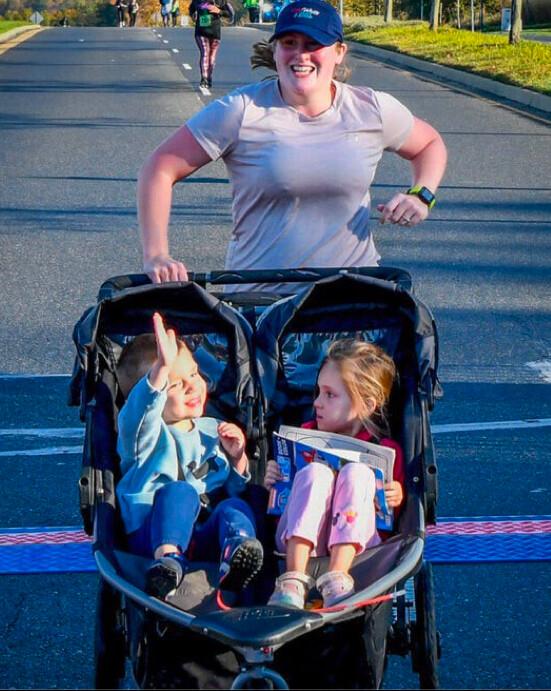
Each year, the U.S. Marine Corps holds the MCM a few weeks before the anniversary of its establishment. On October 29, 30,000 runners will toe the line in Arlington, Virginia, to follow the course as it winds through the nation’s capital. We caught up with three runners aiming for the finish line this year.
Rosie Gagnon, who lives in Berryville, Virginia, will be running the 50K MCM race in honor of her son, Marine Corps veteran, James Morris, who passed away by suicide in Ferurary 2018.
Even struggling through his mental health battles, Morris had endless confidence in his mother. Though Gagnon had been a runner for over two decades, Morris had encouraged her to run her first marathon. And when she completed that, he challenged her to dream even bigger–a 100 miler.
Morris passed away while Gagnon was training for this ultra, but she was determined to keep running in his memory.
“I actually bonked really hard,” Gagnon says, laughing. “I quit 60 miles in. I reached a point where I hit a wall–throwing up and crawling on the ground–and felt it was symbolic of what my son had gone through, because he got to the point where he couldn’t see how he could go on.”
The pain of this first race was disappointing but also a blessing. Morris says the experience taught her that, no matter how dark life gets, you keep putting one foot in front of the other.
Shortly after, Gagnon joined Wear Blue: Run to Remember, a group that honors the service of American military members through running. You may have seen one of them at races across the country wearing their bright blue shirts and the name of a fallen veteran. Gagnon challenged herself to run 100 ultramarathons in memory of Morris, and to raise awareness about military and veteran suicide. This will be her first time running the Marine Corps Marathon, and it will be her 60th ultra.
Running has become not only an outlet for spreading awareness about the importance of military mental health awareness and resources, but it’s been an outlet for grief.
“I used to wake up everyday wondering, ‘How can I live with this pain for another 40 years?’ and the one outlet where I found comfort was through running,” Gagnon says. “I focused on one race at a time, trying to get to that 100. I thought it would take longer, but it’s been moving pretty fast. I’m more than halfway through now!”
“If all I can do is put on shoes and run for somebody,” she says. “I’m going to do that.”
Between working a full-time job, managing clients in her running coach business, and raising three kids under the age of six, Kelly Vigil squeezes in training for the MCM when she can. Originally from northern Virginia, Vigil now lives in Charleston, South Carolina, and has run the MCM four times. This year, she’s running the 50K option.
“It’s my all-time favorite race,” she says. “When you get there, everything is taken care of,and everyone is super excited to be there. The spectators are amazing, which is hard to get in a marathon unless you’re running one of the major ones. At mile 21, you still have people cheering you on.”
Her husband was in the Marine Corps for six years, which makes her particularly connected to the race. Another reason is because Vigil used to work full-time in the charity running field, working with organizations to create their race programs.
“Athletes who are running for a cause aren’t necessarily going to feel more pressure, but there’s more meaning as to why they’re doing it,” Vigil says. “It helps them push forward when their body or mind isn’t in it anymore.”
As a mom of young kids, training isn’t always easy, but Vigil gets it done. Her long runs are timed so that she has an allotted amount of time to be away training on Saturday. Whatever mileage she gets done is what it is, and Vigil is happy with that.
“I’m not very strict with my training plan,” she says. “A lot of my running includes a stroller (with my two-year-old) or I might split up my runs in the morning and evening. I’m just doing what I can.”
Also a certified running coach, Vigil is currently working with other athletes who are running the MCM.
“Coaching keeps me in the community even when I’m not training for something,,” she says. “We’re all going after these different goals and doing what we can to stay consistent and do the work.”
For some, a commute to work includes traffic, to-go coffee, and a few swear words as someone cuts you off on the highway. But Jessica Hood’s commute to the office involves lots of marathon training.
Hood is extremely busy, so she puts in her miles by running to work. The total distance from her house to her office is about 14 miles, but depending on her training schedule, she’ll run seven or so and then hop on the metro bus for the rest of the way. Her office has a gym and showers, so she’s not taking a seat at her desk in sweaty running clothes.
“I do what I have to do and it probably takes a shorter amount of time,” Hood laughs. “You know, because you’d be sitting in DC traffic.”
Hood moved to the DC area about two years ago and works in finance, but her main passion is running. She began posting running content on social media in 2022 and developed a hearty following of 37k on Instagram and 81.5k on TikTok.
“It’s super cool how runners can get connected through social media,” she says. “I have a lot of running friends who don’t live in DC, but we all meet up at certain events and races across the country.”
Because of her influencer status, Hood is part of the MCM Social Media Influencer program, where she’s an advocate for the race. Though it’s sold out now, she spent months encouraging people to sign up through her posts online. This year will be her first time running the MCM marathon, though she’s spectated before and the energy was like nothing else.
“I thrive off of race day energy,” she says. “I love running and take it seriously, but it’s also about the fun of it and doing it with other people. So having a lot of people in my DC community running with me makes me so happy.”
Due to the race’s overwhelming popularity, early bird registrations for next year’s event opens January 1, 2024, with military members being able to register December 31. The Marine Corps Historic Half takes place May 19, 2024, and is part of the MCM series.
by Outside Online
Login to leave a comment
Are Energy Chews Actually Better Endurance Fuel Than Gummy Bears?
Our tester sacrifices her teeth to find out
I personally used gummy bears as endurance fuel for a solid ten years. These adorable chewy candies have long been a solution for athletes seeking an inexpensive and sugar-rich fuel for prolonged endeavors. But with more sport-formulated gummy options like Clif Bloks and Honey Stinger Chews on the market than ever, I wondered if there was much of a difference in how they make me feel during hearty efforts. So I decided to put them to a head-to-head test.
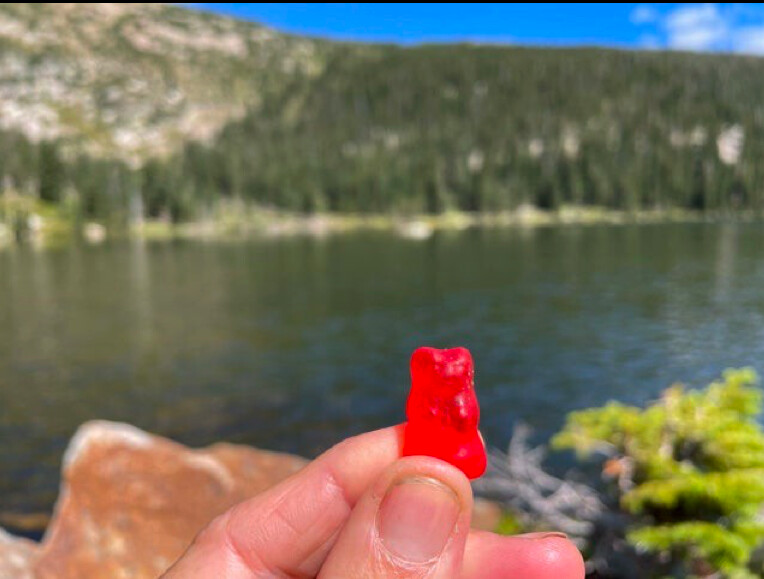
It was 10 a.m. at a pristine mountain lake in Colorado when I ate my first convenience store gummy bears, and—no surprise here—they were delicious. I’d packed a reusable plastic bag with a heartier serving (read: more than the recommended nine bears) of Albanese Gummi Bears, and another reusable bag of Haribo Goldbears and shoved them in my hydration pack. This type of candy is usually made of corn syrup and sugar, with “natural and artificial flavors.”
I was a couple rugged mountain miles to a lake with my dog. I sat on a rock and ingested the candy, noting how the Albanese Gummi Bears, which a friend had raved about to me, were insanely soft and chewy. Maybe too soft and chewy—I ate all of them within 30 seconds. They don’t require a lot of masticating, which is a bonus while running, but a negative if you don’t want to inhale a giant bag of gummy bears in one sitting.
I also ate a few (again more than nine) Haribo Goldbears. This is the brand I used to carry and eat during multi-day adventure races. They are, in a word, gummier. They take more effort to chew, which is fine while hiking or paddling, but can be a pain (and a choking hazard) while running or cycling. They too, are delicious (I’m personally partial to the pineapple flavor).
The consumption left my teeth feeling slimy, like they do whenever I eat something super-sugary. My stomach felt OK—not great—on the steep and rocky descent, but I felt a little jittery, like I’d had too much coffee.
I didn’t crash and burn afterward, but it was only a five-mile outing. I didn’t feel great the rest of the day, though.
Since energy chews hit the scene some years ago, I’ve relied on them to both satiate my love of gummy candy while exercising and to keep me going. I’ve used them on countless mountain running adventures, ski tours, hikes with kids, and more. But for this gummy-to-gummy comparison, I took them on a mountain run three days after the initial gummy bear test.
I ate a sleeve full of Salted Watermelon Clif Bloks about six miles into a rugged run towards another alpine lake. And I pounded a bag of Honey Stinger Pink Lemonade Energy Chews around mile 11.
Both served my needs: I was fatigued and hungry, sweating profusely, and borderline depleted. I ate more on that 15-mile run than just chews—some nuts, pretzels, zucchini bread with walnuts—but the chews were my on-the-go snacks while the others I ate sitting at a lake or walking to warm-up.
I didn’t get the sugary coating on my teeth; I don’t from chews. And I didn’t get the weird jitters. I also didn’t feel the guilt-cheating sensation I had on my Gummy Bear Run. The ingredients of both Clif Bloks and Honey Stinger Energy Chews include feel-good sugars like organic tapioca syrup, organic sugar, and organic honey, plus organic color from black carrot juice.
Aside from the better sugars and ingredients in general of energy chews, what both packs of chews have that gummy bears do not are a substantial amount of electrolytes. I feel like I need the extra sodium provided by chews when I exert myself; replacing it helps me feel balanced.
There is less sugar in the full bag (two servings) of both Clif Bloks and Honey Stinger Energy Chews than in two servings of gummy bears. (Those two servings would be a count of 18 bears.) I’m not sure why the sugar of chews doesn’t make me feel jittery and gross like the sugar of gummy bears. Maybe it’s partially psychosomatic, but maybe it has to do with the good things chews have that bears do not.
Honey Stinger chews also provide 70 percent the recommended dietary allowance of Vitamin C, and their new Caffeinated Chews (Strawberry Kiwi, Cherry Cola, and Stingerita Lime) contain 50 milligrams of caffeine (100 milligrams for whole pack) from tea for sustained energy. Black Cherry, Tropical Punch, and Orange Clif Bloks contain 50 milligrams caffeine per serving, 100 milligrams per pack. And Clif Bloks have 18 milligrams of potassium, also beneficial electrolytes. (Strangely, Haribo Goldbears have two grams of protein per serving.)
Where Haribo and Albanese have an edge is in cost and availability. You can buy bears from those brands in a variety of stores and cost less than half per ounce than any of the chews, which are more of a specialty item.
I feel better eating energy chews over gummy bears, both on an endurance/performance level and on a guilt level, not that I, or anyone, should feel guilty eating candy once in a while. The only thing I might feel guilty about is the extra cost that I might incur during a race or an intense training cycle.
I find energy chews just as delicious as gummy bears, and both feel like a treat while out on an adventure of any sort. The energy chews don’t coat my teeth in sugar or threaten a sour belly, something I get when I ingest too much sugar on a run. Eating energy chews on a run or any outing that requires endurance just makes more sense than eating gummy bears.
Our veteran gear maven, Lisa Jhung, has been testing gear for 25 years. She’s sprayed herself down with a hose to test the waterproofness of rain jackets, set up treadmills in her yard for weeks of testing, and stashed shoes in bushes to change mid-run.
In this column, Vetted, she inspects, tests, and muses on all things outdoor gear.
by Outside Online
Login to leave a comment
Caffeine Boosts Performance. But What About Coffee?
Researchers assess the potential benefits—and downsides—of the hundreds of bioactive compounds in your morning brew
A few years ago, researchers in Spain combed through the results of more than 7,000 urine samples tested for doping at competitions in various Olympic sports. Overall, 76 percent of the samples contained caffeine, with the highest concentrations found in cycling, track and field, and rowing. Frankly, I’m surprised that the number wasn’t higher, given how effective caffeine is as a performance booster and how widespread coffee consumption is more generally.
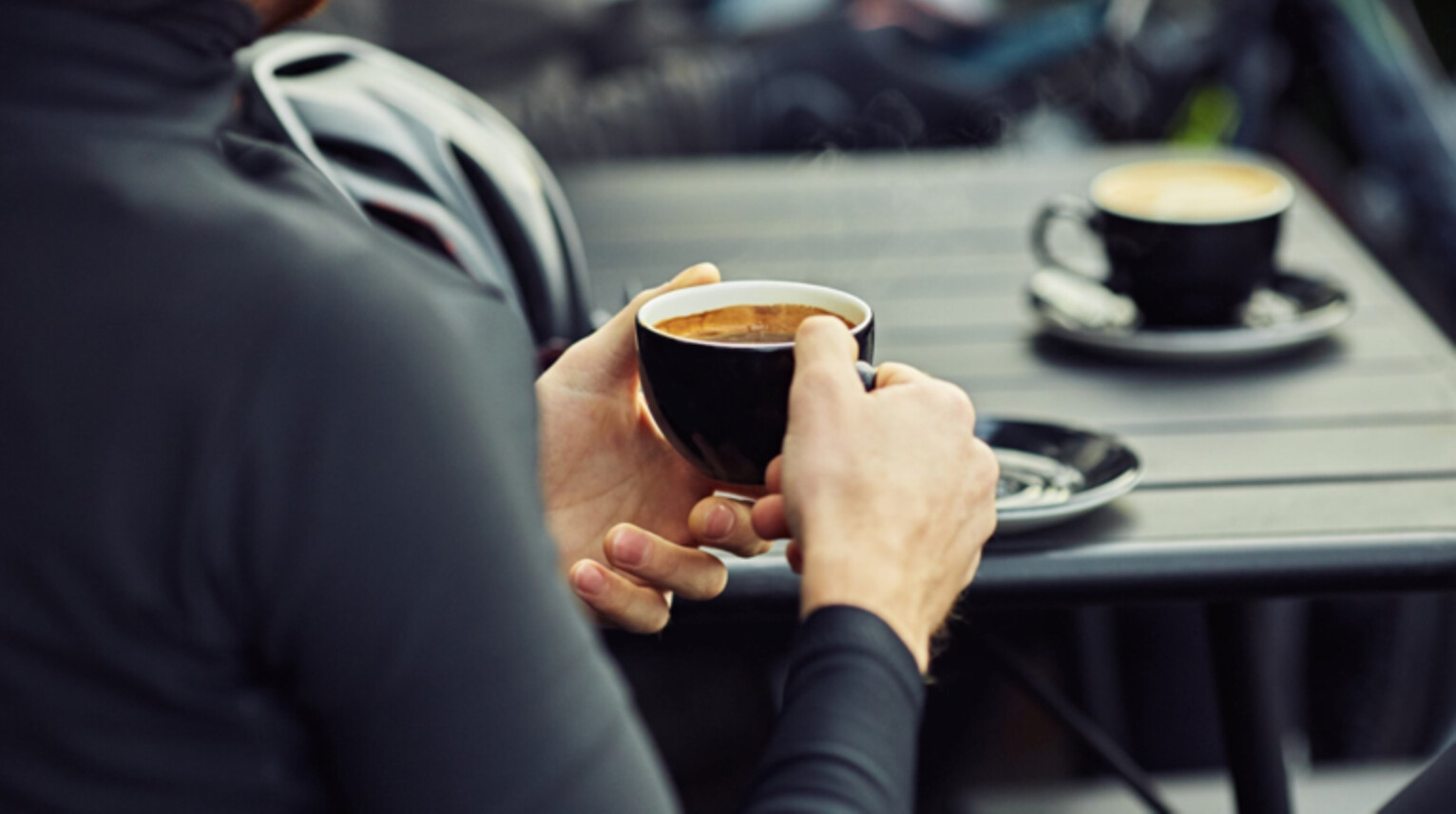
But I’m conflating two different things. Coffee, as a new review paper in the Journal of International Society of Sports Nutrition points out, is not just liquid caffeine. I’ve written many, many articles about research into caffeine’s performance-boosting powers, almost all of which uses pills to provide a carefully controlled dose of caffeine. In contrast, many of my running friends swear by their pre-workout or pre-race coffee. The new review, from a group of researchers led by Lonnie Lowery of Walsh University, asks whether coffee—“a complex matrix of hundreds of compounds”—provides the same athletic benefits as an equivalent dose of caffeine, or whether there are additional pros and cons. The short answer: it’s not clear.
You can make a reasonable argument that coffee is less effective than caffeine as a performance aid. The most obvious problem is that it’s hard to know exactly how much caffeine you’re getting in a cup of coffee. It depends on what kind of beans you’re using, how they’re prepared, how big your cup is, and so on. One study that tested a variety of store-bought espressos found caffeine levels ranging from 51 milligrams per serving at Starbucks to 322 milligrams per serving at Patisserie Francois.
Even if you stick with a consistent source of coffee with a known amount of caffeine, getting in the optimal performance-boosting dose might be a challenge. Sports scientists typically recommend taking between 3 and 6 milligrams per kilogram of bodyweight an hour before competition.
For a typical medium-roast coffee, that works out to two to four cups (16 to 32 ounces), depending on body size. That’s a lot of coffee—and caffeine from coffee appears to be absorbed more quickly than from capsules, which means you might want to finish downing all that liquid less than an hour before competition.
A further problem is that some of the other substances in coffee might interfere with the action of caffeine. The main source of that concern is a 1998 study that compared performance under five different conditions: water with placebo capsule, water with caffeine capsule, decaffeinated coffee, decaffeinated coffee with caffeine capsule, and regular coffee. In a half-hour running test, performance was only increased with water-with-caffeine-capsule trial. Since caffeine levels were identical in the coffee and the decaf-plus-caffeine-pill trials, that suggests that something in the coffee—perhaps chlorogenic acid, one of coffee’s key antioxidant compounds—was interfering with the performance boost of caffeine.
To be fair, subsequent research has mostly suggested that coffee works just as well as caffeine. This 2018 study, for example, found that coffee boosted one-mile run time by 1.9 percent compared to a placebo, and by 1.3 percent compared to decaffeinated coffee. Other studies have also found performance boosts from coffee, at least when taken in quantities that provide a known and sufficient dose of caffeine.
If anything, the results of that 2018 study raise the opposite question. Decaf was 0.6 percent faster than placebo. That wasn’t a statistically significant difference, but is it possible that coffee itself has performance benefits independent of its caffeine content?
The case in favor of coffee is based on all its other bioactive ingredients: most prominently polyphenols like chlorogenic acid that may influence blood flow and glucose levels, but also various minerals, melanoidins produced in the roasting process that have antioxidant and anti-inflammatory properties, and small amounts of carbohydrate, protein, and fat. The review takes an exhaustive dive into what these various substances might do for performance, listing their “neuromuscular, antioxidant, endocrine, cognitive, and metabolic effects,” but actual evidence of a performance boost is very thin on the ground.
To me, the strongest evidence that coffee might have some positive effects independent of caffeine comes from a different line of research. Back in 2018, I wrote about a study linking the effects of caffeine to a gene that affects caffeine metabolism. Roughly half the people in the study were fast caffeine metabolizers, and they got a big performance boost from caffeine in a 10K cycling trial. Most of the rest were medium metabolizers, and they got a negligible performance boost. The final 8 percent of subjects were slow metabolizers, and caffeine actually made them slower, perhaps because the positive effects of caffeine in the brain were outweighed by negative effects on blood circulation that persisted for longer.
This particular study used caffeine pills, but it emerged from an earlier line of research on the health effects of coffee. Big population-level studies have produced conflicting results about whether drinking lots of coffee is good or bad for you. University of Toronto researcher Ahmed El-Sohemy has suggested that this is because the effects depend on how you metabolize caffeine. He has shown, for example, that fast metabolizers have a lower risk of heart attack if they drink one to three cups of coffee a day, perhaps thanks to all those antioxidants and polyphenols and so on. Conversely, slow metabolizers have a 36 percent higher risk of heart attack if they drink two to three cups of coffee a day.
The implication here is that, at least for some aspects of long-term health, coffee is good for you but caffeine is bad for you. Fast caffeine metabolizers get the caffeine out of their system quickly, so the positive effects dominate. Slow metabolizers have the caffeine in their system for longer, so the negative effects take over. A key point: in a talk I saw earlier this year, El-Sohemy said that people’s subjective experience of how caffeine affects them is not a good predictor of whether they’re fast or slow metabolizers. (He does run a company that sells genetic testing of caffeine metabolism, so take that claim for what it’s worth.) My overall take, then, is that decaffeinated coffee probably has some good stuff in it, but there’s no convincing evidence that it will make you faster.
In the real world, the number one reason most of the athletes I know drink coffee before workouts and races is that it reliably makes them poop. That’s a discussion that Lowery’s review doesn’t get into, but it’s not insignificant for endurance athletes. If that’s your rationale, then by all means carry on. Drinking coffee is also a comforting and familiar routine for many people. But if you’re also hoping to harness the performance-boosting power of caffeine, then the main conclusion from the review is that you should take some time to figure out how much caffeine your favorite coffee contains, how much you usually drink, and decide whether you want to raise (or lower!) the dose, perhaps in combination with caffeine pills.
by Outside Online
Login to leave a comment
Study suggests moderately active people can have a positive influence on their friends
Encouraging the general population to increase their physical activity levels has long been a frustrating challenge for public health officials, but new research has unveiled a potential new way to reach sedentary individuals: through their physically active friends. According to a study published in the journal Plos One, when sedentary individuals interacted with moderately active friends, they became more active themselves.The study
Researchers at Keene University in New Jersey used previous research analyzing how social interactions with peers can influence individual physical activity levels to develop a mathematical model to simulate how social interactions can shape a community’s physical activity levels over time. Their model showed that their physical activity levels dropped when people stopped socializing. We saw this play out in real-time during the COVID-19 pandemic when most of us were cut off from our peer groups.Their model also showed that when sedentary people interacted regularly with their moderately-active friends, they became more active over time. In other words, those of us who exercise regularly could have a positive impact on our less-active friends, encouraging them to move a little more.

It’s important to note that this study focused specifically on moderately active people. That’s not to say that those of us who are training for marathons or ultras can’t also have a positive impact on our sedentary friends, but a sedentary person may view a marathon runner as having an unattainable level of discipline or enthusiasm for activity, which may not motivate them to get started.How to encourage your sedentary friends to get active
Whether you’re training for a marathon or fitting a few 5Ks in between your busy schedule each week, you can help your sedentary friends warm up to the idea of a more active lifestyle. Here are a few tips to encourage them to get moving:Plan active get-togethers
Meeting your friend for a coffee? Get those coffees to go and invite them on a stroll. Planning a beach day? Bring a beach ball, a frisbee, or some other game that’ll get everyone on their feet. Invite your friends on weekend hikes, suggest signing up for a recreational sports team, or plan to play some backyard games at your next barbecue. Anything that gets people out of their chairs is a win.Try something new together
Your less-active friends may be intimidated to try going for a jog with you, so invite them to try an activity that you’re both novice at instead. Sign up for yoga classes, try a dance class, or sign up for golf lessons. If you’re both new at it, you’re both starting off on a somewhat even playing field.Talk about your running, but not too much
Sharing your running achievements or training plans with your friends can be motivational, but be careful not to over-do it. Your friends don’t want to hear about the splits from your last workout, and talking about your recent chaffing mishap will likely turn them off of the sport. When you talk about running, talk about how it helps you so they can see the potential benefits. “I was had a stressful day at work yesterday, but I went for a run and felt much better,” or “I tried a new route the other day and discovered a really cute neighbourhood that I’d never seen before!” are great ways to lean into the mental or emotional benefits of running.
by Running Magazine
Login to leave a comment
Many Long-Distance Runners Don’t Eat Enough Calories—Here’s How to Increase Appetite So You Do
Adequate nutrition can be easier said than done. Here’s how to up your intake.
As you ramp up run training in prep for marathon season, you may assume your appetite will follow a similar upward trajectory. But that’s not always the case.
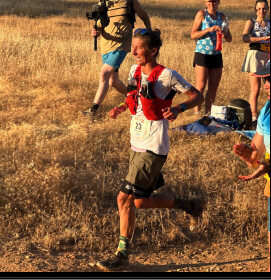
On the contrary: Intense or prolonged exercise can actually suppress hunger, quashing your desire to eat, Jordan Hill, RD, a Colorado-based registered dietitian and certified specialist in sports dietetics with Top Nutrition Coaching, tells Runner’s World.
Combine that with other factors—including lack of awareness about what and how much your body needs to sustain training, not having enough time to meal prep, and fear of weight gain—and it’s no surprise that many endurance runners are under-fueled.
Research confirms the struggle: A 2021 study of 207 cross-country runners, for example, found that 79.5 percent of female athletes and and 54 percent of male athletes were at risk of low energy availability (not intaking enough calories to support their workouts and daily needs).
That’s a problem, since subpar nutrition can trigger a cascade of issues that negatively affect your workouts—and overall health.
Here, with the help of two registered dietitians, we explain why eating enough calories is crucial to both your run performance and day-to-day functioning, telltale signs you’re underfueling, and easy ways to rev your appetite to help meet your caloric needs.
Why Adequate Calorie Intake is So Crucial for Runners
Calories are synonymous with energy, Hill explains, so not getting enough calories means you’re not getting enough energy for your body. That deficit can influence pretty much every bodily function including your immune system and metabolism, heart, hormones, GI system, and even mental health, she explains.
More specifically, not getting enough calories can decrease your performance in workouts, lead to excessive fatigue, increased your risk for injury and illness, cause nutritional deficiencies, decrease muscle mass, trigger hormonal imbalances, and cause negative psychological effects, such as mood swings, difficulty concentrating, and increased stress levels, says Hill. In other words, when you don’t fuel enough your body and mind take a serious hit.
Additionally, if you continually eat less than your body needs, you risk suppressing your appetite overall, Amity Lui, MS, RD, a New York City-based sports dietitian who works with runners, tells Runner’s World. “Not eating enough will actually impact your body’s metabolic rate and cause your body to kick into survival mode,” she adds. This means your body will require less calories over time and will shut down certain functions to save energy while increasing storage of body fat, according to Lui.
In some cases, underfueling can lead to relative energy deficiency in sport (RED-S) syndrome–essentially, a chronic state of low energy availability, Lui explains. Unfortunately, RED-S can cause long-lasting, negative effects, including decreased bone density, chronic fatigue, poor recovery, and diminished enjoyment of running since “you literally have no energy for it,” says Lui.
On the flip side, amping up calorie intake to meet your needs “will reap almost immediate benefits,” says Lui. These include increased energy, mood, cognition, and run performance, she says. You’ll also benefit from enhanced recovery, a strengthened immune system, improved body composition and cardiovascular health, elevated psychological well being, reduced risk for nutritional deficiencies, and improved hormonal balance, says Hill.
Signs of Underfueling
There are a number of signs you’re not eating enough to support your training, and tuning into them can help you rev up your nutrition habits before longer-term problems arise. “If athletes cue into how they’re feeling and what their body is doing, they can usually pick up on not eating enough before RED-S would become an issue,” says Hill.
Common signs of underfueling, according to Lui and Hill, include:
Decreased energy levels and feelings of abnormal fatigue—think: needing long naps every day, going to bed earlier than usual, or saying no to plans because of fatigue
Decreased performance in workouts—this could include being unable to complete your workouts, or consistently not reaching your target paces
Psychological and emotional changes—examples: mood swings, slowed cognition, irritability, lack of concentration, and generally feeling unmotivated
Prolonged muscle soreness and slow recovery
Getting sick or injured more often
Unintentional weight loss or difficulty maintaining your current weight
Hormonal disruptions, including loss of menstrual cycle
Changes in sleep patterns
Always feeling cold
Hair loss
12 Ways to Increase Appetite
A big reason runners struggle to get in all the calories they need is they simply don’t feel hungry.
Now, there are a “bunch of ways that our body tells us we’re hungry,” says Hill. You may not always hear your stomach growl, but could instead experience hunger in the form of a headache or fatigue. “It’s important for each person to figure out what’s their individual cue for hunger to help them be aware of that,” says Hill.
With that in mind, here are 12 expert-backed ways to kickstart your appetite and thus up your chances of eating enough calories.
1. Eat breakfast
A lot of Lui’s clients report having just coffee as their breakfast, and that’s a no-no. Skipping meals can lead to prolonged hunger, which can suppress your appetite in the long-term. “It’s almost like ignoring your body’s hunger cues,” Lui explains. “If you keep ignoring something, your body will no longer register it as a sign that you need food.”
Additionally, forgoing the first meal of the day may make it more difficult to achieve your overall calorie totals for the day. Plus, dodging a.m. fuel is associated with nutrient deficiencies and poor diet quality, according to other research.
Not sure what to chow on? Check out these on-the-go breakfast ideas for runners, plan your breakfast in advance with some meal prepping, or whip up one of these recipes to fuel your morning runs.
2. Consume smaller, more frequent meals
Instead of cramming all your calories into three big meals—which can be daunting if you’re just not feeling hungry—opt for smaller, more frequent feeding sessions. There’s no perfect cadence, but as a general rule of thumb, aim to nosh every two to three hours, suggests Hill. “It doesn’t have to be full-on meals,” she warns. Nutrient-dense snacks can fit the bill, too (more on that below).
3. Reach for easy-to-digest fuel post workout
The most common time Hill sees athletes struggle with low appetite is right after a training session, since, like we mentioned, prolonged or intense training can suppress hunger. But getting fuel in anyways—ideally within 30 minutes of a workout—is an important part of the recovery process and can, in many cases, help kickstart your appetite, says Hill.
Postrun, she recommends reaching for refreshing, easily digestible snacks, like a fruit smoothie, because they’ll be easier to stomach—literally. Lui, for her part, is a big fan of recovery shakes that have a three-to-one ratio of carbs to protein for optimal refueling.
4. Opt for energy-dense bites
If you’re really struggling to feel hungry, but know it’s time to intake calories, pick higher-calorie, higher-nutrient snacks to maximize the fuel you’re consuming, says Hill. So instead of having just a plate of crackers, have crackers with cheese and deli meat or nut butter, she says. Or in lieu of popcorn alone, combine popcorn with jerky or popcorn and nuts. Other options include Greek yogurt with granola, fruit, chia, or flax seeds; toast with nut butter; or hummus and veggies. The goal, says Hill, is to pair more than one macronutrient together.
5. Stay hydrated
Dehydration can screw with your appetite, says Hill, so it’s important to stay on top of your intake. Hydration needs vary and depend on factors including how much you exercise and sweat, your overall health, and the heat, humidity, and elevation of your environment, per the Mayo Clinic. As a general rule of thumb, you’re probably adequately hydrated if you don’t feel thirsty and your pee is light yellow or colorless.
6. Consider liquid calories
When hunger just isn’t there, it’s often easier to drink versus chew your calories. That’s where things like smoothies, shakes, juices, and soups can be helpful. “It is less taxing to sip on something versus having to prepare, reheat the food, cook it, and then chew it,” says Lui. To make your sippable meals as nutritious as possible, consider adding nutrient-dense extras like nut butters and seeds, she says.
7. Find foods you actually enjoy
This may sound like a no-brainer but finding foods you actually enjoy eating—and not focusing so much on what you feel like you should be eating—can help combat a suppressed appetite, says Lui. After all, you’re much more likely to want to nibble when it’s something you genuinely like versus something you feel obligated to choke down.
8. Reduce fiber intake
High-fiber foods can help keep you ~regular~ but they also keep you feeling full for longer, which may not be desired when you’re struggling with appetite. Fiber-rich meals, like large salads, “can result in bloating and delay gastric emptying, both of which can make you feel less hungry,” explains Lui. So, instead of opting for a kale salad at lunch, consider a grain bowl with quinoa, farro, rice, or barely; in lieu of a whole baked potato at dinner, have a bowl of pasta.
9. Keep mealtime exciting
Hill explains it this way: “If you’re eating the same thing over and over, you’re already going to be disinterested, and then you throw no appetite on top of that, and it’s really going to make you not want to eat.”
Beat the mealtime blahs by trying new-to-you flavors and textures. Make a reservation at that just-opened restaurant in town. Or, explore food blogs, watch cooking shows, and follow social media accounts that offer diverse and innovative recipes, suggests Hill.
10. Pack snacks
To help with eating consistently, carry non-perishable snacks with you—like granola bars or trail mix—so that you’ll have something to nosh on during those times when you’re commuting and transportation gets held up or you end up having to run an extra errand. “I like to call them emergency snacks, even though sometimes I eat them not in an emergency,” says Lui.
11. Cook with oils
Don’t be afraid to cook with oils, says Lui. This will allow you to get more calories in without having to eat a higher volume of grub. Plus, the fats in the oil enhance the absorption of fat-soluble vitamins, including vitamins A, D, E, and K, Lui adds. So instead of boiling or steaming your veggies, for example, coat them in oil and grill, stir fry, air fry, or sauté them.
12. Tap an expert for help
Because dietary needs and the factors affecting your appetite can be so individualized, it never hurts to consult a registered sports dietitian for personalized advice. They can help you figure out where you can incorporate more nutrient- and energy-dense meals and snacks into your day, says Lui, as well as determine how you can best fuel for your training goals.
by Runner’s World
Login to leave a comment
5 Exercises for Better Balance and Stronger Knees on the Trail
Fine-tune your muscle imbalances with this workout finisher series from physical therapist assistant and personal trainer Lee WeltonNo matter what type of workout you have planned, you can finish it off with exercises that make you a stronger and more injury-proof hiker. The suggestions below are ideal for hikers who are short on training time yet want to address remedy common issues like knee pain or poor balance or add a boost of low-impact cardio before their next adventure.Take 5 to 10 minutes to perform box step-ups after a workout. This short routine will provide an extra dose of exercise for the legs and lungs alike. Select a box height that is anywhere from mid-shin to about knee-high. Don’t have a box on hand? A park bench will do the trick. For an additional challenge, you can do these with a weight vest or while holding dumbbells. Alternatively, these can be performed as lateral steps up and over.
Lateral step-downs are an excellent option for hikers who experience knee pain while hiking downhill. This exercise requires a step of 6 to 8 inches in height. If there’s pain with the exercise at this height, lower the height to 2 to 4 inches and retry.
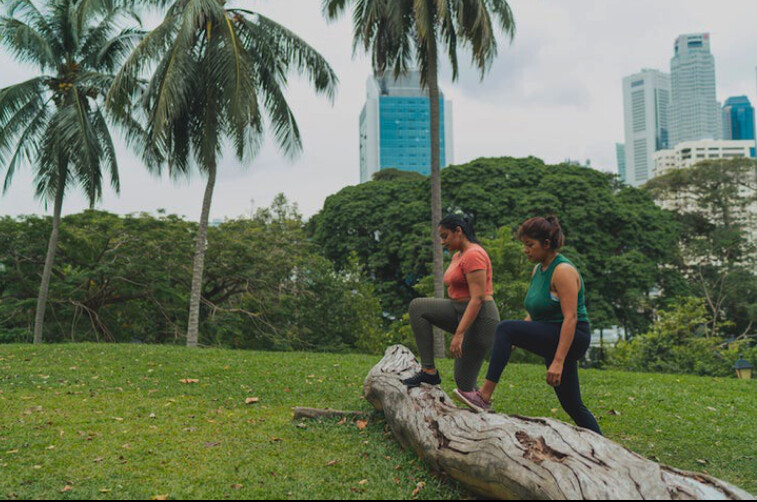
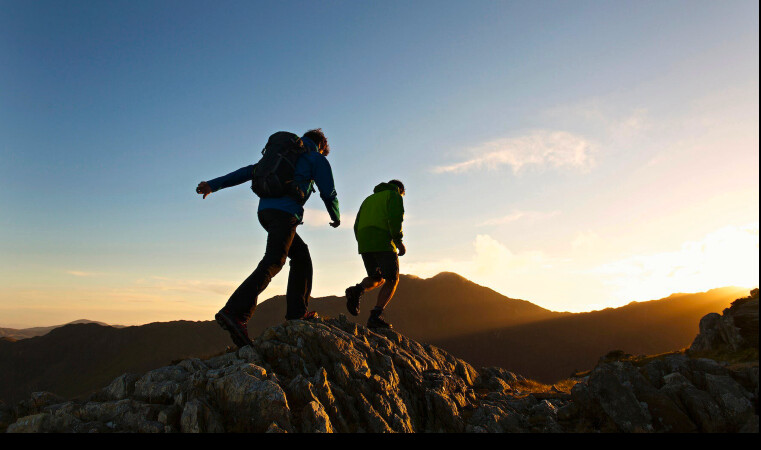
To perform a lateral step down, start by standing with your left foot on the step and your right foot next to the side of the step. Bending your left knee, slowly lower the right foot toward the floor and tap your heel. Be sure to keep your left knee in line with your left foot and behind your toes as you bend. Also, the lowering motion should come from your left leg, not from your right foot reaching for the floor.
Press through the left foot to return to the start position. Slow and controlled is the key here; fast reps won’t do you any good. Aim for a 3-second lower and a 1-second raise. Begin by performing three sets of 15 per leg and build up to four sets.The treadmill is a great tool to help prepare for climbs, especially if you have a limited amount of time to train. This workout finisher is straightforward and helpful for building aerobic capacity for hill climbs. Set the treadmill at an incline level between 3 and 6 percent and set a pace to keep you moving steadily for 10 to 15 minutes. Focus on nasal breathing during the session to mimic climbing a hill while hiking. Nasal breathing will help to keep the intensity where it’s most beneficial for hikers and optimize training time. To progress, add a weighted pack, and increase the incline or speed while maintaining nose breathing.
Utilizing the rower or bike as a training tool can be helpful, especially if there’s a history of any joint pain. These machines are low-impact and excellent at building aerobic conditioning for hiking.
For the rower, a 1,000-2,000 meter low-to-moderate effort focusing on nasal breathing will provide a great cardio workout finisher while targeting some of the larger muscle groups that hikers need. On the bike, pedal for 10 to 15 minutes with a low-to-moderate effort to maintain a consistent cadence or watts. Focus on nasal breathing for this workout also. Good balance can be the difference between staying dry while crossing a creek or ending up with wet feet. Not to mention that balance also builds ankle stability, which is helpful on a technical trail. This often overlooked component of training also serves us well in life beyond the trail.
A few balance exercises are easy to fit into a daily routine, fit in between larger groups of exercise, or practice at the end of a workout. There are two types of balance: static and dynamic. Static balance is done on a hard surface without additional movement. Dynamic balance typically incorporates less stable surfaces and/or adds motion to challenge balance further.
Static balance at home might look like standing on one foot while the coffee or tea brews, while your food reheats in the microwave, or while you brush your teeth.
In the gym, add dynamic balance with a weighted pass. Stand on one leg and hinge at the hips so the torso is slightly forward. Transfer a 10-pound weight from one hand to the other while maintaining balance. Balance for 20 seconds per leg and repeat three times.
Lee Welton is a physical therapist assistant and personal trainer in Southeast Idaho. He thru-hiked the Pacific Crest Trail in 2018 and trekked through the Dolomites in Italy. He can typically be found hiking and exploring the trails in Idaho and Wyoming. For more information, videos, and resources from Welton, visit trailsidefitness.com.
Login to leave a comment
Training Advice from the Greatest Women Masters Marathoners Alive
While Jeannie Rice and Jenny Hitchings are busy setting masters world records, their differences in training are even more instructive than their similarities
The spring marathon season has come and gone, and it didn’t disappoint, producing sensational races and world headlines. This was particularly true in Boston and London. However, you might have heard little or nothing about two of the best marathon performances in those events.
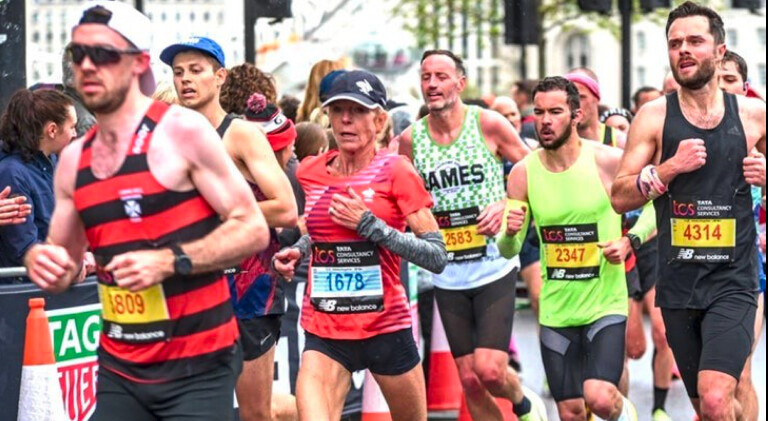

The big media coverage went to seemingly-unbeatable Eliud Kipchoge, who finished sixth at Boston, where Evans Chebet gained his third straight World Marathon Major victory in 12 months. At the London Marathon, Kelvin Kiptum ran 59:45 for the second half, en route to a course record 2:01:27, and Sifan Hassan demonstrated that she can win in the marathon as she has at multiple shorter distances.
But 75-year-old Jeannie Rice and 59-year-old Jenny Hitchings outran them all, on an Age-Gender performance basis, both setting new world records for their age groups. Rice’s 3:33:15 in Boston won’t count, since the Boston course is considered ineligible due to its significant downhill slope and point to point layout, which allows for a tailwind boost. Still, she beat the fastest 75-79 age-group male runner by more than 20 minutes, which has likely never happened before in a global marathon. And five weeks before Boston, at age 74, she ran 3:31:22 in the Tokyo Marathon.
A week after Boston, Hitchings ran 2:45:27 in London—a marathon world record for women in the 55-59 age division. Remarkably, she’s at the high end of that age range, as she’ll turn 60 in early July. Not only that, but it was her personal best marathon in 40 years of running.
Rice was born in South Korea and immigrated to the U.S. in her mid-30s. A retired real estate agent, she now divides her time between south Florida and Cleveland. Hitchings is a longtime resident of Sacramento, California, where she works as a middle-school cross-country coach and a private running coach.
Rice and Hitchings live on opposite coasts, but they have much in common. They’ve both been running for decades, both are extremely consistent in their training, and both log multiple 20-milers in their marathon buildups. Surprisingly, neither makes a particular effort to include hill training, a staple among other top marathon runners. Both are small and lean. Rice stands 5-foot-2 and weighs 96 pounds; Hitchings is 5-foot-4 and 100 pounds.
But Rice and Hitchings also present some stark contrasts. These differences carry an important message: There are many paths to marathon success, and the best senior runners understand this. Through their experience and wisdom, they’ve learned to focus on the positives and jettison the junk.
Here’s a look at some of the major contrasts between master marathon greats Jeannie Rice and Jenny Hitchings.
Both Rice and Hitchings had previously won age-group titles at Boston. Rice chose to return there in April for emotional reasons, as Boston marked her 40th anniversary of marathon running and her 130th marathon. Hitchings selected London for technical reasons. In 2021, she ran 2:45:32 at Boston. It would have been a record except for the point-to-point course prohibition. So this spring she opted for London’s record-eligible course.
Rice: “Boston has always been a special marathon for me,” said Rice. “My preparation wasn’t the best, as I ran the Tokyo Marathon in early March, and then did some traveling. But I wanted to have my Boston celebration, and I had quite a few running friends there with me.”
Hitchings: “London was on my marathon ‘bucket list’ anyway, and it gave me a great opportunity to set an age-group world record,” said Hitchings. “Since my 2:45 at Boston didn’t count, I figured I should take a crack at London while I was still in the age group.” [She will turn 60 in early July.]
Rice has always been self-coached. Hitchings, a running coach herself, has had a longterm coach-athlete relationship with Chicago-based Jenny Spangler. Spangler won the U.S. Olympic Trials Marathon in 1996 and ran a 2:32:39 marathon in 2003, after turning 40.
Rice: “I’ve been approached by people who wanted to coach me, but they seemed expensive and had other demands I didn’t like. I listen to what my friends do and what others are doing in training. I try to run 50 miles most weeks, and a bit more before my marathons. But I don’t actually follow a schedule. Mostly I just train the way I feel. I’m still running strong and beating records, so I must be doing something right.
“I know it’s possible that a coach could help me the way Gene Dykes’s coach helped him, but it’s also possible that things could go wrong. I like to decide my training according to how I feel each day.”
Hitchings: “I coach other runners, and I could certainly coach myself, but you know what they say about doctors who treat themselves: They have a fool for a patient. I think that can also apply to athletes who coach themselves. It’s just smarter to have someone looking over your shoulder, and adding some perspective.
“I’m one of those who’s often guilty of running too fast on my easy days, or getting excited and going too hard when I’m training with friends. Jenny [her coach] holds me accountable for those kinds of things. She has a great personal performance record that I respect a lot, and has been coaching for many years.
“It’s also important to me that she’s a female coach of my own age. She understands what I’m going through and dealing with in terms of female physiology.”
Both runners say they enjoy a relaxed morning cup of coffee before launching into their days. But Rice is up earlier, and often out the door quicker. Hitchings needs more time to be ready for a solid run.
Rice: “I like to get my run done early, so I have the whole day in front of me when I get back home at 7:30 A.M. or so. I’m usually running by 6 A.M. In Florida, where I spend my winters, that can be important for the cooler weather.
“But on days when I’m going 20 to 23 miles, I’ll get up at 3:30 A.M. and begin running at 4:30 A.M. I’ll go two hours on my own, and then join a local training group for their morning loop, which gives me another hour or so.”
Hitchings: “I coach a number of people who can roll right out of bed and start running. I’m not one of those. My favorite time to run is about 8 A.M. or 8:30 A.M. in the morning. I like my coffee first, and the morning newspaper, and I always make sure to get a light breakfast in my stomach. Since my favorite place to run is the American River Parkway, that gives me another 15 minutes of drive time before I get going.
“There have been times when I had to be a noontime runner, and that was OK, too. But 4 P.M. or 5 P.M.? That’s not going to happen. By that time of day, I’m too tired or depleted.”
This one is easy for Rice, who has never been injured except for a fall (and banged-up knee) in 2021 that cost her several weeks of running. Hitchings also considers herself relatively injury-free, but she has encountered an assortment of typical runner injuries through the years: Achilles tendinitis, piriformis pain, and surgery for Haglund’s deformity (a bony growth at the back of the heel resulting from mostly genetic causes).
Rice: “I go to the gym three times a week for a light strength workout, some pushups, and some stretching. But it’s not a serious session at all. I also golf for fun; I really enjoy golfing.”
Hitchings: “I try to do light weight work as much as I can, and I ride my bike 20-30 miles a week outdoors, and do Peloton indoors. Recently, I added Pilates once a week to improve my strength and mobility.
“Also, Jenny and I have agreed to take one hard running day out of my weekly schedule. I used to do speed work of some kind on Tuesday and Thursday, and a long weekend run. Now I’m down to speed on Wednesday, and a weekend long run that often has some tempo-pace segments.”
While both are clearly fit, Rice and Hitchings say they enjoy a wide variety of foods, and have no particular restrictions in their diets. Both enjoy wine drinking. Hitchings admits to a sweet tooth, too, but desserts are not a problem for Rice.
Rice: “Breakfast is usually oatmeal with fruit and nuts. At lunch and dinner, I enjoy a green salad with some sort of seafood or fish on top. I’ve never liked sweets and don’t crave them, but I love cheese and nuts. That’s my big downfall—cheese and nuts. The only supplements I take are calcium with vitamin D, B-12, and magnesium.”
Hitchings: “I eat ‘clean,’ a well-balanced diet with an emphasis on carbs. I simply don’t feel good if I eat heavy, creamy, or fried foods. I get most of my vitamins and minerals from real foods, though recently I’ve added Athletic Greens to my routine.
“When I’m in heavy marathon training, I find it hard to maintain my weight, so I’ll have some protein shakes and maybe one chocolate bar, muffin, or pastry per day. I’ve got a drawer full of vitamins, calcium, collagen, and iron supplements, but I never seem to stick with any for long. It’s just too much.”
While realistic about their futures, neither Rice nor Hitchings sound the least bit intimidated by the unwritten future. Despite aging, both are driven to perform. They hope to keep running hard and fast, and chasing age-group records. Both plan to run the Chicago Marathon on October 8, as it will be the site of this year’s Abbott World Marathon Majors Wanda Age Group Championships.
Rice: “Getting faster at 75 is almost impossible, but this year I’m going to run a few road miles to work on my speed. I’ve won my age group in every World Marathon Major but London, so I want to get back to London in the next several years. I want to run the Sydney Marathon, the Ho Chi Minh City Marathon, and, of course, I must run the Seoul Marathon in the country where I was born.”
Hitchings: “I’m running faster at 60 than I’ve ever run in my life. My time in London was literally my lifetime best, and I’ve been running a long time. Sometimes I get asked, ‘When are you going to stop running?’ My answer is always: ‘Why would I stop?’ I’m still getting faster, and I’m still enjoying it.”
Rice, though 15 years older, feels the same. It’s fun winning major marathons, of course, especially when she beats most men her age. In local and regional races, she challenges herself to finish as high as possible in the masters division against females three decades younger (and sometimes wins outright).
“I love competition,” she says. “I’m motivated to train hard, and I’m excited about setting more records as long as I can. Maybe into my 80s.”
Running is about finish times, sure, but it’s even more about attitude. Find the goal that’s right for you, and go after it. This is the approach both Rice and Hitchings have followed successfully, and neither plans to change course now, no matter how many candles adorn their next birthday cake.
Both are on a shared mission, and they’d like others to join them. As Hitchings says: “I think if we keep a positive attitude and motivation, we can go out there and do much more than people think. It’s important to show others that we can defy the way aging has been defined for us for so long.”
by Outside Online
Login to leave a comment
What is the best diet for runners?
As a runner, your diet plays an important role in your performance and overall health.
Eating the right foods can help you reach peak performance while avoiding injury or fatigue.

But with so many different diets out there, it can be difficult to figure out which one is best for runners.
In this comprehensive guide, we’ll discuss what makes up a healthy diet for runners and how you can tailor it to fit your individual needs.

We’ll also explore some of the most popular diets among runners—including plant-based diets, low-carbohydrate diets, and intermittent fasting—and explain why they may or may not be beneficial for athletes.
Finally, we’ll provide tips on how to get started with any new eating plan so that you can maximize its benefits and start seeing results quickly!
What Makes Up A Healthy Diet For Runners?
A healthy diet for runners should consist of a variety of nutrient-dense whole foods, including vegetables, fruits, lean proteins, and complex carbohydrates.
Eating these foods in the right amounts can provide the energy needed for running and help keep you feeling full longer.
Hydrating frequently with water or sports drinks is important to ensure that your body is properly fueled and hydrated during exercise.
Aim to consume 20-50 grams of protein per day and at least 5 servings of fruits and vegetables.
Runners should eat complex carbohydrates such as whole grains, legumes, nuts, and seeds for sustained energy levels throughout the day.
Lastly, incorporating healthy sources of fat like avocado, olive oil, nuts and seeds can help promote joint health and provide essential nutrients.
Eating a balanced diet that provides adequate amounts of these food groups will ensure optimal performance and good overall health for runners.
Popular Diets Among Runners
Runners can benefit from various types of diets depending on their individual goals and needs. Some popular diets among runners include plant-based, low-carbohydrate, and intermittent fasting.
Plant-Based Diets focus on eating primarily fruits, vegetables, legumes and whole grains while avoiding animal products.
Low Carbohydrate Diets restrict carbohydrates in favor of eating more protein and fat.
Intermittent Fasting involves periods of fasting and eating within specific windows of time each day, allowing for improved energy levels during runs.
All three types of diets can provide runners with improved performance, endurance, and recovery if done properly.
However, it is important to consult with a nutritionist or dietician before starting any type of diet in order to ensure that you are getting the necessary macronutrients and micronutrients for optimal health.
Plant-Based Diets
Plant-based diets are becoming increasingly popular among runners due to their potential health and performance benefits.
If you’re considering going vegetarian you can take a look at this quiz, and check the results. Maybe a plant-based diet is just for you.
These diets focus on eating primarily plant-based foods such as fruits, vegetables, legumes, nuts, seeds and whole grains while avoiding animal products.
Plant-based diets can provide runners with increased energy levels during runs and promote faster recovery post-run due to their high nutrient content.
These diets can help reduce the risk of developing chronic diseases like diabetes and heart disease by reducing inflammation, improving blood sugar levels, and lowering cholesterol.
When following a plant-based diet, it is important to focus on consuming varied sources of whole grains, legumes, fruits and vegetables in order to ensure that you are getting all the necessary vitamins and minerals.
Plant-based protein sources such as tofu, beans, quinoa, nuts, and seeds should be consumed regularly for adequate amounts of protein.
Lastly, incorporating healthy fats from avocados, olives, nuts and seeds can help promote joint health and provide essential fatty acids.
Eating a balanced plant-based diet can provide runners with improved performance and good overall health.
Low Carbohydrate Diets
Low Carbohydrate Diets are becoming increasingly popular among runners looking to lose weight or improve performance.
These diets focus on reducing carbohydrates while emphasizing the consumption of proteins and healthy fats.
They can help improve running performance by providing sustained energy levels without spikes in blood glucose and insulin.
Low-carb diets also promote fat burning, which can be beneficial for runners looking to lose weight.
When following a low-carbohydrate diet, it is important to focus on eating proteins from sources such as lean meats, fish, eggs, and legumes and healthy fats from sources like nuts, seeds, olive oil and avocado.
It is important to incorporate adequate amounts of non-starchy vegetables like broccoli, kale, spinach and cauliflower to provide essential vitamins and minerals.
While following a low-carb diet can help improve performance and aid in weight loss, it is important to ensure that you are getting enough carbohydrates for optimal performance and recovery after runs.
Intermittent Fasting
Intermittent Fasting is becoming an increasingly popular diet among runners looking to improve performance and health.
This type of diet involves fasting for certain periods throughout the day, while consuming all meals within specific windows of time.
During the fasting period, it is advised to avoid food and only consume water or other calorie-free beverages such as tea or coffee. This type of diet can help improve running performance by providing sustained energy levels and promoting fat burning for weight loss.
Intermittent fasting has been shown to reduce inflammation, improve insulin sensitivity and reduce cholesterol levels.
When following an intermittent fasting diet, it is important to ensure that you are consuming adequate amounts of macronutrients and micronutrients during the non-fasting window.
Consuming high-fiber foods can help keep you feeling nourished and energized throughout the day.
Intermittent fasting is a beneficial diet for runners who are looking to improve performance and health, but it should be done in moderation to ensure that you are getting adequate nutrients for optimal performance and recovery.
Final Word
Overall, there are many different diets that can be beneficial for runners.
Whether you choose to follow a plant-based diet, low carbohydrate diet or intermittent fasting plan, it is important to ensure that you are getting adequate amounts of nutrients and calories in order to promote optimal performance and good overall health.
By understanding how the human body reacts to specific foods, runners can optimize their nutrition plans for improved running performance and better recovery post-run.
Making small changes such as incorporating more plant proteins into your meals or reducing carbohydrates may make all the difference when it comes to improving your running results.
With these tips in mind, you should have no problem finding an effective dietary strategy that works best for you!
by Colorado Runner
Login to leave a comment
Run Commuting Could Benefit Your Training
First, it was the check engine light in my car.
Then it was the rear derailer on my bike.
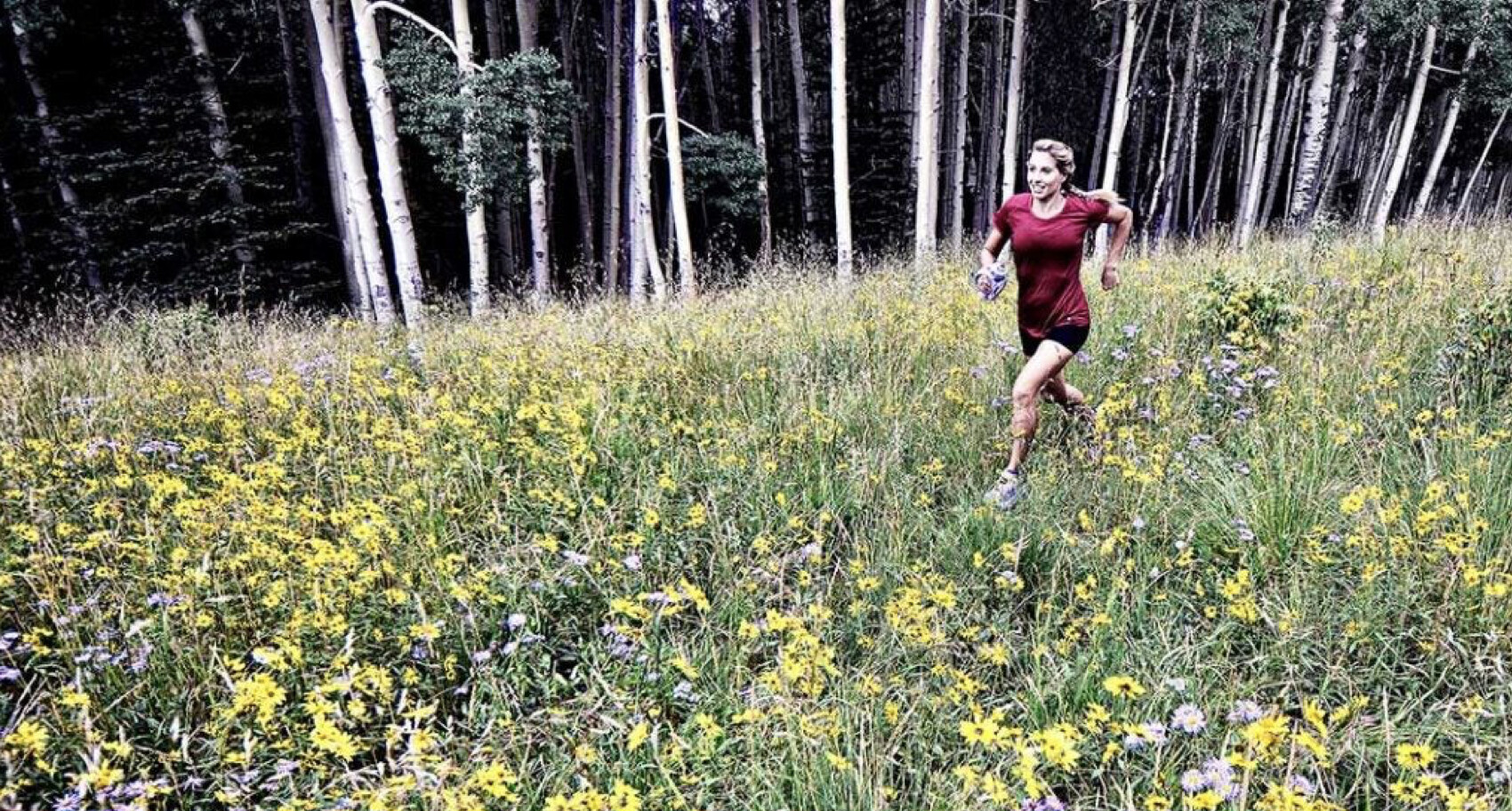
With my two primary modes of transportation out of commission, I decided to take to the streets and try run commuting to work.
It seemed like the perfect way to boost my mileage and revamp my training with new routes. So I laced up my shoes, invested in some dry shampoo and hit the road.
Besides its obvious transportation value, run commuting has many benefits for even the most road-averse trail runners.
"I definitely believe that run commuting helps my trail running," says ultra-champ Michael Wardian, of Washington, D.C. "It takes planning, carrying a load, perseverance and dedication."
Much like packing and planning for a big trail run or race, commuting takes a bit of prep. I cross-referenced Google Maps and Strava for routes that balanced efficiency and less traffic. Find out how long your commute should take you, then give yourself extra wiggle room for clean up. Your office mates will thank you.
"Make sure you can shower at work and have a place to store clean and stinky clothes," says Sharman. "As well as a determination to run rain or shine."
I typically found myself trying to travel as fast and light as possible-just carrying the clothes (and deodorant) that I'd need for the day. However, there were several less-than-ideal trips that found me slogging either a gallon of milk, a laptop or one very unfortunate casserole. As good as most running packs are, I have yet to find one that can accommodate a lasagna.
Carrying a laptop takes some getting used to, as well. After an unfortunate incident involving my computer and some salad dressing, I began to wrap everything in ziploc bags. Because of all the jostling involved in run commuting, I discovered that foods like salads and grain bowls were much more portable than sandwiches, which are prone to disassembly en route.
"I think the attitude needed is just one of adventure and determination," says Wardian. "There will be obstacles that try and derail your run commute, but if you are committed it will be one of the best things ever."
Get in more miles
Run commuting is also an effective way to squeeze in extra miles by breaking up training into bite-sized chunks throughout the day. A three-mile run to and from work made logging consistent double-digit miles much easier than trying to bang out a half marathon right before work.
"Volume is important for training, and in cities it can be difficult to squeeze in enough miles, especially with most professional jobs," says Ian Sharman, four-time Leadville Trail 100 winner. Sharman, who used to run commute in London, believes that run commuting can be hugely beneficial to any trail runner's training with a little bit of planning and a sense of adventure.
"Although the terrain was typically not even remotely hilly, I included running around parks by taking a less direct route home," he says. "That factored in some grass and dirt."
Save gas money and add it to your running fund
Besides investing in a comfy pack and military-grade deodorant, run commuting is cheap. I didn't buy gas, and my legs required less upkeep than my bicycle. Run commuting is also one of the greenest ways to get around, and I found that starting my day with a peaceful jaunt to work was much more pleasant than sitting in traffic.
"Run commuting has opened my eyes to the fact that you don't have to drive everywhere," says Wardian. "There are so many errands that can be done on foot and under your own power, and I love that."
While run commuting is generally mood and energy boosting, it's not without its challenges. I endured rain, wind, hail and plenty of less-than-stellar hair days. However, with minimal gear and a good attitude, I found the benefits of run commuting far outweighed both the scorching heat and sogginess.
Despite several slip ups like forgetting shoes and having to rock my sneaks with a little black dress, or arriving to work hours late after taking a wrong turn, I loved run commuting. I got to know the most efficient and scenic routes from my house to just about everywhere in town. I loved the moments of solitude it granted me at the beginning and end of every day.
Mike Wardian's best advice for newbie run commuters?
"Just start"
Plan Your Run Commute
Gear up, size down. Travel-sized soaps, shampoos or wipes help save space and weight, and leave you feeling fresh after your morning commute. Dry shampoo or baby powder can help alleviate sweaty hairlines. I learned how to blow-dry bangs in a hand dryer.
Map it. Google Maps, Map My Run and Strava are great resources for in-town routes. Be sure to check for construction and account for morning traffic.
Dry-run. Practice your route the night before to work out the kinks, and find coffee along the way.
Pack tetris. Pack heavier items like a laptop towards the bottom and back of your pack, leaving room on top for lighter items or things that you'd rather not smush-like lunch.
Bag it. Protect the things that matter-your laptop, your clothes-from liquid assault, be it in the form of rain or stray salad dressing. Wrap your computer in a plastic grocery sack and put your clothes in plastic baggies.
Cool it. Give yourself plenty of time to cool off before stepping into the office. Stretch, drink water, take five minutes to breathe-or else you'll find yourself sweating right through your shower.
Early Bird: A stress-induced PR is no way to start the day. Map your route and imagine running your slowest splits, hitting every red light and getting shin splints. Add two minutes to that for every mile. Arrive on time, or better yet, early.
Login to leave a comment
No Time to Run? Five Creative Ways to Find Time
Our lives are busier than ever.
We are all frantically juggling family life and long working hours; some statistics showing the average working week in the US to be close to 36 hours, with some professions working 40 or more.
That’s before we even include cooking, housework, gardening and DIY, social engagements, study and additional commitments.
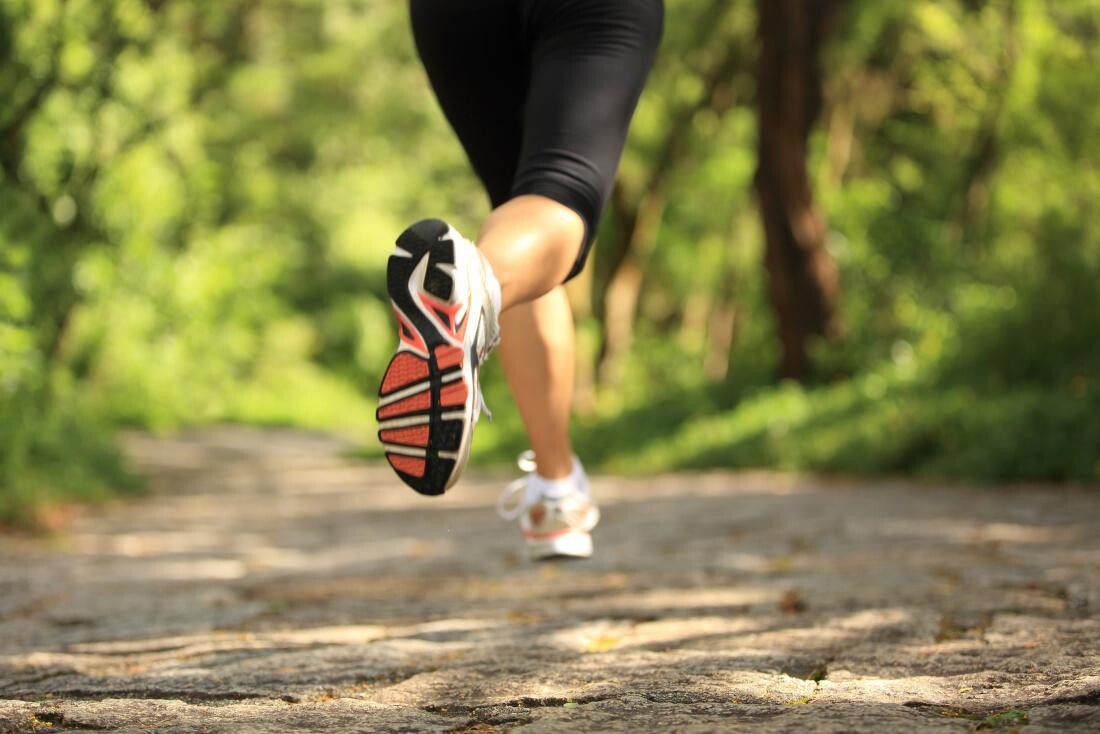
With so many demands placed on us, it’s no wonder that training slips down the list of priorities.
But lets look at things a little more closely.
Are we really that busy? Or are we just poor at time management or just making excuses?

Today we are going to dive into where our time goes, and how we can make sure running remains enough of a priority to consistently keep up with training. We will share things to think about when it comes to being creative with your training, and then 5 helpful ways to fit training in when life gets hectic.
Why Is There No Time For Running?
This chart is from The Bureau of Labor Statistics 2014 showing average leisure time of Americans (over the age of 15). A typical American has 5 hours of leisure time a day.
Take a look at the blue section of the chart. Imagine how much time we’d have for running if we didn’t spend nearly 3 hours of it watching TV? So if you’re spending a bit too much time in the blue segment of this chart, then the answer to the ‘How do I find time to run?’ question is quite easy.
Turn off the TV! And work on spending a bit more time in the purple section.
But lets say you don’t spend 3 hours a day watching TV.
Lets say you work long hours but on top of that, you might have children to care for, dogs to walk, housework, cooking, washing, ironing and admin to take care of. Finding time to run can be really tough.
Make running a priority using creative runner friendly hacks
The busier we get, the more creative we have to be about how we spend our time.
It’s easy to waste many hours on the internet, watching TV, on your mobile phone or just frittering time away. You have to get tough with yourself and become incredibly efficient – don’t get distracted by things are less important.
In our frantic, busy lives, if you really want to find time to run, you have to find a way to make it work and get organized.
According to Tony Phillips, aka ‘A Mile A Day’ from the UK, the main thing that stops us finding time to exercise is not giving it a high enough priority in our lives.
‘When we have enough time, we usually manage to fit exercise in’ he explains ‘but when we get busy, exercise is the thing that gets pushed aside, because it’s not deemed as important. But running is one of the best ways to help us deal with stress and overwhelm. Yet the time when we need it most, is the time we tend to short-change ourselves’.
We all know intrinsically that exercise is one of the most important things we can do for our health and we need to make it a top priority, but it’s easier said than done.
‘People who make exercise high in their list of priorities are generally the ones who manage to fit it in’ explains Tony, ‘They understand the connection between physical fitness, health and mental wellbeing’.
That is certainly true for me.
I’ve learned over the years that running is a vital part of my life. It’s like medication, and without it I feel physically sick, grumpy and can’t function well.
That doesn’t mean I’m always joyful about going for a run, it just means that I need it in my life and on the days I run I ALWAYS feel better.
So I’ve learned to prioritize. It might mean I go to bed early, or it might mean I miss out on a social event or a TV show, so I can get up early the next day to run.
Rather than going out for dinner too often with my husband, we choose to have a ‘date run’ instead. We get to spend time together and catch up, but we’re doing it at the same time as running, rather than over a bottle of Rioja. Same goes for catching up with girlfriends for a coffee. Instead, we meet for a run or at the very least a dog walk.
It’s not an obsession; it’s just a choice. And in our busy lives, we can’t have it all. We have to make choices.
Schedule your run into your day for a guaranteed win
According to Tony, there are two other behaviors that set successful runners apart from the ‘excuse makers’. ‘The other thing they do is schedule it into the day’ says Tony ‘they know it’s high priority, and they don’t immediately move it when something else comes up.
They also recognize that a short run is better than none at all. Even just one mile a day is easier to fit into gaps in your schedule, and keeps you in the routine of regular exercise’.
Little and often is the key.
It’s better to be consistent, but do regular short runs, rather than overwhelm yourself with big mileage goals.
On that note, I find standard training plans for busy people often don’t work. You need to devise your own flexible plan to fit in around your own lifestyle or work with a coach who understands you and can tailor your training to your life conflicts. This is where Runners Connect individualized training comes in!
Learn HOW to train, what you need to do to meet your goals and work with your schedule to make it happen. A strict training plan (which isn’t personalized to you) can add more stress and the sense of failure when you don’t manage to follow it.
Make it a challenge to find creative ways to get your run in
Developing a ‘growth’ mindset is a vital tool to helping you become more efficient at prioritizing your running.
The ‘growth’ mindset is a concept developed by Carol Dwerk, a Professor of Psychology at Standford University.
Now:
It’s much more than having a ‘positive attitude’.
It teaches us that we can change the way we think; finding solutions to problems rather than seeing barriers. Becoming more resilient and resourceful.
Someone in the fixed mindset (which is bad) might say ‘I have a long commute to work I don’t have time to train’.
Whereas someone in the growth mindset would think ‘I have a long commute, could I spend some of that running, change my stop on the train or run part of the way home? How can I make that happen? What do I need to do to make it work?’
It’s about looking for creative solutions and finding ways around barriers.
Don’t ‘go hard’ all the time
There is no scientific evidence for this (you heard it here first), but it’s something I’ve noticed over the last 20 years of my coaching work.
Running hard every single time you go out could be making it difficult for you to stay on track with your training.
Runners Connect often posts about the importance of easy running, how 80% of your runs should be easy, even if you are only running a few times per week.
”If your brain always associates running with pain, eventually it’ll persuade you to stop.”
If on the other hand, your brain associates running with pleasure and enjoyment (perhaps a slower pace and gradual increase of miles) then it’s far more likely you’ll continue and WANT to go running, rather than dread it. Try it and see what happens.
5 Ways To Fit Your Training Into A Busy Schedule
‘Get your training done as early in the day as you can’ advises Tony. ‘Go to bed early, get up early and get it done. It sets you up for the day and makes your more productive. There will ALWAYS be something else to do, so get your run done first’.
‘Make it a habit’ continues Tony ‘Habits are easy to form when you do them every day. Even if you don’t run every day, try to make it the same TIME each day you run. It helps to have a trigger. For example, you run immediately after getting up, or always at lunchtime at work. The idea is that you embed it as something you do automatically’.
Don’t underestimate the power of a training partner. Training with someone else at least once a week is a great way to make sure you get out there and run. Book in with a friend or group session. The commitment of meeting someone else will mean you’ll be less likely to let them down and you’re more likely to train. If you do not have anyone else in your area to run with, get many of the same benefits by joining a running community like Coach Jamie Dodge talked about in the podcast Do I Need a Running Coach?
‘Make sure your training schedule works for everyone else in the household’ advises Tony. ‘If you’re finding it tough to get out, and the people around you are complaining or encouraging you stay at home, it makes it doubly difficult’. Perhaps get them to join you? Or at least make sure they know your plans and how important it is to you. Don’t allow anyone else to derail you or your enthusiasm.
And finally, leave some gaps in your schedule. Life has a habit of disrupting plans and things always take longer than you think. ‘All time management systems work best when you build some spaces in for contingency’ says Tony. ‘It reduces stress and gives you another window to run when things go off schedule’
And if you’re still struggling, here’s a final piece of advice from Life Coach and time management guru Tony Philips:
“You have 168 hours each and every week. If you work a 40-hour week and sleep 8 hours every night, that leaves 72 hours or just over 10 hours per day.
Of the remaining time how much of it do you spend doing things that benefit you less than training, such as watching television, wasting time on your computer, playing video games or on your mobile phone?
by Sarah Russell
Login to leave a comment
I used to run in pursuit of race results. Not for fitness. And certainly not for fun
First, I should clarify: I wasn't a pro. I wasn't even that fast. I just acted like I was, prioritizing my training over everything. The local trail racing scene in my hometown of Minneapolis was low-hanging fruit a decade ago, and I trained to win or podium at those races with joyless devotion.
I used to turn down invitations to run with a friend or a group if it meant I'd have to adjust a training plan written beforehand. When I did run with others, I'd frequently add mileage before or after.
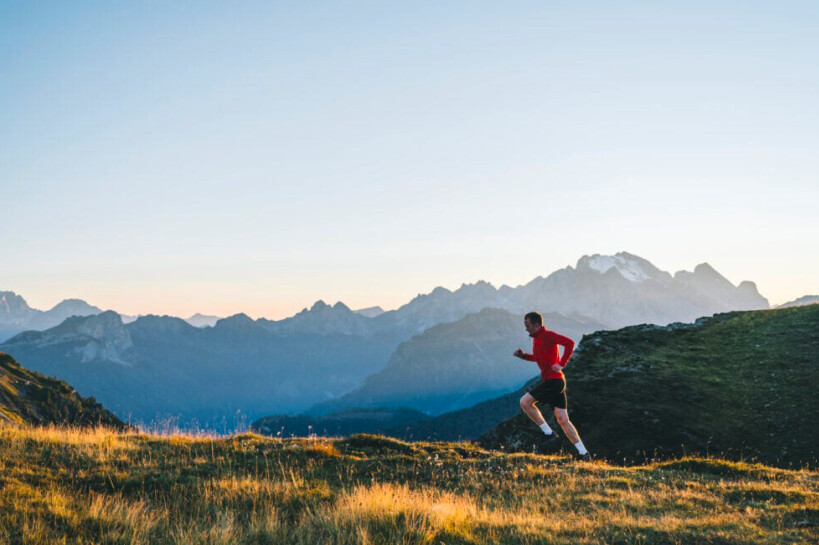
Once, after a short run at a friend's bachelor party, I dipped out the back to run pre-prescribed hill sprints, sneaking off to do them because explaining what I was doing would be awkward and skipping it would be unthinkable. (It turns out disappearing to run farther without warning was, in my friends' eyes, also a little weird.)
I used to obsess over distance and vert. I don't just mean I wanted to hit daily and weekly goals - I mean I'd run around the trailhead parking lot to make sure I hit 20 miles on the dot. I mean I learned exactly how far over ".0" I needed to run to avoid the dreaded ".99" when I uploaded it. (On my Suunto, it was 0.02; my Apple Watch, 0.08; my Soleus, 0.23.) Once, when I uploaded a bike ride and it reported 4,999 feet of vert, I nearly threw my phone through the window.
At times, I could be a bit of a nightmare to run with. Once, a friend visiting from out of town wanted to run 5 miles. But I wanted to run 10, so I told him we were running 5, then took him on a 10-mile loop with no bailout points. (He started walking in protest near the end. I think we're still friends - he let me speak at his wedding a couple years later.)
A different time, that same friend and I went camping on Minnesota's north shore with the intention of running up Eagle Mountain - the highest point in the state - the next day. But rain came through, our tent leaked, and we were soaked, shivering, and in no condition to run. I made him do it with me anyway. When we got to the top, it was completely socked in, the famous viewpoint covered by a white sheet of clouds. (Maybe that was a step too far - he didn't come to my wedding.)
For several years, every step I ran, whether a workout or a recovery run, was in the pursuit of improvement. I may well have been on the road to disownment by my family and friends. But somewhere along the line, I snapped out of it.
How?
Ironically, the single biggest thing that changed my outlook was moving to a mid-sized town backed by spectacular mountains that were rife with trails - perfect for extremely serious training, on paper. But it had the opposite effect.
I moved there to work for a running shoe brand. You'd think living and breathing running all day, every day, would fuel my passion for it. You'd be wrong, though. The challenges got bigger - and my perspective widened with them.
When I arrived in Santa Barbara, I pictured myself becoming a super-fit mountain athlete on the challenging trails that were, almost literally, out my back door. But I quickly found that, man, these trails are really challenging. I've written before about how difficult running in the Santa Ynez mountains can be.
That dramatic terrain lent itself to epic days out with incredible views. The system of front- and backcountry trails made for some mouthwatering linkups. But it was all so steep. And slow-moving. And hot and sunny. (I'm a ginger from the Upper Midwest.) The conditions made recovery tougher, so it became overwhelming to try and hit mileage goals out there. It was normal to be out for four or five hours, tag a couple peaks, and have less than 20 miles to show for it.
Rough going, if you're the sort of person who runs back and forth in front of your house to make sure you hit exact mileage.
So I had a choice: I could use even more of my free time and energy to ensure I stuck to my old training ways. Or, I could loosen my grip. (Especially since I was nowhere near being a pro athlete.) In a rare moment of clarity, I realized - if I'm not having fun, what's the point?
So I adapted. One weekend, I planned a run based not on mileage, but on tagging a summit. The next weekend, I planned a two-summit run, then one with two plus a saddle for the most aesthetically-pleasing Strava map. The mileage wasn't always high, but these were long days out. I even initiated a three-man excursion to connect the front-country's three most prominent peaks in one go - and didn't get mad when we got off-course, bushwhacked through poison oak and came perilously close to running out of water. For nearly five hours of trouble? 15 well-earned miles.
I embraced the adventure - the time on my feet, the vast emptiness of Los Padres National Forest, the definition of "epic" as something other than long and fast, and the very real sense of risk in the backcountry. I didn't quite learn to stop and smell the roses, but I learned to enjoy running with friends, especially when one of them had a wild idea about running slowly via headlamp at night, or linking point A to point B via the ridgeline, mileage be damned.
If I'm not having fun, what's the point?
Some other stuff happened, too: That running shoe gig? Well, it was still a 9-to-5 desk job, which can put a damper on training. And it turned out when my job revolved around running, I wanted to use my free time to stay a little more well-rounded.
I also got a little older. I got injured a little more than I used to. Hard efforts started to come in at a pace I'd once considered a recovery run. In the interest of running as long as possible, I dialed back my mileage. This happens to everyone, so it was nice that it coincided with a new outlook and a new playground, rather than precipitating an identity crisis.
In my hard-charging days, I loved seeing my times improve, and I loved winning on the rare occasion it happened. But I realized it's dangerous to depend on those things for happiness, or to be unwilling to redefine what "winning" and "improving" mean to you, because an injury or plain-old time means that eventually your raw speed will plateau, perhaps even regress. You can adjust your goals - some people stay motivated by age-group competition even when their PRs are behind them - or you can learn to enjoy running every day, rather than seeing running as a means to a worthy end.
I don't fret over pace. I'm just happy to be out there.
Our journeys for improvement never stop, but we can find things to improve other than how fast we've run a given distance. In my case, I improved my navigation skills, hydration and nutrition, and frequency of sunscreen reapplication. I also improved my mood. Maybe not as sexy as a 50-mile PR, but it's something to hang my hat on.
I've traded a white-whale fixation on future results for day-to-day enjoyment. I think they're both noble in their own right, and I don't regret my old approach, but I know it wouldn't work for me now. These days, I try and enjoy the act of running, rather than exclusively enjoying "having run," as Brendan Leonard coined it.
When I run now, I'll stop and put my hands on my hips at a cool overlook, like in all those marketing photos you see. I won't roll my eyes if someone wants to take a group photo. (Well, I will, but I won't verbally protest, too.) I'll pet all the very good dogs I encounter. I'll run with people when I'm invited to. I'll get coffee afterward, even if it means we cut a couple miles off for time constraints. I don't fret over pace. I'm just happy to be out there.
I still sometimes run back and forth in front of my house to hit an even mileage, though. That's one habit you'll have to pry from my sticky, GU-covered fingers.
by Trail Runner Magazine
Login to leave a comment
Taiwan’s Wan Jin Shi Marathon concludes in wet conditions
World Athletics gives marathon gold-label designation for excellent course planning and execution
TAIPEI (Taiwan News) — More than 11,000 runners competed in the 2023 New Taipei City Wan Jin Shi (WJS) Marathon on Sunday (March 19), drawing 300 competitors from 33 countries.
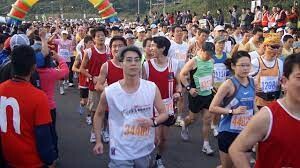
The road race is Taiwan's first World Athletics certified “Gold Label” event, indicating that the running surface and route meet top-quality international conditions and the event is supervised by properly trained medical staff, per UDN.
The WJS Marathon was held in Wanli’s Emerald Bay with a series of warm-up activities before the 6:00 a.m. start. New Taipei City Mayor Hou You-yi (侯友宜) had the honor of firing the starter’s pistol and both domestic and foreign competitors took off on the 42-kilometer marathon race. Afterwards, a shorter 10km race also commenced
Later at a press conference, Hou said he was proud that the WJS Marathon became the first event in Taiwan to be certified with the “Gold Label” by World Athletics.
Previously, the group went under the name International Amateur Athletic Federation (IAAF) and is recognized as the main governing body for athletic competitions such as track and field, road running, cross-country racing, and marathons.
Hou added that approximately 11,000 runners participated in today's marathon. Among them, 300 runners came from 33 countries, such as Bahrain, Spain, Ethiopia, and Kenya. He was also proud that many marathoners wore clothing made from coffee grounds and PET bottles, which promoted his future vision for sustainability.
Race organizers are planning to apply for a special green certificate next year to make the road race more sustainable. This year, LED screens at the start and finish of the race replaced PVC signage, and even race result certification was provided electronically instead of being printed.
In the end, it was Kenyan athlete, Barnabas Kiptum, who won the race in 2:11:57 with the top Taiwan male finisher being Chiang Chieh-wen (蔣介文) who crossed the finish line in 2:23:06, per UDN.
As for the women's competition, it was won by Ethiopian Bekelech Gudeta Borecha in 2:29:25. The top Taiwan female finisher was Lisa Reis (雷理莎) in 2:46:24.
Login to leave a comment
Can’t Stand Black Coffee? Adding Milk May Decrease Inflammation.
A new study looks into the benefits of adding dairy to your morning cup of coffee
If your coffee ideal is one that includes a healthy dollop of milk, a recent study conducted by the University of Copenhagen may be of interest.

A team of researchers determined that the combination of milk and coffee – proteins and antioxidants – increases anti-inflammatory properties. Here’s a quick breakdown of the science:.
Polyphenols are compounds found in coffee (and other nutrient-dense foods) that lower blood pressure, reduce inflammation, and boost brain function. In the Copenhagen study, researchers examined the reaction between polyphenols in coffee beans and milk proteins.
They found that the two molecules bound together and became a powerhouse of inflammation defense. Therefore, the researchers concluded that drinking coffee with milk has more anti-inflammatory benefits than sipping coffee alone. It’s important to note that the study concerns only milk and not creamer. No research has been conducted on the latter.
Not a fan of dairy? There are other ways to increase the immune-boosting qualities of your morning cup.
Cinnamon
Try sprinkling 1/2 teaspoon cinnamon into your cup in the morning. This spice is packed with antioxidants, may help lower blood sugar levels, and even lower cancer risk. Make sure you’re using true cinnamon and not cinnamon sugar.
Nutmeg
A dash of nutmeg may help digestion, improve cognitive function, and, in some cases, relieve pain. Some studies suggest nutmeg may also improve sex drive.
Collagen Peptides
Collagen, whether it’s flavored or unflavored, mixes easily into coffee and provides protein, vitamin C, zinc, biotin, and more. Collagen may improve skin and hair, relieve joint pain and boost muscle mass.
by Outside
Login to leave a comment
Running your first race? Tips to make the most of the experience
Running a race can be an intimidating experience. There are the logistics: where it starts; where it ends, the timing, the course, etc. There are plenty of people including runners, volunteers and spectators to contend with. There are rules to consider, both official and unwritten. Not to mention that you have to do something that is physically and mentally really hard.
Especially for beginners, running a race can make one feel anxious, nervous and possibly even afraid. Pre-race nerves are experienced by almost every runner so know you are not alone. There is also tremendous value in acknowledging those nerves and reframing them as excitement and anticipation for what you are about to do.
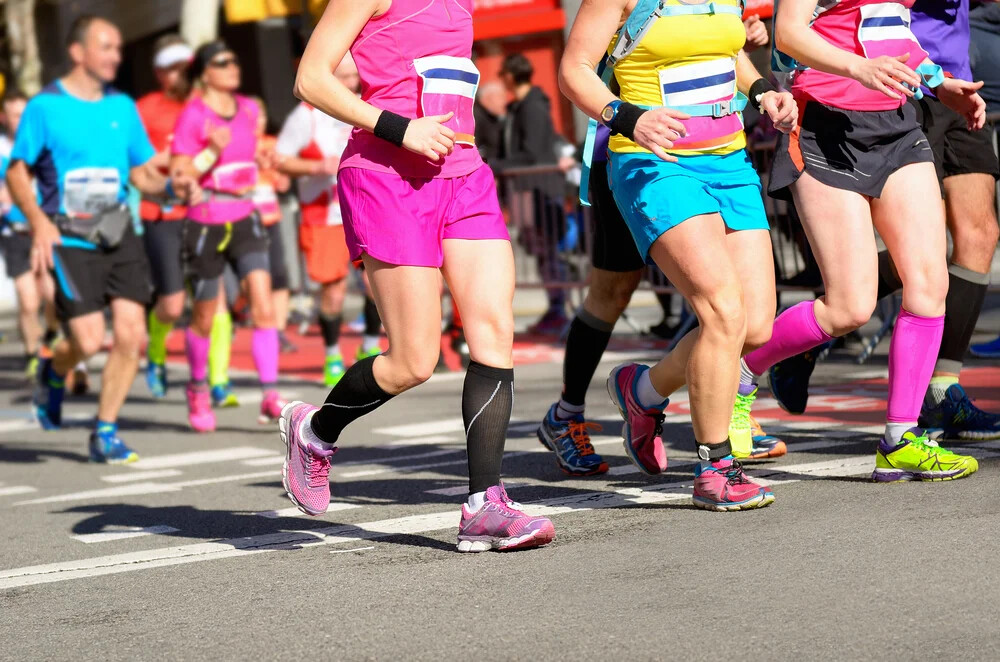
Here we present some of the most common concerns runners–both new and experienced–report from their race experiences and offer a number of solutions and strategies to overcome them in order to make the most of your running and racing:
Before the race…

Getting a good night’s sleep the night before a race is useful but not essential. Rather, aim to get as much quality sleep as you can the entire week before your race.
Set an alarm and get up early so you don’t feel rushed on race morning.
Have your running stuff–gear, apparel, shoes, accessories–all laid out and ready to go. This includes pinning your bib to your shirt, singlet or jacket.
Follow a pre-run/race routine that you’ve used before and that works for you. Eat the same foods for breakfast. Wear gear you’ve tested before. Do the same stretches or warm-up. The best advice you can possibly take: Nothing new on race day!
Know exactly where you’re going and how you’ll get there as well as where you’ll park. Also, have an exit strategy in mind.
Once you arrive…
Aim to arrive early so you don’t feel rushed. This will also allow you to get a sense of the start (and finish) area before it gets busy. Become familiar with key locations such as the start and finish line, the registration/bib pick-up, bag check, the washrooms (usually porta-potties), first aid and medical services, etc.
Know the schedule and create a timeline. When does the race start and how long will it take you to line up/get into your corral? Working backward, give yourself enough time to use the washroom (there are always lines), check your bag, warm-up properly and anything else you know you need to do.
If you’re not a fan of large crowds or feeling overwhelmed, remove yourself from the scene until you absolutely have too. Remain at your car, find a quiet coffee shop nearby or warm-up/stretch on a side street.
Consider using earphones before the race to listen to music, the radio, a podcast, whatever you prefer. This will help distract you from the commotion of the crowds.
Once you join the rest of the runners, try to focus on yourself, on how you’re feeling and use a variety of calming and meditative exercises to think about your upcoming run.
Line up according to ability. The faster you are, the closer you should be to the start line. In larger races with hundreds of participants, events often use corrals to separate runners based on their expected finish times. If you don’t know where you should be, look for pace bunnies or ask a fellow runner for guidance. For the safety of others, be sure to line up appropriately as not to obstruct faster runners.
Running your best race…
Hopefully you have some idea of how you plan to run your race. How long it will take; what pace you’ll run at; if/how often you’ll hydrate and/or consume fuel. Having a race plan is always a good idea and better still, have a backup plan in the event that weather/conditions are not ideal.
Most races have aid stations with water, electrolyte/energy drinks and possibly even fuel (bars or gels) along the course. Depending on the length of the race or whether you carry your own, plan to use these to stay hydrated and fuelled.
As mentioned, have a plan regarding how fast you plan to run. Know your desired pace and do your best to stick to it. Avoid going out too fast at the start–THE most common mistake made by ALL runners in a race–and if anything, aim to start slower than you need to and plan to pick up the pace as the race goes on.
At/after the finish–Congratulations!
Once you cross the line, it’s important you keep moving forward to avoid obstructing those behind you.
Take a few minutes to collect yourself, catch your breath and try to take a moment to truly appreciate the moment.
You’ll likely be handed a finishers medal and ushered toward some refreshments. Try to drink and eat something to kick-start the recovery process.
If you’re not feeling well, seek out a race official or volunteer who can help you get some medical attention. Some races also offer post-race massage.
Once you’re starting to feel yourself again, proceed to pick up your bag, meet your friends and family and enjoy the entertainment or post-race festivities.
by Dan Way
Login to leave a comment
How Courtney Dauwalter Keeps Running Simple
In a world where fitness tracking devices and high-tech training plans dominate the running scene, ultrarunner Courtney Dauwalter has found success by keeping things simple.
Dauwalter's love for running started at a young age, with the Presidential Fitness Test in elementary school.
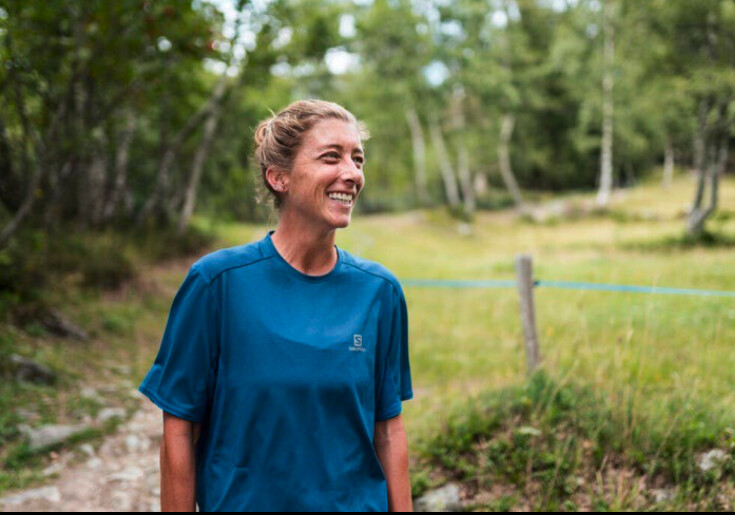
"I started running in elementary school when we had to run the mile for gym class," she said. "I remember loving it. I really liked how it felt to run, and I really liked how I could push myself as hard as I wanted."
In 1997, Dauwalter's passion for running evolved when she joined the cross-country team at her Minnesota high school. "When I joined the cross-country team, a whole social element got added to running that made me fall in love with it even more," she said.
But as many runners know, it's easy to lose sight of the joy of running amidst the pressure to achieve personal records and track every metric imaginable. Unlike many in the endurance space, Dauwalter does not use Strava, but she does still think it's a great tool for others.
Dauwalter, now the top women's ultrarunner in the world, has found success by sticking to her roots and embracing a simple approach to training. She has not worked with a running coach since she her high school cross-country days. Her strategy includes a flexible training plan that allows for rest days, spontaneous runs, and a mindset that focuses on the joy of the movement. "I think it's important to stay in touch with why you love running," Dauwalter said.Dauwalter's evergreen approach is atypical. But should it be?
Her process has paid off, with impressive performances in ultra-marathons. But Dauwalter's success is not just measured in podiums and race times. For her, running is a way to connect with nature and others who share her love for the sport.
As we continue to navigate the complexities of modern fitness culture, perhaps we can learn something from Dauwalter's approach. By embracing the childlike joy of running and simplifying our approach to training, we may find that the movement becomes more meaningful and enjoyable.
Keeping Things Loose (After Coffee)
Unlike many of her peers, Dauwalter shuns the rigidity of a training regimen and doesn't obsess over the particulars.
"Every morning after coffee, I'll decide what my run is for the day based on how my body and brain are feeling," she said. "Sometimes that's a long run on some of my favorite trails, or summiting a local peak, or it might feel like a great day for hill repeats or intervals, and some days I won't really know what I'm doing until I leave the house and let my feet choose the route."
Her daily runs typically last between two and four hours, and, while she may know when a race is coming up, she decides what her training will look like based on how she feels physically and mentally.
"There are so many ways to train, enjoy, and go after running goals. Having a training plan, using devices and analyzing data, or not doing any of those things, are all great options," she explained. "I think it depends on the person and how they find joy. But I also think there is no downside to occasionally leaving the watch at home and heading out the door for a run where you just listen to your body and not worry about metrics."
Her general approach involves listening to her body and not following a predetermined plan, allowing her to focus on the experience rather than the results. For instance, if she's training for a race with a lot of climbing, she'll incorporate more mountain runs into her routine.Over the years, Dauwalter has focused on being more adaptive to her body. She stays in tune with her emotions and doesn't take things too seriously. She approaches her training with a sense of playfulness, which keeps her motivated and engaged.
Dauwalter's cheerfully unconcerned approach to training is the exact opposite of what you might expect from a world-class athlete. Rather than obsessing over sleep metrics and biomarkers, she keeps her routine flexible and listens to her body. She doesn't overthink her diet, instead opting to eat what looks good, sounds good, or is most convenient. Some of her favorites include nachos, pancakes, gummy bears, Snickers, root beer, etc.
"I almost always just go running without a structured plan. I am usually wearing a watch that can tell me data, but I am not looking at this during my run," said Dauwalter. "I find the most joy when I leave my house and let my feet be the tour guides."Without a predetermined plan, she's learned to tune in to her body and react accordingly. Her approach permits her to pay close attention to what her body tells her and avoid disregarding symptoms or signs that she should change course.
The basics of enjoying the processes are essential for Dauwalter. She does better when she's not holding too tightly to any piece of running. The flexibility of her training keeps things fresh and fun
Take a Break from the Gadgets
"Sometimes our gadgets can get in the way of our enjoyment of the run," said Dauwalter. "The gadgets are cool, but so is the simplicity of running."
Her primary approach helps in races when things inevitably get challenging. She speaks about turning to her mental "filing cabinet" and "telling herself jokes" to overcome the obstacles of the mind and body she's trained in.
Moreover, her decluttered training style extends to the simplicity of using breathing and mindfulness exercises to focus on the calm of the trails. Keeping it simple helps push through demanding times. Focusing on her breathing or looking at the trail where she's headed can bring peace in trying moments.
Dauwalter's intuitive running style may not be for everyone, but the approach can provide a refreshing change of pace. Dauwalter's lower-intensity mindset offers a powerful reminder that running can be as simple as putting on our shoes and heading out the door.
"It really can be just you out in nature with the sound of your breathing and footsteps, rolling with the terrain at whatever pace feels good that day," she said. "I try to run like this as much as possible."
by Trail Runner Magazine
Login to leave a comment
I Cold Plunged Every Day For a Month—Here’s What I Learned
One yoga teacher immersed herself in freezing water for 31 days. Here's her advice for how you can do it, too.
For the month of January, Finocchiaro subjected herself to a daily cold plunge in the ocean and chronicled her efforts on TikTok. She had started practicing regular cold water immersions at the beginning of the pandemic, inspired by the Wim Hof method, as a way to help manage her seasonal depression. She saw her mental energy increase with each plunge.
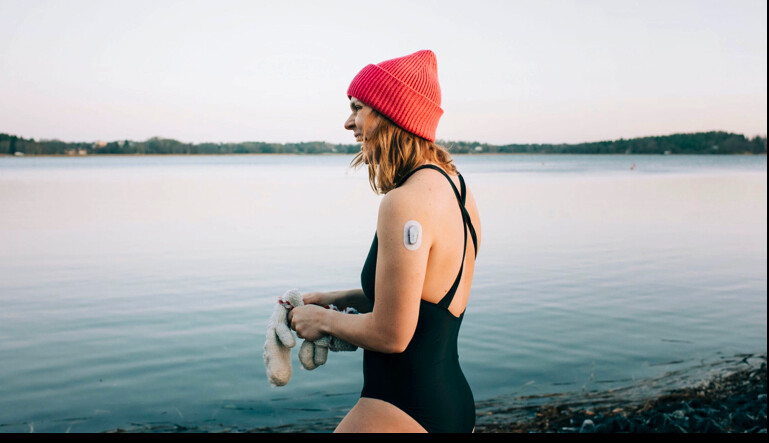
This winter, as a byproduct of her anxiety and the stress of being a small business owner, she saw her mood drop even more. “As soon as you turn your passion into your career, it’s not as easy to relax during a yoga class,” she says. “So, I’ve had to turn to other coping mechanisms for my anxiety and depression.”
In an attempt to better her mental health, Finocchiaro decided to embark on a monthlong challenge of doing a cold plunge every day. She headed to the ocean most early mornings for her immersion although sometimes squeezed her plunges in during the afternoon due to her work schedule. Once on the dock or sand, she would ditch her warm puffer jacket, strip down to a bathing suit, and wade into frigid waters.
For the yoga teacher and studio owner, it’s a part of her day when she’s focused on doing something for herself.
Her elevated mood kept her coming back to the water—even on the coldest days. “Once you’re done with a plunge, you have all this energy,” she says. “For me, it clears my mind and gives me the energy to get through the rest of the day.” Throughout the month of January, she found herself able to forego that afternoon cup of coffee, revitalized instead by her quick dip.
Chris Minson, a professor of human physiology at the University of Oregon, conducts research on thermoregulation—the impact that extreme heat and cold have on the body. While most of his studies focus on the benefits of heat, he says there’s some evidence that a euphoric feeling may follow an acute cold immersion. However, he says more research needs to be conducted on the topic in order to find out more about how long these feelings can last and the mechanisms behind them.
The impact of the freeze may go beyond that feeling of joy. In a new study that has yet to be released to the public, he and his team of researchers found that when looking at a positive-negative affect (i.e. how good you feel about things versus how bad you feel about things), people felt less negative following a brief cold water immersion, he says.
Not ready to subject yourself to a cold plunge? You may be able to reap similar benefits from extreme heat immersion, such as a sauna or hot tub. Evidence suggests that even one session of heat therapy a week reduces rates of depression, Minson says. Ultimately, it’s about find the right kind of temperature treatment for your body.
With her her month-long challenge behind her, Finocchiaro says she’ll still continue to regularly plunge, even if it isn’t every day. “I’m not trying to prove something,” she says. “For me, it’s about connecting to nature and getting outside even when it’s 30 degrees and snowing or raining. It’s about embracing the winter.”
It’s also about introducing others to the joy of cold immersion. During her monthlong commitment, she started leading community plunges with her students after her Saturday yoga class, a practice she plans to continue throughout the winter.
Cold plunging isn’t nearly as simple as a summer dip. Following are a few things to keep in mind if you’re thinking about heading out for an icy immersion.
Your front dive may be gorgeous, but you’ll want to forgo it when entering cold water. Minson says if you immediately immerse your head in freezing water, you’ll experience an instinctive “gasping response,” which causes you to try to breathe in a lot of air. When this occurs in deep water, the possibility of drowning increases. Instead, slowly wade into the water.
While you may be excited (or nervous!) for your cold immersion, Finocchiaro says it’s essential to remain calm in order to avoid hyperventilating. For her, that means moving into the water with presence and ease. “My first few times, I ran in and was so excited, but then I started hyperventilating and couldn’t get myself to calm down,” she says. She alleviated that by walking in slowly and mindfully, drawing on the very same breathwork that she teaches. A meditation practice can also be beneficial in grounding you in the present moment.
Finocchiaro recommends getting used to the concept of a freezing plunge by testing out a cold shower. Even just tacking on a few initial seconds of cold to the beginning or end of your daily rinse can help you acclimate to the frigid temperatures of a cold plunge. If you don’t have access to a body of water, a regular cold shower can also replace a plunge.
Minson encourages his students to try the cold shower challenge by foregoing the typical hot shower for an icy one. While many of the students stop taking the cold showers after the challenge, a few report that they continue for the sense of elation after the ritual.
Your cold plunge doesn’t have to be (and shouldn’t) be lengthy. Finocchiaro says she’ll typically stay in the water for no more than a minute or 90 seconds. It won’t take long for you to feel the affects.
by Outside On Line
Login to leave a comment
How to Make Friends in Your Running Group, According to Experts
Social connections are essential for your health. Follow these tips to form more meaningful bonds.
Putting yourself out there and meeting people doesn’t get any easier the older you get (in fact, it can be harder the further you get into adulthood), but continuing to make new friends and maintain personal relationships is crucial to your overall health and well-being. And luckily, your local running group is an excellent resource for growing your social circle.
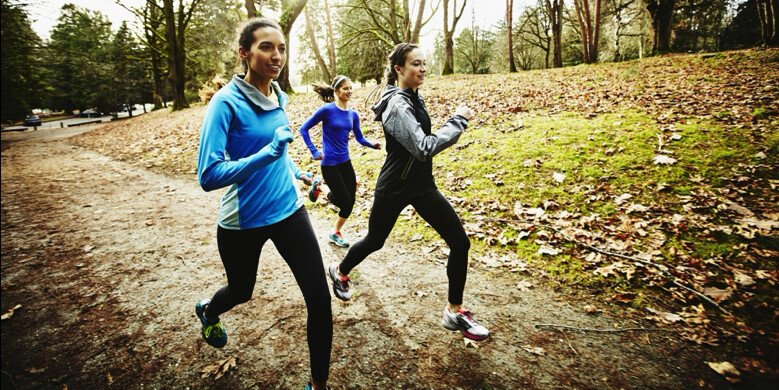
We asked experts—a sports psychologist and running group leaders—to weigh in on breaking the ice, making connections, and going from “running friends” to “real friends.” Whether you’ve yet to make your running group debut or have been attending a meet-up regularly and still feel like an outsider, read on for practical advice on how to make friends as an adult and learn why it’s so beneficial to do so.
The Benefits of Making Friend as an Adult
Research shows that starting around age 25, most peoples’ friendships begin to thin out as they move away from student life and toward adulthood and all of its responsibilities. There’s no longer a revolving door of young people who are eager to connect with their peers, folks move away for jobs and new opportunities, and those hours of previously unstructured time between classes, parties, and casual get-togethers get gobbled up by work, intimate relationships, and family obligations.
Simply put, we’re all busy, and plans with friends are often the first to get canceled when schedules are tight. But, studies show we may not have our priorities straight.
According to a recent research summary published in Annual Review of Public Health, evidence shows an association between lack of social connections and poorer health. “This evidence spans a range of physical and mental health outcomes, has been replicated across different populations and contexts, is independent of a range of potentially confounding factors, and demonstrates that the magnitude of effect rivals other risk factors for health and mortality,” the study reads. In other words, loneliness and isolation can make us sick and shorten our lives.
“The really fundamental feature of what keeps people happy and healthy and creates longevity is relationships,” says Jonathan Fader, Ph.D., a clinical and performance psychologist. But the reality is that some relationships last and others don’t, he says, which is why it’s a good idea to seek out new friendships while continuing to nurture existing ones. “If you think about your relationships as farmland, it just makes sense to keep planting,” he says.
Fader notes that most adults make friends through work and school because, in both environments, you engage in repeated activities with the same people. “So when you think about applying that to something like a running group, it really makes sense that you could make long-term friends that would not only have an impact on the activity of running but on the overall general wellbeing of your life,” he says.
The Advantages of Having Runners as Friends
While we wouldn’t say runners necessarily make better friends than anyone else, there are some unique, running-specific benefits to adding a few runners to your inner circle.
Crystal Cun, president of Prospect Park Track Club in Brooklyn, New York, puts accountability at the top of the list. “It’s having other people to motivate you to get out the door,” she says. “It’s knowing that when it is cold and dark in the winter, you have people waiting in the park for you to go running.” Even if you may be willing to let your training slide, you’re probably less inclined to disappoint a friend. The result is more consistent, year-round training.
The support only runners can provide to other runners is also a huge boon, says Roberto Mandje, head of training at New York Road Runners in New York City. Anyone who’s been training for a while knows first-hand that, in between PRs and moments of triumph, there are plenty of crappy workouts, races that suck, and injuries.
“If you’re training alone, you’re just one of one,” Mandje says. “But if you’re struggling in your training, you hit a rough patch or rough week, the fact that you have some of your running friends in the group that are going to be able to put their proverbial arm around you, or maybe even their literal arm, and say, ‘Hey, come on, we can do this,’ can make you realize that you’re not out there alone.”
If you want guidance and practical running advice, there’s no better source than a trusted running friend. “There’s the knowledge base and the support of having all these runners around you who can share tips on training and cross-training and injury prevention. And you can talk about shoes and gear with them, and they can give you recommendations,” Cun says. “And it’s unfiltered, unbiased opinions, unlike anything you can find on the internet. And that is super, super valuable.”
Tips for Making Friends Through Your Running Group
Anyone who’s ever run with a group knows it’s easy (and perfectly acceptable) to just show up, put in the miles, and then head home. So, how do you transition from fellow runner to friendly acquaintance to friend? Our experts count the ways:
First, find the right group
Some running groups are more conducive to making friends than others. “I think it’s usually evident on a club’s website or social media feed,” Cun says.
She recommends paying attention to the tone—is it friendly, relaxed, and welcoming? Do they program social events outside of running? Do they make it easy for new members to join? If a group is more competitive, you’ll probably be able to tell. And if not, it’s worth an email to the group leader to get clarity on the group’s goal and a sense of the social interactions between members.
Cun notes that an active social media presence can also be a good sign, as members can easily use tools like Facebook groups and Discord to connect offline and between in-person meet-ups.
Share your goals
As a new member, sharing your running goals with others can be intimidating, as it demands a certain amount of vulnerability. But if there’s an opportunity to open up—perhaps during those circle introductions—Mandje encourages new runners to put it all out there.
“People are going to gravitate toward that because they want to be supportive,” Mandje says. “Obviously, if you don’t want to, you don’t have to. But the more you keep to yourself, the harder it’s going to be to have people invest in you and even open up to you because maybe they don’t want to intrude.”
Leave your ego at home
Confidence is attractive, but an inflated ego is a turn-off. Bragging about your accomplishments or redirecting every conversation back to your training will get old fast for other members. “Be aware that you’re in a group setting, and it’s not always about you; it’s about the group,” Mandje says.
Also, don’t race people during group runs. “I’ve seen people come to group workouts and look around and be like, ‘You’re my competition today.’ They won’t come out and say it that overtly, but you start to see workouts that are getting a bit more competitive than they should be,” Mandje says. “That can be one way to alienate people because people come to feel supported, get a run in, and feel good about themselves.”
Lead with curiosity
This tip applies to all kinds of social settings, not just group runs, Fader explains. “Be curious. What is something you want to learn about the other person?” he says. For example, are they training for a race? When and where do they do their long runs? How do they like their shoes? Asking these easy, low-stakes questions can help you establish an initial rapport that you can build on over time.
“After a certain number of miles, you have to stop talking about running because there’s nothing left to talk about,” Cun says. “You have to move beyond that to other topics. Like, what is your family like? What are you doing this weekend? What are your plans for the holidays?”
Plan around group runs
Once you’ve become friendly with a few fellow runners, try suggesting a postrun activity. Grabbing a coffee or a beer and chatting for an hour is a low-commitment ask, and making the outing a group activity takes off even more of the pressure. You can approach a few people the day of the run.
Or, if your group has a social media presence, you can post something like, “Anyone interested in grabbing a drink on Saturday?” a few days in advance.
If it doesn’t work out, try not to take it personally. “The reason this is hard is because people fear rejection,” Fader says. “So what if someone says no? You’re not made of sand or salt. You’re not going to melt. The bigger issue is not how you do it. It’s realizing it’s okay if someone says no.”
Volunteer at events
“If your running club has volunteer opportunities, I think that is a great way to meet people,” Cun says. Whether you’re handing out bibs, serving as a race marshal, or setting up start and finish lines, there’s bound to be some standing-around time during which you can chat with fellow volunteers. “It’s another way to get to know people, and it doesn’t necessarily have to be the people who are running the exact same pace as you,” Cun adds.
Pace yourself
For a more introverted runner, just showing up to a running group may be a big step outside of their comfort zone—and that’s okay. Not everyone is comfortable opening up to people immediately, and even if it takes a few runs to have a conversation with someone, that’s a win. “I think being authentic to who you are is part of that runner journey, and you shouldn’t pretend to be something you’re not,” Mandje says.
Keep showing up
“To get to the running friend level, you need to run together consistently,” Cun says. Rather than treating group runs like one-off events or drop-in workouts, think about how they factor into your overall training plan and commit to attending the same ones every week. As you get to know your fellow runners week after week, they’ll also see that you’re dependable, which is an important quality in any friend.
by Runner’s World
Login to leave a comment





